
| Homepage > The Work of the Assembly > Committees > Environment > Reports | |||||||||||||||||||||||||||||||||||||||||||||||||||||||||||||||||||||||||||||||||||||||||||||||||||||||||||||||||||||||||||||||||||||||||||||||||||||||||||||||||||||||||||||||||||||||||||||||||||||||||||||||||||||||||||||||||||||||||||||||||||||||||||||||||||||||||||||||||||||||||||||||||||||||||||||||||||||||||||||||||||||||||||||||||||||||||||||||||||||||||||||||||||||||||||||||||||||||||||||||||||||||||||||||||||||||||||||||||||||||||||||||||||||||||||||||||||||||||||||||||||||||||||||||||||||||||||||||||||||||||||||||||||||||||||||||||||||||||||||||||||||||||||||||||||||||||||||||||||||||||||||||||||||||||||||||||||||||||||||||||||||||||||||||||||||||||||||||||||||||||||||||||||||||||||||||||||||||||||||||||||||||||||||||||||||||||||||||||||||||||||||||||||||||||||||||||||||||||||||||||||||||||||||||||||||||||||||||||||||||||||||||||||||||||||||||||||||||||||||||||||||||||||||||||||||||||||||||||||||||||||||||||||||||||||||||||||||||||||||||||||||||||||||||||||||||||||||||||||||||
Volume 2Committee for the EnvironmentReport on the
|
|||||||||||||||||||||||||||||||||||||||||||||||||||||||||||||||||||||||||||||||||||||||||||||||||||||||||||||||||||||||||||||||||||||||||||||||||||||||||||||||||||||||||||||||||||||||||||||||||||||||||||||||||||||||||||||||||||||||||||||||||||||||||||||||||||||||||||||||||||||||||||||||||||||||||||||||||||||||||||||||||||||||||||||||||||||||||||||||||||||||||||||||||||||||||||||||||||||||||||||||||||||||||||||||||||||||||||||||||||||||||||||||||||||||||||||||||||||||||||||||||||||||||||||||||||||||||||||||||||||||||||||||||||||||||||||||||||||||||||||||||||||||||||||||||||||||||||||||||||||||||||||||||||||||||||||||||||||||||||||||||||||||||||||||||||||||||||||||||||||||||||||||||||||||||||||||||||||||||||||||||||||||||||||||||||||||||||||||||||||||||||||||||||||||||||||||||||||||||||||||||||||||||||||||||||||||||||||||||||||||||||||||||||||||||||||||||||||||||||||||||||||||||||||||||||||||||||||||||||||||||||||||||||||||||||||||||||||||||||||||||||||||||||||||||||||||||||||||||||||||
Clause |
Article1 |
Title |
Purpose |
Reason for power |
|---|---|---|---|---|
| 23(3)(e) | 11(2)(e) | Meaning of Development | To provide that a change of use is not development where the former use and the new use are both within the same class. | This allows development uses to be made and revised quickly. |
| 23(4) | 11(2)(A) | Meaning of Development | To allow the Department to specify in which circumstances the increase of the internal floorspace of a building may be taken to be development. | Allows for procedures to be made and revised quickly. |
| 32 | 13 | Development Orders | This clause provides the power to make a development order. The development order may itself grant planning permission for specific categories of development without the need for a planning application or it may make provision for an application for planning permission to be made to the council or the Department. | A development order contains procedural rules which are more appropriate for subordinate legislation. It also specifies types of development which do not require an application for planning permission. This is also more appropriate for subordinate legislation as it enables those categories to be amended more easily than would be the case if they were within primary legislation. |
| 33(4)(c) | 14(4)(c) | Simplified Planning Zones | This provides that a Simplified Planning Zone must – in addition to the matters specified in clause 33(4) – contain such other matters as may be set out in Regulations. | Allows for specific matters that must be specified to be amended quickly. |
| 38(1)(d) | 18(1)(e) | Exclusion of certain descriptions of land or development | This provides power to specify in Regulations descriptions of land which should not be included in a simplified planning zone. | Allows for descriptions of lands that may not be included in a SPZ be amended quickly. |
| 39(6) | 19(6) | Grant of planning permission in enterprise zones | Power to make Regulations setting out the procedure for excluding certain types of development from permission that would otherwise be granted by virtue of the designation of an enterprise zone. Also power to deal with certain procedural matters relating to the grant of permission by virtue of the designation of an enterprise zone. | It is more appropriate to deal with procedural matters such as these in subordinate legislation. |
| 40(1) 40(3) 40(4) | 20(1) 20(2A) 20(2)(B) | Form and content of applications | A power to make a Development Order dealing with the form and content of applications for planning permission and the matters that must accompany such applications. | It is more appropriate to deal with procedural matters such as these in subordinate legislation. |
| 42(7) | 22(7) | Notification of applications to certain persons | A development order may specify the form and content of any certificate issued. | This ensures clarity for those issuing certificates. |
| 45(2) 45(3) | 25(2) | Determination of planning applications | This allows the Department to set out in a development order the minimum period for consideration of planning applications, and the period of time during which representations on an application are considered. | Allows for procedures to be made and revised quickly. |
| 51(1) 51(2) | 25(B)(1) 25(B)(2) | Assessment of environmental effects | Regulations to specify those types of applications which require consideration of potential environmental effects. | Allows for procedures to be made and revised quickly. |
| 53(7) | 27A(3) | Power to impose aftercare conditions on grant of mineral planning permission. | Regulations may prescribe that the period for which the aftercare conditions is a period other than 5 years. | Allows for flexibility in situations where the Department considers 5 years is too short or too long a period. |
| 54(2) | 28(2) | Permission to develop land without compliance with conditions previously attached | Development Order may prescribe the form of the application and how it should be made. | Allows for procedures to be made and revised quickly. |
| 59 | 33 | Appeal against failure to take planning decision | This provides a power to specify in a development order the time within which the council must determine a planning application or certain other types of applications. | As this relates to the setting of a time period, it is more appropriate for it to be dealt with by subordinate legislation as it may be amended more easily. |
| 76(5) 76(8) 76(10) | 40A(5) 40A(8) 40A(10) | Modification and discharge of planning agreements | Allows the Department to prescribe procedures and time frames for applications for the modification and discharge of agreements. It also enables the Department to prescribe the form and content of such applications and the giving of notice and consideration of representations made for same. | Allows for procedures to be made and revised quickly. |
| 77(3) | 40B(3) | Appeals in relation to an application to modify or discharge a planning agreement. | Power to set out in Regulations the time for submitting an appeal and the manner in which the notice of appeal must be made. | Allows for procedures and forms to be made and revised quickly. |
| 79(5) | 42(5) | Lists of buildings of special architectural or historic interest | Power to set out in Regulations the type of notice that is required to be served by the Department on the owner of a building which is included or excluded from the list. | Allows for procedures and forms to be made and revised quickly |
| 84(9) | 44(9) | Control of works for demolition, alteration or extension of listed buildings | Allows the Department to appoint a date upon which the exemption of ecclesiastical buildings or buildings included in the schedule of monuments compiled and maintained under the Historic Monuments and Archaeological Objects (Northern Ireland) Order 1995 shall cease. | Allows the flexibility to remove these exemptions to Listed Building Consent quickly to meet any change in policy. |
| 86(2) See clause 42(7) | Insofar as listed building applications would apply to 22(7) | Notification of applications for listed building consent to certain persons | Power to prescribe the form of the certificate relating to ownership of the land to which the application for listed building consent relates. | This ensures clarity for those issuing certificates. |
| 94(2) | 5(2) | Consent to execute works without compliance with conditions previously attached | Power to set out in Regulations procedural matters relating to an application to carry out works on a listed building without complying with the conditions of a listed building consent. | It is more appropriate to deal with procedural matters such as these in subordinate legislation as it may be amended more easily. |
| 96 | Schedule 1 Para (8) | Appeal against failure to take decision | This provides a power to specify in Regulations the time within which the council must determine an application for listed building consent. | It is easier to change the period in which a decision is to be made if the period is established in subordinate legislation |
| 103(5)(b) | 50(3) | Conservation areas | Provides a power to set out in Regulations the persons with whom the Department must consult before it designates a conservation area or it cancels or varies such a designation. | Provides flexibility as to the persons to be consulted |
| 104(6) | 51(4) | Control of demolition in conservation areas | This power enables the Department to make Regulations which modify various listed building provisions in the Bill in their application to conservation areas. | Provides flexibility so that the listed building preservation powers can be modified before applying them to conservation areas if circumstances require it. |
| 107(4) | 53(4) | Requirement of hazardous substances consent | Regulations must specify substances that are hazardous substances and the quantity which is to be the controlled quantity of any such substance. Regulations may provide that hazardous substances consent is or is not required. Regulations may provide that all hazardous substances within a specified group are to be treated as a single substance. | Hazardous substances may present a health and safety risk so it is important that regulations exist which can be quickly and easily amended to keep up with changing circumstances |
| 108(1) 108(2) 108(4) (a) to (e) | 54(1) 54(2) 54(4) | Applications for hazardous substances consent | Regulations may be made as to form and manner in which applications for consent are made, particulars which accompany applications, advertising and timescale. May also provide that applications must include a certificate in a prescribed form and make provision as to who is to be treated as in possession of land. May require publicity and consultation in relation to applications and provide for their determination within prescribed time. | It is more appropriate to deal with procedural matters such as these in subordinate legislation as it can be amended more easily. |
| 115(3) | 60(3) | Effect of hazardous substances consent and change of control of land | Regulations may be made as to form and manner in which applications for the continuation of a hazardous substance consent are made, particulars which accompany applications, advertising and timescale. Regulations may provide that applications must include a certificate in a prescribed form and make provision as to who is to be treated as in possession of land. Regulations may require publicity and consultation in relation to applications and provide for their determination within a prescribed time. | It is more appropriate to deal with procedural matters such as these in subordinate legislation as it can be amended more easily. |
| 121(4) | 65(2) | Tree preservation orders: councils | Power to make Regulations as to the form of tree preservation orders and the procedure to be followed with making and confirming such orders. | It is more appropriate to deal with procedural matters such as theses in subordinate legislation as they can be amended more easily to adapt to changing policy. |
| 127(1) | 66B(1) | Power to disapply section 126 | Regulations to specify circumstances in which it is not an offence to carry out certain activities which could damage a tree in a conservation area. | Regulations provide flexibility in that they can be amended to adapt to changing policy. |
| 128(2) | 63A(2) | Review of mineral planning permissions | A development order can make the review of old mineral permissions provisions in schedules 2 & 3 applicable to planning permissions granted by development order. | Provides flexibility to adapt to changing policy. |
| 129 (1) | 67(1) | Control of advertisements | Power to make Regulations governing the display of advertisements with regards to dimensions, appearance position etc; powers to make provision in relation to consent for the display of advertisements; powers also to make provision prohibiting the display of advertisements in areas of special control. | Provide flexibility to adapt to changing policy. Existing regulations are extended to allow councils to designate areas of special control and to require such designations to require confirmation by the Department. |
| 135(1)(b) | 67A(1)(b) | Temporary Stop Notices: Restrictions | Regulations may prescribe that a temporary stop notice does not apply to specified types of activity or in specific circumstances. | To allow flexibility to adapt to new policy quickly. |
| 139(7) 139(10) | 68A(10) | Contents and effect of enforcement notice | Regulations may be made specifying any matters – other than those set out in this clause - which must be complied with in constructing a replacement building to comply with an enforcement notice; regulations may also be made specifying any matters – other than those set out in this clause - which may be included in an enforcement notice. | To allow the detail on enforcement notices and replacement buildings to be laid out in subordinate, as these are inconsequential items. |
| 161(4)(c) 161(10) 161(12) | 81(4)(C) 81(10) 81(12) | Hazardous substances contravention notice | Powers to make Regulations dealing with various aspects of hazardous substances contravention notices including the persons on whom they must be served, their content and appeals against them. | It is more appropriate that the detail of the processes relating to hazardous substance contravention notices is included in subordinate legislation. |
| 170(1) 170(4) 170(8) | 83C(1) 83C(4) 83C(8) | Certificates under sections 168 and 169: supplementary provisions | These provisions contain powers for a Development order to specify the manner in which an application for a “Certificate of Lawful Use or Development" (CLUD) must be made as well as the format in which the certificate must be issued. They also contain powers for a development order to regulate matters as to the revocation of a CLUD. | This is all procedural detail, and it is best practice to include this in subordinate legislation. |
| 180(1) | 65(1)2 | Compensation when listed building consent is revoked or modified | Regulations may prescribe the manner and time within which a claim for compensation must be made. | These are procedural requirements and it is more appropriate that they should be dealt with in subordinate legislation so that they can be amended to adapt to changing policy. |
| 184(3) | 67(3)3 | Compensation for loss due to stop notice | The time and manner within which a claim must be made is specified by development order | These are procedural requirements and it is more appropriate that they should be dealt with in subordinate legislation so that they can be amended to adapt to changing policy. |
| 185(2) | 67A(2)4 | Compensation for loss or damage caused by service of building preservation notice | The manner and time within which a claim for compensation must be made is prescribed. | These are procedural requirements and it is more appropriate that they should be dealt with in subordinate legislation so that they can be amended to adapt to changing policy. |
| 186(5) | 67B(5)5 | Compensation for loss due to temporary stop notice | Power to make a development order which specifies the time and manner of a claim for compensation. | These are procedural requirements and it is more appropriate that they should be dealt with in subordinate legislation so that they can be amended to adapt to changing policy. |
| 189(4)(a) | 94(4)(a) | Service of purchase notice | The manner in which a purchase notice is served and the time within which it must be served is specified by development order | Subordinate legislation provides flexibility to adapt to changing policy. |
| 202(5) | 111(5) | Procedure of appeals commission | Allows for rules to be made to regulate PAC procedures | This power is conferred on OFMDFM |
| 208(1)(c) | 118(1)(c) | Interpretation | Allows Order to specify other estates that may be classified as crown estate. | Provides flexibility to adapt to different estate that may fall into this category. |
| 213 (2) | 112D(2) | Applications for planning permission, etc, by Crown | Regulations may modify or exclude any statutory provision as it applies to applications for planning permission etc made by the Crown. | Subordinate legislation provides flexibility to adapt to changing policy. |
| 215(4) | 17(4)6 | Correction of errors in a decision document | A period is specified by development order after which a council may not correct an error. | Provides flexibility to adapt to changing policy. |
| 218(2)(i) | 20(2)(j)7 | Supplementary | To enable the Department to prescribe any type of decision, that is issued under the Planning Bill, as a decision document. This will allow the correction of errors in that document. | Provides flexibility to adapt to changing policy. |
| 219(1) 219(7) 219(8) | 127(1) 127(2) 127(3) | Fees and charges | The Department may make Regulations setting charges or fees in connection with any of its functions under the Act. OFMDFM may make Regulations setting charges or fees in relation to deemed planning applications and appeals to the PAC under the Act. | Subordinate legislation provides greater flexibility to amend fees as necessary. |
| 226(3) | 123(2) | Local inquiries | Regulations may allow for the procedure to be followed in connections with public inquiries held under this Bill. | Provides flexibility to adapt to changing policy. |
| 237 (1) | 124(1) | Planning register | The manner in which a planning register is to be kept by the district council may be specified by a Development Order made by the Department. | It is more appropriate that a procedural matter such as this is dealt with in subordinate legislation. |
| 242 | 129 | Regulations and Orders | Power to make regulations and orders for prescribing anything which is authorised or required under the Bill. All Regulations and Orders under the Bill are subject to negative resolution excepting clauses 152 and 153 of the Bill, and Orders under Clause 208 of the Bill. | General enabling power for prescribing anything which is authorised or required to be prescribed. |
| Schedule 2 Para 6(12) | Schedule 1A Para 6(12) |
Review of Old Mineral Planning Permissions | Power to prescribe period after which an applicant may make a non-determination appeal to the PAC. | Allows for flexibility to adapt to any variances for determining ROMP applications. |
| Schedule 3 Para 4(1) | Schedule 1B Para 4(1) | The first review date (periodic review of mineral permissions) | To allow the Department to specify a different review date by order subject to negative resolution. | It is appropriate to deal with this matter in subordinate legislation as it enables the alternative date to be specified more quickly than would be the case if the amendment was included in primary legislation. |
| Schedule 3 Para 4(3) | Schedule 1A Para 4(3) | The first review date (periodic review of mineral permissions | To allow the Department to specify a different review date by order subject to negative resolution | It is appropriate to deal with this matter in subordinate legislation as it enables the first review date to be specified more quickly than would be the case if the amendment was included in primary legislation |
| Schedule 5 Para 4(4) | Schedule 3 Para 4(4) | The Historic Buildings Council | Allows the Department to make regulations relating to the appointment, constitution or functions of the Historic Buildings Council committee. | It is more appropriate to deal with procedural matters such as these in subordinate legislation. |
(Footnotes)
1 Similar existing delegated powers under Article of the Planning (Northern Ireland) Order 1991
2 Article 65(1) of the Planning (Northern Ireland) Order 1972 No. 1634 (NI 17)
3 Article 67(3) of the Planning (Northern Ireland) Order 1972 No. 1634 (NI 17)
4 Article 67A(2) of the Planning (Northern Ireland) Order 1972 No. 1634 (NI 17)
5 Article 67B of the Planning (Northern Ireland) Order 1972 No. 1634 (NI 17)
6 Article 17 of the Planning Reform (Northern Ireland) Order 2006 No. 1252 (NI 7)
7 Article 20 of the Planning Reform (Northern Ireland) Order 2006 No. 1252 (NI 7)
a) a government department or statutory consultee has raised a significant objection; or
b) it consists of a significant departure to the local development plan.
Again this will be subject to consultation along with the subordinate legislation.

Private Office Assembly Unit
10-18 Clarence Court
BELFAST
BT2 8GB
Telephone: 028 90 5 40855
Facsimile: 028 90 5 41169
Email: privateoffice.assemblyunit@doeni.gov.uk
Your reference:
Our reference:
Mrs Alex McGarel
Clerk to the Environment Committee
Northern Ireland Assembly
Parliament Buildings
Stormont
Belfast BT4 3XX Date: 17 January 2011
Dear Alex,
The Planning Bill provides for the transfer of the majority of development management functions to Councils. Clause 25 describes a hierarchy of development comprising two categories: “local" and “major". It provides for the Department to make regulation describing these classes of development.
Clause 26 then identifies some major developments as being of regional significance; applications for this class of development must be determined by the Department. It also provides for the Department to make regulations in relation to regionally significant development.
The classification of development as “local", “major" and “regionally significant" will be dealt with in the Draft Development Management Regulations (Northern Ireland) (this is referred to on page 24 of the Delegate Powers Memorandum). I attach at Annex A draft Schedules to these regulations which propose how development may be classified as “major" and of “regional significance" respectively.
Officials will make a presentation to the Environment Committee about the development management aspects of the Planning Bill on Tuesday 18 January during which they will refer to the hierarchy. It may be helpful for Members to have the attached draft Schedules to hand during that discussion.
I trust this information is of assistance, should you require anything further please contact me directly.
Yours sincerely
DALO
[By email]
Description of Development |
Threshold Major Development |
|---|---|
| 1. Housing: Construction of buildings, structures or erections for use as residential accommodation including flats | a) Cities and Towns: 1) The development comprises 50 units or more; or 2) the area of the site is or exceeds 2 hectares b) Villages, Small settlements and other: 1) development that comprises 10 dwellings or more; or 2)the area of the site is or exceeds 0.5 hectares. c) Social Housing: all social housing schemes that comprises up to 500 units |
| 2. Retailing: Includes comparison shopping and mixed retailing development; convenience shopping development; and commercial leisure development | a) Development that comprises 3,000 sq metres or more gross floorspace outside town centres; or b) The area of the site is or exceeds 1 hectare outside town centres |
| 3. Business, Industry (Light and General), Storage and Distribution (according to Part B of the Planning (Use Classes) Order (Northern Ireland) 2004) | a) Development that comprises 5,000 sq metres or more gross floorspace; or b) The area of the site is or exceeds 1 hectare |
| 4. Energy Generation: Construction of an electricity generation facility including renewable and non-renewable sources | The capacity of the generating facility is or exceeds 5 megawatts |
| 5. Waste Management Facilities: Construction of facilities for use for the purpose of waste management or disposal | The capacity of the facility is or exceeds 25,000 tonnes per annum |
| 6. Transport and Infrastructure projects: Construction of new or replacement railways, airfields, roads, harbours and ports, waterways, transit ways and pipelines | The area of the works is or exceeds 1 kilometre in length or 1 hectare |
| 7. Minerals: Extraction of minerals | The area of the site is or exceeds 2 hectares |
| 8. EIA Development: | Development of a description mentioned in Schedule 1 of The Planning (Environmental Impact Assessment) Regulations (Northern Ireland) 1999 where Department refers application to Council |
| 9. All other development: Any development not falling wholly within any single class of development described in sections 1 to 8 above | a) Development that comprises 5,000 sq metres or more gross floorspace; or b)The area of the site is or exceeds 1 hectares |
Description of Development |
Consultation Threshold for Regionally Significant Development |
|---|---|
| 1. Housing: Construction of buildings, structures or erections for use as residential accommodation including flats | a) Cities and Towns: 1) development that comprises 500 units or more; or 2) the area of the site is or exceeds 15 hectares b) Villages, Small Settlements and other: 1) development that comprises 100 dwellings or more; or 2) the area of the site is or exceeds 4 hectares c) Social Housing: all social housing schemes that comprises more than 500 units |
| 2. Retailing: Includes comparison shopping and mixed retailing development; convenience shopping development; and commercial leisure development | a) Development that comprises 15,000 sq metres or more gross floorspace outside town centres; or b) The area of the site is or exceeds 4 hectares outside town centres |
| 3. Business, Industry (Light and General), Storage and Distribution (according to Part B of the Planning (Use Classes) Order (Northern Ireland) 2004) | a) Development that comprises 15,000 sq metres or more gross floorspace; or b) The area of the site is or exceeds 4 hectares |
| 4. Energy Generation: Construction of an electricity generation facility including renewable and non-renewable sources | The capacity of the generating facility is or exceeds 10 megawatts |
| 5. Waste Management Facilities: Construction of facilities for use for the purpose of waste management or disposal | The capacity of the facility is or exceeds 50,000 tonnes per annum |
| 6. Transport and Infrastructure projects: Construction of new or replacement railways, airfields, roads, harbours and ports, waterways, transit ways and pipelines | The area of the works is or exceeds 2 kilometres in length or 4 hectares |
| 7. Minerals: Extraction of minerals | The area of the site is or exceeds 4 hectares |
| 8. EIA Development: | Development of a description mentioned in Schedule 1 of The Planning (Environmental Impact Assessment) Regulations (Northern Ireland) 1999 |
| 9. All other development: Any development not falling wholly within any single class of development described in sections 1 to 8 above | a) Development that comprises 10,000sq metres or more gross floorspace; or b) The area of the site is or exceeds 4 hectares |

Private Office Assembly Unit
10-18 Clarence Court
BELFAST
BT2 8GB
Telephone: 028 90 5 40855
Facsimile: 028 90 5 41169
Email: privateoffice.assemblyunit@doeni.gov.uk
Your reference:
Our reference: CQ/244/10
Mrs Alex McGarel
Clerk to the Environment Committee
Northern Ireland Assembly
Parliament Buildings
Ballymiscaw
Stormont
Belfast BT4 3XX Date: 10 January 2011
Dear Alex
I refer to your request for information about a timetable for the subordinate legislation that would follow implementation of the Planning Bill and also a timetable for local government reform implementation, particularly in connection with the devolution of planning functions.
As the Committee will be aware, although the Executive remain committed to local government reform, it was unfortunate that at their meeting on 18 November 2010, there was no clarity on a revised delivery timetable for local government reform. However, in order to maintain momentum in delivering the vision for the future shape of local government, the Executive agreed that the Minister for the Environment should consult on the proposals for the reorganisation of local government and endorsed his plans for a fundamental overhaul of the planning system.
Subsequently, on 30 November, the Minister made a statement to the Assembly about the reform of local government and the planning system. He also launched a consultation on the policy proposals for local government reform. The proposals provide for efficient, fair and transparent decision making across local government; they will ensure the highest standards of behaviour are maintained; they set out a framework for the new community planning process and they propose a new regime to help improve how councils deliver their services. Full details of these reform and modernisation proposals are set out in the consultation document published on 30 November 2010.
The Committee will also be aware that the Minister introduced the Planning Bill to the Assembly on 6 December 2010 with 2nd Stage Consideration taking place on 14 December 2010. On the same date, Committee Stage commenced. The Planning Bill will provide for the transfer of development plan and development management powers from his Department to councils within a timetable agreed by the Executive.
The Minister is aware of the Committee’s concerns in relation to the transfer of planning functions in the absence of the new governance and ethical standards arrangements being introduced. Therefore, the Minister wishes to assure the Committee that none of the planning bill provisions will be commenced in advance of the new governance and ethical standards arrangements coming into effect.
In his statement of 30 November, the Minister indicated his plans to deliver a pilot programme to test the proposed consultative and practical working arrangements between the new Local Government Operations Directorate and the 11 council groups. The pilot programme will also be used to test the proposed governance arrangements and the provisions for community planning to ensure the new arrangements are robust and also to build capacity in advance of the creation of the new councils.
The Minister has still not received clarity on the delivery timetable for local government reform although he is continuing to pursue this vigorously with the Executive.
In the absence of agreement on a revised timetable for local government reform, it is not yet possible to provide the Committee with a timetable for implementation. A draft list of subordinate legislation needed for day one of the transfer of planning functions to councils is attached at Annex A together with an indicative timetable for key subordinate legislation flowing from the Planning Bill (Annex B). As previously stated, the Minister wishes to assure the Committee that none of the planning bill provisions will be commenced in advance of the new governance and ethical standards arrangements coming into effect.
The Minister invites the Committee to note the above position and of his intention to keep the Committee informed of developments.
I trust this information is of assistance, should you require anything further please contact me directly.
Yours sincerely,
DALO
[by email]
DRAFT @ 21st December 2010
1. The Planning (Miscellaneous Amendments) Regulations (NI) (Jumbo SR).
2. The Planning (Environmental Impact Assessment) Regulations (NI).
3. The Planning (Fees) Regulations (NI).
4. The Planning (General Development Procedures) Order (NI).
5. The Planning (Development Management) Regulations (NI).
6. The Planning (General Permitted Development) Order (NI).
7. The Planning (General Regulations) (NI).
8. The Planning (Development Plan) Regulations (NI).
9. The Planning (Control of Advertisements) Regulations (NI).
10. The Planning (Statement of Community Involvement) Regulations (NI).
11. The Planning (Conservation Areas) (Demolition) Regulations (NI).
12. S.R. for Transitional arrangements / provisions for the entire bill.
13. The Planning (Use Classes) Order (NI).
14. The Planning (Fixed Penalties) Regulations.
15. The Planning (Management of Waste by Extractive Industries) Regulations (NI).
16. The Planning (Enforcement) Regulations (NI).
17. Historic Buildings Regulations and/or Direction (Historic Buildings Council).
1. Planning (National Security Direction and Appointed Representatives) Rules (Lord Chancellor Rules)
2. Planning (Direction and Appointed Representatives Rules) (Department of Justice)
3. Secretary of State Certification Rules
4. Department of Justice Certification Rules
Subordinate Legislation Programme (Indicative Timetable) |
||
|---|---|---|
Stage |
Start Date |
End date |
| Policy Development and Drafting | June 2011 | |
| Submission to DSO and DSO Clearance | June 2011 | July 2011 |
| Consultation Paper/ RIA drafting/ Ministerial clearance/ Environment Committee clearance | Aug 2011 | Sept 2011 |
| Consultation on Draft SRs | Sept 2011 | Dec 2011 |
| Consultation Evaluation/ Final drafting/ Final DSO clearance | Dec 2011 | Feb 2012 |
| SR Finalisation | June 2012 | |
1. Key subordinate legislation covers elements of development planning, development management and planning processes essential for day one transfer of planning powers to councils. Further subordinate legislation will subsequently be taken forward as required.
2. Separate timetables are in place for amendments to the Planning Environmental Impact Assessment Regulations, Planning Fee Regulations and Planning General Permitted Development Order.
The Planning Bill will deliver significant reforms to the Northern Ireland’s planning system and how it is delivered.
The reforms are intended to be comprehensive: encompassing the development plan process, development management (formerly known as development control), enforcement, planning appeals and planning policy preparation, together with other support-type functions.
The Planning Bill comprises of 248 Clauses and 7 Schedules.
The main purposes of the Bill are to provide a framework to:-
Scrutiny of Delegated Powers Advice to the Committee for the Environment from the Examiner of Statutory Rules on the Planning Bill
1. I have considered this Bill, in conjunction with the Delegated Powers Memorandum submitted by the Department of the Environment, in relation to powers to make subordinate legislation.
Most powers to make subordinate legislation seem subject to appropriate level of scrutiny
2. The Bill contains many powers to make subordinate legislation. Most powers are powers to make subordinate legislation in the form of orders (mostly development orders) and regulations subject to negative resolution, and that seems to be the appropriate level of Assembly scrutiny in those cases.
3. Clauses 152(9) and 153(9) contain powers to set fixed penalty payments in regulations subject to draft affirmative procedure, and that seems to be the appropriate level of scrutiny.
4. Clause 208(1) contains a power (the re-enactment of an existing power) to alter the definition of “Crown estate" by order subject to affirmative resolution and I make no comment on this.
5. Clause 244 contains a power to make further orders (supplementary, incidental and consequential provisions) by order: where that involves modification, amendment or repeal of a statutory provision, it the power is subject to the draft affirmative procedure; otherwise it is subject to negative resolution. That seems to provide an appropriate balance as regards the level of Assembly scrutiny.
6. Clause 247 contains power to make commencement orders: in accordance with standard practice, commencement orders are not subject to Assembly procedure.
Attention is drawn to several provisions
7 I draw the attention of the Committee for the Environment to the following provisions of the Bill.
8. Clause 202(5), re-enacting an existing provision, allows OFMdFM to make rules regulating the procedure in appeals to the Planning Appeals Commission. These rules are subject to no Assembly procedure, but it would seem appropriate to make them subject to negative resolution, the level of scrutiny accorded to most of the subordinate legislation under the Bill (mostly regulations and development orders), particularly relating to procedural matters. (It seems that there are currently no rules in existence: instead, the Planning Appeals Commission publishes guidance about the procedure to be followed.)
9. Clause 226(3) allows the Department to make rules regulating the procedure in respect of local inquiries: these rules are subject to no Assembly procedure, and again it seems appropriate that these rules should be subject to negative resolution: see paragraph 8.
10. Clause 229(1) and (2) give the function of appointing special advocates for the purposes of the clause to the Advocate General for Northern Ireland (whose office is held by the holder of the office of Attorney General for England and Wales). A consequence of that is that rules under clause 229(5) are made by the Lord Chancellor and laid before Parliament at Westminster in accordance with the negative procedure there (clause 229(6)). It seems to me that giving this function to the Advocate General (with its consequential rule-making provisions) is completely out of place in clause 229, which, in contrast to clause 228, is the fully devolved provision relating to the public interest relating to the security of premises or property other than that within clause 228. (Clause 228, which is about national security and security of certain United Kingdom government and armed forces premises and property, confers functions on the Secretary of State, the Advocate General and the Lord Chancellor, and rules are subject to laying at Westminster in accordance with the negative procedure there.) Clause 229 should, more appropriately it seems, confer functions on the Department of Justice and the Attorney General for Northern Ireland, and all the rules made under clause 229 should be subject to negative resolution.
Attention drawn to no other provisions
11. I do not draw the attention of the Committee for the Environment to any other provisions in this regard.
Gordon Nabney
Examiner of Statutory Rules
26 January 2011
Final Equality Impact Assessment at a Strategic Level
March 2010
If you have any queries about this document, and its availability in alternative formats (including large print) please contact us to discuss your requirements (see p.3)
DOE Planning Service
Reform of the Planning System in Northern Ireland:
Final Equality Impact Assessment (EQIA) at a strategic level in response to Programme for Government proposals
Contents
Section 1: Introduction
Section 2: The Policy Context
Section 3: Consideration of Available Data and Research
Section 4: Assessment of Impacts
Section 5: Consideration of Measures to Mitigate Adverse Impact / Alternative Policies to Promote Equality
Section 6: Consultation on proposals and draft EQIA at a strategic level
Section 7: Department Response to Consultation
Section 8: Development of Future Monitoring Strategy
1 – Section 75 and the Reform of the NI Planning System 43
2 – References / Bibliography 45
3 – Stakeholder Engagement Events – Analysis of Equality Returns 46
4 – Composite Table of EQIA Responses 48
Reform of the Planning System in Northern Ireland:
Final Equality Impact Assessment (EQIA) at a strategic level
Executive Summary
On October 25th 2007, the Northern Ireland Executive published its first Programme for Government (PfG): a detailed set of strategic proposals covering the period 2008 – 2011, which included plans for a major reform of the planning system. The Department of the Environment was tasked with developing proposals, including not only a reform of fundamental elements of the planning system itself but also a transfer of responsibilities from central to local government following the Review of Public Administration (RPA) and the formation of 11 new district councils in 2011. A draft equality impact assessment (EQIA) at a strategic level was published at the same time as the reform consultation paper. The aim of the reform programme is not only to improve the efficiency and effectiveness of the planning system but also to create a planning system that provides transparency in decision-making and gives confidence to its users.
The draft EQIA at a strategic level acknowledged that there were two elements to potential impacts – procedural impacts resulting from changes to planning processes and substantive impacts resulting from planning decisions taken. The draft EQIA at a strategic level was concerned, at that stage, with potential procedural impacts, but recognised that potential substantive impacts will need to be addressed at implementation stage by the relevant planning authority. The Department will ensure that any potential substantive impacts identified are brought to the attention of the relevant planning authority with advice and guidance on possible mitigating measures.
Consultation on the Reform of the Planning System in Northern Ireland commenced on 6 July 2009 with the publication of the proposals paper: ‘Reform of the Planning System in Northern Ireland: Your chance to influence change’. The draft EQIA at a strategic level was published at the same time. There was a very encouraging response to the consultation paper, with 264 responses received, with, in general, strong support for the majority of the reform proposals.
During the 12 week consultation period a series of consultation roadshow events were undertaken. The roadshow events formed the central part in a process of encouraging engagement and response to the Reform Proposals before the closing date of 2 October 2009. They were organised and facilitated by a team of event managers and independent planners who, together with key Planning Service personnel, attended a mixture of day and evening events in each of the new 11 council areas to hear the views and opinions of those who came along.
Aside from being publicly advertised, over 1,500 invitations (written and e-invites) were issued to a wide range of sectors, including the business community, environmentalists, councils, community and voluntary groups and other organisations, and 1,000 fliers were issued to libraries, leisure centres, council offices and civic centres. In total almost 500 people took up the invitation and came along to one or more of the events.
This paper is the final EQIA at a strategic level, taking account of the responses to the planning reform consultation and the roadshow events. This paper is being published at the same time as the Government Response to the outcome of the planning reform consultation.
1. Existing data on those who do, or do not, engage with the planning system is less than substantial. The Department therefore commits to take action to develop a Monitoring Strategy that will incorporate information on relevant Section 75 categories, in accordance with best practice and the Equality Commission’s Guidance on Section 75 Monitoring.
2. Despite this historical absence of data, the Department recognises that, in Northern Ireland as elsewhere, all members of the community may not always have had equality of access to the planning system. Indeed, this was part of the original rationale for the Department’s funding of organisations such as Disability Action and Community Places. In bringing forward the key elements of the reform programme, the Department will remain alert to these issues and will aim toensure that the reformed planning system is as user-friendly and inclusive as possible.
3. The Department commits to engage widely during the continuing development and implementation of the reform programme, including with representatives of those groups who may be at risk of adverse impact. Race, age and disability have already been identified as Section 75 categories that may warrant further attention to ensure that the reformed planning system is inclusive and genuinely accommodates those with particular needs.
4. The Department will ensure that all forms of consultation will be made accessible to all sections of the community, including written documents as well as the timing, management and location of consultation events.
5. Where a new issue/policy emerges through the programme of reform, over and above those key elements already identified, that issue/policy will also be subject to appropriate screening and, if necessary, an equality impact assessment (EQIA).
6. As the reform programme is rolled-out, and the new planning system is created, there will be an expectation on both central and local government to ensure that Section 75 obligations continue to be mainstreamed through regional and local planning systems.
This final EQIA at a strategic level has provided the Department with an opportunity to demonstrate that Section 75 statutory obligations are at the heart of the reform programme. While the Department’s initial screening exercise indicated that significant effects on each of the Section 75 categories were not anticipated, the draft EQIA at a strategic level was undertaken in order to offer a timely reflection on progress made to date, to consider the potential procedural impacts in greater detail and to begin the process of identifying those occasions during future implementation where it will be important to next apply the checks and balances that Section 75 affords. Through the operation of due diligence in this manner, the Department can make sure that fair treatment and the promotion of equality of opportunity remain a priority for the entire planning system up to and beyond 2011.
The Department is grateful for the contributions of all those who responded to the consultation paper and the draft EQIA at a strategic level, and who participated in the roadshow events that were held during the consultation period. The Department has listened to the comments made during the consultation process and, following careful consideration, has made a number of changes to the proposals.
The Department intends to take action to develop a monitoring strategy to monitor the impact of the reform programme on users of the planning system. The Department will publish the results of this monitoring in due course and include same in the annual progress report to the Equality Commission for Northern Ireland. An outline of the proposed Monitoring Strategy is contained in section 8.
Implementation of many aspects of the reformed planning system post 2011 will be the responsibility of local government, which is also, and will continue to be, responsible for operating in accordance with Section 75 obligations.
A draft EQIA at a strategic level was made available for formal consultation as part of the Department’s response to proposals as outlined in the Executive’s Programme for Government (PfG) 2008-11 (http://www.pfgbudgetni.gov.uk/finalpfg.pdf).
In its Programme for Government, the Executive made a commitment to, ‘Deliver a fundamental overhaul of the planning system by 2011 to ensure that it supports economic and social development and environmental sustainability’. (p.14) The Department has been tasked with turning this aspiration into a reality through a staged programme that will streamline the planning system while also transferring a number of planning functions from central to local government.
Following on from an initial screening exercise and subsequent engagements (both internal and external), a draft EQIA at a strategic level was prepared as part of the Department’s Section 75 statutory duties in response to the PfG proposals, and was published alongside the planning reform consultation paper.
As part of the consultation, views were invited on:
A copy of the consultation paper and the draft EQIA at a strategic level is available on our website at http://www.planningni.gov.uk
The Government Response to the Public Consultation is available on our website, along with a copy of this final EQIA at a strategic level at http://www.planningni.gov.uk
If you have any queries about this document, and its availability in alternative formats, please contact us to discuss your requirements:
Planning Reform Team
Planning Service
1st Floor
Millennium House
17-25 Great Victoria Street
Belfast
BT2 7BN
e-mail: planning.reform@doeni.gov.uk
tel: (028) 9041 6767
fax: (028) 9041 6802960
textphone: (028) 9054 0642
Section 75 NI Act 1998
Section 75 of the Northern Ireland Act 1998 requires each designated public authority, when
carrying out its functions in relation to Northern Ireland, to have due regard to the need to promote
equality of opportunity between:-
Without prejudice to these obligations, the public authority is also required, in carrying out its functions, to have regard to the desirability of promoting good relations between persons of different religious belief, political opinion or racial group.
The Department of the Environment (DOE, including the NI Planning Service), submitted its Equality Scheme to the Equality Commission for Northern Ireland (ECNI) in February 2001. The Scheme outlined how the DOE proposed to fulfil its statutory duties under Section 75.
As set out in its Equality Scheme, the Department carries out equality screening on all new or revised policies to assess impact on the promotion of equality of opportunity and/or good relations using the following criteria:
The Northern Ireland Planning Service
The Town and Country Planning Service (which had been established in 1973 following the Macrory Report on the review of local government in Northern Ireland) became an Executive Agency (known as the ‘Planning Service’) of the Department of the Environment on 1 April 1996.
The Department’s statutory planning functions are now mainly provided for by the Planning (Northern Ireland) Order 1991, associated subordinate legislation and relevant regulations implementing European Community Directives in the planning sector.
The aim of the Planning Service is:
‘to deliver a modern, effective planning system which meets the needs of the whole community and the economy while protecting the environment’.
Its key objectives are:
On 25 October 2007, the First and Deputy First Ministers launched the Executive’s first Programme for Government[1]. This document was published along with the Budget and Investment Strategy (ISNI2) covering the same 3-year period. These documents highlighted a range of priorities but, in particular, economic growth and the development of a peaceful, prosperous, fair and healthy society. In acknowledging these two priorities it was recognised that, ‘economic growth and social progress cannot be taken forward in isolation from action to address poverty and disadvantage to build a fairer and more equitable society’.
The Programme for Government and Investment Strategy were formally endorsed by the Assembly on 28 January 2008. This was followed on 29 January 2008 with the Assembly formally agreeing to the Executive’s Budget for 2008-11. Within the Public Service Agreements established as part of the PfG, the Department is committed to reform of the planning system, the focus of this final EQIA at a strategic level.
A major reform programme for the planning system in Northern Ireland, encompassing the structural changes announced under the Review of Public Administration (RPA), was launched in November 2007 and is being taken forward by the Environment Minister and planning officials. A draft EQIA at a strategic level was published at the same time as, and in conjunction with, the planning reform consultation paper containing the Department’s proposals for reform.
In summary, the programme of reform incorporates a range of medium to long-term measures designed to address all the key elements of the planning system, including planning policy, development plans and development management (formerly known as development control). A number of process improvements, designed to have an immediate impact on the efficiency and effectiveness of the planning system, continue to be put in place.
In this way the reform programme represents a dynamic process of change over coming years in order to shape a planning system that can, ‘play its part in delivering on the Programme for Government priorities and, in particular, by contributing to growing a dynamic, innovative and sustainable economy’.
In January 2008, the Executive published an equality impact assessment (EQIA) on the three cojoined policies, Programme for Government 2008 - 2011, Executive Budget 2008 – 2011 and the Investment Strategy 2008 – 2018 (ISNI2)[2].
In broad terms this EQIA presented a very positive message as to how the PfG and the budget would impact positively across the Section 75 categories. In the words of the EQIA,
‘The approach to the development of the Programme for Government, Budget and Investment Strategy is to promote equality and good relations and address the causes and consequences of poverty and exclusion. In this context, the Programme for Government highlighted that, alongside action to address poverty and exclusion, the Executive will seek to address differential outcomes in key areas such as health and education that may be experienced by a number of Section 75 groups and which significantly impact on the lifetime opportunities of those groups. Focusing action to address differentials will have a more positive impact on some Section 75 groups than others. However, there is no evidence to suggest that this is likely to equate to a negative impact on others’.
Included within this assessment were a number of statements with a direct bearing on the reform of the planning system, framed under the priority, ‘Protecting and enhancing our environment and natural resources’. The draft EQIA carried out on the PfG found no evidence to suggest that this priority would have significant adverse impacts; rather it was anticipated that delivery of the priority would have a positive effect on a number of Section 75 categories and also isolated communities.
A further PfG priority, ‘Delivering modern, high quality and efficient public services’, also includes the planning reform programme. The draft EQIA concluded that there was no evidence to suggest that the delivery of this priority would have an adverse impact on any Section 75 group; rather it would have the potential to deliver positive impacts on those groups that may experience particular difficulties in accessing public services. In addition, the development of more effective and efficient public services, which promote inclusion and accessibility, has the potential to contribute towards the promotion of good relations across all groups.
In November 2007 the Minister of the Environment at that time (Arlene Foster) announced her intention to bring forward a programme of planning reform, with the key aim of developing proposals that would enable the planning system to play its part in delivering the Executive’s priorities and, in particular, by contributing to growing a dynamic, innovative and sustainable economy, while promoting inclusion and equality of opportunity.
The consultation paper, launched at the same time as the draft EQIA at a strategic level, set out the measures the Department proposed to take to reform the planning system in Northern Ireland and to make the changes required to implement the decisions taken under the Review of Public Administration. These proposals will see the majority of planning functions returning to local government and, in combination, represent the most fundamental change to the planning system in Northern Ireland for over 30 years.
The planning reform consultation paper also presented certain related issues on which the Department sought views, including third party appeals, criminalisation of development without planning permission and increased developer contributions towards infrastructure provision.
In order to fully inform the proposals the Department has been involved in a number of different engagement activities, including a major conference in November 2007, attended by approximately 200 delegates and addressed by the Environment Minister. A questionnaire developed for the conference was posted on the Planning Service website for 10 weeks, with over 240 responses submitted and considered.
Officials also engaged in research and liaised with their counterparts in planning throughout the UK and Ireland. A series of meetings were held with internal and external stakeholders in Northern Ireland, including other government departments, the Planning Appeals Commission, representative bodies such as Community Places, Northern Ireland Environmental Link (NIEL), the Construction Employers Federation, the Institute of Directors, the Confederation of British Industry, the Northern Ireland Local Government Association and others. The Department was also assisted in developing its reform proposals by Professor Greg Lloyd who was appointed as an independent expert on planning to advise the Minister on how best to take forward the reform agenda.
In addition, the reform consultation paper drew on the Emerging Proposals paper, which was posted on the Planning Service website in October 2008[3]. In the months following this, there were also a number of seminars and conferences to discuss the emerging proposals, involving groups such as NILGA, the Royal Institution of Chartered Surveyors (RICS), NIEL etc.
The planning system is about ensuring the effective and efficient use of land in the public interest, thereby contributing to achieving sustainable development in cities, towns and rural areas. Land use and development involves a complex interaction and analysis of economic, environmental and socio-economic issues and, with the return of devolved government in Northern Ireland, the Executive has made it clear that the top priority for the next three years is sustainable economic growth.
Driven by imperatives first laid out in the PfG, reform is therefore seen as critical to ensure that Northern Ireland has a modern, efficient and effective planning system that is fit for purpose and can support the Executive in delivering on its key priorities. The planning system needs to provide confidence to investors, developers and the public alike. It also needs to be highly responsive to the many and varied challenges we are facing today, including promotion of economic growth, promotion of equality of opportunity, enabling sustainable development, securing environmental protection, addressing climate change and demands for more social and affordable housing and, of course, ensuring effective use of resources and improved service provision.
The Department carried out an initial screening exercise which found that there was no evidence that the reform proposals would have any significant adverse effects on Section 75 groups. This screening document has been posted on the Department’s website and no Section 75 issues have been raised. However, the draft EQIA at a strategic level looked at the Department’s strategic response to the PfG commitments and considered further Section 75 work that could be carried out during the development and implementation of the reform programme, by both central and local government.
Hence the draft EQIA at a strategic level formed an integral part of the reform programme and ongoing engagement with the wider community regarding the outcomes of the reform programme.
The reform programme is likely to impact on a great many people, including anyone who makes a planning application, lodges an appeal, is a consultee, wishes to object to a planning application, wishes to comment on development plans, carries out a breach of planning control and, more generally, on all users of the planning system. The proposals will also impact on the Planning Service, the new district councils (post 2011), the Planning Appeals Commission (PAC) and a range of other statutory bodies that are involved in the planning system.
The Planning Service is, in general, responsible for delivering the reform programme with the intention that many responsibilities and functions will be devolved to the 11 new district councils from 2011, following implementation of the Review of Public Administration (RPA). The new district councils, when duly designated as public authorities under Section 75, will be obliged to have due regard to the promotion of equality of opportunity in the same way as central government. When responsibility passes to the new district councils it will be important to ensure that mechanisms are in place to consolidate the mainstreaming of due regard for the need to promote equality of opportunity and without prejudice to same, regard for the desirability of good relations in local planning systems, compliant with Section 75.
With regard to the appeals system, some of the policy will continue to be delivered by the Planning Appeals Commission (PAC) which, as a separate appeals body, is independent of the Planning Service. The PAC adheres to the Nolan Principles for maintaining standards in public life and adopts in its business plan the core values of impartiality, integrity, openness, fairness, professionalism, quality, valuing workforce and customer care.
The anticipated outcomes from the proposed reform programme are:
The Planning Reform Programme: Key Elements
The changes proposed for the planning system will see a move from a unitary, centralised system, where central government not only sets policy but also deals with all planning applications, to a two-tier system similar to that in operation in England, Scotland, Wales and the Republic of Ireland.
Fundamental reviews of planning systems across the rest of the UK have served to highlight the inadequacy of existing processes, and the need to improve efficiency and effectiveness in the management of planning. In line with these developments, the reform process in Northern Ireland has already highlighted a number of areas where improvements can be made, and opportunities for streamlining a system that has been criticised for its bureaucratic and burdensome nature in the past.
Following implementation of the RPA, the 11 new district councils will have responsibility for the majority of key planning functions, including:
Local government will also assume responsibility for associated resources, including finance and funding, accommodation, assets and Planning Service staff who will transfer with the relevant planning functions.
Following the transfer of planning functions, it is intended that central government will have responsibility for regional planning, planning policy, determination of regionally significant applications, legislation, oversight, guidance for councils, audit, governance and performance management.
In order to progress the necessary changes, the consultation paper identified six key elements for change by 2011 within the reform process, namely:
In addition, the paper indicated three related elements of the planning system that were being afforded due consideration as to whether or not they may form an integral part of the reformed service, although it was recognised that significant further work would be required to develop detailed proposals in these areas. The three areas identified were:
A brief description of each element is provided below.
The Regional Development Strategy and Planning Policy Statements (PPSs) combine as the key planning documents that shape future development outcomes across Northern Ireland. PPSs provide operational policy and guidance on a range of planning issues (e.g. industrial development, enforcement and the built heritage) and set out the main planning considerations that are taken into account in assessing proposals for various forms of development. In turn, they inform the preparation of development plans. Given the current system of central delivery of all planning functions in Northern Ireland (at both the strategic and operational levels), these statements can be overly detailed. Elsewhere in the UK and the Republic of Ireland, PPSs (or their equivalents) do not incorporate detailed operational policy.
One of the proposals in the reform programme was that PPSs should move from providing operational guidance and advice to providing strategic direction and regional policy advice, which would then be interpreted locally in development plans. It was also proposed that the content and process associated with PPS production would reflect the desire to produce shorter, more focused documents, in a shorter timescale.
The intention was that PPSs would set out the policy framework to achieve high level strategic objectives at a regional level, but retain sufficient flexibility to permit decisions to be taken based on local circumstances. As such, PPSs would, in future, only contain context, direction and such policy detail that the Department deemed necessary, with increased use of complementary documentation, such as separately produced supplementary or best practice guidance.
The Department’s initial draft screening found that, as these proposals were not concerned with actual policies contained within individual PPSs, there was no evidence to suggest that the proposals would have a differential impact on any of the Section 75 groups but, instead, they had the potential to help ensure that there was comprehensive policy on certain land use topics that could be applied equally to the different circumstances arising throughout Northern Ireland. The individual planning policies contained in PPSs will continue to be subject to equality screening by the Department and, where appropriate and in line with statutory duty, full EQIA. However, as part of the consultation exercise, the Department sought feedback on this conclusion.
Development Plans allocate appropriate land for differing types of land use. They establish the main planning requirements which developers are expected to meet in respect of particular zoned sites while also showing designations such as conservation areas, areas of outstanding natural beauty, sites of local nature conservation importance etc. Development Plans apply regional policies at the appropriate local level and inform the general public, statutory authorities, developers and other interested parties of the policy framework and land use proposals that will guide development decisions.
In accordance with the RPA decisions, the new district councils will become responsible for drawing up their own local development plans, while central government will retain responsibility for regional planning. DRD and DOE are working together to develop proposals as to how central government will exercise its regional planning role, which in broad terms will be to set the regional strategy and vision for Northern Ireland and provide an appropriate regional planning framework within which the new district councils will develop their own local development plans.
Fundamental to reform is the provision of an effective, up-to-date development plan system. The Department proposed to introduce a new local development plan system which would operate within the two-tier planning system envisaged under the RPA, whereby planning functions will be administered by both district councils and the Department. The proposals were intended to:
The new local development plan system will provide more clarity and predictability for developers, the public and other stakeholders. It will also assist the new 11 district councils to target action to tackle social need and social exclusion. It was proposed that legislation should be put in place to require district councils to submit draft local development plans to central government for scrutiny to ensure they are aligned with central government plans, policy and guidance.
Development plans, as drawn up by the Planning Service, are currently subject to equality screening and assessment, as applicable. This will continue to be a requirement after 2011 but will rest with the new district councils when responsibility for local development plans moves to local government.
At present the Planning Service is responsible for processing all applications for planning permission (approx 20,500 applications were received in 2008-09). Many of these applications (75%) relate to local residential developments, a responsibility that it is proposed will pass to the new district councils.
In line with other reforms, it is inevitable that the planning application system must change, not only to provide a more modern, responsive, fair, predictable and efficient system, but also one that coordinates local decision-making with regional strategies. Development management (as opposed to its predecessor, development control) is likely to make a significant contribution to the modernisation of the planning system as part of the transfer of functions to district councils, highlighting distinctions between types of application and providing proportionate processes for dealing with applications that have either a regional, major or local significance.
It is widely acknowledged that a reformed application system must become more proportionate, more efficient and more responsive to the needs of all users. This will enable the new district councils and their elected members to deliver on the ambitions and priorities for the communities they serve. In addition, it is proposed that district councils will have greater scope to focus resources on those development proposals which are of the greatest economic and social benefit in their areas. The proposals will also encourage increased community engagement at an earlier stage in the process and, as such, facilitate the inclusion and consideration of the views of communities with the greatest social need who might otherwise be excluded.
Through the reform programme, the Department has been examining the scope for extending permitted development rights with regard to certain householder, minor and non-householder developments, including those associated with small scale renewable energy technologies.
The Department has explored the scope for widening existing householder, minor and nonhouseholder permitted development rights, together with a consideration of the scope for introducing additional categories of permitted development, with the intention of reducing the number of minor applications in the system, while mindful of the need to protect the interests of neighbours, the wider community and the environment. This work included relevant screening under Section 75.
The Department also proposes to extend permitted development for small scale renewable energy generation to non-residential land uses, including commercial, industrial, agricultural and public sector development and has carried out a public consultation on this issue. This work also included relevant screening under Section 75.
The planning appeals system in Northern Ireland is delivered by the Planning Appeals Commission (PAC), an independent body established to decide a wide range of appeals and to report on various matters under planning and related legislation.
The number of appeals received by the PAC has in recent years risen from 762 in 2004/05 before peaking at 2765 in 2006/07. It has since dropped to 1493 in 2007/08 and, more recently, to 515 in 2008/09[4]. In keeping with the aims of the reform agenda the appeal proposals sought to improve the planning appeals system by tackling delaying factors and by providing an appeals system which is more proportionate to the type and complexity of each appeal. The proposals were informed by similar proposed changes to the appeals systems in the rest of the UK.
It is widely acknowledged that some of the existing appeals processes are disproportionately complex, while some administrative processes could also be streamlined. Building on best practice, the reformed system is likely to incorporate a number of significant changes to the existing system while retaining the core principle that an applicant has the right to appeal a planning decision. This must remain central to a democratic and accountable planning system.
The implementation of the RPA, in conjunction with the reform programme, will potentially have implications for the funding of the planning system, and for the fee structure. The Department needs to assess how these proposed reforms will impact on funding and what revisions may be required as a result. This work will be carried out by the Department during 2010 and will undertake all relevant equality screening and EQIA as appropriate.
To date, in common with other parts of the UK, there is no mechanism for third party appeals in the Northern Ireland planning system but it is an issue that has been debated in the past. As responsibility for planning is transferred to district councils it is the intention that the planning system will be increasingly ‘front loaded’ with opportunities for third party engagement, thereby extending the openness and transparency of the system. A third party appeals system was not one of the Department’s reform proposals. However, the Department used the consultation process to find out the views on and level of support for the introduction of third party appeals to the Northern Ireland planning system.
As part of the reform programme the Department reviewed existing enforcement provisions to ensure that they were sufficiently robust, and also considered whether any new proposals should be developed in line with those brought in elsewhere (e.g. Scotland). The Department also sought views from the consultation process on whether or not there was a wide support for criminalisation of development without permission within the reformed planning system.
Through the consultation paper, the Department sought views on the contribution that the development industry might make to the provision of infrastructure (such as roads, water and sewerage) necessary for Northern Ireland’s economic and social improvement.
In summary, it can be seen that the reform programme is multifaceted and combines a number of elements that will combine together up to and beyond 2011 to define a reformed planning system. The draft strategic EQIA at a strategic level aimed to help establish the strategic direction of the programme, and ensure that Section 75 statutory obligations are woven into the reform proposals.
The Department is keen to see Section 75 principles applied at each stage of the reform programme. The diagram at appendix 1 summarises this process.
Policy Aim
The reforms are set in the context of the overall objective of improving the Northern Ireland economy, while promoting social inclusion, sustainable communities and personal health and wellbeing, as well as promoting viable and vital towns and city centres and helping to create shared spaces that are accessible to all and where people can live, work and socialise. This principal objective must also balance with the need to protect the environment and heritage, and will contribute to sustainable development.
Taken together, it is envisaged that the reforms will not only improve the efficiency and effectiveness of the planning system but will also create a planning system that provides transparency in decision-making, and gives confidence to its users.
In summary, the reform programme aims to bring about improvements in the planning system to ensure that it:
In keeping with the Equality Commission for Northern Ireland Guide to the Statutory Duties and EQIA Guidelines, data has been drawn from a wide range of sources, both quantitative and qualitative, to help inform the impact assessment process. Given that the scope of the reform programme is so broad, it is likely that the policy has the potential to impact across the entire population of Northern Ireland, a breakdown of which is provided below:
Section 75 Ground |
Northern Ireland Population |
|
|---|---|---|
Gender |
Male Female |
49.1% 50.9% |
| Age | 0 to 9 10 to 19 20 to 29 30 to 39 40 to 49 50 to 59 60 to 69 70 to 79 80 and Over |
13.11% 14.07% 14.36% 13.48% 14.31% 11.50% 9.31% 6.26% 3.59% |
| Religion (Community Background) | Catholic Protestant Other Religion No Religion or None Stated |
43.8% 53.1% 0.4% 2.7% |
| Political Opinion (Based on seats in the NI Assembly October 2008) |
DUP UUP Alliance SDLP Sinn Fein PUP Green Independent Ind Health Coalition |
36 seats 18 seats 7 seats 16 seats 27 seats 1 seat 1 seat 1 seat 1 seat |
| Marital Status (based on over 16s) |
Single (never married) | 33.1% |
| Married | 48.45% | |
| Re-married | 2.67% | |
| Separated | 3.84% | |
| Divorced | 4.12% | |
| Widowed | 7.81% | |
| Dependent Status (based on households with children between 0 and 15 or a person between 16 and 18 in full-time education) | Dependent Children No Dependent Children |
36.47% 63.53% |
| Disability (based on households with one or more person with a limiting long-term illness) | Disabled Not Disabled |
41.21% 58.69% |
| Ethnic Group | White Irish Traveller Mixed Indian Pakistani Bangladeshi Other Asian Black Caribbean Black African Other Black Chinese Other Ethnic Group |
99.15% 0.10% 0.20% 0.09% 0.04% 0.01% 0.01% 0.02% 0.03% 0.02% 0.25% 0.08% |
| Sexual Orientation | Research indicates that 10% of a population is LGB (Source: Rainbow Project July 2008) |
|
Source: Northern Ireland Census 2001 Key statistics ((except Age & Gender, NISRA 2008 Mid-Year Population Estimates)
In-House Data Sources
In order to fully inform the proposals, the Planning Service has been involved in a number of different engagement activities, including a major conference in November 2007. This was attended by approximately 200 delegates and addressed by the Environment Minister.
A questionnaire developed for the conference was posted on the Planning Service website for 10 weeks, with 243 responses. Key findings are summarised below:
Officials have also been engaged in research and have been liaising with their counterparts in planning throughout the UK and Ireland.
In addition, a series of face-to-face meetings have been held with internal and external stakeholders in Northern Ireland, including other government departments, the Planning Appeals Commission, representative bodies such as Community Places, Northern Ireland Environmental Link, the Construction Employers Federation, the Institute of Directors, the Confederation of British Industry, the Northern Ireland Local Government Association and others.
The Department was also assisted in developing its reform proposals by Professor Greg Lloyd who was appointed as an independent expert on planning to advise the Minister on how best to take forward the reform agenda.
The Planning Reform consultation paper, published in July 2009, was informed by these various engagements and was developed from the earlier Emerging Proposals paper, which was posted on the Planning Service website in October 2008. Since then the Minister and planning officials have been involved in a number of conferences, dinners and meetings with interested parties and key stakeholders. Feedback on the emerging proposals was positive and this continued with the more comprehensive reform proposals, which have been broadly welcomed.
In June 2009 the Department commissioned experts led by the Social Research Centre[5] to support them in developing the draft EQIA at a strategic level and to provide a commentary on potential impacts that may be associated with the reform programme, either at the present time or at some time during its future implementation. The commentary, which was included in the draft EQIA at a strategic level and is repeated in this final document, highlights various equality issues and equity considerations across the planning system.
In the context of the reform programme, due regard for the need to promote equality of opportunity in line with Section 75 should help to highlight all possible examples of differential participation by Section 75 grounds, and evidence of any disproportionate impact of the proposals on such grounds. In practice, these effects can relate to either the substantive outcomes of planning decisions or the procedural process of how decisions are made. Further, in reflecting on these considerations it is important to bear in mind that those affected by planning decisions may extend far beyond those who directly access the services delivered by the Planning Service (i.e. ‘clients’), including those who currently do not access the planning system and, as a consequence, may have unmet needs and rights. Comprehensive monitoring data, supported by a coherent monitoring strategy, is seen as an important step in providing a considered reflection on the accessibility, use and uptake of the wide range of services delivered by any planning system operating at both a regional and local level.
In equality proofing any planning reform proposal it is important to understand how planning decisions could potentially impact on groups associated with any of the nine Section 75 categories. It may be useful to understand how each of the categories could be affected by both the substantive outcomes (i.e. expressed as specific physical, land use development) of the planning process and the different procedural processes used in making planning decisions but it is recognised that the focus of the current planning reform programme is on the latter.
In terms of substantive impacts, some groups may have been directly affected by past land use planning decisions and their identity and lifestyle may be differentiated from mainstream society in the way they relate to land use and the spatial features of the built environment. Consideration of substantive impacts will be much more significant as the reform programme moves into the implementation stage (2011 onwards) but examples might include:
(Details of the Reference shown in brackets are included in Appendix 2)
In terms of procedural impacts, other literature (Ref 2) highlights the following critical points:
In order to ensure that future policies are sufficiently evidence-based, it is recognised that appropriate data gathering systems should be put in place in the future to consider not only those who use but also those who do not use various planning services. While this data gap may have traditionally characterised the planning system in Northern Ireland, as elsewhere, there are indications of a growing realisation of the value of such data for effective system control and management. For example, the Scottish Government (Ref 18) has completed a study that has attempted to examine whether those involved in the planning system are representative of the broader population. In summary, this report found that:
The broad picture shown in this research seems to be also reflected in the work of the private Saint Consulting Group, who undertake an annual opinion survey[6] of objections to development. There are also isolated examples of studies (Ref 19) that have looked at the ‘client’ group of specific areas of planning activity, such as conservation areas, and again insights gained from such research can help inform the emerging reform programme.
There are two further issues that have a key bearing on understanding who may be affected by the planning reforms:
Strategic Sources
All government policies and reform proposals, including planning reform, are informed by a
number of key strategic documents, notably the following cross-departmental strategies:
(This list is not exhaustive.)
Sources External to Planning Service
There follows a synopsis of other data sources which have been referenced and will continue to be drawn upon during the reform programme, of which this final EQIA at a strategic level forms a part.
A census of the population is normally taken every ten years and is carried out by the Census Office for Northern Ireland. The census provides essential statistical information about the population and households for all parts of the country. The most recent results available are from the 2001 census returns.
Published on 12 January 2007, this is the fifth in a series of reports from a research project commissioned by the Office of the First Minister and Deputy First Ministers to study the development of indicators of diversity and equality in Northern Ireland. Through reviewing and extensively analysing existing NI statistics and research, the report aims to develop an ‘equality and diversity picture’ of the region; to identify key indicators of change over time; and to consider the potential of existing data to provide useful indicators of equality and diversity.
Published by the Equality Commission for Northern Ireland in October 2007, the statement seeks to highlight the range and breadth of the equality agenda in Northern Ireland and to set out some of the inequalities that remain to be addressed.
Published by NISRA, May 2005, the report identifies small area concentrations of multiple deprivation across Northern Ireland. The report includes a series of maps which set out each domain of deprivation and the overall Multiple Deprivation Measure.
Social Trends is an annual publication produced by the National Statistics Office. An established reference source, it draws together social and economic data from a wide range of government departments and other organisations to paint a broad picture of society today, and how it has been changing.
The Continuous Household Survey provides a regular source of information on a wide range of social and economic issues in Northern Ireland, and has been running since 1983. The survey is based on a random sample of 4,500 domestic addresses. Interviews are sought of all adults aged 16 and over in the selected households.
The Northern Ireland Life and Times Survey, launched in the autumn of 1998, monitors the attitudes and behaviour of people in Northern Ireland annually to provide a time-series and a public record of how attitudes and behaviour develop on a wide range of social policy issues.
The DSD’s Annual Households Below Average Income Report uses household disposable incomes, adjusted for household size and composition, as a proxy for material living standards or, more precisely, for the level of consumption of goods and services that people could attain given the disposable income of the household in which they live.
The Family Resources Survey collects detailed data on income levels, resources and financial circumstances of individuals and households for the period from April 2002 to the end of March 2003.
The Northern Ireland Crime Survey is carried out by Central Survey Unit on behalf of the Northern Ireland Office. It is a household survey which has been running as a continuous survey since January 2005. It was first carried out as a one-off survey in 1994/5 and was repeated in 1998, 2001 and 2003/4. The main purpose of the survey is to collect information about levels of crime and public attitudes to crime. The information is collected by interviewing people to find out about crimes they may have experienced, including those that were not reported to the police. Respondents are also asked their views about the level of crime and how much they worry about crime.
Regional Trends is a comprehensive regular source of official statistics for the Statistical Regions of the United Kingdom (Scotland, Wales, Northern Ireland and the Government Office Regions within England) produced by the National Statistics Office. It includes a wide range of demographic, social, industrial and economic statistics, covering aspects of life in the regions.
The Labour Force Survey (LFS) is a quarterly sample survey carried out by interviewing people about their personal circumstances and work. It is the biggest regular household survey in Northern Ireland and provides a rich and vital source of information about the labour force using internationally agreed concepts and definitions. The LFS provides information on labour market structure, employment, ILO (International Labour Organisation) unemployment, economic activity, groups within the labour market.
The 2005 Labour Force Survey Religion Report presents information from the 2005 Labour Force Survey on the labour market characteristics of Protestants and Roman Catholics in Northern Ireland.
Women in Northern Ireland is a quarterly publication produced by the Department of Enterprise, Trade and Investment. This publication contains key facts and figures about women in Northern Ireland. It covers the areas of employment, unemployment, economic inactivity, education, childcare provision and representation in public life.
Published in April 2006, the report was commissioned by the OFMDFM (Office of the First Minister and Deputy First Minister) and provides an analysis of the levels and composition of child and family poverty and social exclusion.
This research report was commissioned by the Equality Directorate of OFMDFM prior to devolution, with the aim of providing a ‘broad evidence base to assist statutory bodies in effectively considering LGB issues in the development of policy and practice’.
In bringing forward proposals under the reform programme, the Department is aware that in each of the key elements there may exist the potential for impacts (whether positive or negative) on one or more of the Section 75 grounds. It must be acknowledged that not all impacts will be adverse, and even within one Section category there may be both adverse and positive effects. For example, greater use of web-based systems may positively impact on certain people with a disability (e.g. those with restricted physical mobility) while having an adverse impact on those who have difficulties interacting with computer systems (e.g. those with sensory or learning difficulties).
The focus of the reform programme is primarily on procedural impacts and not substantive impacts. Operating within the broad terms of reference of the planning system reform programme, as laid out in the Programme for Government, and taking into account existing research, the following section highlights the potential procedural impacts.
Between men and women generally
There is some evidence from other parts of the UK that women may be somewhat more likely to become involved in the planning process and also significantly more likely to oppose an application (hence a positive impact). These findings may reflect on related evidence which suggests that those who are more active in the labour market may be less likely (or able) to engage with the planning process, given that, in general terms, women are more likely than men to be either economically inactive or to be working part-time. It is also possible that women feel a greater sense of stewardship over the environment, and respond to development proposals accordingly.
Persons of different age
Existing research would indicate that those who are aged 50 years and above are over-represented in the planning system (a positive impact) while those under 35 are largely absent (an adverse impact). Once more, it is likely that engagement with planning systems is likely to be influenced by availability and ease of access which in turn may be determined by employment status. For example, those in full-time work are least likely to engage with planning services while those who have retired from work are most likely.
Older people living in rural areas or on disadvantaged housing estates have difficulty accessing the sorts of opportunities that most people in society can often take for granted, perhaps including access to planning systems. This is a particular issue for pensioners in rural areas who are more likely to be in poverty than those in urban areas. For older women, in particular, participation can be further constrained by pensioner poverty. There is also evidence to suggest that exclusive reliance on e-technology and computer-based application systems can inadvertently serve to further marginalise such populations.
Persons with a disability and persons without
Given typical application procedures that apply to any form of engagement with the public sector, it is likely that those with a disability will find it more difficult to access a planning system, whether in Northern Ireland or elsewhere. While, in common with many public authorities, the Planning Service has already introduced a number of positive action measures to help overcome obstacles to engagement it has been shown that those with a disability still perceive that they face obstacles when trying to access public and social services - such as transport, housing and financial services. Once more, while reliance on computer-based systems may increase accessibility for some (including those with a disability), for others it may create obstacles, also including those with a disability.
Persons of different marital status
Available evidence would suggest that the existing planning services may be less accessible and available to those with competing family commitments.
Persons of different religious belief
It has been estimated that there could be up to 150 separate religious groupings in Northern Ireland at the present time. Access to public services in general must accommodate this rich diversity of personal beliefs.
While there may be no strong indication that religious belief will impact on the regional dimensions to the reformed planning system, given the correlation between political opinion and community background/religion, there may be concerns, whether real or perceived, that the political allegiance of elected members could reflect in decision-making at district council level, whether in relation to planning issues or other council functions.
Persons of different political opinion
The strong correlation between political opinion and community background / religious belief in Northern Ireland would suggest that the comments applied to religious belief can be read across to this ground as well.
Between persons with dependants and persons without
Dependency status may differentially impact on access and availability of planning services, given its recognised effect on employment status.
Persons of different racial group
There may be barriers associated with the planning system for those whose first language is not English, and in particular where documents are of a technical nature. Lack of availability of translation services for those not fluent in English may also create an impediment. It has also been found that the planning system can be used as an outlet for discriminatory behaviour against some racial groups, particularly Travellers, through objections to planning applications, not made on the basis of the land use characteristics of the proposed development, but the ethnicity of the proposed occupants.
Persons of different sexual orientation
There is no indication or evidence that an individual’s sexuality will adversely affect his or her’s access to the planning system.
BY SECTION 75 GROUNDS (Details of the References shown in brackets are included in Appendix 2)[7]
| S.75 groups | Procedural impacts of planning | |
| Comment | ||
| Gender | ** | There is evidence that shows women can be better represented in participative processes (Ref 6) and how policies can be gender proofed (Ref 7). The Scottish Executive (Ref 18) found that women were slightly more likely than men to become involved in the planning process, but significantly more likely to oppose an application. |
| Age | ** | Children have been largely neglected in decision-making in planning and to properly include them requires alternative, more creative participative processes (Ref 10) Older people appear to be over-represented amongst those responding to planning consultation (Ref 11) and there is evidence that older people respond differently to different methods of participation (Ref 12). The Scottish Executive found that those who volunteered views to the planning authority came from a particular cross section of the community i.e. the responses were dominated by white Caucasians, the middle aged (>35 years of age) and the elderly. (Ref 18). |
| Persons with a disability | ** | There is evidence that those with disabilities could be excluded from decision-making processes (Ref 14) and that developers’ attitudes towards disability can be highly varied (Ref 15), although recent work may suggest that these adverse effects may have been ameliorated following recent amendments to the legislation. Available research (Ref 24) indicates that adults with a disability and children with a disability have the highest risk of poverty before social transfers, at 77% and 70% respectively in 2004-05. After social transfers the risk of poverty for adults with a disability was 26% and children with a disability was 37%. |
| Martial status | * | It is assumed that marital status is a characteristic of the wider society and as such married people will not experience any disproportionate effects of different methods of decision-making. However, available evidence (Ref 25) suggests that those who are separated will tend to have the highest rate of poverty, followed by those who are divorced and then single people. |
| Religious | ** | While there may be no strong indication that religious belief will impact on the |
| beliefs/ Political | regional dimensions to the reformed planning system, given the correlation | |
| opinion7 | between political opinion and community background/religion, there may be concerns, whether real or perceived, that the political allegiance of elected members could reflect in local planning decisions at district council level and in particular where elected members are directly involved in any decision-making process. These anxieties should be duly acknowledged in any emerging proposals. | |
| There is evidence that certain sections of some religious groups (e.g. young Protestant men) may have attributes such as low literacy rates that may act as a barrier to full participation in some planning processes. It has been estimated that there could be up to 150 separate religious groupings in Northern Ireland at the present time. Access to the planning system must accommodate this rich diversity of personal beliefs. | ||
| Persons with dependents | ** | Whilst no evidence could be found that could confirm that those with dependents are differentially impacted by different planning processes, greater domestic commitments could discourage involvement in the planning system. It is conceivable that dependency status may differentially impact on access and availability of planning services, given its recognised effect on employment status. |
| Racial group | ** | There is evidence that suggests that different racial groups are differentially affected by the range of ways decisions are made in planning (Ref 2). There is also guidance on how participation can be improved for ethnic minorities (Ref 3) and specifically how Travellers can be better involved in the Northern Ireland planning system (Ref 4). There may be barriers associated with the planning system for those whose first language is not English, and in particular where documents are of a technical nature. Lack of availability of translation services for those not fluent in English may also create an impediment. |
| Sexual orientations | * | There is no indication that an individual’s sexuality will adversely affect their access the planning system. It is assumed that people with different sexual orientations are characteristic of the wider society and as such will not experience any disproportionate affects of different methods of decision-making. There is some specific research undertaken on gay citizenship in Belfast, providing some evidence (Ref 17), although extrapolation on planning procedures is difficult to make. |
Note:
**** = established and significant negative impact
*** = potential significant negative impact
** = potential impact, evidence not established
* = insignificant or no impact
| New TSN Dimension | Comment |
| Health and Mortality | There is a clear relationship between deprivation and health outcomes with those in deprived areas tending to experience worse health outcomes, while also suffering from increased morbidity and mortality (Ref 21). |
The Department deliberately cast the net wide in describing and analysing data that may relate to the reforms of the planning system. It is also worth noting that the Department has a track record of responding positively to the needs of particular groups through previous revisions to its existing systems. For example, the Disability Discrimination Act 1995 (and successive amendments) have been responded to by the introduction of a number of positive action measures designed to make the service and the built environment more accessible to those with a wide range of disabilities. The reform programme will continue to aspire towards best practice in this regard and welcomes the fresh impetus it has provided.
This final EQIA at a strategic level also shows the complex nature of the planning system, and the potential for impacts both positive and negative on so many groups linked to Section 75 grounds. While it is anticipated that the majority of changes that will accompany the reform programme will, by their very nature, have a positive impact on Section 75 groups, on those occasions where there is the potential for the promotion of equality of opportunity and/or adverse impact then the Planning Service is keen to explore any possible mitigating measures or alternative approaches.
The Department is content that the planning reform proposals will continue to help meet the aspirations as laid out by the Executive, to encourage economic growth along with the development of a peaceful, prosperous, fair and healthy society.
At indicated in the draft EQIA at a strategic level, the Department is committed to taking action as set out below to further enhance the mainstream of Section 75 statutory obligations within the reform programme.
1. Existing data on those who do, or do not, engage with the planning system is less than substantial. The Department therefore commits to take action to develop a Monitoring Strategy that will incorporate information on relevant Section 75 categories, in accordance with best practice and the Equality Commission’s Guidance on Section 75 Monitoring. This Monitoring Strategy will be developed for implementation in the context of the reformed planning system from 2011-12 onwards.
2. Despite this historical absence of data, the Department recognises that, in Northern Ireland as elsewhere, all members of the community may not always have had equality of access to the planning system. Indeed, this was part of the original rationale for the Department’s funding of organisations such as Disability Action and Community Places. In bringing forward proposals under the key elements of the reform programme, the Department will remain alert to these issues and will aim to ensure that the reformed planning system is as user-friendly and inclusive as possible.
3. The Department will commit to engage widely during the continued development and implementation of the reform programme, including with representatives of those groups who may be at risk of adverse impact. Race, age and disability have already been identified as Section 75 categories that may warrant further attention to ensure that the reformed planning system is inclusive and genuinely accommodates those with particular needs.
4. The Department will ensure that all forms of consultation will be made accessible to all sections of the community, including written documents as well as the timing, management and location of consultation events.
5. Where a new issue/policy emerges through the programme of reform, over and above those key elements already identified, that issue/policy will also be subject to appropriate screening and, if necessary, an equality impact assessment (EQIA).
6. As the reform programme is rolled-out, and the new planning system is created, there will be an expectation on both central and local government to ensure that Section 75 obligations continue to be mainstreamed through regional and local planning systems.
This process has provided the Department with an opportunity to demonstrate that Section 75 statutory obligations are at the heart of the reform programme. While the Department’s initial screening exercise indicated that significant effects on each of the Section 75 categories were not anticipated, the draft EQIA at a strategic level was undertaken in order to offer a timely reflection on progress made to date, to consider the potential procedural impacts in greater detail and to begin the process of identifying those occasions during future implementation where it will be important to next apply the checks and balances that Section 75 affords. Some very useful feedback was obtained through the consultation on the draft EQIA at a strategic level, which will help the Department develop its Monitoring Strategy as it moves forward. Through the operation of due diligence in this manner, the Department can make sure that fair treatment and the promotion of equality of opportunity remain a priority for the entire planning system up to and beyond 2011.
Consultation on the Reform of the Planning System in Northern Ireland commenced on 6 July 2009 with the publication of the proposals paper: ‘Reform of the Planning System in Northern Ireland: Your chance to influence change’. The draft EQIA at a strategic level was published at the same time. There was a very encouraging response to the consultation paper, with 264 responses received. In general, strong support was expressed for the majority of the reform proposals. Fourteen direct responses were received to the draft EQIA at a strategic level, which included feedback on both equality issues and also on the reform proposals. Similarly, equality related issues were made throughout many of the general responses to the overall Reform consultation paper.
During the 12 week consultation period a series of consultation roadshow events were undertaken. The roadshow events formed the central part in a process of encouraging engagement and response to the Reform Proposals before the closing date of 2 October 2009. They were organised and facilitated by a team of event managers and independent planners who, together with key Planning Service personnel, attended a mixture of day and evening events in each of the new eleven council areas to hear the views and opinions of those who came along.
Aside from being publicly advertised, over 1,500 invitations (written and e-invites) were issued to a wide range of sectors, including the business community, environmentalists, councils, community and voluntary groups and other organisations, and 1,000 fliers were issued to libraries, leisure centres, council offices and civic centres. In total, almost 500 people took up the invitation and came along to one or more of the events.
Of the 480 participants, 191 completed and returned an equality feedback form. This represents a response rate of just under 40%. Upon further analysis (shown in Appendix 3) the following points can be made:
This paper is the final EQIA at a strategic level, taking account of the responses to the planning reform consultation and the roadshow events. This paper is being published at the same time as the government response to the outcome of the planning reform consultation.
There were 14 responses to the draft EQIA at a strategic level, although a number of comments on equality were made by respondents in their consultation responses. The comments to the draft EQIA are contained in a table at Appendix 4, including the Department’s response to them. Below we highlight some of the general comments and those which relate to specific reform proposals.
A number of respondents welcomed the Department’s reform programme and the opportunity it offers to address barriers and shortcomings in the current planning system and to further promote equality of opportunity and good relations at all levels of the planning system and its delivery of services across Northern Ireland. They also welcomed the fact that the draft EQIA was published at the same time as, and in conjunction with, the consultation paper and relevant screening documents. The Department’s commitment to the development of a future monitoring strategy was also welcomed.
Respondents welcomed and endorsed the stated outcomes of the programme in terms of ensuring a system more capable of discharging the statutory obligations to have due regard to the need to promote equality of opportunity and stronger collaborative work across a range of stakeholders.
The accommodation needs of members of the Traveller community were raised by a number of respondents as a priority issue, as was the need for greater understanding and recognition of the needs of Section 75 groups in rural areas. A number of respondents suggested that the groups most likely to be affected by the reforms were the elderly, young couples and low income families. In a number of responses, this was raised in the context of concerns about second homes and buying for investment in coastal communities.
There was support for the commitment that local authorities would be expected to mainstream due regard for the need to promote equality of opportunity and without prejudice to same, regard for the desirability of good relations in local planning systems, compliant with Section 75. However, some concern was also expressed in relation to the resource implications that might arise. Reference was also made to the revised Section 75 guidance, which is anticipated from the Equality Commission this year.
There was recognition by some that the assessment in equality terms of the full implications of some of the proposed changes would not be fully realised until later stages in the process, particularly at the implementation stage. However, this was also a cause for concern in relation to the potential implications for local authorities in implementing the new planning system.
The transfer of responsibility from central to local government was a recognised as a key element of the reforms and it was suggested that the EQIA should have more fully explored the area of religion / political opinion as there may be a requirement for mitigating measures arising from the need for councillors to make decisions that are not based on community background or political allegiances.
Third party appeals and the rights of objectors were raised by a number of respondents as an equality issue.
In terms of mitigation, it was suggested that there was a need for education of the public on how to access the planning system more effectively, and the provision of technical and legal advice to assist applicants and objectors. It was suggested that community groups and charitable groups working with the various disadvantaged groups in society must be given the opportunity to access simplified documentation and to attend training sessions designed to show how the various stages of the new system will work. It was also suggested that information should be provided and disseminated in a clear, comprehensible form and made available electronically, but also in a paper and in oral form to those less able to deal with large, formal documentation. The scope to use other forms of media, such as radio and television, for communicating the changes was also identified.
The following sections look at individual policy areas and the government’s response.
Planning Policy
The Department’s commitment outlined in the draft EQIA at a strategic level to continue to subject individual planning policies contained within Planning Policy Statements (PPSs) to equality assessment in line with statutory duties was welcomed. It was recognised that while there is no evidence to suggest that a PPS in itself will result in differential impact on any of the Section 75 groups, the development of policy directions set out in PPSs should be evidence-based.
One respondent suggested that the presumption in favour of development is in itself an inequality and to be truly impartial there should be no presumption either for or against development.
A number of respondents highlighted the need for the Department to establish strong oversight mechanisms and use the powers of direction to ensure that equality of opportunity is promoted at council level across all equality categories and for vulnerable groups within these. In particular, issues in relation to housing needs and Travellers and national minorities were identified in some consultation responses. In addition, a number of recommendations were made in relation to PPSs and any supplementary guidance, relating to issues such as Travellers needs; carrying out analysis of existing inequalities; ensuring equality screening; ensuring councils have regard to S75 and Section 67 (Race Relations), and so on.
By March 2011, the Department intends to have in place an up-to-date suite of PPSs in their current format, as well as a new PPS1 (which will set out the general principles to be observed under the reformed planning system for formulating planning policy, making development plans and exercising development management powers). This suite of PPSs, together with the revised Regional Development Strategy (RDS), will provide a robust and consistent planning policy framework within which the new councils will be able both to prepare the first round of local development plans and to manage development. This planning framework will give some scope for development plans to provide local policies which complement or amplify regional policy. The Department will provide transitional advice and guidance for district councils on how this will be implemented.
The current planning policy context for Travellers is set out in the RDS and particularly in PPS12. Following the transfer of planning functions, this will continue to apply to district councils in the preparation of local development plans due to the requirement for plans to take account of central government plans, policies and guidance. Development plan proposals will continue to take full account of the accommodation needs of the travelling community through the Housing Needs Assessment prepared by the Housing Executive either by zoning land suitable for Travellers’ sites or setting out site selection criteria. This will enable local solutions (including the provision of advice on site selection and management) to be developed for particular local circumstances in consultation with the local travelling community and their representative organisations as well as the local settled community. This provides the opportunity for all sections of the community (settled and nomadic) to have their needs considered as part of mainstream district council planning and housing decision making processes.
The Department recognises the importance of equal treatment of Travellers and the settled community in the planning system. In preparing a new Planning Policy Statement 1 on the general principles that will underpin the operation of the modernised planning system, the Department will give consideration to the best way of promoting equality of opportunity for all sections of the community. As at present, all Planning Policy Statements will continue to be subject to equality screening and assessment as appropriate. The policy content will be a matter for consideration when each PPS is being prepared / revised.
Development Plan
A wide range of equality-related and more general comments were received from respondents to the draft EQIA at a strategic level in relation to the development plan proposals. The key equality issues raised included:
The key aspect of the local development plan proposals which has changed following further detailed consideration, and in response to the feedback received, is in relation to the proposal to give the PAC or other independent examiner the power to determine the most appropriate method to deal with representations at plan independent examinations. The aim was not to stifle debate at the independent examination or to stop certain stakeholders from contributing: it was simply to enable the independent examiners to better manage the examination process. However, the Department has taken into consideration the strength of opposition, in particular the potential for detrimental effects on some Section 75 groups, and has decided not to proceed with this proposal. Therefore, the current provision for oral hearings will remain. As such, any person who makes a representation seeking a change to the Plan Strategy or Site Specific Policies and Proposals document (to be known as the Local Policies Plan) will be given the opportunity, if so requested, to appear at the independent examination and be heard by the PAC or other independent examiner.
In relation to the other local development plan issues raised, the Department would respond as follows:
In summary, following the transfer of planning functions, when responsibility for local development plans moves to local government, Section 75 statutory obligations will continue to apply to district councils. It is envisaged that the new local development plans will be effective tools in assisting district councils to fulfil their duties under Section 75 of the Northern Ireland Act to have due regard to the need to promote equality of opportunity and good relations. This will help address issues such as housing and accommodation for Travellers. While the test of ‘soundness’ will not include detailed policy considerations, it will include the requirement for local development plans to take account of central government plans, policies and guidance such as PPS 12.
Development Management
There was a broad welcome for proposals to create a more responsive, fair, predictable and efficient planning application system which focuses on shaping and facilitating appropriate development opportunities. Some concern was expressed in relation to the proposed thresholds and the potential that they might mean that some significant developments in rural areas would be excluded from being subject to pre application community consultation.
There was support for the introduction of statutory pre-application community consultation for regionally significant and major developments. A number of comments were made in relation to how such engagement should be conducted to ensure it is inclusive and effective, and that targeted action is taken if required so that, for example, older people, disabled people, Travellers, migrant worker families, social groups with low educational attainment, literacy rates and so on are properly engaged.
Some respondents recommended that pre-application community consultation should also be considered for applications for Traveller sites and it was suggested that due to their contentious nature it may be advantageous to adopt a different approach to pre-application community consultation which involves mediation skills. It was also suggested that although Traveller transit sites may not meet the threshold criteria for regionally significant developments, they should be treated as regionally significant and handled by identified officers in Planning Service because of their regional significance to the Traveller community across Northern Ireland.
One respondent also suggested that consideration should be given to expanding the list of statutory consultees to include the local rural and urban community infrastructure, learning from the Community Council model developed in Scotland.
The proposed development hierarchy (consisting of regionally significant, major and local developments) is intended to ensure that application procedures are proportionate and responsive to each of the three different types of development category. The Department will revise the details and proposals for the hierarchy, taking into account some of the views expressed through the consultation process, particularly in relation to amending and aligning some of the thresholds (including housing).
In addition, in light of responses to the consultation paper the Department will give district councils some discretion to issue a request to the Department that an application for local development be dealt with as a major development. This would provide flexibility to respond to exceptional and specific local circumstances where, in the opinion of the district council, pre-application community consultation might be considered appropriate. The Department intends to provide guidance to district councils in relation to the circumstances where this may be appropriate.
Applications for regionally significant development will form the top tier of development proposals which are considered essential to increasing the sustainable economic growth of Northern Ireland. These applications will be critical to the delivery of the Executive’s regional investment priorities. By their very nature they will involve a relatively small number of large scale applications with strategic implications for the whole of Northern Ireland, for example, regional infrastructure and certain types of commercial development.
In light of the travelling community’s distinctive local needs, particularly in relation to decisions on sites for accommodation, the Department considers that these are best addressed in their relevant local context as applications for local development rather than at the regional level.
The current planning policy context for Travellers is set out in the RDS and particularly in PPS12. Following the transfer of functions, this will continue to apply to district councils in the preparation of local development plans due to the requirement for plans to take account of central government plans, policies and guidance. Development plan proposals will continue to take full account of the accommodation needs of the travelling community through the Housing Needs Assessment prepared by the Housing Executive either by zoning land suitable for Travellers’ sites or setting out site selection criteria. This will enable local solutions (including the provision of advice on site selection and management) to be developed for particular local circumstances in consultation with the local travelling community and their representative organisations as well as the local settled community.
The Department notes the comments in relation to ensuring effective engagement and consultation. The issues raised will be taken in account by the Department as it moves forward with the primary and subordinate legislation programme and also with the preparation of guidance on issues such as pre-application community consultation and so on. Similarly, the feedback in relation to consultees has been noted. Although the list of consultees has not yet been finalised, it is intended that the relevant bodies (statutory consultees) which must be consulted by the planning authority will be identified in subordinate legislation.
Appeals
In relation to appeals, the key proposals that resulted in equality issues being raised included the proposal to reduce the time limit for making an appeal and the proposal to give the PAC power to decide the most appropriate appeal method. There was support for reducing the time limit within which appeals must be made from the current 6 months, though with mixed views on the appropriate time period. There was some agreement that 6 months is unnecessarily long and it was highlighted that, in the context of Article 6 of the European Convention on Human Rights (ECHR), decisions affecting the civil rights of all parties, including the applicant and objectors, require to be determined within a reasonable time.
The proposal to provide the PAC with the statutory powers to enable it to decide the appropriate appeal method provoked a high response. One respondent recognised that the fair hearing provisions of the ECHR do not necessarily require an oral hearing, and others felt that a written appeal may place all participants on a more equal level that the semi-judicial nature of oral appeals. However, the majority of respondents opposed the proposals and a number expressed concern that the written representation method had the potential to disadvantage marginalised groups, including potentially some 24% of adults in Northern Ireland who have the lowest levels of literacy competence. People with disabilities were also said to be potentially disadvantaged by the removal of such a right.
The Department intends to reduce the time limit for submitting an appeal to 4 months with legislative powers to be provided to change this time period through subordinate legislation at a later date, if appropriate.
The aim of the proposal to give the PAC the power to determine the more appropriate appeal mechanism was not to stifle debate at appeals or to stop certain stakeholders from contributing; it was simply to enable the Planning Appeals Commission to better manage the appeals process. However, having carefully considered all the responses and in light of the widespread opposition and concerns raised, the Department will not proceed with this proposal.
Third Party Appeals
The issue of third party appeals attracted a high number of responses to the overall consultation paper and also in relation to the draft EQIA at a strategic level.
A number of respondents supported the introduction of third party appeals, with many indicating that it should be a limited or restricted right to avoid vexatious challenges. Some suggested it was necessary, from an equality perspective, to protect against inadequate community consultation.
One respondent suggested that third party rights to challenge the determination are severely limited and this raises the scope of Article 6 of European Convention on Human Rights.
Those in favour of introducing third party rights see it as a fundamental component of a reformed planning system which is fair and accessible to all and a system which is founded on principles of equality and genuine engagement. By contrast, those against the introduction of such rights believe that the planning system has enough opportunities for engagement. They said that this fact, together with the reforms proposing a much more front-loaded system of community involvement, will negate the need for any such system. In fact, some feared that their introduction could cause further delays in what they see as an already slow and inefficient system.
Some respondents suggested that the emphasis on a formal ‘paper’ approach to all aspects and phases of the planning process disadvantages the less literate sections of the population and not introducing third party appeals would throw this balance further out of kilter. Careful consideration must also be given as to how the less literate are to be kept abreast of these matters and thus informed and empowered to play a proper role in the system.
Other respondents recommended that third party rights of appeal should be introduced with a legalaid fund available to individual objectors and small community and residents’ groups with insufficient funds, to enable them to contest appeals effectively.
On the specific issue of whether the absence of third party rights of appeal raises the scope of Article 6 ECHR, it has been the opinion of the courts in Great Britain that a combination of the opportunities for input by third parties of their views relating to planning applications and the ability to have recourse to Judicial Review is sufficient to satisfy the requirements of Article 6 of the European Convention on Human Rights. The judgment in the Foster Judicial Review case delivered in the High Court of Justice in Northern Ireland in January 2004 reached a similar conclusion.
Enforcement and Criminalisation
The key equality related issues raised in relation to the enforcement proposals was that the needs of Travellers who have no alternative culturally sensitive accommodation should be taken into consideration before enforcement action is served.
Other responses also suggested that enforcement penalties need to be more realistic to ensure compliance.
The Department intends to proceed to introduce legislation so that retrospective planning applications should attract a multiple of the normal planning fee. The level will be determined at a later stage and included in subordinate legislation. Fixed Penalty Notice powers in respect of a breach of an Enforcement Notice or Breach of Condition Notice will also be introduced. In addition, the Department intends to give consideration to measures which would help ensure that levels of fines are commensurate with the breach of planning control
In relation to potential enforcement action, the Department notes the comments made in relation to Travellers and can confirm that, as PPS 9 indicates, the Department has a general discretion to take enforcement action against a breach of planning control when it regards it as expedient to do so having regard to the provisions of the development plan and any other material considerations. This policy will continue to apply to district councils following the transfer of responsibility for planning functions.
Developer Contributions
A number of comments were received in the context of equality issues and developer contributions, with the suggestion that the contributions sought from developers could be used to promote greater equality and good relations through the needs identified in community and local development plans.
The Planning Reform consultation document was used as a suitable vehicle through which to initiate debate on the issue of seeking contributions from developers for the provision of general infrastructure, beyond that already required to mitigate the site specific impact of a development proposal and make it acceptable in planning terms. The comments made by respondents have been noted. The issue of developer contributions will require further consideration at Executive level, particularly in relation to those Departments with responsibility for the funding and provision of infrastructure, in order to determine the way forward.
Culture Change, Capacity and Performance Management
In relation to capacity building, the key equality issues raised related to the need to keep community and voluntary groups informed of the changes to the planning system as they are brought forward. One respondent reiterated the Department’s view that there needs to be appropriate data gathering systems to establish who does not use or engage with the planning system. It was also suggested that, when drafting and planning the new service, specific action should be taken to ensure that the ‘chill’ factors associated with the current system are fully identified and addressed at all levels to ensure any barriers to participation and engagement are removed as far as possible.
In respect of Travellers, it was suggested that there should be a fair and sensitive approach to consultation and that this may require a degree of capacity building or community development before meaningful participation can take place. It was suggested that professional planning staff (at Department and council level) will need to be given the skills to enable them to be more proactive and creative in their approach to consulting Travellers. It was also recommended that an outreach programme of public education, informed media debates, independent planning advice as well as public awareness should be developed to ensure that all those involved in the planning process have the necessary knowledge, skills and competencies to effectively use and engage with the reformed planning system.
The Department notes the comments on these issues, particularly in relation to data gathering systems and better understanding of who does / does not engage with the planning system. These issues will be taken into account by the Department as it develops its future Monitoring Strategy. Similarly, the comments on engagement and participation have been noted. Officials will also continue to work with other sectors to explore how best to raise awareness and enhance capacity and understanding within the system to ensure readiness for the changes that will arise through the implementation of the RPA and planning reform.
As indicated in the draft EQIA at a strategic level, the Department recognises that there is a need to gather more relevant information, both quantitative and qualitative, on the equality-related issues linked to planning reform.
The Department has committed to developing a future monitoring strategy to monitor the impact of the reform programme on users of the planning system. In order to do this effectively, the Department will also work with others to ensure that appropriate action is taken (by the Department and others as appropriate) to increase the available information and knowledge in this area.
The focus of the Department’s Monitoring Strategy will be to assess the impacts that the reforms to the planning system are having on section 75 groups in Northern Ireland. It is not intended to manage or monitor the role of the individual councils in implementing the equality obligations that will be their responsibility under S75 of the Northern Ireland Act 1998.
The Monitoring Strategy will be prepared over the coming year so that it can be implemented from 2011-12 onwards. The Department will take account of the responses to the Planning Reform consultation paper and the draft EQIA at a strategic level when developing the Monitoring Strategy.
The Monitoring Strategy is likely to incorporate the following elements, though this may be subject to some revision over the coming months as the more detailed work is taken forward and as the legislation for the reforms to the planning system progresses through the Assembly process.
e.g. Year One might include -
e.g. Year Two might include -
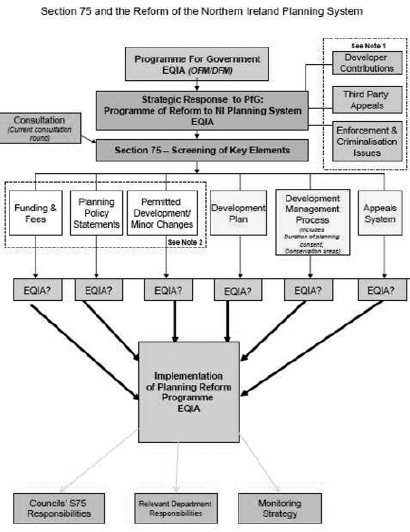
Notes to Accompany Appendix 1
At the time of the draft EQIA at a strategic level, proposals in these areas were not definitive. Instead, the Department wanted to find out from the consultation process whether or not there was a wide support for the introduction of third party appeals, and also for various revisions to the enforcement regime, including the possible introduction of criminalisation of development without planning permission. Depending on the outcome of the consultation, it was indicated that further consideration may be given to the issues, and if required, more detailed proposals will be prepared and screening documents developed. This remains the position.
In addition, the consultation paper was used to initiate debate on the issue of wider developer contributions beyond site specific mitigation. Consultation responses will be considered in light of the funding and infrastructure responsibilities of a range of central government departments. Any possible resulting work may be subject to separate equality considerations.
At the time of the draft EQIA at a strategic level, the Department identified the need to undertake appropriate equality screening in relation to any new funding arrangements which result from the reform process. This will be taken forward as required during 2010.
Proposals for extending permitted development rights together with associated EQIA screening assessments were published as part of a separate public consultation exercise launched in October 2009. The consultation period ended in January 2010 and any comments received will be carefully considered in the analysis of responses which is currently underway.
The Department’s initial draft screening found that, as these proposals are not concerned with actual policies contained within individual PPSs, there is no evidence to suggest that the proposals will have a differential impact on any of the Section 75 groups but, instead, they have the potential to help ensure that there is comprehensive policy on certain land use topics that can be applied equally to the different circumstances arising throughout Northern Ireland. The individual planning policies contained in PPSs will continue to be subject to equality screening by the Department and, where appropriate and in line with statutory duty, full EQIA. Following the consultation exercise, this remains the Department’s position.
| Ref No |
Reference |
| 1 | Commission for Racial Equality (2006) Common ground: Gypsies and Irish Travellers, CRE, London, Niner, P. (2002) The Provision and Condition of Local Authority Gypsy and Traveller Sites in England, OPM, England. |
| 2 | Thomas, H. and Krishnarayan, V. (1994) Race Disadvantage, and Policy Processes in British Planning. Environment and Planning A, 26: 1891-1910, Loftman , P and Beazley, M (1998) Race, Equality and Planning, LGA, London, . Beebeejaun, Y. (2004)’What’s in a nation? Constructing ethnicity in the British planning system’, Planning Theory & Practice, Vol . 5 (4), p.437 — 451 |
| 3 | Ghai, Y. (2001) Public Participation and Minorities, Minority Rights Group International, London. |
| 4 | Ellis, G. and McWhirter, C. (2005) Good Practice Guidance for Racial Equality in Planning for Travellers, Equality Commission, Belfast. |
| 5a | E.g. Booth, C. Darke, J and Yeandle, S. (1996), Changing Places: Women’s Lives in the City, London, Paul Chapman., Matrix (184) Making Space; Women and the Man-made environment, London, Pluto, . |
| 5b | McDowell L, 1983, ‘Towards an understanding of the gender division of urban space’ Environment and Planning D: Society and Space 1(1) 59 – 72. |
| 6 | Women’s Environmental Network (2007) Women in Decision-making, WEN. |
| 7 | Royal Town Planning Institute (2003) Gender Mainstreaming Toolkit, RTPUI, London, |
| 8 | E.g. see http://www.childinthecity.com/, Davis, A. and Jones, L.J. ( 1996) Children in the urban environment: an issue for the new public health agenda, Health & Place, Vol. 2 (2), p.107-113, Woolley et al (1999) The Child as Citizen: Experiences of British Town and City Centres, Journal of Urban Design, Vol. 4, (3), p.255-282. |
| 9 | Lawton, MP (1983) Environment and Other Determinants of Well-Being in Older People The Gerontologist, - Vol 23 (4), p.349-357. |
| 10 | Simpson, B. (1997) Towards the participation of children and young people in Urban Planning and Design, Urban Studies, Vol. 34 (5-6), p.907-925, Adams, E. And Ingham, S. (1998), ‘Another brick in the wall: Childrens’ Participation in Environmental Planning’, The Childrens’ Society and Planning Aid for London. |
| 11 | Scottish Executive (2004) Planning and Community Involvement in Scotland, Scottish Executive, Edinburgh |
| 12 | Barnes, M. (2005) The same old process? Older people, participation and deliberation Ageing and Society (2005), 25:2:245-259 |
| 13a | e.g. Imrie R, (2000), ``Disabling environments and the geography of access policies and practices’’ Disability and Society 15(1) pp. 5 – 24 |
| 14 | Imrie, R. “Oppression, disability and access in the built environment", in Shakespeare, T. (ed) The Disability Reader: Social Science Perspectives, Continuum International Publishing Group, London. P. 129- 146, London Boroughs Disability Resource Team, 1991, ‘Towards Integration: The Participation of Disabled People in Planning’, Disability Resource Team. |
| 15 | e.g. Imrie, R. and Hal, P. (2001) An exploration of disability and the development process, Urban Studies, Vol. 38, (2), pp.333-350 |
| 16 | Kitchin, R. and Lysacht, L. (2003) Heterosexism and the geographies of everyday life in Belfast, Northern Ireland, Environment and Planning A, Vol. 35 (3), p. 489-510. |
| 17 | Kitchin, R. and Lysacht, L. (2003) Sexual Citizenship in Belfast, Northern Ireland, Gender, Place and Culture, Vol. 11, (1), p 83- 103. |
| 18 | Scottish Executive (2004) Planning and Community Involvement in Scotland, Scottish Executive, Edinburgh. |
| 19 | Townshend, T and Pendlebury, J. (1999) Public participation in the conservation of historic areas: Casestudies from north-east England, Journal of Urban Design, Volume 4, Issue 3, 1999, Pages 313 – 331. |
| 20 | DSD’s Annual ‘Households Below Average Income Report’, An analysis of the income distribution in Northern Ireland, 2006/7, NISRA |
| 21 | Health and Social Care Inequalities Monitoring System: First Update Bulletin 2004, DHSSPS |
| 22 | Department of Education GCSE Headline Statistics 2006/07 |
| 23 | ‘Attitudes and Awareness of Equality Issues amongst the General Public in Northern Ireland’ – Survey by Northern Ireland Equality Commission’s (2006) |
| 24 | Poverty Dynamics Research in the Uk, Joseph Rowntree Foundation http://www.jrf.org.uk/publications/poverty-dynamics-research-uk |
| 25 | Statement on Key Inequalities in Northern Ireland, Equality Commission for Northern Ireland, October 2007. |
| Derry | Enniskillen | Cookstown | Lisburn | Bangor | Belfast | Coleraine | Downpatrick | Ballymena | Armagh | Antrim | TOTAL | % OF TOTAL | |
| Evaluation forms returned: | 21 | 11 | 16 | 27 | 20 | 30 | 13 | 15 | 9 | 20 | 9 | 191 | |
| Are you: | |||||||||||||
| Male | 13 | 8 | 10 | 16 | 11 | 14 | 9 | 8 | 7 | 8 | 5 | 109 | 57.1% |
| Female | 8 | 0 | 4 | 5 | 7 | 10 | 4 | 5 | 2 | 9 | 4 | 58 | 30.4% |
| No response | 0 | 3 | 2 | 6 | 2 | 6 | 0 | 2 | 0 | 3 | 0 | 24 | 12.6% |
| What age group are you in? | |||||||||||||
| <18 | 0 | 0 | 0 | 0 | 0 | 0 | 0 | 0 | 0 | 0 | 0 | 0 | 0.0% |
| 19-25 | 1 | 1 | 1 | 0 | 1 | 4 | 0 | 0 | 0 | 1 | 0 | 9 | 4.7% |
| 26-35 | 6 | 2 | 3 | 5 | 1 | 6 | 1 | 2 | 1 | 5 | 4 | 36 | 18.8% |
| 36-45 | 4 | 3 | 2 | 4 | 3 | 6 | 1 | 2 | 0 | 5 | 0 | 30 | 15.7% |
| 46-55 | 5 | 1 | 3 | 6 | 6 | 1 | 3 | 4 | 0 | 2 | 0 | 31 | 16.2% |
| 56-65 | 3 | 1 | 3 | 4 | 3 | 5 | 3 | 3 | 3 | 3 | 5 | 36 | 18.8% |
| >65 | 2 | 0 | 1 | 1 | 3 | 2 | 5 | 2 | 4 | 0 | 0 | 20 | 10.5% |
| Decline to comment | 0 | 0 | 1 | 1 | 1 | 0 | 0 | 1 | 1 | 1 | 0 | 6 | 3.1% |
| No response | 0 | 3 | 2 | 6 | 2 | 6 | 0 | 1 | 0 | 3 | 0 | 23 | 12.0% |
| Are you: | |||||||||||||
| Single | 5 | 3 | 1 | 4 | 3 | 9 | 3 | 3 | 0 | 4 | 2 | 37 | 19.4% |
| Married | 13 | 5 | 12 | 16 | 13 | 15 | 9 | 9 | 8 | 11 | 5 | 116 | 60.7% |
| Other | 1 | 0 | 0 | 0 | 1 | 0 | 1 | 0 | 0 | 2 | 1 | 6 | 3.1% |
| Decline to comment | 2 | 0 | 0 | 1 | 1 | 0 | 0 | 1 | 1 | 0 | 1 | 7 | 3.7% |
| No response | 0 | 3 | 3 | 6 | 2 | 6 | 0 | 2 | 0 | 3 | 0 | 25 | 13.1% |
| Do you have dependants? | |||||||||||||
| Yes | 10 | 5 | 11 | 11 | 13 | 9 | 7 | 6 | 4 | 9 | 3 | 88 | 46.1% |
| No | 9 | 3 | 1 | 9 | 4 | 15 | 5 | 4 | 4 | 8 | 5 | 67 | 35.1% |
| Decline to comment | 2 | 0 | 0 | 1 | 1 | 0 | 1 | 2 | 1 | 0 | 1 | 9 | 4.7% |
| No response | 0 | 3 | 4 | 6 | 2 | 6 | 0 | 3 | 0 | 3 | 0 | 27 | 14.1% |
| Do you consider your community background to be: | |||||||||||||
| Catholic | 11 | 4 | 6 | 5 | 3 | 9 | 6 | 6 | 0 | 8 | 2 | 60 | 31.4% |
| Protestant | 4 | 2 | 4 | 12 | 9 | 8 | 3 | 2 | 6 | 6 | 7 | 63 | 33.0% |
| Neither | 3 | 2 | 1 | 1 | 2 | 4 | 1 | 4 | 2 | 0 | 0 | 20 | 10.5% |
| Other | 1 | 0 | 0 | 0 | 1 | 1 | 1 | 0 | 0 | 0 | 0 | 4 | 2.1% |
| Decline to comment | 2 | 0 | 1 | 3 | 2 | 2 | 1 | 1 | 1 | 3 | 0 | 16 | 8.4% |
| No response | 0 | 3 | 4 | 6 | 3 | 6 | 1 | 2 | 0 | 3 | 0 | 28 | 14.7% |
| Is your ethnic background: | |||||||||||||
| White | 19 | 8 | 12 | 20 | 15 | 24 | 11 | 10 | 8 | 15 | 9 | 151 | 79.1% |
| Chinese | 0 | 0 | 0 | 0 | 0 | 0 | 0 | 0 | 0 | 0 | 0 | 0 | 0.0% |
| Indian | 0 | 0 | 0 | 0 | 0 | 0 | 0 | 0 | 0 | 0 | 0 | 0 | 0.0% |
| Pakastani | 0 | 0 | 0 | 0 | 0 | 0 | 0 | 0 | 0 | 0 | 0 | 0 | 0.0% |
| Traveller | 0 | 0 | 0 | 0 | 0 | 0 | 0 | 0 | 0 | 0 | 0 | 0 | 0.0% |
| Black African | 0 | 0 | 0 | 0 | 0 | 0 | 0 | 0 | 0 | 0 | 0 | 0 | 0.0% |
| Black Caribbean | 0 | 0 | 0 | 0 | 0 | 0 | 0 | 0 | 0 | 0 | 0 | 0 | 0.0% |
| Black Other | 0 | 0 | 0 | 0 | 0 | 0 | 0 | 0 | 0 | 0 | 0 | 0 | 0.0% |
| Other | 0 | 0 | 0 | 0 | 0 | 0 | 0 | 1 | 0 | 0 | 0 | 1 | 0.5% |
| Decline to comment | 2 | 0 | 0 | 0 | 2 | 0 | 1 | 2 | 1 | 2 | 0 | 10 | 5.2% |
| No response | 0 | 3 | 4 | 7 | 3 | 6 | 1 | 2 | 0 | 3 | 0 | 29 | 15.2% |
| Do you consider yourself to have a disability? | |||||||||||||
| Yes | 1 | 8 | 0 | 1 | 0 | 1 | 0 | 1 | 2 | 0 | 0 | 14 | 7.3% |
| No | 18 | 0 | 12 | 19 | 17 | 23 | 13 | 10 | 6 | 17 | 9 | 144 | 75.4% |
| Decline to comment | 2 | 0 | 0 | 0 | 1 | 0 | 0 | 2 | 1 | 0 | 0 | 6 | 3.1% |
| No response | 0 | 3 | 4 | 7 | 2 | 6 | 0 | 2 | 0 | 3 | 0 | 27 | 14.1% |
1. Equality Commission for Northern Ireland
General Comments
The Commission welcomes the opportunity to comment on the Planning Service’s Consultation Paper and Draft Equality Impact Assessment (EQIA). The Commission will comment on policy issues where these have identifiable equality implications, in accordance with our priorities.
We generally welcome the Department’s reform programme with its aim to ensure that Northern Ireland has a modern, efficient and effective planning system which will support the Executive in delivering on its key priorities.
In 2007 the Equality Commission published a Statement on Key Inequalities in Northern Ireland. This sets out our view that housing is a basic human need and provides a foundation for family and community life. Good quality, affordable housing in safe, sustainable communities is essential to ensuring health, wellbeing and a prosperous society. Yet there are pockets of deprivation where sections of our society experience severe housing need, homelessness and poor housing. Geography (urban / rural) should also not create a barrier to adequate housing.
The Commission’s Statement on Key Inequalities highlights inequalities such as the high level of segregation in housing on grounds of community background, the lack of suitable housing for disabled people, homelessness and the lack of adequate housing and accommodation for black and minority ethnic people and Travellers.
For Travellers in particular it has been demonstrated that there are serious barriers associated with the current planning system and that the current policy approach (across the UK) is failing to meet Travellers’ needs.
The planning system has a key role to play in facilitating the meeting of these needs by the appropriate public authority and reducing exclusion, both at a strategic and service delivery level. The current reform process offers a unique opportunity to address the barriers and shortcomings inherent in the current planning system and build a system which responds to the needs of Northern Ireland’s diverse population. The reform process also represents a real opportunity to further promote equality of opportunity and good relations at all levels of the planning system and its delivery of services across Northern Ireland.
The Commission welcomes the Department’s commitment to ensuring that Section 75 principles and best practice are mainstreamed into the reform programme. We particularly endorse the stated outcomes of a ‘system more capable of discharging the statutory obligations to have due regard to the need to promote equality of opportunity’ and ‘stronger collaborative work across a range of stakeholders’.
Equality Impact Assessment
The Commission acknowledges that the EQIA is conducted at a strategic level and that in general substantive impacts will need to be addressed at implementation stage by the relevant planning authority. We welcome the Department’s commitment to continue to subject individual planning policies contained within Planning Policy Statements (PPS) to equality assessment in line with their statutory duties.
The Commission recognises the effort the Department has made in compiling this EQIA at strategic level. We commend the Department for this comprehensive and accessible document, which in terms of structure and content complies with Commission guidance.
We also welcome the fact that the draft EQIA at a strategic level is published at the same time as, and in conjunction with, the planning reform consultation paper and relevant screening documents.
Specific comments on the policy proposals
Aim of the policy
The Commission generally agrees with the aims and objectives of the reform proposals and welcomes the Department’s efforts to reform the planning system in order to improve the efficiency and effectiveness of the planning system and to create a planning system that provides transparency in decision-making and gives confidence to its users.
Recommendation
We recognise that the Department is committed to ensuring that Section 75 is mainstreamed into the reform programme. However, in light of the inequalities which exist in terms of housing and the potential which the reform has to address these, we would recommend that the following are explicitly included as additional aims of the reform initiative:
Planning Policy Statements
We recognise that the Department’s intention is that PPSs would set out the policy framework to achieve high level strategic objectives at a regional level, but retain sufficient flexibility to permit decisions to be taken based on local circumstances.
While there is no evidence to suggest that a PPS in itself will result in differential impact on any of the Section 75 groups it is crucial that the development of its policy direction is evidence-based.
Leadership will be central to ensuring that equality of opportunity is integral to the reformed planning system. It is crucial that the Department develops strong oversight mechanisms and uses its powers of direction to ensure that equality of opportunity is promoted at council level across all equality categories and for vulnerable groups within these. In particular, in respect of assuring Traveller needs, strong central guidance is required in Northern Ireland.
Travellers are recognised as a distinct racial group protected from unlawful racial discrimination by the Race Relations (Northern Ireland) Order 1997. They are also acknowledged as being one of the most marginalised and excluded groups in our society. Multiple disadvantages which characterise Travellers’ lives include poor living conditions and negative attitudes and behaviours from many within the settled community. This contributes to a cycle of deprivation which impacts on the Traveller community’s ability to be involved in many decision-making processes, including those relating to land use planning. This can lead to planning decisions that poorly reflect Travellers’ needs and are based on racial stereotypes of Travellers.
If the Northern Ireland planning system is to establish parity between the settled and Traveller communities, in line with the guarantees contained in Article 5 of the Council of Europe Framework Convention for the Protection of National Minorities, it is vital that the housing needs of both are adequately reflected at every level of the policy hierarchy and that it contains unequivocal statements of the legitimacy and special needs of the Traveller community, including those related to nomadism.
Localised needs assessments prepared at council level may prove insufficient to address the needs of those that retain nomadism as a key cultural practice.
The 3-tier hierarchy of regionally significant, major and local developments proposed by the Department mainly reflects the needs and lifestyles of the settled community.
In light of the nomadic lifestyle which many among the Traveller community wish to pursue, Traveller transit sites for example are of regional significance to the Traveller community across Northern Ireland and their existence or absence have implications that extend beyond individual council areas. Yet such sites may not meet the threshold criteria for regionally significant developments as currently proposed.
Unless an integrated, centralised and pro-active approach is adopted to meeting the accommodation needs of the Traveller community, there is a great risk that the current fragmented approach to the provision of accommodation for Travellers across a range of departments and agencies continues and that the needs of this community will continue to be inadequately addressed.
Regarding planning applications from the Traveller Community it would be the Commission’s preferred option if these were to be treated as regionally significant and decided by the Department.
Recommendation
That consideration should be given to planning for Traveller accommodation to be deemed a regionally significant matter and therefore retained as a centralised function of the Department.
To ensure that the specialist knowledge is available which is required to deal effectively with applications from the Traveller community (e.g. knowledge of planning policies in relation to travellers, liaison with Travellers organisations and councils who may have responsibility for management of transit sites, knowledge about different types of sites, different layout requirements etc) the DoE Planning Service should identify appropriate senior members of staff as specialist contacts for Traveller issues.
Should the department consider this recommendation impracticable and decisions of planning applications from Travellers be devolved to local government, the Commission recommends the following:
Any complementary documentation, such as separately produced supplementary or best practice guidance, should take account of and be worded in line with the Equality Commission’s good practice guidance outlined in the Traveller Guide.
Going forward, the Commission would recommend that the Department, prior to drafting strategic Planning Policy Statements, undertakes a comprehensive analysis of existing inequalities and needs to inform the strategic objectives.
Strategic planning policy statements as well as the individual planning policies contained in PPS should be subjected to equality screening.
Any supplementary guidance by the Department should be written to ensure that local interpretation by councils takes into account the duty on public authorities to have regard to the desirability of promoting good relations between persons of different religious belief, political opinion or racial group. (S 75 (2) Northern Ireland Act 1998) and the specific race relations duty on councils to have due regard to the need to promote equality of opportunity, and good relations, between persons of different racial groups ( S 67 Race Relations (Northern Ireland) Order 1997.
Development Plans
The Commission welcomes the objectives which the proposals for a new local development plan system seek to meet.
We particularly welcome more effective participation from the public and other key stakeholders early in the plan preparation process when proposals are at a formative stage, a stronger link between the evidence base and plan policies and proposals as well as a strong link between community plans and local development plans. We also welcome the introduction of the power to decline determination of applications where the consultation has not been carried out as required.
We would wish to emphasise however that, to ensure these objectives are met, it is crucial that council practice and procedure adopted post – Review of
Public Administration (RPA) are designed to ensure stakeholder engagement during pre-application and other consultation processes is open, timely and fully inclusive.
We would ask that the Department use its responsibility for oversight, guidance for councils, audit, governance and performance management to ensure that the reformed planning system in general and future council policy and procedure in particular are inclusive and genuinely accommodate those with particular needs. This applies in particular to age, disability, race and persons with dependants which the Department’s identifies as Section 75 groups warranting further attention.
We welcome the proposal that a district council’s statement of community involvement must be in place before any public consultation on the local development plan. We also support the proposal that a programme management scheme must be submitted to, and agreed by, central government before the plan preparation process begins.
It is crucial in our view that local development plans and the forthcoming community plans as part of RPA are closely linked in order to achieve a coherent approach to identifying and addressing social need, social inclusion and equality of opportunity.
In terms of plan monitoring and review we welcome the Department’s proposal to establish additional baseline data and improve monitoring systems to ensure regular monitoring and review of local development plans.
Recommendation
Local development plans should explicitly seek to redress key inequalities in housing and promote social inclusion.
In light of the key inequalities in housing and communities identified in the Commission’s Statement on Key Inequalities in Northern Ireland we would urge the Department to ensure that as part of the test of robustness as well as plan monitoring and review particular attention is paid to issues such as the high level of segregation in housing on grounds of community background, the lack of suitable housing for disabled people, homelessness and the lack of adequate housing and accommodation for Travellers.
Development Management
The Commission welcomes the Department’s aim to create a more responsive, fair, predictable and efficient planning application system which focuses on shaping and facilitating appropriate development opportunities.
We would support the introduction of statutory pre-application community consultation for regionally significant and major developments.
In relation to form, method and techniques for consultation we would like to draw the Department’s attention to the Commission’s guidance for public authorities on consulting and involving children and young people, the Good Practice Guide to Promote Racial Equality in Planning for Travellers as well as Commission guidance on equality impact assessments which contain best practice for consultation. The Department may also wish to consult the guide on community engagement recently published by the Equality and Human Rights Commission in Britain which complements our own guidance.
Recommendation
Given the good relations issues that exist between the Traveller community and the settled community the Commission would recommend that some form of pre-application community consultation (i.e. the requirement in some circumstances for consultation before a planning application is submitted) should also be considered for applications for Traveller sites. This could be a mediation type process, particular in cases of planning disputes involving Travellers and the settled community, based on the training resources prepared by Belfast Traveller Support Group to facilitate contact, cooperation and the exchange of information between the two communities at an early stage.
Appeals
The Commission is concerned that the removal of the automatic right to be heard in person may have a negative impact on some disabled people and people who are disadvantaged through low levels of literacy. A study estimated that some 24 per cent of adults in Northern Ireland (over 250,000 people based on current estimates of working age population) performed at the lowest levels of literacy competence.
Recommendation
We would urge the Department to ensure that the Planning Appeals Commission’s criteria for determining the most appropriate appeal method promote equality of opportunity, for example as regards people with a learning disability, people whose first language is not English or people who have low levels of literacy competence.
Capacity Building
As the new planning system is introduced there will be a need to keep community and voluntary groups informed of the changes. As the Department recognises in its draft EQIA, it is important to put in place appropriate data gathering systems to establish who does not use or engage with the planning system. When drafting and planning the new service specific action should be taken to ensure that the chill factors and barriers associated with the current system as outlined in the draft EQIA are fully identified and addressed at all levels by the reformed system to ensure any barriers to participation and engagement are removed as far as possible.
In particular in respect of Travellers it is important to recognise and establish a fair and sensitive approach to consultation. It may require a degree of capacity building or community development before meaningful participation can take place. Planning Service professional staff (at Department and Council level) will need to be given the skills to enable them to be more proactive and creative in their approach to consulting Travellers.
Recommendation
An outreach programme of public education, informed media debates, independent planning advice as well as public awareness should be developed to ensure that all those involved in the planning process have the necessary knowledge, skills and competencies to effectively use and engage with the reformed planning system.
Government response
The Department notes the comments made by the Equality Commission with regards to the aims of the reform initiative. As the consultation paper recognises, one of the key outcomes of the reforms should be a system more capable of discharging the statutory obligations to have due regard for the need to promote equality of opportunity.
Applications for regionally significant development (RSD) will form the top tier of development proposals which are considered essential to increasing the sustainable economic growth of Northern Ireland. These applications will be critical to the delivery of the Executive’s regional investment priorities. By their very nature they will involve a relatively small number of large scale applications with strategic implications for the whole of Northern Ireland, for example, regional infrastructure and certain types of commercial development.
In light of the travelling community’s distinctive local needs, particularly in relation to decisions on sites for accommodation, the Department considers that these are best addressed in their relevant local context as applications for local development rather than at the regional level.
The current planning policy context for Travellers is set out in the RDS and particularly in PPS12. Post Reform / RPA, this will continue to apply to district councils in the preparation of local development plans due to the requirement for plans to take account of central government plans, policies and guidance. Following the transfer of planning functions, local development plan proposals will continue to take full account of the accommodation needs of the travelling community through the Housing Needs Assessment prepared by the Housing Executive either by zoning land suitable for Travellers’ sites or setting out site selection criteria. This will enable local solutions (including the provision of advice on site selection and management) to be developed for particular local circumstances in consultation with the local travelling community and their representative organisations as well as the local settled community. This provides the opportunity for all sections of the community (settled and nomadic) to have their needs considered as part of mainstream district council planning and housing decision-making processes.
The Department recognises the importance of equal treatment of Travellers and the settled community in the planning system. In preparing a new Planning Policy Statement 1 on the general principles that will underpin the operation of the modernised planning system, the Department will give consideration to the best way of promoting equality of opportunity for all sections of the community. As at present, all Planning Policy Statements will continue to be subject to equality screening and assessment as appropriate. The policy content will be a matter for consideration when each PPS is being prepared / revised. However, at this stage, the comments put forward have been noted.
Following the transfer of planning functions, when responsibility for local development plans moves to local government, Section 75 statutory obligations will continue to apply to district councils. It is envisaged that the new local development plans will be effective tools in assisting district councils to fulfil their duties under Section 75 of the Northern Ireland Act to have due regard to the need to promote equality of opportunity and good relations. This will help address issues such as housing and accommodation for Travellers. While the test of ‘soundness’ will not include detailed policy considerations, it will include the requirement for local development plans to take account of central government plans, policies and guidance such as PPS12.
Proposed changes to Development Management set out new requirements for statutory pre-application consultation with the community for regionally significant and major development proposals. The aim is to better inform the relevant community and provide an opportunity for it to contribute its views before a formal planning application is submitted to the planning authority. This is an additional measure and does not take away the right of individuals and communities to express formal views during the application process itself.
In light of responses to the consultation paper the Department will give district councils some discretion to request to the Department that an application for local development be dealt with as a major development. This would provide flexibility to respond to exceptional and specific local circumstances where, in the opinion of the district council, pre-application community consultation might be considered appropriate. The Department intends to provide guidance to district councils in relation to the circumstances where this may be appropriate.
The aim of the proposal to give the PAC the power to determine the most appropriate appeal mechanism was not to stifle debate at appeals / independent examinations or to stop certain stakeholders from contributing; it was simply to enable the Planning Appeals Commission or independent examiners (where appointed) to better manage the appeals / examination process. However, having carefully considered all the responses and in light of the widespread opposition and concerns raised, the Department does not intend to proceed with legislation to allow the PAC or independent examiners (where appointed) to determine the most appropriate appeal method or the most appropriate procedures to be used in dealing with representations to the local development plan. The detailed rationale for this decision is reflected in the Government Response to the Public Consultation.
The Department notes the comments made in relation to consultation, participation and engagement. It is committed to working with others to ensure that the planning system is open and accessible, as well as contributing to initiatives to enhance capacity for all participants and stakeholders.
2. Northern Ireland Human Rights Commission
Planning reform and travellers
The Commission has identified the accommodation needs of members of the Traveller community as a priority issue in relation to human rights compliance. The accommodation situation for Travellers in Northern Ireland has been highlighted by United Nations and Council of Europe experts in the monitoring of compliance by the United Kingdom with its international treaty obligations.
The Commission participated in April 2009 in the UK’s examination by the UN body overseeing its compliance with obligations under the International Covenant on Economic, Social and Cultural Rights (ICESCR). Among the key issues raised by the UN in its subsequent Concluding Observations were the shortage of adequate sites for Travellers and the discriminatory effect of the Unauthorised Encampments (Northern Ireland) Order 2005. The UN recommended that the UK ensure the provision of sufficient, adequate and secure sites, that it review the Order and that it provide for suitable accommodation arrangements for Travellers.
At the regional level the Council of Europe, in relation to compliance with the UK’s obligations under the Framework Convention for the Protection of National Minorities (FCNM), has also singled out the accommodation situation of Irish Travellers. In response to observations on the subject by the FCNM treaty monitoring body the UK stated that in Northern Ireland there was adequate funding for accommodation for Travellers but conceded that there were ‘constraints’ in obtaining the suitable sites needed, indicating this was a problem being actively addressed by the Department for Social Development (DSD) and the Housing Executive. Subsequently the Council of Europe’s Committee of Ministers adopted a resolution in relation to the UK’s compliance with the FCNM which included among its issues of concern:
‘Hostility among some people within the local population and the resistance of certain local authorities to improving the availability of authorised sites have contributed to the fact that a number of Gypsies and Travellers continue to live on unauthorised sites and may face eviction orders.’
UN and Council of Europe treaty bodies have therefore placed emphasis on the need to ensure adequate accommodation arrangements for Travellers, a matter in which planning policy can play a significant role. The Commission concurs with the research evidence provided by the Department’s draft Equality Impact Assessment on the policy which acknowledges the causal relationship between planning decisions and unsuitable accommodation as follows: ‘Travellers in particular suffer multifaceted deprivation as a direct consequence of planning decisions that result in many families living on unauthorised sites, with poor access to services and with negative consequences for health and access to other services such as education.’
Whilst, unlike most provisions of the European Convention on Human Rights (ECHR), the Covenant and FCNM are not directly justifiable in the domestic courts, they are nevertheless binding in international law on the UK, including its devolved bodies. The Department therefore has to ensure that its policies are in compliance with the standards which the UK has ratified in human rights instruments. The policy development process should ensure there is a high priority given to progressing the recommendations of treaty bodies, and that reforms do not risk ‘regressive steps’ (i.e. the situation deteriorating rather than improving) in relation to the human rights issue in question.
Another core concept in human rights is that when an entitlement or obligation is created, there must be legal certainty (‘prescribed by law’) as to how to access or comply with it. This concept applies to planning legislation in relation to provision for Travellers sites, so that once legitimate clear criteria have been established, there must be a clear and certain process for obtaining the entitlement.
Planning Policy Statements
Present Departmental policy in relation to Traveller accommodation is contained in policy number HC3 in Planning Policy Statement (PPS) 12. This sets out the criteria for provision in relation to grouped housing schemes, serviced sites and transit sites.
The Commission recently corresponded with the Department in relation to Traveller accommodation and draft PPS21, a Planning Policy Statement that relates to development in the countryside. Policy Planning Statements set out high-level planning rules and are therefore of key importance in setting out and providing legal clarity in relation to entitlements to provision. The Commission had queried potential ambiguities in the wording and meaning of a number of parts of the draft document. The Commission was grateful for the response of the Department which indicated that wording would be changed in order to remove any potential ambiguity in the policy provision in question (CTY1 of PPS21). The Department confirmed that this policy referred to the full range of Traveller accommodation set out in PPS12, and that policy in relation to social and affordable housing outside of settlements (CTY 5 of PPS21) did include group schemes for Travellers.
The Department’s draft Equality Impact Assessment concludes that there is a potential differential impact between persons of different racial groups by the range of ways decisions are made in planning. Within the assessment of procedural impacts the following conclusion is listed: ‘It has also been found that the planning system can be used as an outlet for discriminatory behaviour against some racial groups, particularly Travellers, through objections to planning applications, not made on the basis of the land use characteristics of the proposed development, but the ethnicity of the proposed occupants.’
The Commission concurs that there is risk of objections being made on the basis of racism rather than legitimate criteria. Objections motivated by racism but which are disguised as legitimate objections may be difficult to identify, meaning that a robust evidence-based process needs to be established to weed out illegitimate objections and not permit them to hold up applications. In addition to individual objections thwarting an application from Travellers, the same effect can occur on the basis of planning criteria which inadequately provide for Traveller sites; criteria which are unduly difficult to meet, or are ambiguous; or processes whereby there is no clarity in entitlements. The importance of legal certainty throughout the process again needs to be stressed.
One of the key proposals in the reforms is for the status of PPSs to be downgraded from the present position of providing operational guidance and advice to a position of providing strategic direction and regional policy advice which would then be interpreted by local councils into development plans. The Department notes that, unlike Northern Ireland at present, elsewhere in the UK and Ireland overarching policy guidance is strategic and is then translated into local development plans where detailed operational policy is often found. The Department identifies a number of problems with the present system in Northern Ireland prescribing universal policy on land use topics which differ in circumstance across the jurisdiction, and in that the present system can result in local policy issues not being adequately addressed.
The Commission has no view on the administrative arrangements for planning policy development nor do we in principle have any objection to areas of general planning policy being devolved to a local level. However in matters that engage national compliance with human rights obligations the Commission is concerned that the state, in this case at sub-national (Northern Ireland) level, must maintain a binding framework. This is particularly relevant to Traveller sites where any reform which makes the provision of Traveller sites discretionary could facilitate discriminatory practices.
The Commission would therefore urge that explicit safeguards be provided within the new policy framework to ensure legal certainty over the provision of Traveller sites. The Commission notes the Department’s assurance that the reform of PPSs would be subject to ‘appropriate checks and balances’ and ‘subject to the proviso that any detailed local policies should be aligned with central government plans, policy and guidance, and would draw particular attention to this area of provision being included in such arrangements.
Other areas or initiatives that engage compliance with human rights obligations in relation to the fulfilment of the right to adequate housing could also be protected. For example measures such as obligations on developers to include provision for social housing or infrastructure (roads, sewerage etc) in developments are one way duties relating to the provision of affordable housing can be progressed.
Appeals and third party appeals
The Commission notes the proposals in chapter five of the consultation document in relation to appeals. The Commission has not scrutinised every aspect of these proposals but would like to make the following observations on particular aspects of the reforms.
The Commission concurs with the Department in that the six-month time limit on applicant appeals to the Planning Appeals Commission (PAC) is unnecessarily long for all the reasons set out in the consultation document, and because, in the context of Article 6 ECHR, decisions affecting the civil rights of all parties, including the applicant and objectors, require to be determined within a reasonable time.
The fair hearing provisions of the ECHR do not necessarily require an oral hearing nor is there an automatic human right to cross-examination in proceedings of this nature. The cost of oral hearings in all cases as a matter simply of choice must be balanced against the desirability of efficiency and cost effectiveness. Each case must be examined on its own merits, however, and the Commission supports the proposal that the PAC be given the power to decide, applying published criteria and taking into consideration the applicant’s preferred method, the most appropriate method for processing the appeal.
The planning legislation and the principles derived from it give third parties rights to make representations before a planning application is determined, and the planning authority is legally obliged to take into account all relevant representations received. In the pre-determination stage, it is hard to see that, in theory, there is an inequality of arms between third parties and the applicant.
However, third party rights to challenge the determination are severely limited and this raises the scope of Article 6 ECHR. Within the planning system, there is an unbalanced playing field in favour of the applicant. Objectors have no right of appeal and the cost of legal proceedings, especially for judicial review cases, is prohibitively expensive especially with the threat of having to pay another party’s legal costs if the objector loses. Even success in judicial review proceedings will only address the procedural unfairness and not the substantive issues in the case or merits of a decision. The Commission encourages the Department to consider providing for third party appeals. Although it is important that people have the right to object to decisions, we must avoid a situation whereby vexatious third party appeals interfere with the efficiency of the system and the Commission recommends therefore the appeal should not be an unlimited right. Criteria for appeal ought to be developed which include the need for the appeal to be grounded on issues of primary fact; for example it would not be appropriate if the objector wishes to appeal on grounds relating to matters of policy. The Commission is mindful of the need for the planning process to be efficient and time delays can amount to a breach of the rights of all parties concerned. The Commission notes the Department’s concerns in respect of the implications of third party appeals but considers that, properly drafted criteria and efficient processing together with consideration of the nature and form of appeal, leaves the balance of advantage on the side of a third party appeal system.
Government Response
The Department notes the response from the Human Rights Commission.
The current planning policy context for Travellers is set out in the RDS and particularly in PPS12. Post RPA, this will continue to apply to district councils in the preparation of local development plans due to the requirement for plans to take account of central government plans, policies and guidance. Post Review of Public Administration (RPA), development plan proposals will continue to take full account of the accommodation needs of the travelling community through the Housing Needs Assessment prepared by the Housing Executive either by zoning land suitable for Travellers’ sites or setting out site selection criteria. This will enable local solutions (including the provision of advice on site selection and management) to be developed for particular local circumstances in consultation with the local travelling community and their representative organisations as well as the local settled community. This provides the opportunity for all sections of the community (settled and nomadic) to have their needs considered as part of mainstream district council planning and housing decision-making processes.
The Department recognises the importance of equal treatment of Travellers and the settled community in the planning system. In preparing a new Planning Policy Statement 1 on the general principles that will underpin the operation of the modernised planning system, the Department will give consideration to the best way of promoting equality of opportunity for all sections of the community. As at present, all Planning Policy Statements will continue to be subject to equality screening and assessment as appropriate. The policy content will be a matter for consideration when each PPS is being prepared / revised.
Following the transfer of planning functions, when responsibility for local development plans moves to local government, Section 75 statutory obligations will continue to apply to district councils. It is envisaged that the new local development plans will be effective tools in assisting district councils to fulfil their duties under Section 75 of the Northern Ireland Act to have due regard to the need to promote equality of opportunity and good relations. This will help address issues such as housing and accommodation for Travellers. In addition, as part of the plan scrutiny process, the Department will appoint the Planning Appeals Commission or independent external examiners to examine the local development plan on the basis of ‘soundness’ criteria and provide an advisory report to the Department. While the test of ‘soundness’ will not include detailed policy considerations, it will include the requirement for local development plans to take account of central government plans, policies and guidance such as PPS12. The Department will then consider the advisory report and issue a binding report to the district council. The district council will adopt the plan on the basis of the binding report.
The Department notes the comments made in relation to the appeals issues identified above. Following full consideration of all of the responses to the consultation paper and the draft EQIA at a strategic level, the Department can confirm that it will be taking a power to reduce the appeal period to 4 months but it will not be providing the PAC with the power to determine the most appropriate appeal mechanism. The rationale for these decisions is reflected in the Government Response to the Public Consultation.
In relation to third party appeals, it has been concluded that the Department will not make provision for third party appeals in the current round of planning reform proposals. Again, the detailed rationale for this conclusion is reflected in the Government Response to the Public Consultation.
3. Community Places
There are a number of equality considerations with the planning reform proposals. We have concerns that the proposals to remove the right to be heard in person will have a disproportionate effect on equality groupings particularly, young protestant males and rural dwellers.
The Traveller community is the only Section 75 group for which there is a specific planning policy (PPS12) and we feel that these proposals will have a significant impact on the Traveller Community.
Applications for Traveller accommodation should be processed as regionally significant. Specialist knowledge is required to deal effectively which these applications, i.e. knowledge of planning policies in relation to travellers, liaison with Travellers organisations, councils (who may have responsibility for management of transit sites), knowledge about different types of sites, different layout requirements, and mediation skills for consultation on this type of application. The numbers of applications for traveller sites are likely to be small in number; these skills would therefore be better located in a central team in the Department. In this way skills can be developed and applied to all applications for traveller accommodation, rather than planning officers in the new council areas dealing with them occasionally and therefore not having the necessary skills to process the applications effectively.
Applications for Traveller accommodation raise issues which are of strategic importance, are of more than local significance and impact on more than 1 single district council area. This is particularly the case for Transit sites which provide temporary accommodation where Travellers can legally stop in the course of Travelling. These sites will therefore affect a number of council areas. For example, it has been estimated that there is a need for 5 transit sites to meet need across NI. It is essential that an integrated approach is adopted for these applications, they should not be looked at in isolation across each council area.
Pre-application community consultation should be carried out for Traveller sites. Due to the contentious nature of Traveller sites it may be advantageous to adopt a different approach to pre-application community consultation which involves mediation skills.
The needs of Travellers who have no alternative culturally sensitive accommodation should be taken into consideration before enforcement action is served.
Councils should be required to zone land for Traveller sites in their development plan where the Housing Needs Assessment (HNA) shows need rather than leaving it to be determined through individual applications. Councils should be required to consult the travelling community / traveller groups in order to identify suitable locations for sites to meet the needs identified in the HNA.
As part of the tests of robustness for development plans the Department should ensure that land has been zoned for Travellers accommodation, where need has been identified through the HNA. As plans are monitored, they will therefore be required to show how they are implementing this and can be called to account if they do not provide land for Traveller accommodation.
It will be important to carry out a full EQIA for the issues e.g. Third Party Right of Appeal which are not presented as proposals in the consultation but identified as an opportunity to gather further views and comments on. It may have been more beneficial to consider the EQIA aspects of these issues from the outset
Government response
The aim of the proposal to give the PAC the power to determine the more appropriate appeal mechanism was not to stifle debate at appeals / independent examinations or to stop certain stakeholders from contributing; it was simply to enable the Planning Appeals Commission or independent examiners (where appointed) to better manage the appeals / examination process. However, having carefully considered all the responses and in light of the widespread opposition and concerns raised, the Department does not intend to proceed with legislation to allow the PAC or independent examiners (where appointed) todetermine the most appropriate appeal method or the most appropriate procedures to be used in dealing with representations to the local development plan. The detailed rationale for this decision is reflected in the Government Response to the Public Consultation. Therefore, the current provision for oral hearings will remain. As such, any person who makes a representation seeking a change to the Plan Strategy or Site Specific Policies and Proposals will be given the
opportunity, if so requested, to appear at the independent examination and be heard by the PAC or other independent examiner.
Applications for regionally significant development (RSD) will form the top tier of development proposals which are considered essential to increasing the sustainable economic growth of Northern Ireland. These applications will be critical to the delivery of the Executive’s regional investment priorities. By their very nature they will involve a relatively small number of large scale applications with strategic implications for the whole of Northern Ireland, for example, for regional infrastructure and certain types of commercial development.
In light of the travelling community’s distinctive local needs, particularly in relation to decisions on sites for accommodation, the Department considers that these are best addressed in their relevant local context as applications for local development rather than at the regional level.
Proposed changes to Development Management set out new requirements for statutory pre-application consultation with the community for regionally significant and major development proposals. The aim is to better inform the relevant community and provide an opportunity for it to contribute its views before a formal planning application is submitted to the planning authority. This is an additional measure and does not take away the right of individuals and communities to express formal views during the application process itself.
In light of responses to the consultation paper the Department will give district councils some discretion to request to the Department that an application for local development be dealt with as a major development. This would provide flexibility to respond to exceptional and specific local circumstances where, in the opinion of the district council, pre-application community consultation might be considered appropriate. The Department intends to provide guidance to district councils in relation to the circumstances where this may be appropriate.
The current planning policy context for Travellers is set out in the RDS and particularly in PPS12 and it allows for plans to identify specific sites to meet needs such as traveller sites. Post Reform / RPA, this will continue to apply to district councils in the preparation of local development plans due to the requirement for plans to take account of central government plans, policies and guidance.
Following the transfer of planning functions, district councils will be required to have their Statement of Community Involvement in place before any public consultation on the local development plan can begin. The SCI will set out the councils approach to community consultation for the plan and will include any measures required to meet Section 75 obligations including consultation with travellers, if appropriate. The Department considers that the SCI will enable district councils to carry out more inclusive and effective community consultation on their local development plans. It will also help better promote equality of opportunity and community relations through increased awareness of community participation and involvement.
Legislation and the test of ‘soundness’ will require district councils to ensure they have met the preparation requirements of a local development plan, which includes taking account of central government plans, policy and guidance and that there is a robust evidence base for the decisions made on policies contained within the plan. There will also be a statutory requirement for district councils to monitor the implementation of their local development plans, which will include any policy for the provision of land for Traveller accommodation.
In relation to enforcement, as PPS 9 indicates “The Department has a general discretion to take enforcement action against a breach of planning control when it regards it as expedient to do so having regard to the provisions of the development plan and any other material considerations". This policy will continue to apply to the district councils when they assume responsibility for planning, including enforcement.
4. Rural Community Network
Rural Community Network (RCN) is a regional voluntary organisation established by community groups from rural areas in 1991 to articulate the voice of rural communities on issues relating to poverty, disadvantage and equality. We have a membership of over 400 groups. We would like to include the following points as a precursor to our response that is attached.
RCN is committed to a rural community and networking approach to the planning and development of sustainable rural communities in order to address poverty, social exclusion and equality and to support work towards a shared future.
RCN welcomes the opportunity to comment on the Planning Service’s consultation on Planning Reform. These are major proposals to put planning back at the heart of local democracy and the task of building confidence and trust in the new system cannot be underestimated. From RCN’s perspective, reform is needed to ensure that we have a modern, efficient and effective planning system that supports “An attractive and prosperous rural area, based on a balanced and integrated approach to the development of town, village and countryside, in order to sustain a strong and vibrant rural community contributing to the overall wellbeing of the region as a whole" [Regional Development Strategy]. Some rural communities are changing with a shifting demography, inward migration and the transformation of the rural economy and local services. These changes require a re-imagining of relationships, services and how we use our increasingly limited resources within a wider political commitment to invest in and sustain rural communities. The current ongoing development of the Executive Rural White Paper is an expression of this commitment and the Planning Reform proposals need to take cognizance of the vision and objectives of this White Paper. Planning in Northern Ireland should also fundamentally aim to deliver the content and direction of the Programme for Government.
We would welcome clarity with regards to how ‘rural community’ is defined by the planning system as at one stage the Department for Regional Development defined ‘rural’ to include regional towns which in an indirect way promoted concentration of development.
We welcome the consultation events organised by the Planning Service across Northern Ireland and would strongly urge the Department to repeat these events, perhaps in partnership with the new local councils, once the Northern Ireland Executive has made its decision on planning reform. This would allow people to hear what changes have been implemented, what hasn’t been taken on board and why. These post-consultation events would be critical in building trust between citizens and local communities and the new planning system and in showing respect for people’s time and contributions. There is immense cynicism with regards whether participation in consultation processes makes any impact on the final decisions taken. This is particularly true for many rural citizens and communities in light of the deep mistrust generated by the PPS14 debacle. The Department needs to model a new approach to consultation if they are serious with regards these reform proposals. Citizens and local communities need to be able to trace back to their contributions from the final decisions taken.
This was a lengthy consultation document and in many places quite technical focusing on using the expertise of those with in-depth knowledge of the planning system as opposed to the knowledge of citizens and communities. This is reflected, for example, in the fact that the consultation document does not ask views on Chapter 1 – the purpose of planning –, which might have encouraged wider engagement. We would hope that the final document is more userfriendly and more accessible as a symbol of a reformed planning system which wishes to build greater public understanding, trust and confidence. A compendium guide to the new planning system should eventually be published and linked with training workshops on its operation.
We would welcome a stronger and clearer vision with regards the purpose of planning which focuses on creating communities that offer better choices for where and how people work and live. We would also welcome greater clarity in this chapter on the role of planning in promoting equality, building more diversity communities, and growing good community relations.
It might be helpful if this chapter also named some core ethical principles in planning, applicable to all who participate in the planning process: citizens, elected representatives, planners, business and developers. These might include, for example, that planning process participants should:
We have identified particular rural, equality and good relations impact issues in our consultation response. In general we would welcome a more integrated process by the Department by which their consultation proposals would integrate Section 75 and rural proofing considerations throughout the document. Outlined below are some key points raised in our response.
The purpose of an EQIA is two-fold; namely to identify adverse impact and to identify ways in which equality of opportunity and good relations might be better promoted. The identification of ways in which a policy can better promote equality of opportunity and good relations is not contingent on their first being an identifiable adverse impact. We would welcome greater understanding in these proposals with regards the specific issues facing Section 75 groups in rural areas where disadvantage is increased through increased distance from job opportunities, access to services and transport. The failure to name that Northern Ireland is still very much a divided society and that planning has a significant role in either maintaining segregation or creating greater choices and opportunities for sharing and integration is a derogation of duty on the part of the Department.
The purpose of rural proofing is to assess how policies will work for rural people and places and to ensure that policies are implemented fairly and effectively. The benefits of rural proofing include better decision making, improved communication, strengthening relationships and capacity building. Whilst we welcome the Department’s rural proofing checklist in Annex 10 of the Consultation Report it falls far short of the Rural Proofing Guidance
developed by the Commission for Rural Communities [2009] including the absence of any evidence collated informing the judgements made.
We would strongly recommend a structured engagement between DARD, the Rural White Paper Stakeholders Forum and the Planning Reform Team to further examine the implications of planning reform for the sustainability of rural communities.
The Statement of Community Involvement should be developed by all organisations and bodies in the Planning System and include specific reference as to how marginalised groups will be engaged with including those marginalised by geography. These standards would also apply to pre-application consultation processes for major and regional applications. They should also apply to the monitoring and review of local development plans and any other review and monitoring processes.
RCN strongly disagrees with the proposal to remove right to a public hearing as this removes a fundamental right to be heard in person and will adversely impact on many individuals within different Section 75 groups. Trust will not be built between the citizen and the new planning system by removing this right and fundamental safeguard.
The definition of countryside in the local development plan needs to go beyond analysis of landscape character and development pressure to include community infrastructure in the countryside and dispersed rural communities.
If the Sustainability Appraisal is serious with regards the ‘social’ dimension then it provides an important mechanism to address rural proofing and Section 75 priorities.
The threshold minimums for major developments are too high for all categories, particularly as these are linked to the requirement for a Pre-Application Consultation. Under the current proposals, there would be no Pre-Application Consultation required for 99 houses (Greenfield), or 49 houses (brownfield) or 19 houses (village) despite this size of developments clearly having a major impact on local communities. This is of particular relevance to rural communities.
We welcome the recognition of different settlement patterns between rural and urban in setting the proposed housing thresholds for major developments and would recommend that a similar analysis be applied to the other 7 categories outlined in Table 2 – Major Developments as well as Regional and Local Developments.
Consideration should be given to expanding the list of statutory consultees to include the local rural and urban community infrastructure learning from the Community Council model developed in Scotland.
The contributions sought from developers could be used to promote greater equality and good relations through the needs identified through the Community and Development Plans. They could also be used to ensure balanced regional development. Contributions should also be sought from residential developments as a development of 19 houses in a village will have significant infrastructure implications.
Final Comments
As a matter of good practice, we would also urge Planning Service to be much clearer about their system of analysis with regards how they are going to analyse the consultation responses, what criteria they are using and whether different weighting has been allocated to different criteria. For example will calls for greater transparency, democracy and sustainable development be given lower weighting to calls for economic development? Will sustainable development include community vitality or will it continue to refer solely to landscape and environment.
This response is informed by the work of Community Places and the Northern Environment Link and a pre-consultation session organised by Community Places and RCN. It has also been informed by the views of Mark Conway and Dr. Michael Murray from Queens University Belfast. We also conducted an extensive piece of research with Queen’s University Belfast funded under INTERREG IIIB to develop new participatory approaches to strategic planning and multi-level governance in a rural setting (the SPAN project 2004- 2008).
Government Response
The Department notes the wide ranging response from the Rural Community Network (RCN), which addressed issues relating to the draft EQIA at a strategic level, rural proofing and many of the consultation proposals. A number of the substantive issues raised by RCN and others are addressed in the Government’s Response to the Consultation, including for example, the decision, in light of the responses received, not to proceed with the proposals to give the PAC the power to determine the most appropriate appeal mechanism or the most appropriate procedures to be used in dealing with representations to the local development plan.
The aim of the proposal to give the PAC the power to determine the more appropriate appeal mechanism was not to stifle debate at appeals / independent examinations or to stop certain stakeholders from contributing; it was simply to enable the Planning Appeals Commission or independent examiners (where appointed) to better manage the appeals / examination process. However, having carefully considered all the responses and in light of the widespread opposition and concerns raised, the Department does not intend to proceed with legislation to allow the PAC or independent examiners (where appointed) to determine the most appropriate appeal method or the most appropriate procedures to be used in dealing with representations to the local development plan. The detailed rationale for this decision is reflected in the Government Response to the Public Consultation. Therefore, the current provision for oral hearings will remain. As such, any person who makes a representation seeking a change to the Plan Strategy or Site Specific Policies and Proposals will be given the opportunity, if so requested, to appear at the independent examination and be heard by the PAC or other independent examiner.
In relation to RCN’s comments on the purpose of planning, it should be noted that this issue will be addressed in more detail in PPS1 and will be subject to debate and consultation as part of this policy preparation process.
Following the transfer of planning functions, there will be requirement for district councils to have their Statement of Community Involvement in place before any public consultation on the local development plan can begin. The Department considers that the SCI will enable district councils to carry out more inclusive and effective community consultation on their local development plans. It will also help better promote equality of opportunity and community relations through increased awareness of community participation and involvement.
The definition of the countryside for planning purposes is a matter for planning policy and not the planning reform proposals. However, post RPA, local development plans will be required to take account of central government plans, policy and guidance and therefore, unless there is a change of policy, will continue to have regard to issues such as community infrastructure in the countryside and dispersed rural communities. Furthermore, there will be a requirement for local development plans to take account of community plans which themselves deal with issues such as community infrastructure provision and delivery. Indeed, one of the functions of the local development plans will be to deliver the spatial aspects of the community plan.
Sustainability appraisals will include a ‘social dimension’ and detailed guidance on SA will be prepared in due course. Furthermore, post Reform / RPA, the requirement for rural proofing and Section 75 priorities will continue to apply to district councils.
The proposed development hierarchy (consisting of regionally significant, major and local developments) is intended to ensure that application procedures are proportionate and responsive to each of the three different types of development category. Appropriate resources and decision-making arrangements will be tailored according to the scale and complexity of the proposed development type. In light of the responses to the consultation paper the Department will revise details of some of the thresholds for both regionally significant and major developments.
It is our intention to set out the relevant bodies (statutory consultees) that must be consulted by the planning authority in subordinate legislation. The list of consultees has not yet been finalised
The consultation document was used as a suitable vehicle through which to initiate debate on the issue of seeking contributions from developers for the provision of general infrastructure, beyond that already required to mitigate the site specific impact of a development proposal and make it acceptable in planning terms. The issue is not intrinsic to planning reform and the Department has no plans for the introduction of such a system. This issue will require further consideration at Executive level, particularly in relation to those Departments with responsibility for the funding and provision of infrastructure, in order to determine the way forward.
Additional comments will be taken in account by the Department as it moves forward with the primary and subordinate legislation programme and also with the preparation of guidance on issues such as pre-application consultation, thresholds for major applications, the development plan preparation process etc.
The Department will also be undertaking further work in this area as it develops its EQIA Monitoring Strategy.
5. Sinn Féin
Introduction
In keeping with the approach of the Department of Environment’s (DOE) consultation process, Sinn Féin’s response incorporates comments on both the planning reform proposals and Equality Impact Assessment (EQIA).
Sinn Féin believes that planning policy must promote equality and promote prosperity in the interests of all citizens across the North, and on an all-island basis – not least along the border corridor.
Sinn Féin believes that all planning decisions must ensure adequate consultation, transparency, accountability and consistency.
In particular, the planning system must increasingly deliver its services with greater efficiency, effectiveness, economy and equality.
Sinn Féin has publicly and privately engaged with stakeholders, interested parties, individual citizens, wider groups, and those in the public and private sectors on a consistent basis in relation to reforming the planning system in these ways.
Sinn Féin has held discussions with the DOE and it is aware of our party’s position on the detail of planning reform and related issues. We will continue this engagement as the various consultation proposals move to the next stage.
A summary of Sinn Féin’s position on some of the key elements of the planning reform proposals is outlined below. However this is not an exhaustive submission and, given the complex and interlinked nature of the proposals, Sinn Féin intends to keep all the relevant issues under continuing consideration as they develop.
Equality Impact Assessment
Sinn Féin welcomes the DOE’s decision to incorporate a full draft Equality Impact Assessment (EQIA) at a strategic level as an integral element of this consultation process on planning reform.
Sinn Féin welcomes the DOE’s consistent recognition that the preliminary recommendations of the draft EQIA must be implemented in a way which both promotes equality of opportunity and / or mitigates any potential adverse impacts, in part furtherance of the Department’s overall obligations under Section 75 of the NI Act 1998. Too often in the past, public authorities have opted for a minimalist approach that merely considered the mitigation of potential adverse impacts.
Sinn Féin welcomes the Department’s commitment to the ongoing development of a structured Monitoring Strategy regarding the continuous impact of planning reform in the context of Section 75, as well as ‘subsequent Section 75 activities that will continue to ensure that due regard for the need to promote equality of opportunity and regard for the desirability of good relations are mainstreamed within each stage of development and implementation of the reform programme up to and beyond 2011’. Sinn Féin believes that a full programme of these ‘subsequent Section 75 activities’ should be included in the final EQIA.
Sinn Féin notes the Department’s recognition that planning reform proposals may particularly impact upon equality of opportunity for race, age and disability sectors. Sinn Fein advocates that the Department’s EQIA Monitoring Strategy must, in particular, address any such potential impacts. Sinn Fein also believes that the EQIA Monitoring Strategy must now be constructed in a way that continuously considers and reviews equality impacts for all Section 75 groups. For instance, the draft EQIA logically drew a correlation between low literacy rates (e.g. among young Protestant men) and the ability to fully participate in the planning process. This is an example of the type of ongoing equality impact assessment that must be continued and developed to include potential practical options for better promoting equality of opportunity.
Sinn Féin notes that the anticipated outcomes of the planning reform process include ‘a system more capable of discharging the statutory obligations to have due regard for the need to promote equality of opportunity’. Sinn Féin further notes the Department’s insistence on the importance of mechanisms being in place at local authority level ‘to ensure the mainstreaming of due regard for the need to promote equality of opportunity and without prejudice to same, regard for the desirability of good relations in local planning systems, compliant with Section 75’. Sinn Féin believes that the final EQIA should outline some of the mechanisms that should be applicable to local authorities in this regard.
Planning Policy Statements - Agree in principle. Planning Policy Statements must be in general conformity with Regional Development Strategies.
Development Management - Agree the principle of Performance Agreements (PAs), but these PAs need to be both measureable and meaningful. We would propose that periodic reviews are conducted into the workings of these PAs in respect of both public confidence and successful outworking of such PAs.
Pre-Application Discussions (PADs) – Sinn Féin supports the concept of PADs, but believes clear direction and indications to the outcome of the proposals should be given following these discussions.
Permitted Development – Sinn Féin believes that there is a requirement for a form of management within permitted development. This would ensure that minor developments are in keeping with permissible scale and design.
Notification - Sinn Féin believes the introduction of ‘Neighbour’ notification and ‘Site’ notices as a statutory function, would ensure a more inclusive planning process.
Appeals system – Sinn Féin believes that the time limit for lodging an appeal should be a minimum of 3 months. We do not agree that PAC should have the power to choose the method of appeal. This decision should rest with the appellant. We also believe that the appellant should be allowed to introduce any material (either new material or original material) that they have available to them at the time of the appeal.
Third Party Appeals - Sinn Féin believes in the provision for Third Party Right of Appeals. A Third Party Appeals process would ensure wider public confidence in the planning process. There should be a requirement to facilitate an independent challenge to a planning decision.
Developer Contributions - Sinn Féin does not object to the general concept of developer contributions. However there is a requirement for very clear guidelines relating to any developer contributions to ensure equity, consistency, accountability and transparency.
Enabling Reform - There needs to be performance improvement based on measureable targets to ensure that there is sufficient capacity within the planning system. Performance indicators should be introduced to assist in the implementation of the Reform.
Notification - Sinn Fein believes the introduction of neighbour notification and site notices as a statutory function would ensure a more inclusive planning process.
Government response
The Department notes the wide-ranging response from Sinn Fein, which addresses issues relating to the consultation proposals and the draft EQIA at a strategic level.
A number of the substantive issues raised are addressed in the Government’s Response to the Consultation, including for example, the decisions to reduce the time limit for lodging an appeal to 4 months and the decision, in light of the responses received, not to proceed with the proposals to give the PAC the power to determine the most appropriate appeal mechanism or to restrict the introduction of new material at appeal, nor to proceed with the proposal to give the PAC and other independent examiners the power to determine the most appropriate method to deal with representations at local development plan independent examinations.
In relation to third party appeals, it has been concluded that the Department will not make provision for third party appeals in the current round of planning reform proposals. Again, the detailed rationale for this conclusion is reflected in the Government Response to the Public Consultation
In relation to developer contributions, the consultation document was used as a suitable vehicle through which to initiate debate on the issue of seeking contributions from developers for the provision of general infrastructure, beyond that already required to mitigate the site specific impact of a development proposal and make it acceptable in planning terms. As the issue is not intrinsic to planning reform, the feedback received has been noted and this issue will require further consideration at Executive level, particularly in relation to those Departments with responsibility for the funding and provision of infrastructure, in order to determine the way forward.
The Department will proceed with the development of its Monitoring Strategy, referred to in section 8 of the final EQIA at a strategic level, with a view to it being in place for implementation from 2011-12 onwards. It will address a number of the issues raised in Sinn Fein’s commentary on the draft EQIA at a strategic level.
6. Lisburn City Council
Introduction
All designated public authorities are required under Section 75 of the 1998 NI Act to have due regard to the need to promote equality of opportunity across the nine designated groups. They also are required to have regard to the desirability to promote good relations across three groups (which are also included within the nine designated groups).
Government Departments and Councils are designated bodies. The Equality Commission has provided guidance as to how the above statutory duties may be implemented by public bodies.
What constitutes a policy
It is worth making explicit what “policy" is taken as including. The Equality Commission guidance states, “policies covers all the ways in which an authority carries out or proposes to carry out its functions relating to Northern Ireland", and, “It is the likely impact (on the promotion of equality of opportunity) of any of the authorities policies that has to be assessed".
It is with some concern, therefore, that the following points are noted in respect of this EQIA and the implications in relation to the statutory duties that arise from its contents. This EQIA is concerned with potential procedural impacts while recognising that potential substantive impacts will have to be dealt with by the relevant planning authority (potentially local councils) when implementation occurs.
It may be argued that when the above definition of policy is taken into account and that it is the impact of any policies that is central to the promotion of equality of opportunity that it is inappropriate to omit the potential substantive impacts of such changes from the EQIA.
Indeed it may be argued that by explicitly stating that the substantive impacts will have to be dealt with by the new planning authority (and by implication this may indeed be local councils) the Department is not fully taking into account the potential impact of this change both on the designated Section 75 groups and indeed on those public bodies who, in future, will be charged with implementation.
The Department does state that it will provide advice and guidance regarding mitigating measures (for the substantive impacts) to the planning authority post 2011. By emphasising the 2011 date (as it impacts upon RPA for local government) this too may be an indication that by emphasising the procedural process to 2011, and that the substantive implementation period begins with the new council structures in 2011 that both these aspects should have been included within this EQIA. It may indeed be asked why advice or guidance could not be provided relating to mitigating measures for substantive impacts at this time. This would no doubt prove useful to those charged with implementation in the future.
Possible Impacts on the Designated Groups
There appears to be some ambiguity in the EQIA as to the potential impacts changes to the planning system could have on the designated groups. A number of groups (race, age, disability) are highlighted as in potential need of further work whereas overall the approach of this EQIA, following the Programme of Government EQIA, is that there is no adverse impact on the groups (taking the view that potentially all groups could benefit).
Indeed the following is stated on page 14, “The Departments initial draft screening found that, as these proposals are not concerned with actual policies contained within PPSs, there is no evidence to suggest that the proposals will have a differential impact on any of the Section 75 groups…" (and continues), “but, instead, they have the potential to help ensure that there is a comprehensive policy on certain land use topics that can be applied equally to the different circumstances arising throughout Northern Ireland". To state that these proposals are not concerned with actual policies when all the activities of a public authority relating to carrying out its NI functions would be viewed as policy (within the ECNI “definition") would appear disingenuous.
This statement again merely serves to emphasise that the Department appears to have taken the approach that “strategy" is not policy and if it is not policy it cannot have any adverse impact upon any group. It would seem contradictory therefore that implementation (and consequently possible adverse impact on the designated groups) occurs through policy but this will be the responsibility of the planning authority and/or local councils with some “advice and guidance" from the Department in relation to mitigating measures, post 2011.
At page 22 of the EQIA it is noted that “other literature" highlights that planning decisions are made in a variety of “policy processes". This again underlines that “strategy" cannot be divorced from policy (as defined above) and the impacts (positive or negative) those policies may have on communities, groups or individuals.
The omission of substantive impacts and policies and their impact indicates that the potential changes to the planning system as presently impact assessed
have not produced a robust and effective document on which future “equality proofed" implementation by local councils may proceed.
Addressing Inequalities
The EQIA notes the importance of changes to the system with regard to “tackling social need and social exclusion", identifying “unmet needs" and “unmet rights" as well as developing “active community engagement" as a mechanism to tackle such issues.
The emphasis on the generation of local development plans (and systems) by councils will it appears have to be designed along an evidence based approach which would obviously include all the “key elements" and “planning functions" that will return to local government and be “cross-referenced" to available data, IT hardware systems, information handling as well as taking account of the difficulties involved in obtaining “monitoring type" data for a number of the designated groups (eg. political opinion, sexual orientation etc.).
Two further points need to be made at this time. First, the revised Section 75 guidance from the Equality Commission is now due to be published in February 2010 and this we are led to believe will include reference to “equality action plans" (within the revised Equality Schemes of all public authorities) as well as the auditing of “key local inequalities". This revised guidance will have implications for all public authorities, including Government Departments and local Councils. It would seem inappropriate therefore when data issues and inequalities are noted within the EQIA that no reference at all is made to the forthcoming ECNI guidance nor how Government Departments which are anticipated to be taking the lead as regards the identification of such “key inequalities" will progress this important matter. Secondly, to produce local key inequalities also will have implications for all public authorities, including councils.
The view appears to be that “regional data" alone will not be wholly appropriate to form the basis of a local audit of key inequalities and that local “research" will also be required. The implications of transferring planning functions to councils in the light of such related activity across all other functions of council would seem to indicate that a very specific view has been taken to this matter.
This in turn would appear to be supported by what is noted in the EQIA, namely that commissioned research was apparently undertaken by “experts" in June 2009 to assist with this “strategic" EQIA document. It would seem surprising, therefore, that on page 26 of the EQIA it is stated, “Until such time as the proposals have been consulted on, and agreed, it is not possible to be precise as to how and where these impacts may apply, and whether they will be positive or adverse in relation to groups attached to each Section 75 ground".
It would appear that all the various concerns noted above are indications that this EQIA has not adequately taken on board the promotion of the statutory duties.
Implications for Council
Process – with implementation beginning post RPA in 2011 the entire “process" of implementing and administering the changes to the planning system in effect appear to fall to local councils (with only advice and guidance coming from the relevant Government Department). The “inclusion" of planning functions (and any other functions that are decentralised to local government) will have to be accounted for within revised Equality Schemes, revised guidance, action and development plans and so on – again all this process falls to local councils.
Workload – across a range of areas there will be increased workloads for councils. Such areas include establishing and maintaining data systems, the auditing of inequalities, the monitoring of local usage of all services (including planning) and the redirecting of all such activity toward “social need" and “social exclusion" etc.
Resources – the EQIA while noting the importance of mainstreaming within each stage of development and implementation (of the reform programme) goes up to and beyond 2011. However, the EQIA because it is focussed on the procedural ends at 2011. The question of resources includes not just what resources will transfer with the transferring functions to councils but also all the potential resources implications associated with the promotion of the statutory duties which within this EQIA have not been addressed largely because of its focus on the procedural. There are, for example, resource implications in respect of – consultation/engagement, having (all) appropriate systems in place, developing the links to ECNI and other guidance/legislation, developing action plans within revised Equality Schemes as well as local (planning) development plans and systems, monitoring, dissemination as well as the prioritisation of future actions and plans across all activities and functions of (the new structure) council.
Conclusion
The EQIA with its emphasis on the procedural has by its own admission deliberately omitted the substantive implementation of the proposed reforms. By so doing the potential impact on the Section 75 groups has been minimised but at the same time the onus on local councils to implement the reforms and identify adverse impact and mitigating measures within a totally new structure has been reinforced.
By not indicating possible impacts (adverse or otherwise) and possible mitigating actions at this time this too would indicate that, by default, it will be left to local councils to undertake all such activity.
There is an indication within the EQIA that there will be a need for “evidence based" systems to be in place to effectively implement the reforms but with no indication of how this issue (or indeed the others noted) should be addressed either by the Government Department or the local council.
Overall the EQIA provides little in the way of impacts on any of the designated groups (although as noted above some groups are identified as in need of further work) as the focus of the EQIA in itself prevents the identification of impacts and consequently how any adverse impact may be mitigated by the implementing body post 2011.
The promotion of the statutory duties would have been more appropriately addressed if the EQIA had focussed on the (substantive) impacts for the nine designated groups and how potential adverse impacts could be dealt with. It is the impact of the policy with which Section 75 is concerned and its impact on any group will indicate if it has promoted equality of opportunity or not.
Government response
The Department notes the comments made by Lisburn City Council. As the Council recognises, the current statutory duties in relation to S75 apply to Departments and also to Councils.
Many of the planning functions that the Department currently undertakes, such as preparing development plans, and for which it is responsible for fulfilling its S75 duties, are transferring to local government in 2011. Therefore, the responsibility for delivering those requirement and fulfilling the associated S75 and related duties will also pass to councils at this time.
The comments provided by the Council will be taken into account by the Department as it moves forward with the primary and subordinate legislation programme and also with the preparation of guidance on issues such the development plan preparation process and so on. The Department will also be undertaking further work in this area as it develops its Equality Monitoring Strategy.
7. Northern Ireland Housing Executive
The EQIA is based on how the Planning Service views its equality obligations
The EQIA is incomplete and has offered further EQIAs (e.g. funding the Planning system, Appeals system) of the reform programme if issues emerge.
All generally recognised accessibility issues e.g. language, literacy or sensory disability barriers, are addressed in the document.
The movement of powers from Department level to Council level is the main element of the reform. The basic issue relating to religion/political opinion is identified in the EQIA but is not fully explored in terms of mitigating measures. Councillors will be expected to make decisions that are not based on community background or political allegiances. This is important as all public bodies will be shaping new cohesion policies over the next few years based on reducing the importance of religion and community background.
It is important that controls are fully investigated. These could include EQIAs of Area plans (proposed in the reform), Housing Executive control over housing market inputs to plans and the Housing Executive becoming a statutory consultee on all major or regional planning applications. The role and function of ‘community involvement’ will also need some degree of quality control or standards to ensure effectiveness.
The proposals for pre-application consultation are significant and will need clear standards and controls. Housing community groups and tenants will need the capacity to become involved and Planning could become a Housing Community Network standard item. Consultation should have a standardised approach covering style, time periods, difficult to reach groups (including all equality groupings and marginalised groups who would never have become involved in planning decisions) and reporting. The report itself should be subject to further consultation as people may need to see the extent of support for or opposition to a particular proposal. Controls should be put in place to avoid ‘hyped up’ proposals being put forward in order to create illusions of effective consultation i.e. where the application is for much more than is really intended.
All aspects of the system need to take into account the equality dimension. Housing Executive tenants and customers tend to correlate with equality groups that require more diverse approaches to ensure equality and good relations are being considered. For example, older people, disabled people, Travellers, Migrant Worker families, Social groups with low educational attainment, literacy rates etc, will all require targeted actions to ensure they are properly engaged. Any removal of ‘right to be heard in person’ for example will differentially impact negatively on many of these groups.
The issue of third party right of appeal links with community engagement, pre-consultation reports and community planning. Given the territorial nature of Northern Ireland any system will need clear controls to avoid vexatious or malicious objections. Alternatively the third party system will provide protection against inadequate community consultation in the first place.
In conclusion the equality analysis presented in this report is incomplete but mainly because it cannot be completed until further issues are considered. These issues are openly discussed in the report and there is recognition that the issues are areas where improvements can be made. The Housing Executive considers that it is also important to point out that there is an opportunity with this reform to make significant change to how equality and good relations are considered in public policy. This report hints at this opportunity and could set high standards for others to follow e.g.
There would be benefit also in requiring a statement of good relations in Area plans which would set out how the Plan will address separation and promote sharing.
Government response
The Department notes the comments from the NI Housing Executive. The comments provided will be taken in account by the Department as it moves forward with the primary and subordinate legislation programme and also with the preparation of guidance on issues such as pre application community consultation, the development plan preparation process etc. The Department will also be undertaking further work in this area as it develops its Equality Monitoring Strategy.
Following the transfer of planning functions, when responsibility for local development plans moves to local government, Section 75 statutory obligations will continue to apply to district councils. It is envisaged that the new local development plans will be effective tools in assisting district councils to fulfil their duties under Section 75. There will be requirement for district councils to have their Statement of Community Involvement in place before any public consultation on the local development plan can begin. The Department considers that the SCI will enable district councils to carry out more inclusive and effective community consultation on their local development plans. It will also help better promote equality of opportunity and community relations through increased awareness of community participation and involvement.
The proposals for Development Management set out new requirements for statutory pre-application consultation with the community for regionally significant and major development proposals. The aim is to better inform the relevant community and provide an opportunity for it to contribute its views before a formal planning application is submitted to the planning authority. This is an additional measure and does not take away the right of individuals and communities to express formal views during the application process itself.
The aim of the proposal to give the PAC the power to determine the most appropriate appeal mechanism was not to stifle debate at appeals / independent examinations or to stop certain stakeholders from contributing; it was simply to enable the Planning Appeals Commission or independent examiners (where appointed) to better manage the appeals / examination process. However, having carefully considered all the responses and in light of the widespread opposition and concerns raised, the Department does not intend to proceed with legislation to allow the PAC or independent examiners (where appointed) to determine the most appropriate appeal method or the most appropriate procedures to be used in dealing with representations to the local development plan. The detailed rationale for this decision is reflected in the Government Response to the Public Consultation.
In relation to third party appeals, it has been concluded that the Department will not make provision for third party appeals in the current round of planning reform proposals. The detailed rationale for this conclusion is reflected in the Government Response to the Public Consultation
8. Causeway Coast Communities Consortium
9. Portballintrae Residents Association
The groups most likely to be affected by the changes in the planning system are: (a) the elderly (b) young couples and (c) low-income families. In recent years the development of second homes and buying for investment have resulted in the “ghost-town" effect, where large numbers of dwellings in coastal communities are unoccupied during the winter months. This leaves the remaining residents, many of whom are elderly, isolated and vulnerable, without neighbourhood support. The demand for second homes has also resulted in inflated house prices, so that young couples setting up home are unable to afford to buy houses in their home towns and villages and are forced to move elsewhere. Low-income families are disadvantaged by the shortage of social or affordable housing. Not an “inclusive society".
Whilst the Planning Appeals Commission is independent in its decisions, experience has shown that objectors do not have equality in the appeals process. Not only is there no third-party right of appeal, but also, when they do take part in an appeal, they lack the financial resources to match the developers and their agents, who can afford to employ leading barristers well-versed in planning law.
This issue has not been addressed, so the inequality remains.
The presumption in favour of development is in itself an inequality. To be truly impartial there should be no presumption either for or against development.
The planning system should include measures to ensure that the inequalities do not continue in future, that there are balanced communities, and that there is adequate provision of social and affordable housing.
Perhaps a separate use class for second homes would help to control the ratio of part-time to permanent residents.
Article 40 agreements could be used to set aside a percentage of the houses in each new development to be made available as affordable housing.
There is a need for education for the public on how to access the planning system more effectively, and technical and legal advice should be offered to assist applicants and objectors.
Government response
The Department notes the Causeway Coast Communities Consortium and Portballintrae Residents Association comments. The equality issues raised will be considered by the Department as it develops its Monitoring Strategy, to be developed for implementation from 2011 onwards. The response to the individual reform proposals, such as third party appeals, is reflected the Government Response to the Consultation.
The adequate provision of social and affordable housing is a matter for planning policy and is currently set out in the RDS and PPS12. Post Reform / RPA, this will continue to apply to district councils in the preparation of local development plans due to the requirement for plans to take account of central government plans, policies and guidance.
10. Individual
Importance of coastal zone not acknowledged. Importance of tourism to economy etc. World heritage site, AONB etc.
Housing for young local families etc. Provision for OAPs. Not speculative developments.
Government response
The Department notes this response. The equality issues raised will be considered by the Department as it develops its Monitoring Strategy, to be developed for implementation from 2011 onwards.
11. Portstewart Vision – The Community Forum
The most glaring omission in an equality context is the absence of ‘Coastal Regions’. Only one reference in the entire document. Coastal communities have very different characteristics and needs from both Rural and Urban both of which are covered in specific planning policy statements. As so much of our area is coastal and seen as an important economic driver in the Tourism Industry, its unique needs and characteristics need to be acknowledged.
Other groups which need to be considered within a sustainable community are the elderly, low-income families and 1st home buyers. The local character and ambience of a location must be maintained so that we are not left with too many unsuitable builds resulting in non-affordability, isolation in streets of empty holiday houses. More houses do not mean more homes!
A responsibility of a reformed planning system should be to check validity / financial credibility of applicants, easily done by liaison with Companies Registry and should be incorporated.
The role of the Planning Appeals Commission leaves the ‘objectors’ at a disadvantage. They are seen as negative and do not have equality. There is no thirdparty right of appeal and they are at a severe financial disadvantage to resource the process. Please find another term which is more positive. Objectors do not object to planning and development, only to inappropriate and unsuitable applications.
Allow sufficient time and funding to training Councillors, Council staff.
Ensure adequate Capacity building in Community.
Clear agreed criteria on any new processes to be introduced
Introduce Third-party right of appeal
Establish a legal-aid fund to enable concerned residents or community groups to contest appeals effectively
Research needs to be done to verify and quantify the degree of the perceived isolation of the elderly in the coastal regions so that mitigating action can be undertaken. This might mean revised targets for both policing and health provision in these areas. Meanwhile a drive should be made to provide a proper supply of social/affordable housing, ring fenced, if possible, to prevent them becoming yet more second/investment opportunities. This would allow young families to buy in the town, redress the age imbalance and provide support for the elderly in their homes.
Clear definition of a Balanced Community should be established with adequate provision for social & affordable housing, support for commerce and economic drivers, care for the aging and quality open space.
Government response
The Department notes the response from Portstewart Vision – The Community Forum, which relates to equality issues and also a number of the specific planning reform proposals. The equality issues raised will be considered by the Department as it develops its EQIA Monitoring Strategy, to be developed for implementation from 2011 onwards. The response to the individual reform proposals, such as third party appeals, capacity building and so on, is reflected the Government Response to the Consultation.
The adequate provision for social and affordable housing, support for commerce and economic drivers, open space etc. are all matters for planning policy. Following the transfer of planning functions, planning policy will continue to apply to council plans because local development plans will be required to take account of central government plans, policy and guidance.
The Department is committed to working with others to ensure that the planning system is open and accessible, as well as contributing to initiatives to enhance capacity for all participants and stakeholders. The Department will give the points raised further consideration as it makes its detailed preparations for the implementation of the reforms, including the transfer of responsibility for the new planning system to local government.
12. Castlerock Community Association
The emphasis on a formal ‘paper’ approach to all aspects and phases of the planning process disadvantages the less literate sections of the populace. The refusal to introduce third party appeals as a right would throw this balance further out of kilter, thus it must be retained. Careful consideration must also be given as to how the less literate are to be kept abreast of these matters and thus informed and empowered to play a proper role in the system.
There are clear gaps as regards the actual practical application of this almost exclusively theoretical document.
a. Little is said about the trialling of the various aspects of the new system.
b. No exemplars are provided to indicate what the new breed of submissions, applications, reports, and judgements might look like in practice. This work needs to be done to bring the system to life and for training purposes.
c. No provision is made for the large resources and the sophisticated level of infrastructure planning which will be required to prepare all sections of society – the planners, the developers, the councillors, the community representatives and the public – adequately for their future roles.
d. Careful preparation and extensive trialling and training are required to ensure that the whole system does not descend into chaos by cementing bad practice in particular during the transition period from the old to the new systems.
e. Working parties of experts should be set up to draft a programme of trialling and blueprinting of documentation to be set in train as quickly as possible.
f. A series of public meetings and specialised training seminars for the various interested parties should be evolved and put into practice as soon as possible, as time is already short.
g. Community groups and charitable groups working with the various disadvantaged groups in society must be given the opportunity to access simplified documentation and to attend training and trialling sessions designed to show how the various stages of the new system will work.
h. The information must be got out in a clearly comprehensible form and disseminated effectively not only in an electronic but also in a paper and in oral form to those less able to deal with large, formal documentation. Radio and TV programmes, information films are need here.
i. Coastal dwellers must be shown the same special concern as townscapes and village dwellers and their interests thus be better protected and safeguarded in future. (see ICZM proposals)
j. The document has much that shows promise to recommend it.
k. The present system gives rise to the ‘objector culture’ while what is required is a positive aim to make the quality of planning and thus the quality of the overall environment paramount is, for this reason, very much to be welcomed.
l. The declared aim to involve all sections of society must provide the necessary thrust towards a much more open and democratic system.
Government response
The Department notes the comments from Castlerock Community Association. The comments raise a number of issues relating to access to and capacity within the new planning system.
The Department is committed to working with others to ensure that the planning system is open and accessible, as well as contributing to initiatives to enhance capacity for all participants and stakeholders. The Department will give the points raised further consideration as it makes its detailed preparations for the implementation of the reforms, including the transfer of responsibility for the new planning system to local government.
13. Derryhale Residents Association
Introduction
In our response, we have chosen to present our views as a short comment rather than use the response format provided. Our principle concern in relation to EQIA is cited on pg. 11 as “Those Affected by the Reform Programme". We are much less concerned by Section 75 legislation in which, it appears to us, there will be no groups who suffer significant disadvantage. In contrast we see the group who are most disadvantaged to be members of the General Public.
Anticipated outcomes (pg 12.) are worthy aspirations and undoubtedly when implemented, will be an improvement on the current perceptions of performance, as indicated in Appendix I. The Development Plan Process and Development Control System were rated poorly. The need (pg 20) to “improve engagement and consultation --was highlighted in an area of key priority".
“Front loading", defined as early consultation on “Preferred options for growth and development of an area with interested parties" is a welcome proposal. This proposal, to replace the limited opportunity to make representation at the “Issues stage" of planning, should reduce the chances of local dispute, but cannot be guaranteed to do so. Planning decisions may still be made which are perceived to disadvantage members of the public in general or as a smaller group of the community.
Third Party Appeals.
It is the view of Residents that there is much merit in providing a system of Third Party Appeals. At pg 16/17, the section on Third Party Appeals suggests that “Front loading" with “increased openness and transparency" will reduce or obviate the need for such appeals. This may well be so! If the department has confidence in this view, it should have no objection to providing a Limited Third Party Appeal system as outlined below. If no appeals are lodged the Departmental view will have been vindicated and any Third Parties similarly will be content. By contrast, if there is no appeal system, the Public may perceive yet again that their wishes have been disregarded. The former situation is “Win Win" whereas disallowing appeal legislation will lead to loss of confidence and support of Planning Reform.
The Residents’ Association has outlined a scheme for a limited Third Party Appeal system elsewhere. In summary, we recognise that Third Party Appeals, as any appeal, should have substance and be based on fact. Vexatious appeals have no place in a Planning system. We advocate a screening test for any appeal. The appellant should prepare the appeal and present it in writing to a Screening Group which could, for example be a local statutory body or other as appointed by the Department. If this body finds that there is substance in the appeal, it would then recommend that the appeal should be heard by the Planning Commissioners or other appointed arbiter. The appeal, when heard, would be based on the original submission, unless there had been material alteration to the facts of the case.
The argument that Third Parties have recourse to justice in the High Court is not only unacceptable but is contrary to the expressed direction of European legislation in which the words “---not prohibitively expensive" appear. This advice is contained in the section Access to Justice (Article 15a) EC Directive 2003135: The Public Participation Directive.
The absence of any decision to implement Third Party Appeals is, in our opinion, the greatest deficiency in the consultation paper. The apparent intention to defer any decision is prevarication, in the hope that the need for a decision will become lost with the passage of time. The Minister deferred a decision at previous consultation. A second deferment is now proposed; how many times will this abdication of responsibility have to occur before action is taken?
The other two matters of concern listed for further consideration are:
Enforcement
We have expressed the widely held view on previous occasions, that Developers appear to believe that “might is right". They have the resources, they have a business proposition and (in their view) the end justifies the means. Existing buildings or sites for preservation are on occasions destroyed by rogue developers prior to obtaining final planning permission approval. Such individuals appear to take the view that the derisory penalty which may be incurred is no deterrent to such action and at worst any fine may be incorporated into legitimate development costs. Given that supervision is limited at present, though hopefully may be enhanced by the reforms, and enforcement can only occur after a breach of planning law has occurred, it follows that a safeguard to ensure compliance would be enhanced if penalties were more realistic and the ultimate sanction of Criminal Prosecution was available.
Developer Contribution
Previously we have expressed the view that the Developer has a responsibility to pay for costs, which would otherwise come from the public purse, that arise from work which he has undertaken in the course of his business activity. These can be regarded as part of the cost of conducting his business and can reasonably be recovered in the sale price of the product.
If the plea is made that the cost exceeds that which is recoverable in the sale price, then the Developer must decide if the project is viable. An exception to this may arise if the development benefits the national wealth and heritage. In such circumstances it may be that the Department, District Council or other appointed agent may agree to contribute to some of the infrastructure cost. Any such decision must be reasonable, realistic with a clear line of accountability for the decision.
Any development which benefits society and the general economic well being of the country, usually to be expected in regional or major developments, could reasonably be included in the cost of the project and supported by the taxpayer. Recovery of the taxpayers’ contribution could be either through local council tax or a central tax component of rates. Examples of such projects would be water and sewerage charges. Once again the proportion of such costs must be realistic, transparent and have a clear line of accountability.
Summary
The Residents’ Association encourages the introduction of a Limited Third Party Appeal System. We support the principle that a breach of planning legislation e.g. commencing development prior to gaining full planning approval should be penalised in a realistic fashion and conclude that criminalisation of such acts may be the most effective means of ensuring compliance.
In the matter of the allied costs of providing necessary infrastructure for a development project, we take the view that costs which do not contribute directly to social and economic improvement of Northern Ireland should be the responsibility of the Developer and recovered by him/her in the sale price of the development.
In all three aspects of Planning Legislation, transparency and public accountability are paramount.
Government response
The Department notes the response from Derryhale Residents Association, which relates to primarily to a number of the specific planning reform proposals. The response to the individual reform proposals, such as the decision not to proceed with third party appeals in the current reforms; the decisions in relation to enforcement and increased fees for retrospective applications; and the decision not to proceed with proposals in relation to criminalisation are reflected in the Government Response to the Consultation.
Similarly, although the consultation document was used as a suitable vehicle through which to initiate debate on the issue of seeking contributions from developers for the provision of general infrastructure, beyond that already required to mitigate the site specific impact of a development proposal and make it acceptable in planning terms, the issue is not intrinsic to planning reform. The feedback received has been noted. This issue will require further consideration at Executive level, particularly in relation to those Departments with responsibility for the funding and provision of infrastructure, in order to determine the way forward.
The right to be heard needs to be preserved.
Local member review bodies are not conducive to openness and democracy. Potential violation of human rights. Because the reforms do not address wider issues like climate change, the impact of these necessary policy changes are not tested under EQIA.
Government response
The Department notes the response from the RTPI. The response to the individual reform proposals, such as Local Member Review Bodies, and the proposals to give the PAC the power to determine the most appropriate appeal mechanism or the most appropriate procedures to be used in dealing with representations to the local development plan at independent examination, are addressed in the Government Response to the Consultation.
[1] Available at http://www.pfgbudgetni.gov.uk/finalpfg.pdf.
[2] Available at http://www.pfgbudgetni.gov.uk/drafrequi.pdf)
[3] Between March and June 2009, the Emerging Proposals paper has been downloaded over 600 times. To date no Section 75 groups have raised issues with regards to the paper. Figures for the period October 2008 to February 2009 are not available.
[4] 4 PAC Chief Commissioner’s Annual Report April 2008 to March 2009.
[5] Consultancy support was provided by the Social Research Centre, led by Eileen Beamish, in association with John Kremer (Kremer Consultancy Services), Dr. Geraint Ellis (School of Planning, Architecture and Civil Engineering QUB), and Fiona Cassidy (Jones, Cassidy & Jones Solicitors).
[6] 2009 Saint Index- Headline results (Saint Consulting).
[7] Religious belief and political opinion have been merged for the purpose of this analysis on the basis that in Northern Ireland there is a strong correlation between voting behaviour and religious background.
Before completing the Human Rights screening exercise, it is necessary for you to have read the OFMDFM guidance on human rights entitled “Get in on the Act; a practical guide to the Human Rights Act for public authorities in Northern Ireland".
Go through each of the rights detailed in the table below. For each one consider whether the policy/proposal engages the right, i.e. how the policy/proposal you are working on could involve the right. Explain how the right is engaged.
Please note that the rights have been abbreviated so you should see the relevant Article in the Guide referred to above for the full title and explanation of the right.
| Human Right | Does the Policy Engage the Right? | |
| Yes/No | Explanation | |
| Article 2 Right to life | No | |
| Article 3 Prohibition of torture, inhuman and degrading treatment | No | |
| Article 4 Prohibition of slavery and forced labour | No | |
| Article 5 Right to liberty | No | |
| Article 6 Right to a fair trial | No | Third Party Appeals The issue of Third Party Appeals has been raised in the past and will be included in the planning reform consultation paper. However, the Courts have held that, outside of the circumstances of a particularly badly affected “victim" of a planning decision, a third party right of appeal in planning is not required by existing human rights legislation. It has been the opinion of the Courts in Great Britain that a combination of the opportunities for input by third parties of their views relating to planning applications (which in GB mirror those in Northern Ireland) and the ability to have recourse to judicial review, is sufficient to satisfy the requirements of Article 6 of the ECHR3. The judgement in the Foster Judicial Review case delivered in the High Court of Justice in Northern Ireland on 9th January 2004 reached a similar conclusion. Criminalisation The Department will be seeking views on whether it should give further consideration to making it an offence to commence development without planning permission. If further consideration is taken forward any human rights considerations will be assessed at that stage. |
| Article 7 No punishment without law | No | |
| Article 8 Right to respect for private and family life | No | |
| Article 9 Freedom of thought conscience and religion | No | |
| Article 10 Freedom of expression | No | |
| Article 11 Freedom of assembly and association | No | |
| Article 12 Right to marry and found a family | No | |
| Article 14 Prohibition of discrimination | No | |
| Protocol 1, Article 1 Right to property | No | |
| Protocol 1, Article 2 Right to education | No | |
| Protocol 1, Article 3 Right to free elections | No | |
If you have answered yes to any of these questions you must complete the Human Rights Impact Assessment.
If you have answered no to all of the questions, a Human Rights Impact Assessment is not required. However, in this case you should complete part 8 of the human rights assessment proforma only which must be signed off by a Senior Responsible Officer (Grade 7, equivalent or above).
DoE Private Office
Room 717
Clarence Court
10-18 Adelaide Street
Belfast
BT2 8GB
Telephone: 028 9054 1166
Email: privateoffice.assemblyunit@doeni.gov.uk
Your reference: CQ263/11
25 January 2011
Mrs Alex McGarel
Clerk to the Environment Committee
Northern Ireland Assembly
Parliament Buildings
Ballymiscaw
Stormont
Belfast
BT4 3XX
Dear Alex
The Environment Committee requested information from my Department following the meeting to discuss the Planning Bill on Tuesday 18 January 2011.
I enclose answers to the questions asked in the QUB Planning Bill Research Papers, Paper 2 Development Management, Planning Control and Enforcement and Paper 3 Community Involvement.
I am also enclosing, as requested a copy of the Final Equality Impact Assessment at a Strategic Level, March 2010 for the Reform of the Planning System in Northern Ireland. This assessment was based on the policy proposals agreed by the Executive in March 2010. The Planning Bill gives legislative effect to those proposals. The Human Rights assessment that was completed on the Planning Reform Programme is also attached.
I trust this information is of assistance, should you require anything further please contact me directly.
Yours sincerely,
Úna Downey
DALO
[by e-mail]

Department’s response to QUB report on Planning Bill (2): Development Management, Planning Control and Enforcement
Note on Subordinate Legislation and Guidance
The Committee has the Memorandum of Delegated Powers which sets out all the subordinate legislation flowing from the Planning Bill as drafted and a timetable for production of that legislation.
The detailed policy to be expressed through the Regulations is being drafted in tandem with the progress of the Bill through the Assembly. It will not be finally settled until it has been subject to public consultation and appropriate scrutiny in the Assembly. References in this paper therefore refer to draft regulations.
Similarly, while we can anticipate the contents of guidance, final decisions will be made later in the process.
Plan-Led System
As the Department provided for a plan-led system in the Planning Reform (Northern Ireland) Order 2006 (4(1)) but did not commence the legislation it is critical to establish a view on when this is likely to occur?
The plan-led system will be commenced in time for the transfer of planning powers to councils.
Report Following Public Local Inquiry on Regionally Significant Development – Report is not Binding
Does this require further exploration and can the process be truly independent if this is the case? Furthermore, if there is an option to hold a public local inquiry what criteria will be used to determine whether or not an inquiry should be held? If there are no such criteria should guidance be provided?
The Bill provides under Clause 26 that the Department may hold a public inquiry in relation to a regionally significant development, or where this is not held, may serve a Notice of Opinion on the applicant who may request a hearing with the Planning Appeals Commission. The Department must take into account the recommendations arising from the report in making its final decision.
The provisions in the Bill are the same procedures which currently apply to the determination of applications under Article 31 of the Planning (Northern Ireland) Order 1991.
It is considered appropriate that the accountability of the decision must rest with the Department in fulfilling its function to secure the orderly and consistent development of land.
The Bill outlines the additional power for the Department to appoint independent examiners, where it is not considered expedient to appoint the PAC in order to ensure timeliness in the delivery of decisions regarding these significant applications.
Regarding the process of appointing Independent Examiners, the objective of the Department will be to introduce appropriate appointment procedures in line with Government policy that will ensure that they are appropriately qualified and independent from the Department.
The method whereby either public inquiry or notice of opinion route is taken will be based on current practice which allows a level of discretion for the Department to choose which route is appropriate. The Department currently may refer Article 31 applications to public inquiry where representations have been received and it is considered that the inquiry process will provide additional information to inform the Department/Minister in making a final decision. The volume of representations received to a planning application will not in itself be a determining factor as to whether a public inquiry is held. Rather, the important issue in respect of applications is the content or nature of objection, rather than the volume. These considerations will apply to the Department in determining the route for regionally significant developments.
The Department will produce guidance on public inquiries and hearings to further explain the process for regionally significant development applications.
Calling in of Applications by Department
Is there a need to ask for clarity on what circumstances a public local inquiry may be held? Is there a need to produce guidance on this matter?
Applications that are called-in by the Department will follow the same route as regionally significant applications submitted directly to it, i.e. by public inquiry of through notice of opinion. The method whereby either public inquiry or notice of opinion route is taken is referred to in the paragraph above for regionally significant developments.
The Department will produce guidance on public inquiries and hearings to further explain the process for applications that are called in.
Procedures for Hearings and who can be heard are left to the Discretion of the District Councils (Clause 30)
Does it need to be explored how consistency across the jurisdiction can be assured? How will hearings be conducted when applications cut across more than one district council area? Perhaps there is scope to develop a framework which provides guidance and fosters a rigorous and coherent approach?
To enhance scrutiny of applications which may raise issues with particular sensitivity for a local area, the Bill makes provision for a pre-determination hearing prior to the determination of certain types of planning application.
The Draft Development Management Regulations will set criteria for mandatory hearings. A pre-determination hearing would be mandatory when an application for a major development has been subject to notification (i.e. referred to the Department for call-in consideration) but which has been returned to the Councils, i.e. not called in. These circumstances which will be set out in a Draft Call-in direction, are for applications which are:-
In addition to this, and in order to address local circumstances, District Councils will have the latitude to identify other types of development application for which they would hold pre-determination hearings (for example those applications with a large number of objections). This allows flexibility for councils and recognises the variety of circumstances relevant to different areas.
To further promote a common approach, the Department will produce guidance for councils explaining their statutory function in relation to pre-determination hearings and when it would be considered appropriate to hold such a hearing. This guidance will deal with instances where development crosses council boundaries.
Officer Delegation (Clause 31)
In pursuit of consistency, again, is there a need to provide guidance for councils on when this should occur?
The Planning Bill (clause 31) requires each council to prepare a scheme of delegation in relation to applications relating to development in the ‘local’ category of the development hierarchy. It states that applications determined under the scheme will be determined by an “appointed person" (i.e. by council officials) rather than by the council.
Draft Regulations will require that councils will not be able to delegate determination of an application through their Scheme of Delegation where:
Apart from these circumstances, it will be for each council to decide what other, if any, restrictions are to apply to its Scheme. This is to ensure flexibility to enable each council to develop clear schemes of delegation that are appropriate to local circumstances.
An important further safeguard will be provided in the draft Regulations which will require the council to send a copy of the Scheme to the Department and are not to adopt the scheme until it has been approved by the Department.
The Department will produce guidance for councils on Schemes of Delegation.
Power to Decline to Determine Planning Applications (Clauses 46-49)
Is there a need to ask whether two years is long enough or could this perhaps be a discretionary process where the decision to refuse to determine is based upon the fact that there have been no significant changes in planning circumstances since the previous application?
The powers to decline to determine applications are discretionary. The two-year timeframe has been in place since 2003 and provides clarity for applicants as to whether a subsequent or repeat application is likely to be considered. The Department did not consider any change was necessary and has not consulted on a potential change.
Completion Notices (Clause 63)
Is there a danger that this could lead to injustice if the recipient of a notice cannot reasonably complete a development –which might be the case, particularly in a time of economic uncertainty?
The power to issue a completion notice is a discretionary one and a council will be in a position to decide if a completion notice should issue taking into consideration all relevant matters. The recipient of the notice may also seek a hearing before the Planning Appeals Commission before the Department considers whether the notice should be confirmed.
Part 10: Assessment of Councils’ Performance on Decision Making
Should there not be consideration for the assessment of the Department’s performance in the Bill?
The Minister is accountable for the performance of the Department under the Bill to the Assembly and to the electorate. The Department’s performance is also closely scrutinised by the Environment Committee.
Award Of Costs
Perhaps the Department could explain why this has not been brought forward in the Bill and how it intends to proceed?
The Department will introduce award of costs provisions as an amendment to the Bill.
Decision Making: Higher Degree of Autonomy in Decision Making for Local Government in the Planning Systems of GB, but the Powers of the Department are more Intrusive.
Is this likely to change? Are any provisions in place to move towards a reduced role for the Department? If so what are these? If not, should a strategy be put in place to facilitate progress towards a more devolved system?
Answer:
The Department of the Environment is currently the planning authority for Northern Ireland and so is responsible for all development plans and the determination of all planning applications. The purpose of this Bill is to provide for the transfer of the majority of planning powers from the Department of the Environment to district councils. This transfer will happen in circumstances and a timeframe to be determined by the Executive Committee and after the new governance arrangements and ethical standards regime (which are currently being consulted upon) are in place.
When powers transfer, the councils will become planning authorities. They will be responsible for the development plans for their areas. Councils will be responsible for the determination of the majority of planning applications, that fall under the categories of the development hierarchy relating to major (other than regionally significant) and local developments.
The Department of the Environment will retain powers of oversight and the Bill provides for the Department to intervene should a council be unable to fulfil its responsibilities under the legislation. Such powers must be included in the Bill as a safeguard in the interests of good governance. It is anticipated that these powers will only be used as a matter of last resort.
The Department will also determine applications which are of regional significance and will have the power to call in applications in certain circumstances. It is estimated that the number of applications which will be dealt with by the Department as regionally significant would form less than 1% of total planning applications.
The Department’s powers of intervention throughout the Bill are broadly comparable with those in the other jurisdictions.
Performance Agreements
Is there a need to include provision for both PAs and the Department?
Performance Agreements: The concept of performance agreements builds on proposals which currently exist in Planning Service. However, they offer more benefits to a prospective applicant in terms of working to an agreed timescale and incorporating milestones at both pre-application and application stage resulting in an end-to-end approach. The intention is to provide applicants with certainty and clarity in terms of what the planning authority requires of them with identification of key stages.
Whilst performance agreements are proposed on a voluntary basis, the Department will set out in guidance the process of performance agreements, the elements they should contain, key milestones and examples of timeframes to be reached. This should help encourage all councils to take a pro-active role in ensuring the uptake of performance agreements and ensure that performance agreements are reached wherever it is practical to do so.
Monitoring of performance agreements, their take-up and success will need to be collated across all councils and the Department as part of ongoing improvements to performance management.
Department performance: The Department will maintain its current internal planning audit function for assessment of decision making on planning applications. The publication of the Department’s statistics on its planning applications will continue to be produced (as operates currently).
Appointment of Independent Examiners
Is this an issue which needs to be unpacked in greater detail – the Department’s response is likely to be that if anyone is unhappy they can challenge the process via judicial review (an unreasonable expectation due to the excessive cost, except for the wealthy and those entitled to legal aid)
The Department sees it as critical that there is flexibility to appoint external examiners regardless of the level of resources which the PAC may have. The PAC will remain the first point of contact for conducting independent examinations or inquiries. However, there will be circumstances where the PAC resources available to conduct inquiries or independent examinations will come under particular pressure and where there is a serious risk of delay - for example where a number of Local Development Plans are submitted for IE at the same time or several Regionally Significant Applications are progressing to inquiry. This proposal would allow independent examinations to take place expediently, thus reducing lengthy delays to the planning system. The Department will produce clear guidance on the use of other independent examiners.
Both the PAC and other independent examiners will be required to follow the same procedures for conducting independent examinations or inquiries. It is the responsibility of the Department to secure the orderly and consistent development of land, therefore, the planning processes must provide an appropriate oversight role.
Both these processes are in parallel with other UK jurisdictions.
Regarding the process of appointing Independent Examiners, the Department will introduce appropriate transparent and fair recruitment and selection procedures which will be specifically designed to ensure that successful candidates are appropriately qualified and fully independent. These will include public advertisement and a rigorous selection process.
Criminalisation: Practice in ROI of Reverse Onus (Section 156 (6)) of the Planning and Development Act 2000), whereby the Recipient of the Enforcement Notice, not the Planning Authority, must Prove Beyond all Reasonable doubt that an Offence has not Occurred.
In order to address the issue raised, we need to consider criminal prosecutions generally and more specifically the prosecution of an offence under section 151 of the ROI’s Planning and Development Act 2000 (“the 2000 Act"); we also alert the Committee to human rights implications of reverse onus.
The common law position in relation to the burden of proof in criminal matters is what is known as “beyond all reasonable doubt". In other words, in order to obtain a conviction in relation to a particular offence, the prosecuting authority must prove to the court beyond all reasonable doubt that the offence in question has been committed. Offences are often made up of a number of components or elements, all of which at common law are required to be proved by the prosecution beyond all reasonable doubt.
Under section 151 of the 2000 Act it is an offence to carry out unauthorised development. Section 151 does not however apply to “exempted development" which is defined in section 4 of the 2000 Act and has perhaps some read across with permitted development in Northern Ireland.
Section 156(6) of the 2000 Act (to which the question refers) provides:
“156(6) In a prosecution for an offence under sections 151 . . . it shall not be necessary for the prosecution to show, and it shall be assumed until the contrary is shown by the defendant, that the subject matter of the prosecution was development and was not exempted development".
The effect of this provision is that - unless the defendant proves otherwise - the development in question will be taken by the court to be development which is not exempted development. In other words, the prosecutor is not in the first instance required to prove beyond all reasonable doubt that the activity or operation is development which is not exempted development. The prosecutor will still however be required to prove the remaining two elements of the offence beyond reasonable doubt - namely that the development is unauthorised AND that the defendant carried out that development. Furthermore, if the defendant proves that the development is not development or is exempted development, then the onus will revert to the prosecution to prove beyond all reasonable doubt that it is development which is not exempted development.
To summarise, there are 3 elements to an offence under section 151 namely:
(a) the activity or operation is development which is not exempted development
(b) the activity or operation is unauthorised
(c) the activity or operation was carried out by the defendant.
In the absence of section 156(6), the prosecutor would be required to prove all three elements of the offence beyond reasonable doubt before a conviction would lie. It is of crucial importance to note however that section 156(6) relieves the prosecution of that obligation solely in relation to one element of the offence (i.e., that described in (a) above) and even then that relief is limited as it does not apply if the defendant is able to prove that the development is not development or is exempted development. Where the defendant is able to prove that the development is not development or is exempted development , then it falls once again to the prosecutor to prove all three elements of the offence beyond all reasonable doubt. In other words the limited relief afforded by section 156(6) is lost and the position reverts to the normal common law position. At best then, section 156(6) operates to remove the burden of proof on the prosecution in relation to one out of three elements of the offence under section 151, at worst it does not remove that burden at all.
It can be seen therefore that the position is not quite as indicated in the question. It is not the case that section 156(6) has the effect of requiring the defendant to prove beyond all reasonable doubt that no offence under section 151 has been committed. While section 156(6) may go some way towards easing the matters required to be proved by the prosecution, it certainly does not remove them completely and in fact - in the limited circumstances referred to in the preceding paragraph - will not remove them at all.
In any event “ reverse burdens" such as those in section 156(6) of the 2000 Act raise human rights issues in terms of the presumption of innocence and need therefore to be considered extremely carefully before adoption.
Department’s response to QUB report on Planning Bill (3):
Community Involvement
The Department noted that it intended to make a statutory link between community plans and local development plans. This is not included in the Bill.
The Department will to include a statutory link in the legislation between community plans and local development plans. Legal opinion is that the appropriate way to deal with this matter is to bring forward amendments to the Planning Bill through the Local Government Bill, since this will include the requirement on councils to prepare a community strategy.
The Department noted that it intended to change the first stage of a development plans, from an “issues paper" to a “preferred options" paper. This is not included in the Bill.
Clause 22(e) of the Planning Bill allows the Department to make regulations regarding the nature and extent of consultation in the preparation of local development plans. Therefore, the Department will to make sub-ordinate legislation under this clause which will require councils to prepare a preferred options paper. This will be used as the basis for consulting with the public and stakeholders.
The Department noted that it intended to change the basis of examining development plans from an objection based one to one which tests the soundness and sustainability of the plans and that only those representations that contribute to this test will be heard. This is not included in the Bill.
The change from an objection based examination to one which tests soundness is set out at Clause 10(5) of the Bill. This states that the purpose of the independent examination is to determine whether the development plan document has met the relevant preparation requirements and whether the document is sound.
The development plan document being examined is presumed ‘sound’ unless it is shown to be otherwise as a result of evidence considered through the independent examination. Therefore, the Bill includes provision at Clause 10(6) that, where a person makes a representation seeking a change to the development plan document (i.e. that they consider the document is not sound) then they must be given the opportunity to appear and be heard at the independent examination. Further clarification on representations will be provided in subordinate legislation and guidance.
The Department noted that it intended to specify that “any consultation engages as much of the affected community as possible". This has not been substantially detailed compared to the Localism Bill recently introduced in England.
Please see answer to question 7.
The Department noted that it intended to introduce a power that would allow the PAC to award costs where a party has been put to unnecessary expense and where the PAC has established that a party has acted unreasonably. This is not included in the Bill (Paper 2 deals with this in more detail).
The Department will introduce award of costs provisions as an amendment to the Bill.
The issue of third party planning appeals was commonly raised during the consultation with a majority of respondents supporting their introduction. The Department has noted that it does not wish to proceed with this at this time.
Please see answer on third party appeals at question 13.
Opportunities for Securing Further Community Involvement
What provisions in the Bill specifically facilitate the “active engagement" of local communities? What research of good practice was undertaken in drafting the Bill and what other initiatives did the Department consider in addressing this aim of planning reform?
The provisions in the Bill that facilitate community engagement are set out in the speaking note on Community Involvement dated 18 January 2011.
The Planning Reform team has undertaken extensive research on the approaches taken in the other jurisdictions of England, Scotland, Wales and the Republic of Ireland to modernise their planning systems. This has included study visits and meetings with key representatives from the other jurisdictions. Lessons have been drawn from their experiences. However, it is also acknowledged that reform in Northern Ireland has taken account of our own particular circumstances and the problems with the current system. It should also be noted that these reforms build on ongoing improvements that have been introduced as a result of the Modernising Planning Processes programme.
Statutory Requirements for Statement of Community Involvement
Should the requirement to prepare a SCI be accompanied by a duty to monitor and review its effectiveness?
The Planning Bill requires that a SCI prepared by the council must be agreed with the Department. The Department will issue guidance in respect of the preparation of a SCI well before the transfer of planning functions to councils. This guidance will include information on best practice for councils to involve all of the community in its planning functions and will also emphasise the importance of keeping their SCI up to date.
The Department has not introduced a statutory duty to monitor and review the effectiveness of the SCI, but councils will be expected to incorporate any new requirements issued through Departmental guidance into their SCI. If the Department considers that a council is not carrying out its duty it can intervene by issuing a direction, if necessary.
Is there a case that SCIs should relate to all planning functions and thus cover all parts of Bill?
Under existing legislation the SCI relates to the Department’s development plan functions and to development control functions. These are the key aspects of planning that involve and have the most significant impact on the public. Upon the transfer of the majority of planning powers to councils, it is proposed that the SCI will continue to apply to development plan and development management. The Bill will require the Department’s SCI to cover its remaining development management function of processing Regionally Significant applications. The Department and councils will have the flexibility to include additional information in their SCI as to how the community can become involved in their other planning functions if they so wish.
Should SCIs highlight the requirement to engage with the groups specified under s75 of the Northern Ireland Act 1998?
One of the aims of planning reform is to ensure that it allows for full and open consultation and actively engages communities.
It is expected that the duty on the Department and councils to prepare a SCI will assist them in carrying out their functions in relation to Section 75 groups, as set out in the Northern Ireland Act 1998. Guidance will provide more information to assist councils in carrying out their duties in this regard, and it will include information on best practice to ensure all of the community have the opportunity to engage in the planning process.
Strengthening Pre-Application Consultation Procedure
How effective have pre-application procedures been in other jurisdictions where they have already been introduced? Are there any reasons why the Bill should not reflect the more detailed specification for why these are proposed in the English Localism Bill?
Pre-application consultation in Scotland, has been introduced through The Planning etc. (Scotland) Act 2006 and The Town and Country Planning (Development Management Procedure) (Scotland) Regulations 2008 (SSI 2008/432). This provides the statutory requirements for pre-application consultation between the developer and communities, for all applications (including planning permission in principle) for major and national developments.
Scotland made provision for a proposal of application notice (to be submitted to the relevant community council), a public event to be held by the prospective applicant and a pre-application community report which must set out what has been done to accommodate the outcomes from pre-application consultation.
Discussion with professional colleagues at Scottish Government and Local Authority level in Scotland would indicate a positive outcome and response to these measures. However it is a relatively new area which continues to evolve.
The requirements of pre-application consultation provided in the Planning Bill, will also be expanded on in subordinate legislation. Detail will include information required to accompany the proposal of application notice; requirements regarding the public event and publicity arrangements; and content of the pre-application report which must show how the applicant has responded to the comments made, including whether and the extent to which the proposals have changed as a result of pre-application consultation.
These are significant changes to the current application process which involve introducing a new statutory pre-application stage consisting of community consultation. These proposals are sufficiently detailed and show a commitment to meaningful public engagement, directed at major planning applications which will impact on the wider community.
Pre-Determination Hearings
In the interests of openness and transparency, is it appropriate to allow district councils to exclude the public or other interests from attending or addressing pre-determination hearings?
In circumstances where a pre-determination hearing takes place, the Bill and Regulations allow the applicant and those who have made representations to a planning application to attend. Councils will have discretion as to whether to invite other interested persons or parties depending on the circumstances of the individual case.
The Department will produce guidance on the process of pre-determination hearings and will include principles of how hearings are to be conducted, including who can attend, with flexibility to allow for local circumstances.
Third Party Appeals
What are the variations of third party appeals considered by the Department and what are the potential impacts on each of these on public confidence, community involvement, quality of decisions and delay?
The Department’s Planning Reform consultation paper agreed by the Executive and published in July 2009 took the view that given the Department’s assessment of the likely impacts of the introduction of third party appeals on the planning system and its objectives for planning reform, which include more proportionate processes, a “front loaded" planning system and greater speed and efficiency in decision making the Department was not, at that stage, proposing to make provision for third party appeals in the current package of reforms to be brought forward by 2011. However it undertook to obtain the views of all stakeholders on the issue and to fully consider those views before a final decision was reached.
Following consideration, the Executive agreed not to proceed with introducing Third Party Appeals to the planning system at this stage and the published Government response to the consultation advised that further consideration of third party appeals should be deferred until the extensive changes to the planning system under planning reform and implementation of the RPA have settled down and are working effectively. In addition, this approach would ensure that third party appeals would not present an opportunity to hinder the recovery and delivery of a productive and growing economy in Northern Ireland. No further policy work was required or undertaken to identify variations of models of Third Party Appeal systems.
Securing Broader Community Benefits from Development
What assessment has been undertaken on the impact of the Community Infrastructure Levy in Northern Ireland?
The Community Infrastructure Levy (CIL) is one form of a developer contributions scheme. Legislative provision for CIL covers England and Wales and does not extend to Northern Ireland or Scotland.
Provision already exists in Northern Ireland to secure contributions from developers in order to overcome barriers to the grant of planning permission e.g. road improvements, transport schemes, provision of open space or community facilities. Where these cannot be addressed by the preferred route of conditions placed upon a planning permission they can be set out in planning agreement. This is a voluntary legal agreement entered into by the planning authority and applicant as well as other interested parties as may be required.
Section 75 of the Planning Bill will make explicit provision for a planning authority to transfer financial contributions received from an applicant under a planning agreement to a third party. This mechanism will be an important element in taking forward work associated with developer contributions to social housing.
Neighbourhood Development Plans and Neighbourhood Development Orders (See Localism Bill)
Would similar provisions in the Planning Bill help the Department achieve “active engagement" of communities?
The transfer of planning powers to the councils will in itself assist in actively engaging communities as there will be enhanced local political accountability. In addition, the Department considers that the reforms being introduced by the Planning Bill will engage communities through the following measures:
Councils will have the flexibility to take their own approach to community consultation to reflect local circumstances. Guidance will assist councils in this regard.
The draft Localism Bill is only at consultation stage and it is therefore much too early to draw any conclusions on any measures it may introduce.
Good Neighbour Agreements (See Planning (Scotland) Act 2008 S24)
Would a provision for Good Neighbour Agreements improve the local acceptability of some developments?
Good Neighbourhood Agreements (GNAs) as recently introduced in Scotland (through the 2006 Act), are designed to allow developers to enter into agreements with community bodies to govern operations and activities relating to the development or use of land. The legislation does not stipulate which types of development should be considered eligible for GNAs however it is envisaged that it would apply to larger developments that may include Environmental Impact Assessment.
The Planning Bill introduces new measures for enhanced participation and involvement in the development management process - in particular development proposals which would fall within the top two tiers of the proposed hierarchy. It is considered that the introduction of a legally binding form of agreement, in addition to pre-application consultation requirements and pre-determination hearings, may be excessive and unduly burden the system. Such an approach could frustrate the overall aim of planning reform to introduce a streamlined, effective and more predictable planning regime.
The Planning Bill, through its proposals on pre-application consultation (for major developments and regionally significant developments) will enable the community to have a greater role in contributing to how development will be taken forward.
Likewise in moving to a plan-led system, the Local development plan process will provide opportunity for more effective public engagement in developing local policies and proposals.
In summary while GNAs may potentially give comfort to communities who have to live with certain types of large-scale development (particularly during the construction phase), the extent to which they would add value to the reformed planning system is unclear at this early stage in their use. As a result the Department does not intend to take forward this proposal through the Bill.
Public Availability of Information as to how Planning Applications have been dealt with
Is there any reason why the public should not be provided with the information as specified in the Scottish Planning Act?
Clause 237 requires councils to keep a planning register including details of the manner in which applications have been dealt with. The Department currently operates an open file policy which provides the information specified in the Scottish Planning Act to be made available for inspection. The Department anticipates councils will wish to continue with this open and transparent open file policy. Nevertheless, it will consider whether further details of the Planning Register should be included within subordinate legislation.
Equality Provisions
There may be a case for considering the extent to which the equality duties rely on such external organisations and if so, should such links be recognised in the legislation?
The Department and councils, as public authorities, will continue to be expected to meet their obligations under sections 75 and 76 of the Northern Ireland Act 1998, the Human Rights Act and anti-discrimination legislation. The councils will wish to engage with external organisations to assist them in meeting their duties. The Department proposes a flexible approach and does not consider that it is necessary or appropriate to place a requirement in the Planning Bill.
Although the Bill makes Provision for Pre-Application Consultation, it does not appear to Specify how this is Related to those with Greatest Social Need.
How can the Planning Bill further provide for integrating equality provisions into the functions of the Department and district councils?
Development Management:
As part of the requirements of statutory pre-application consultation, the Planning authority (either the Department or district Councils) has a role in advising the prospective applicant on whom to consult, and the applicant must show how they have carried out this consultation and how they have taken on board comments to amend proposals.
Consultation requirements will vary depending on the nature and scale of the application and the area in which it is to be located, and arrangements for community consultation. A range of consultation methods may be considered more appropriate for some developments than others therefore the onus will lie with the prospective applicant to work in conjunction with the planning authority in providing the most acceptable arrangements.
We would expect Councils to develop lists of local bodies and interest groups with whom applicants should consult in particular cases, and that these would be made available to prospective applicants, for example environmental groups in relation to built or natural environment issues, or community organisations including for example representatives from Section 75 groups, which represent a particular area or grouping.
Pre-determination hearings will also offer opportunities for community involvement on applications where individuals or groupings have objected to a particular development proposal. It is intended to make these mandatory for some types of Major development.
From: Christopher Williamson
Sent: 27 January 2011 13:56
To: ‘SEAN.MCCANN@NIASSEMBLY.GOV.UK’
Cc: Maire Kerr
Importance: High
Dear Sean
Unfortunately your event clashes with a previously arranged meeting that Maire and I must attend.
Please note that our Federation continues to believe that the necessary action must be taken quickly to implement a system of developer contributions for housing developments BEFORE land starts to change hands again after the downturn.
We also believe community infrastructure levy and developer contributions are not alternatives – both are needed but developer contributions should normally be used for housing applications.
Best wishes
Chris Williamson
Chief Executive
A: 6c Citylink Business Park, Albert Street, Belfast, BT12 4HB
T: 028 9023 0446 F: 028 9023 8057 E: cwilliamson@nifha.org W: www.nifha.org
Consultation Response
Date: 1 October 2009
This paper focuses on the Developer Contributions chapter of the DoE’s consultation document “Reform of the Planning System in Northern Ireland".
It is positive that the consultation paper clearly accepts the principle of developer contributions but deeply disappointing that its description and analysis of A40 and CIL are inadequate and unbalanced. The Federation believes the chapter is flawed because:
The Federation believes Article 40 should be the normal means of securing affordable housing (including social housing) through Developer Contributions and CIL should be used when it would be impractical to achieve the housing objective through Article 40.
The Northern Ireland Federation of Housing Associations (NIFHA) represents registered and non-registered housing associations in Northern Ireland. Collectively, our members provide 30,000 good quality, affordable homes for renting or equity sharing. Further information is available at www.nifha.org
Article 40 is N Ireland’s equivalent to Section 106 (S106) of the planning legislation for England and Wales. Scotland has a similar clause. This legislation allows the planning authority to enter into legally binding agreements which have the effect of rendering acceptable planning applications that otherwise would be unacceptable in planning terms. The planning consent and the agreement are inter-dependent and are binding on all subsequent owners of the land. This approach can be more flexible than relying on planning conditions.
A local example is the Forestside Shopping Centre on the south Belfast ring road. Sainsbury’s proposed to redevelop the old Supermac shopping centre and greatly intensify its use. The road system could not have coped with the extra traffic generated so planning consent could have been refused. But Sainsburys were prepared to enter into an A40 agreement to improve the road junctions at its own expense. This rendered the planning application acceptable and consent was granted.
Many English and Welsh planning authorities adopted Local Plans that included policies for the provision of a variety of housing types and tenures. Over the last decade they have increasingly used S106 as a key method of implementing those policies through housing contributions made by private developers.
A40 has not yet been used for the provision of affordable homes in N Ireland but the Semple report on affordable housing reflected a strong political consensus that it should be. We also note that the consultation document says an average of ten A40 agreements are concluded each year in Northern Ireland so useful experience must have been gained in the non-housing sphere.
At a meeting on 13 August 2009 we were glad to hear the Minister for Environment confirm that he has instructed his officials to liaise with their counterparts in the Department and Social Development to progress the use of A40 in relation to affordable housing. Chapter 7 of the DoE consultation document is part of that process.
The Community Infrastructure Levy was written into English and Welsh law in 2008 and consultation is currently taking place on how it should operate.
The purpose of the CIL is quite different from S106. The CIL aims to recover from developers the “excess" cost of providing the new public infrastructure (e.g. water, sewers, roads, waste treatment facilities, public open space) necessary for local and sub-regional development. The “excess" cost is the estimated total cost of new infrastructure less planned public expenditure on it. The CIL consultation document outlines how the “excess cost" should be calculated, fairly apportioned between developers and collected by the authorities. Affordable housing could be included in the definition of “infrastructure".
Paragraph 8 of the Summary of the CIL consultation document unambiguously states “However, affordable housing provision should continue to be provided through the existing system of planning obligations, not through CIL". The two key reasons for this policy are given in paragraph 23 of the same Summary:
The CIL consultation document explains that nearly all development should be subject to S106 or CIL but exceptional circumstances may arise when one of them should be “topped up" by the other so that society achieves a contribution that is fair and reasonable.
In NIFHA’s opinion, the above-mentioned arguments are just as valid in Northern Ireland as they are to England and Wales.
The Federation is encouraged that the Minister and the NI consultation paper on planning reform clearly accept the principle of developer contributions but we are concerned that the consultation paper’s description and analysis of A40 and CIL are inadequate and unbalanced. We have five main criticisms:
1. The paper fails to mention that collecting CIL for housing developments would probably continue (and possibly increase) tenure segregation rather than reducing it.
2. The paper should not present CIL and A40 as alternatives.
3. The consultation paper should point out that implementation of CIL in N Ireland would take far longer than A40. Legislation and most of the policies necessary for implementation of A40 are already in place; nothing is currently available for CIL in N Ireland.
4. There is no assurance that all CIL money raised on housing development would find its way back into the housing budget.
5. The paper glosses over the immense difficulty of calculating the CIL in a fair and objective manner, especially when it would be collected from developments happening at very different times.
6. CIL depends on full coverage of up-to-date Development Plans but N Ireland is still sadly lacking in this regard. It will take many years to make up the shortfall.
The Federation and its members believe A40 and CIL are intended for different purposes and their roles should be complementary. We also recognise that a pragmatic approach must be taken to their implementation so that private development can still be undertaken profitably.
NIFHA and the housing associations it represents are more than willing to contribute to inter-agency discussions on this important and urgent matter.
Christopher Williamson
Chief Executive
T: 028 9023 0446 E: cwilliamson@nifha.org
W: www.nifha.org A: 38 Hill Street, Belfast, BT1 2LB
http://www.publications.parliament.uk/pa/cm200102/cmselect/cmtlgr/476/47602.ht
During an examination at the Transport, Local Government and the Regions Committee, Session 2001-02, the Committee recommended against Business Planning Zones which were noted as being similar to Simplified Planning Zones (See sections highlighted in yellow below).
“Business Planning Zones
92. The Green Paper proposes to create ‘Business Planning Zones’ where a proposed development would not require planning permission if it conformed with a set of tightly defined parameters.
93. The Government says there would be at least one zone in each region which would be planned by the local authority in collaboration with universities, RDAs and ‘leading edge’ companies. They would provide sites “to meet the needs of fast moving businesses such as our leading-edge technology companies."[68] It is envisaged that the kind of industry attracted to the zones would have no significant impact on the infrastructure. Attractive locations rather than those in need of renewal are likely to be targeted.
94. The proposal was welcomed by the CBI which argued that the zones would positively encourage business development.[69] However, it was strongly opposed by a large number of the submissions to the Committee which suggested that:
95. There is little evidence that planning controls are restricting technology-based development. A study for the DETR in 2000 by the consultancy ECOTEC into the planning system and the creation of clusters suggested that few councils had developed effective planning policies to promote clusters “however there were few examples where planning controls had constrained development."[70] The report also highlighted examples of how councils have used the current planning system to encourage the growth of clusters. There are many examples of new developments for high technology companies on brownfield sites, which have been promoted without the need to relax planning controls.
96. Many submissions suggested that almost all development places some demands on the surrounding area. The National Housing Federation pointed to the need for housing for the employees in the development in the zones. The submission by the Institution of Highways and Transportation highlighted major problems with controlling the impact. “Many of the impacts of the zones would be outside the zone and possibly in a different administrative area".[71] It also raised concerns that the zones would be detrimental to wider sustainable development objectives if there were no controls on parking, leading to car-based development and additional demand on already congested roads. The Surrey Local Government Association commented: “Business Planning Zones appear simply to recreate the unsuccessful Simplified Planning Zones."[72]
97. The proposal for Business Planning Zones appears to be based on the misconceived idea that the planning system is stopping desirable development rather than helping to enable it. There is no evidence of this. The zones are unlikely to encourage significant amounts of development, but there is a serious danger that the development which they will attract, will be car-based and of a lower standard than if they had been subject to normal planning controls. The best means of promoting sites for high technology development is using the existing planning system."
Business Improvement Districts (BIDs)
I understand that legislation for Business Improvement Districts is being considered by DSD. These may happen more quickly (which appears from discussions with local managers in town and city centres to be highly desirable) if BIDs could be included in the Planning Bill which is currently live rather than waiting for DSD legislation. There are GB precedents for including BIDs in Planning Legislation. Further detailed information as requested is available on the National Bids Advisory Service website; some of that information is reproduced below:
National Bids Advisory Service
Fast Facts for BIDs Partners

A Business Improvement District is a partnership between a local authority and the local business community to develop projects and services that will benefit the trading environment within the boundary of a clearly defined commercial area. By the begining of 2008 over 60 Business Improvement Districts had been established across England, Wales and Scotland (see Established BIDs for current numbers). Legislation has also been passed in the Republic of Ireland. Although most UKBIDs are currently in town centres, the principle works just as well in other places, and there are already BIDs established in industrial estates with considerable further interest. In future we expect to see many more of these non-town centre BIDs: this is recognised in the support and services offered to prospective BIDs - see Join Us.
This section is aimed specifically at Business and Public Sector partners to BIDs who want to find out more about what is happening, and how to get involved.
A BID may already be planned in your area or your help may be needed to start it. If you would like to register your interest in BIDs, contact UKBIDs at info@ukbids.org"
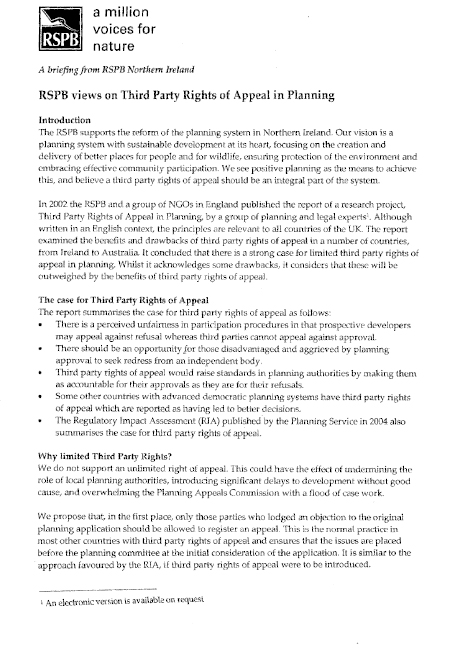
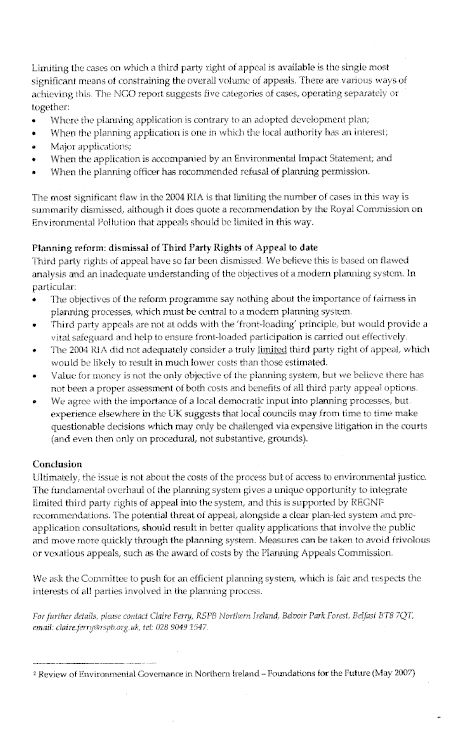
Following our presentation with the Planning Task Force to the Environment Committee on 27 January, and our attendance at the Committee’s stakeholder event on the same day, the RSPB wishes to submit some supplementary information to the Committee. We have provided suggestions for amendments the Committee may wish to table, or to seek further advice on from the Bill drafting team. These are suggestions only and have not been checked by a legal professional.
We believe the Departmental function should be to secure community wellbeing and sustainable development through proper planning. As a minimum, we recommend two amendments:
To extend the sustainable development duty to development management functions, an amendment to clause 5(1) is possible: “ Any person who exercise any function under this Part or Part III must exercise that function with the objective of securing sustainable development".
Climate change must be recognised as a key part of sustainable development and the planning system. This may be done through an amendment to clause 8(2) by adding a new subclause:
“(c) policies designed to secure that the development and use of land in the council’s area contribute to the mitigation of, and adaptation to, climate change"; and
(d) such other matters as may be prescribed.
The promised statutory link between local development plans and community planning has not been made. We believe the development plans should spatially express community planning outcomes, where these are sustainable and fit with national/regional planning and environment policy. This will save money on duplicated consultations, and mean that community views are incorporated.
One suggestion is to amend clause 8(5) by adding a new subclause:
“(c) the community plan"; and
(d) such other matters....
It may be necessary to also amend clause 9(6) in a similar way.
This is not a tax on development. We believe CIL is separate from what are commonly called ‘development contributions’, sought under clause 75. Clause 75 replaces Article 40 agreements, and we understand this to be in relation to infrastructure required specifically as a result of a particular development proposal by one or more developers. CIL is also separate from planning fees (currently being consulted on) which are solely to cover the costs of processing applications.
We understand CIL to be a levy made in recognition of the rise in land value that accrues from the granting of planning permission. It would be on a sliding scale, with small scale developments exempt. It would lessen the burden on individual applicants by removing the need for each developer to show a community contribution, often ad hoc and with inherent costs. Instead it has the advantage of benefits of scale, by allowing many smaller contributions to be pooled to deliver strategically identified infrastructural needs. Additional infrastructure is not always relevant on or near the development site, but is nevertheless required by the community. We believe this should extend to green infrastructure, such as open space and wildlife habitats with public benefits for amenity, flood protection and prevention, biodiversity etc.
Given the time constraints on this Bill, we propose the Committee considers an enabling amendment now that would allow further work on this in due course e.g. a new clause, perhaps at 77A.
77A. (1)The Department may make regulations providing for the imposition of a charge to be known as Community Infrastructure Levy (CIL).
(2) In making the regulations the Department shall aim to ensure that the overall purpose of CIL is to ensure that costs incurred in providing infrastructure to support the development of an area can be funded (wholly or partly) by owners or developers of land.
In the regulations, the Department would need to:
This suggested is based on a similar approach in England in the Planning Act 2008 (as amended).
To bring equity to environmental justice, and to ensure consequences if the (laudable) ‘front-loading’ approach to planning does not work, we recommend an amendment to clause 58 (or a new clause) to introduce a limited third party right of appeal. For example:
(1A) Where an application is made to a council-
(a) for planning permission to develop land; or
(b) for any consent, agreement or approval of the council required by a condition imposed on a grant of planning permission or
(c) for any approval of the council required under a development order;
then if that permission, consent, agreement or approval is granted, subject to certain circumstances, third parties as may by notice in writing appeal to the planning appeals commission.
(1B) ‘certain circumstances’ in paragraph (1A) are limited to, operating alone or in conjunction,-
(a) Major or regionally significant applications;
(b) Where the planning application is contrary to the provisions of the adopted local development plan;
(c) When the planning application is one in which the local authority has an interest;
(d) When the application is accompanied by an Environmental Impact Statement; or
(e) When the planning officer has recommended refusal of planning permission.
(1C) ‘third parties’ in paragraph (1A) are limited to only those parties who lodged an objection to the original application.
In addition, there could be a clause to ensure that vexatious or frivolous appeals are declined, or costs awarded against the appellant. This could be either as a further amendment to clause 58, or an additional clause 58A, or included in Part 9 regarding the Planning Appeals Commission e.g.
(X) (1) The PAC shall have an absolute discretion to dismiss an appeal–
(a) where, having considered the grounds of appeal, the PAC is of the opinion that the appeal—
(i) is vexatious, frivolous or without substance or foundation, or
(ii) is made with the sole intention of delaying the development or the intention of securing the payment of money, gifts, consideration or other inducement by any person, or
(b) where, the PAC is satisfied that, in the particular circumstances, the appeal should not be further considered by it having regard to—
(i) the nature of the appeal (including any question which in the PAC’s opinion is raised by the appeal), or
(ii) any previous permission which in its opinion is relevant.
(2) A decision made under this section shall state the main reasons and considerations on which the decision is based.
(3) The PAC may award costs against the appellant where (a)(i-ii) apply.[NB further detail would be required on how costs would be awarded, how much etc]
This proposal is based on section 138 of the Planning and Development Act 2000 in Ireland.
We recommend specifying that internationally designated sites may not be included in simplified planning zones by amending clause 38 to add (b)(iv) “declared as a special protection area or special area for conservation under the Conservation (Natural habitats etc) Regulations (NI) 1995 (as amended) or a wetland of international importance under the Ramsar Convention".
We recommend the inclusion of ‘nature conservation’ as a use for closed mineral works by adding it as point (iv) to 53(1)(b).
Our previous submission stands – we hope this supplementary information is useful to aid the Committee’s deliberations.
Contact: Claire Ferry, Senior Conservation Officer, RSPB Northern Ireland, Belvoir Park Forest, Belfast BT8 7QT, email: claire.ferry@rspb.org.uk, tel: 028 9049 1547
RSPB Parliamentary Briefing
January 2011
The RSPB and its one million plus members is part of a coalition of environmental and planning bodies which has come together to ensure that the natural environment is at the heart of planning reform. Our members and thousands of volunteers make it possible for us to do the work that we do and demonstrate people’s passion for a healthy natural environment.
Part 5 of the Localism Bill is a significant landmark in the Coalition Government’s planning reform agenda. In order to be the ‘greenest government ever’, the Bill should:
The Coalition Government has initiated fundamental reforms to the English planning system. At the same time it has set a tough agenda to revive the economy and cut public debt. Nevertheless, the planning challenge remains the same. The system must continue to protect and enhance the natural environment whilst ensuring its resilience and adaptation to climate change.
The purpose of planning must be to achieve sustainable development (as it is currently under s.39 of the Planning and Compulsory Purchase Act 2004, as amended). This means bringing about genuine improvements in environmental and social wellbeing. Across the UK we share the principle that we must live within environmental limits locally and globally. Planning is an essential tool for managing the use of our natural resources and for minimising the impacts of development on the environment.
The sustainable development purpose and climate change requirements introduced by previous planning acts do not appear to apply to neighbourhood plans. Sustainable development should be defined on the face of the Bill, and in more detail in the forthcoming National Planning Policy Framework (below). However, the Localism Bill should ensure that sustainable development, delivered within environmental limits, remains the purpose of planning, including neighbourhood planning.
The Coalition Government has proposed a national planning policy framework (NPPF) for England. This does not form part of the Localism Bill, but is an essential part of the package of planning reform. A strong national vision is essential to guard against the danger that localism becomes merely parochialism.
However, the Localism Bill does not provide a statutory basis for the national planning policy framework; the Government is relying instead on a general provision in the 2004 Act which refers to ‘national policies and advice contained in guidance by the Secretary of State’ (s.19(2)). This is inadequate for a document of this importance which will be subject to widespread public consultation and Parliamentary scrutiny, and does not clarify how the NPF will relate to other Government policy, or to development plans. The Localism Bill must provide a statutory basis for the national planning policy framework.
The natural environment cuts across administrative boundaries. In recent years, planning beyond the local level allowed for joint local authority policy development and greater involvement of partners in the delivery of positive outcomes. For example, the Thames Basin Heaths Delivery Plan involves 13 local authorities working together to deliver strategic mitigation for housing development in a sensitive environmental area. With the abolition of regional strategies, new models for local authority cooperation are needed to enable strategic planning across local authority boundaries.
Provisions already exist for local authorities to prepare joint strategies together. In clause 90, the Bill proposes a duty to cooperate between local planning authorities and other prescribed bodies (as yet undefined), but this seems little more than a duty to exchange information and views when preparing plans. Voluntary strategic planning risks strategic failure where contentious issues must be resolved across local authority boundaries. Local Enterprise Partnerships are unlikely to deliver the environmental planning that is needed.The Localism Bill must introduce new and effective arrangements for strategic planning across local authority boundaries, which deliver for the environment.
We welcome proposals to engage local people in planning, but there must be adequate checks to ensure that localism does not become parochialism and that powerful local interests do not hold sway over decisions which benefit wider societal and environmental interests. Planning gains its legitimacy as a decision-making process by being trusted. Local communities and voluntary groups should be involved at all stages in a process which must be as transparent, accountable and accessible as it is speedy and efficient.
The provisions in the Bill for neighbourhood planning are complex, and this may make it difficult for some community groups to get involved. We are also concerned about the representative nature of local forums; the cost, and resources available, for neighbourhood planning, especially the skills available for proper assessment (Strategic Environmental Assessment will be required, and in some cases, Habitats Regulations Assessment as well), and the status of independent assessors. Taken together, the proposals risk a ‘two tier’ outcome where only well-resourced communities can take part.
The Localism Bill must ensure that neighbourhood plans provide a fair and transparent approach to community participation and local decision-making, and protect and enhance local environments, whether protected by statutory designations or not.
Developers often have the advantage of a seat at the table and the resources to buy-in the right expertise. When a planning application is refused, a developer has the right to appeal against the decision, but this right is currently denied to third party objectors when planning permission is granted, even if the decision flies in the face of the local authority’s own development plan. Involving people at the early stage of planning is important and welcome, but a community right of appeal against decisions not in line with the local or neighbourhood plan is vital to give the Big Society and local planning real teeth.
The Localism Bill does not make any changes to the appeal system. We call on the Government to provide a limited community (third party) right of appeal.
The Bill presents an opportunity to amend the Planning Act 2008, to ensure that national planning policy in the devolved administrations is followed in decisions on Nationally Significant Infrastructure Projects, where relevant policy exists. This would address a conflict highlighted by planning policy for onshore windfarms in Wales. The Welsh Assembly Government’s Planning Policy Wales 2010 and Technical Advice Note 8 (2005) establish a spatial planning approach to the deployment of onshore wind, with seven ‘strategic search areas’ identified as the most appropriate areas for such development. The draft National Policy Statement for Renewable Energy is not spatial, and could have the perverse effect of encouraging developments considered to be of national significance (>50 MW) outside the areas identified by the Welsh Assembly Government. The Localism Bill should amend the Planning Act 2008 to ensure that decisions on nationally significant infrastructure projects in Wales are consistent with the planning policy of the Welsh Assembly Government.
For further information please contact Tom Fewins, Senior Parliamentary Officer,
or Simon Marsh, Head of Planning and Regional Policy, on 0207 8081251 or
tom.fewins@rspb.org.uk

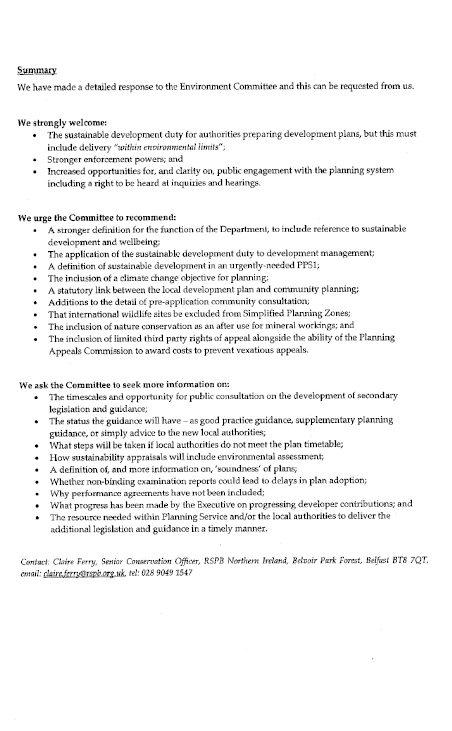
Community Places Supplementary Response to Consultation on the Draft Planning Bill
We were invited by the Assembly Environment Committee to present evidence on 27 January 2011. Following this we have prepared this supplementary submission to provide further comments on the following issues:
1. Independent examinations of development plans;
2. Community infrastructure levy;
3. Limited third party right of appeal.
We have some doubt about the proposal in the Bill in section 10 (4) which would enable the Department to appoint a person other than the Planning Appeals Commission (PAC) to carry out an independent examination of a Council’s Development Plan. The independence of the PAC derives in part from its appointment by OFMDFM rather than the Planning Service or Department. In order to maintain confidence in the PAC’s independence within the new arrangements it will be important to retain this role for OFMDFM.
We recommend to the Environment Committee that section 10 (4) (b) be amended with the substitution of OFMDFM for the Department and thus to read as follows:
“(b) A person appointed by the Office of the First and Deputy First Minister"
Currently the Planning Bill does not provide enabling powers for a Community Infrastructure Levy (CIL). The Department’s 2010 report of the Planning Reform public consultation process records that: 71% of respondents agreed that developers should make a greater contribution towards the provision of infrastructure; 21 of the local councils and NILGA welcomed the principle of increased developer contributions and 43% of developers agreed there is a case for increased contributions while one third did not. In order to provide greater certainty and clarity on this issue for both developers and the public and to ensure that developments contribute equitably to wider the infrastructure costs a Community Infrastructure Levy was introduced in England and Wales by the 2008 Planning Act.
The main features of an Infrastructure Levy are:
Under the new Localism Bill in England the Levy will in future be available for the maintenance and upkeep of infrastructure and also for community facilities in localities near to new developments. Staged payments of the Levy are also being introduced.
Planning agreements (also called developer contributions) have been retained in England and Wales alongside the Levy but are restricted to works which:
We recommend to the Environment Committee that a new section is inserted in the Planning Bill to enable the Department to introduce a Levy at a future date with the agreement of the Executive and following consultation. The new section should read:
“The Department may make regulations providing for the imposition of a charge to be known as Community Infrastructure Levy (CIL). In making such regulations the Department should aim to ensure that the overall purpose of a Levy is to ensure that costs incurred in providing infrastructure to support the development of an area can be funded (wholly or partly) by owners or developers of land following the granting of planning approval “
We support a limited third party right of appeal for the following reasons:
Third Party Right of Appeal (TPRA) should only apply to:
1. Major developments (as defined under the Bill);
2. Developments where the local council has an interest or has approved an application contrary to the recommendation of its professional planners;
3. Developments which are subject to an Environmental Impact Assessment;
Anyone seeking to exercise the right to a third party appeal should demonstrate the soundness of their case. This soundness test would include showing fit with planning policies including the development plan and that the appeal was not being taken for financial or commercial gain. It should be introduced for a trial period of five years when planning functions are transferred. It would thus act as a confidence building measure and an incentive for quality in decision making.
We recommend to the Environment Committee that a new section is inserted in the Planning Bill to enable the Department to introduce a Third Party Right of Appeal as follows:
“An applicant for permission and any person who made submission or observations in writing in relation to the planning application to the planning authority in accordance with regulations and on payment of the appropriate fee, may at any time before the expiration of the appropriate period, appeal to the Planning Appeals Commission against a decision of a planning authority.
(1) The Commission shall have an absolute discretion to dismiss an appeal:
(a) Where, having considered the grounds of appeal, the Commission is of the opinion that the appeal—
(i) Is vexatious, frivolous or without substance or foundation; or
(ii) Is made with the sole intention of delaying the development or the intention of securing the payment of money, gifts, consideration or other inducement by any person; or
(iii) Is not based on sound planning grounds including planning policies and the relevant development plan; or
(b) Where the Commission is satisfied that, in the particular circumstances, the appeal should not be further considered by it having regard to—
(i) The nature of the appeal (including any question which in the PAC’s opinion is raised by the appeal), or
(ii) Any previous permission which in its opinion is relevant.
(2) A decision made under this section shall state the main reasons and considerations on which the decision is based."
Community Places
31 January 2011
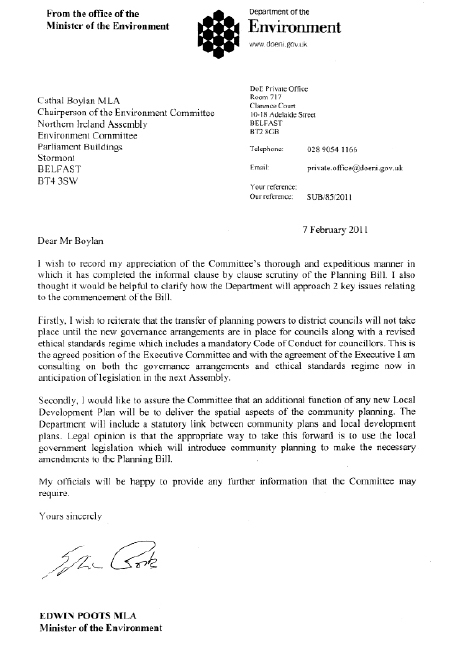
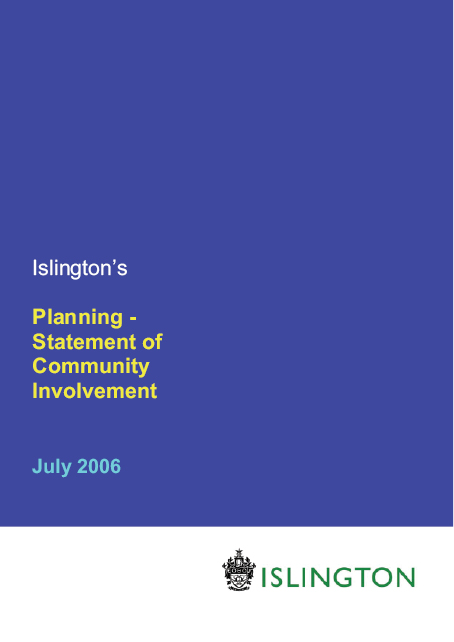

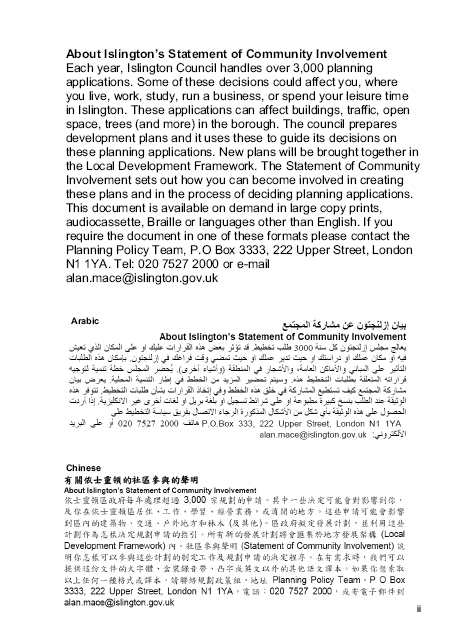
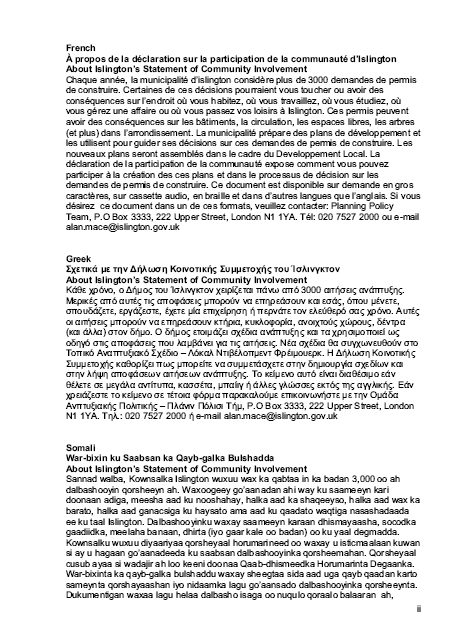

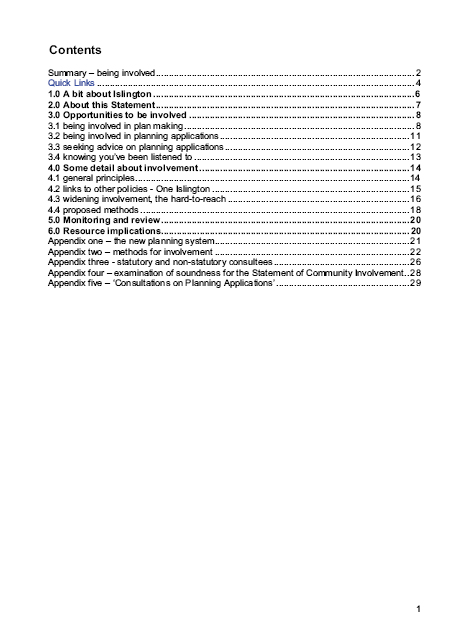

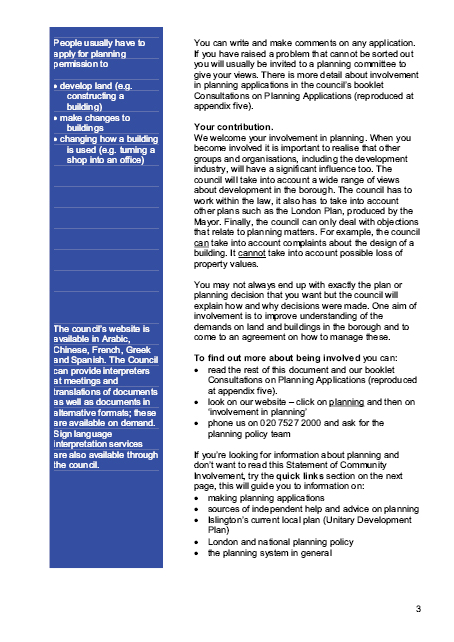
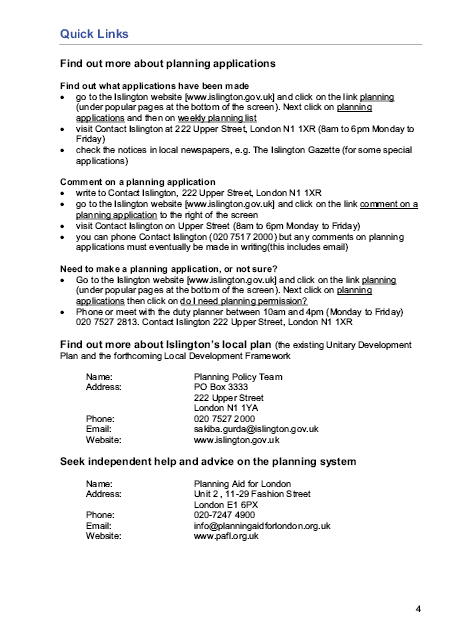
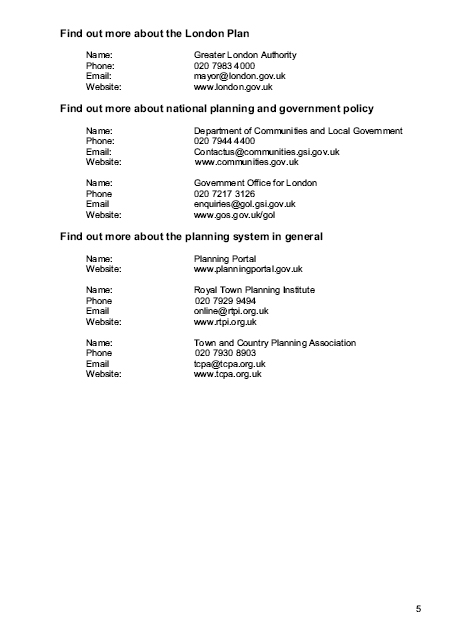
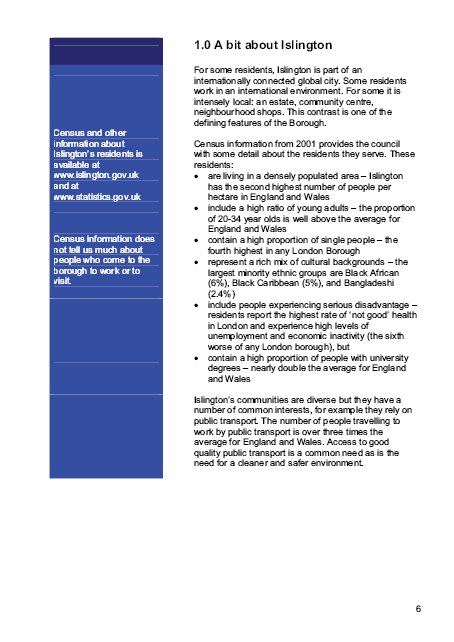
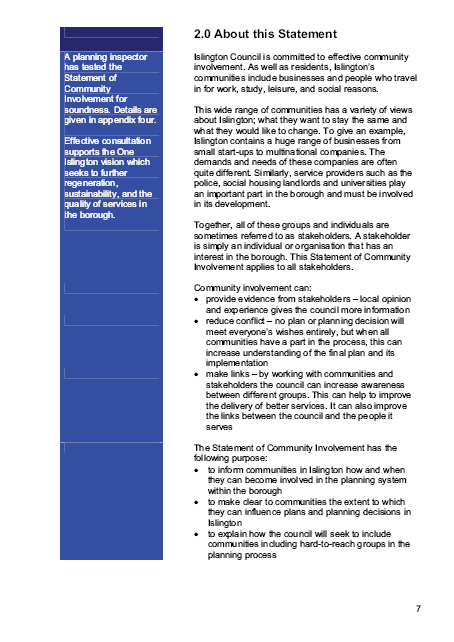
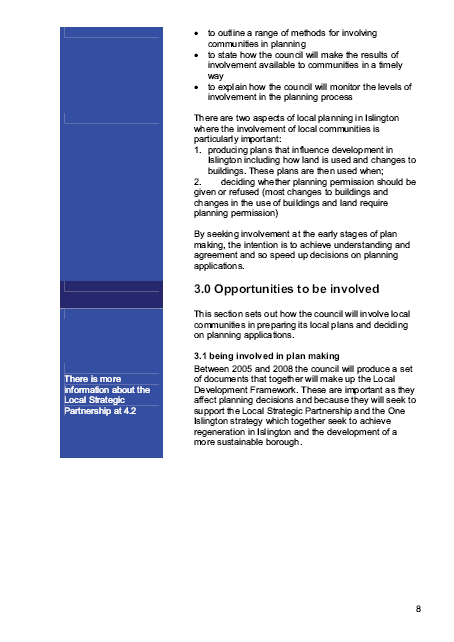
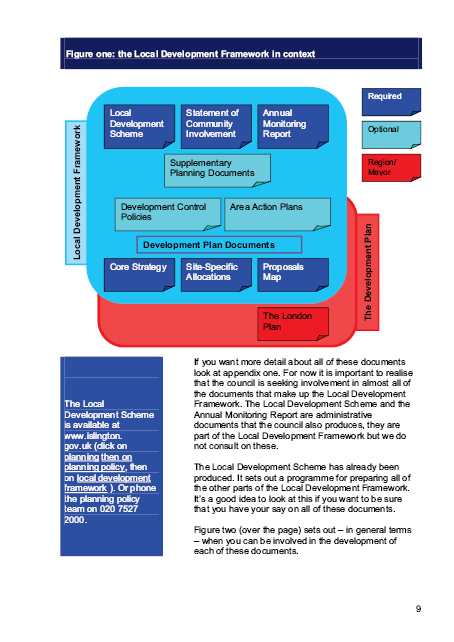
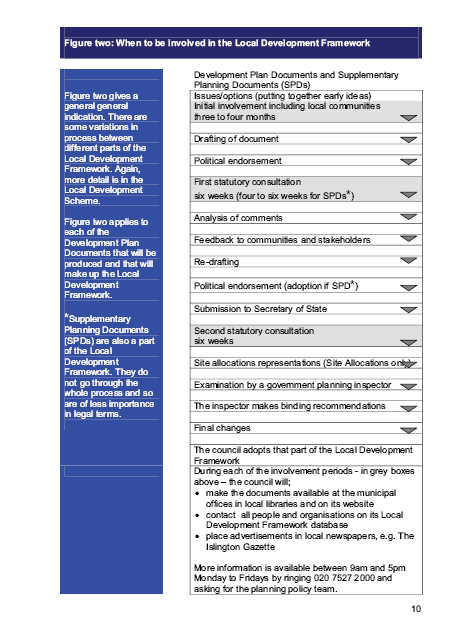

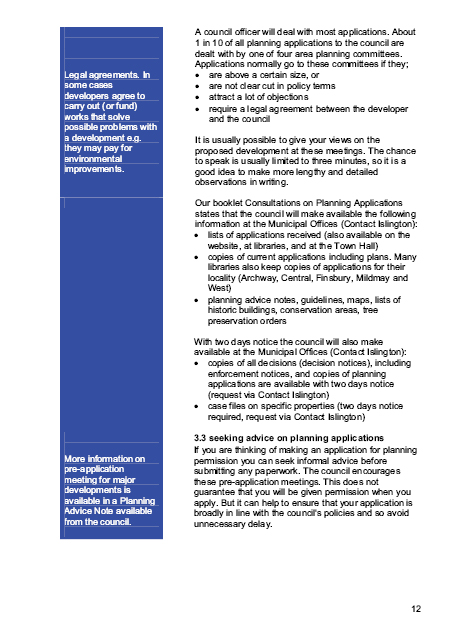



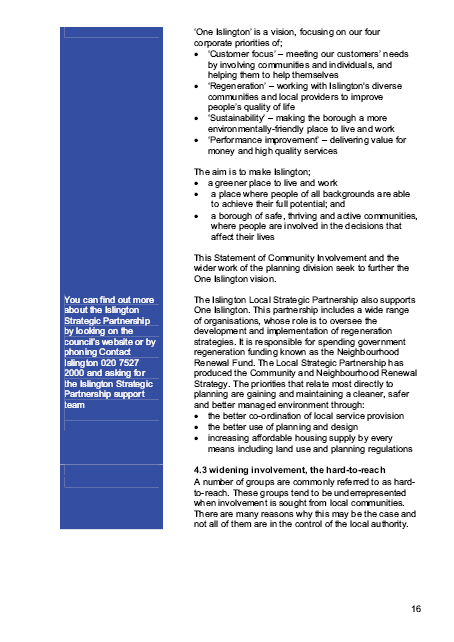
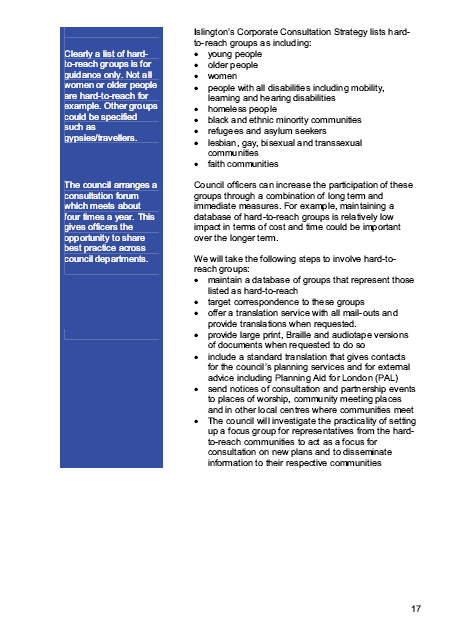

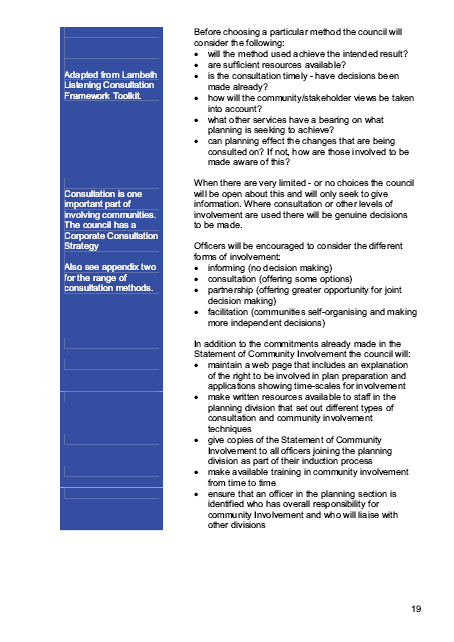
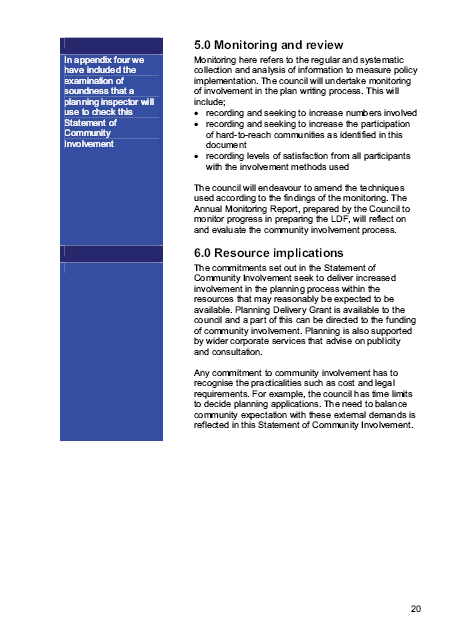
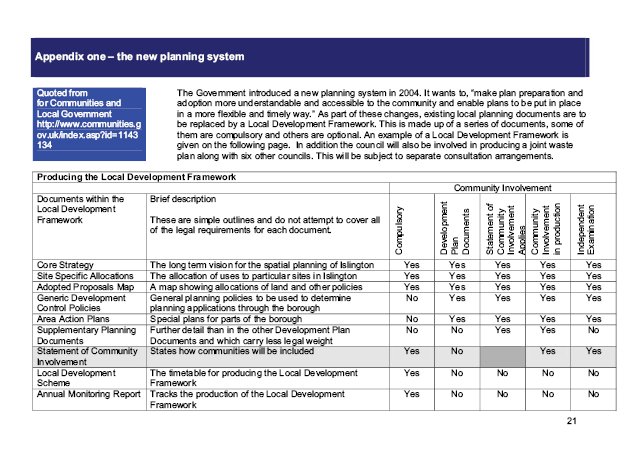
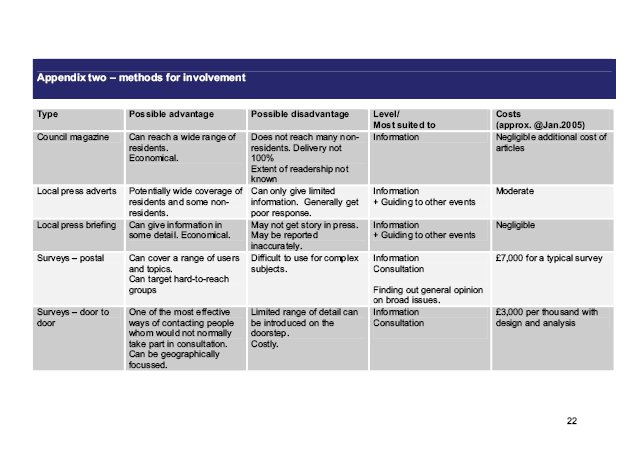





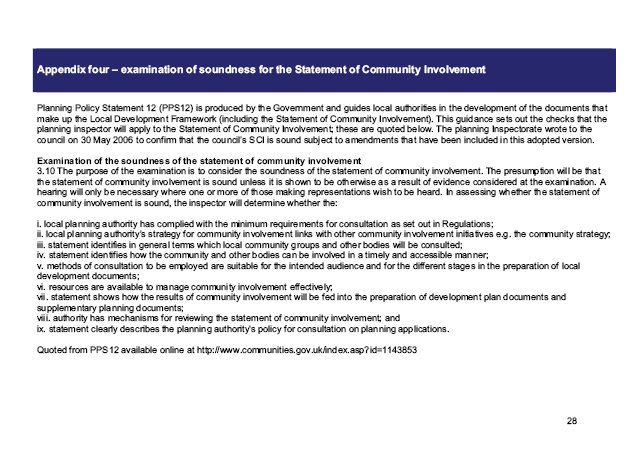

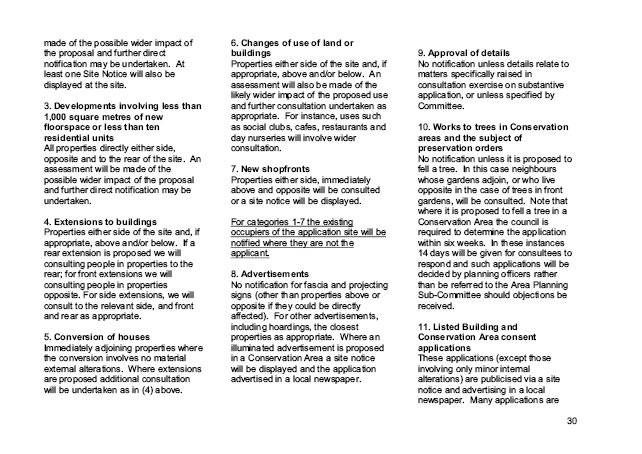

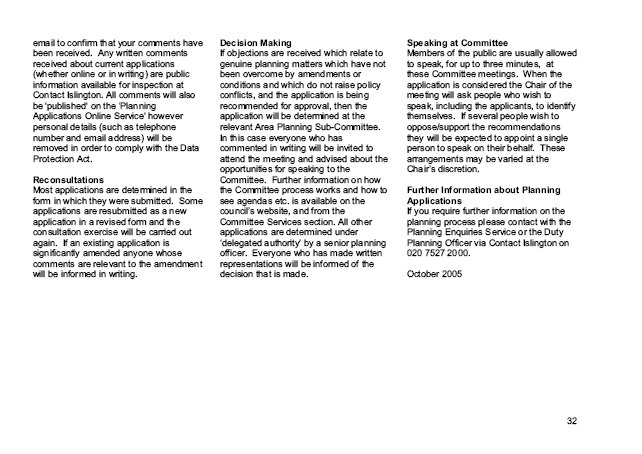




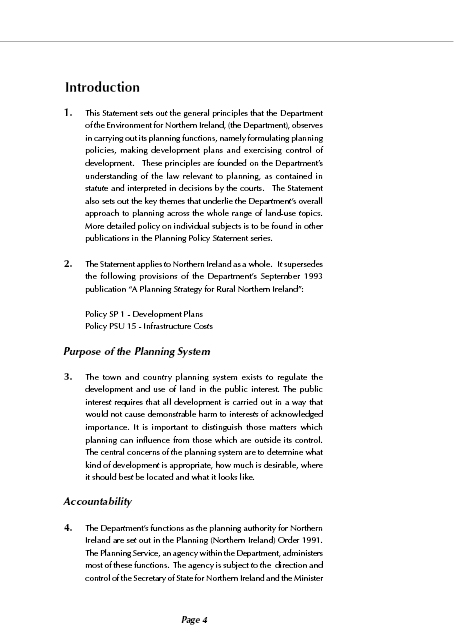
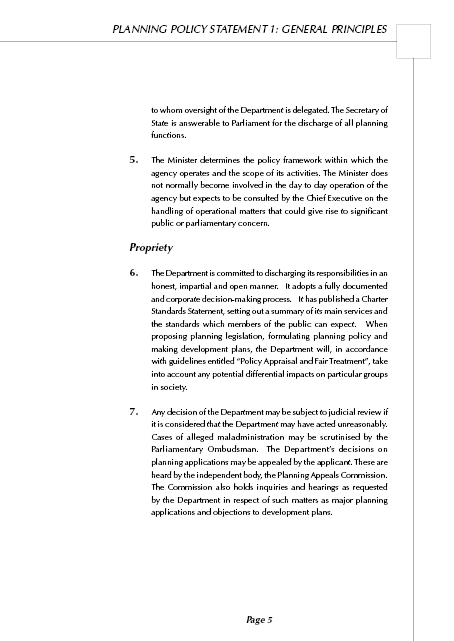


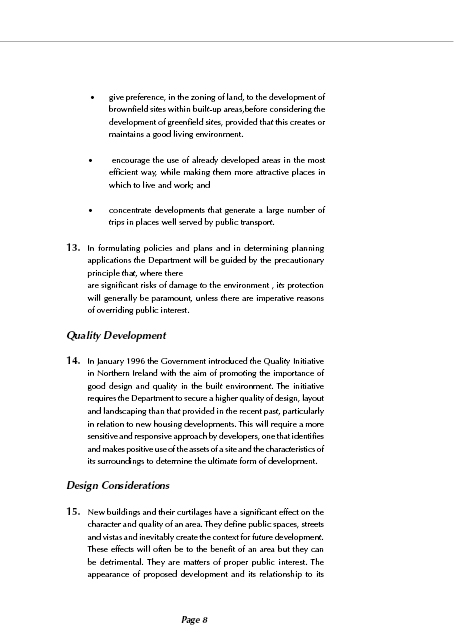
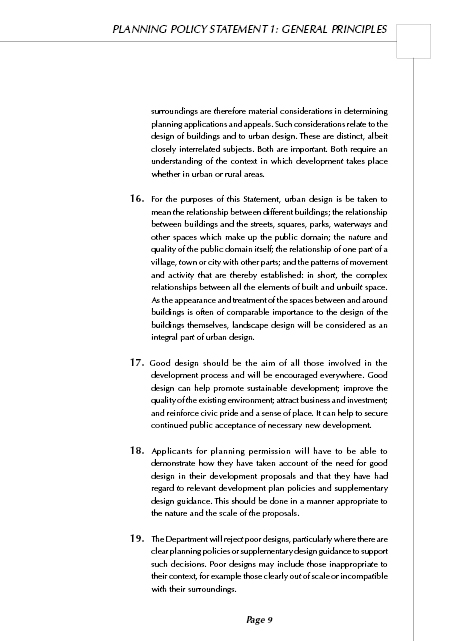
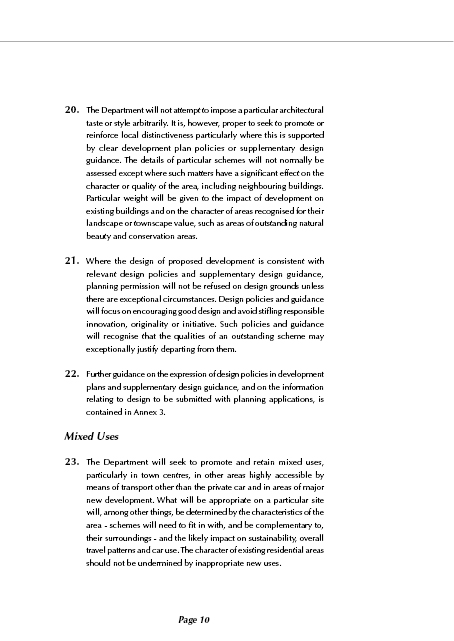

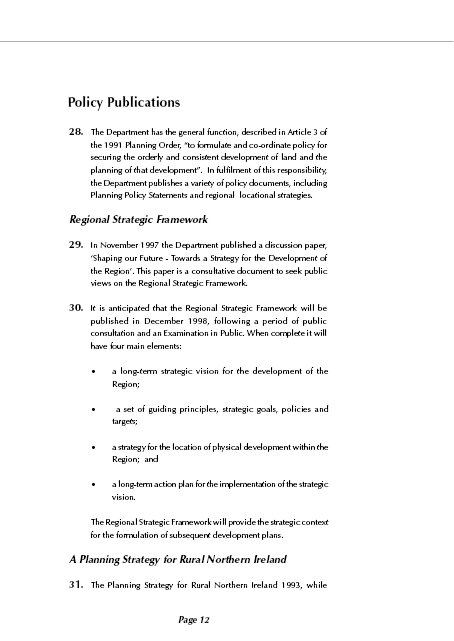
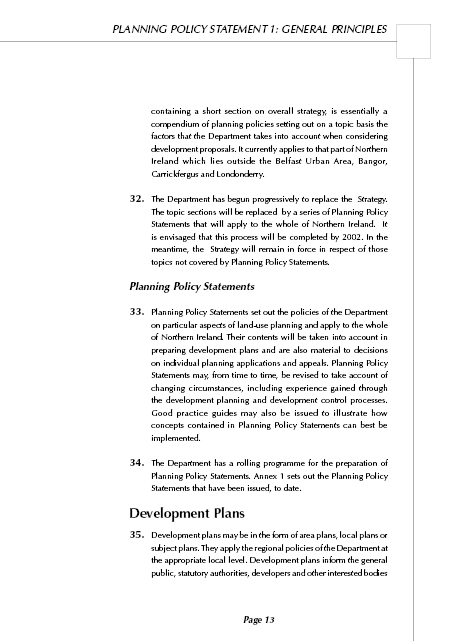
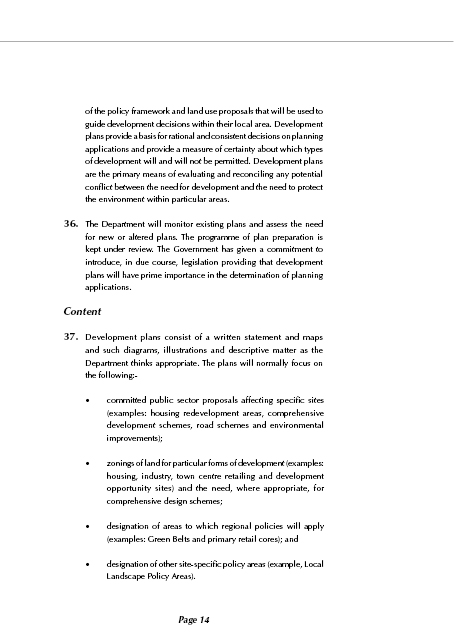

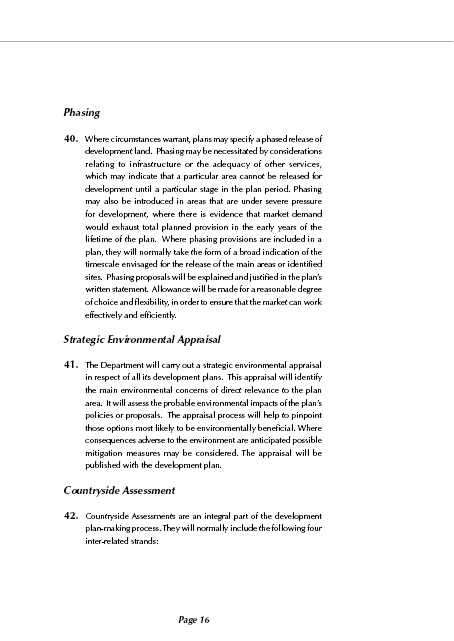

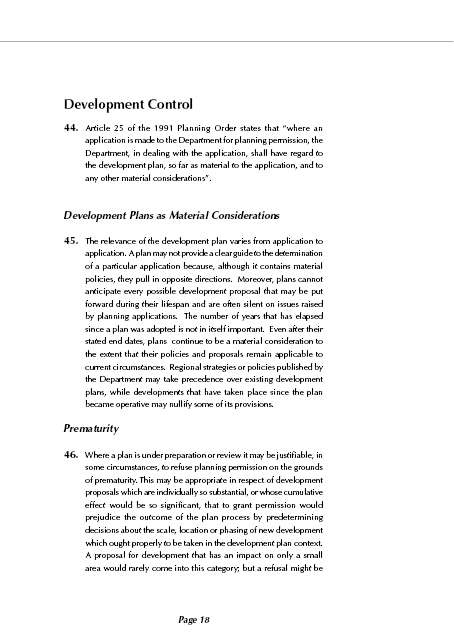
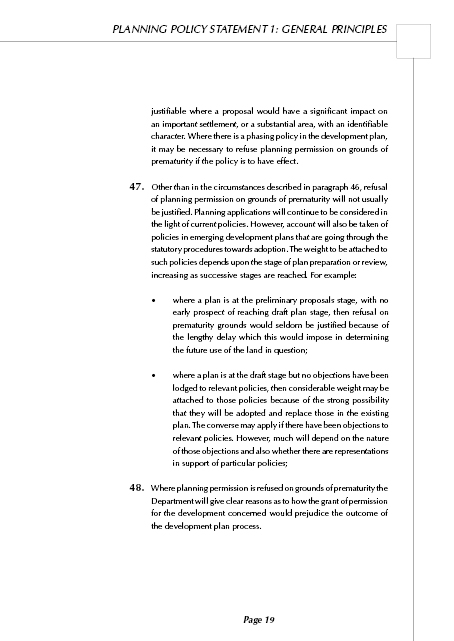

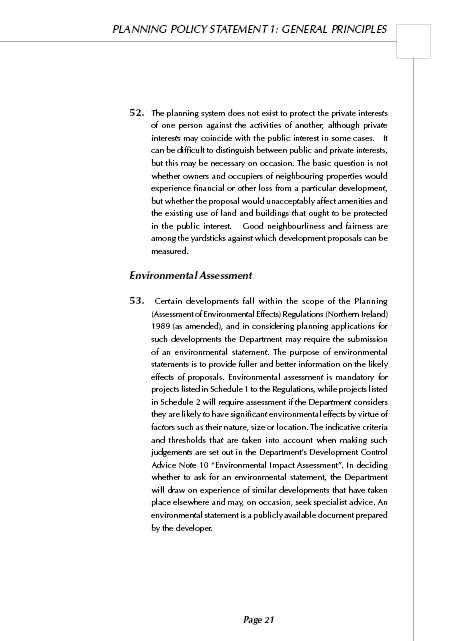

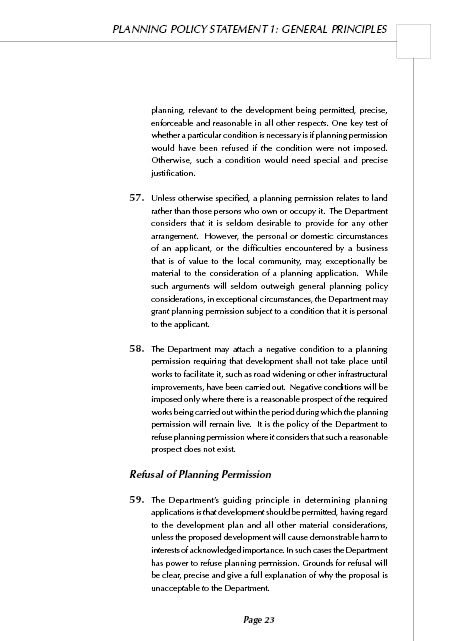
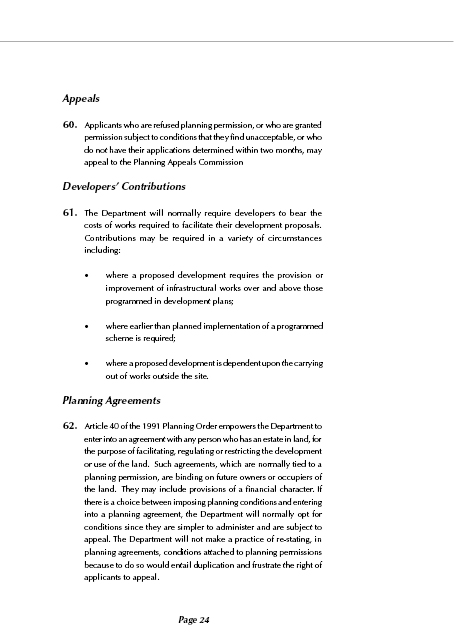
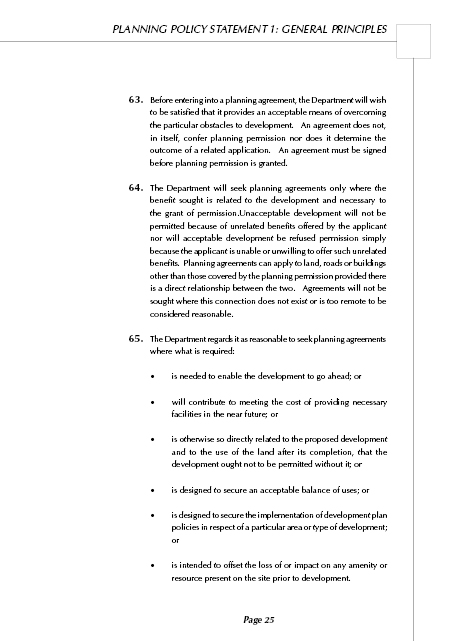

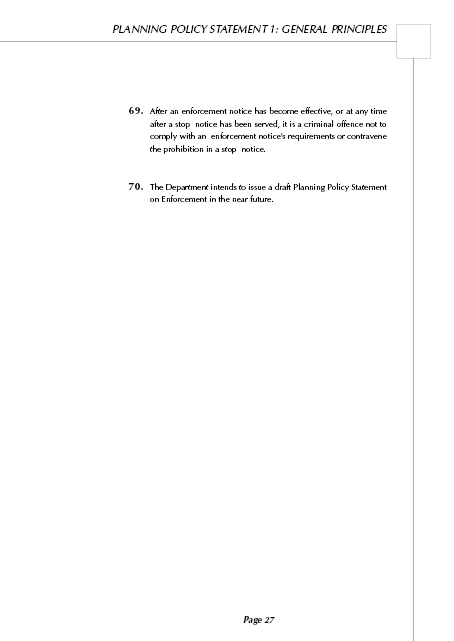
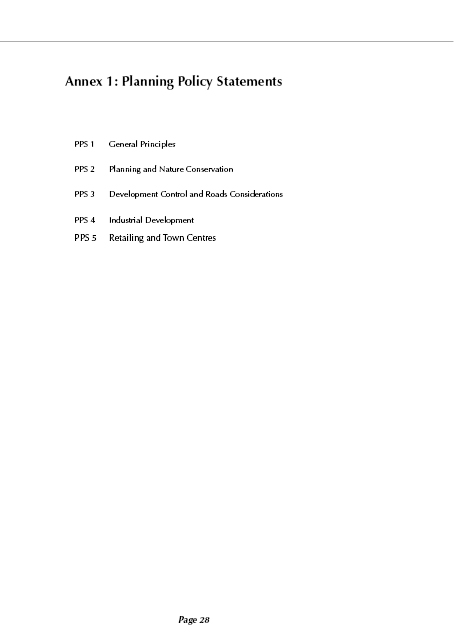
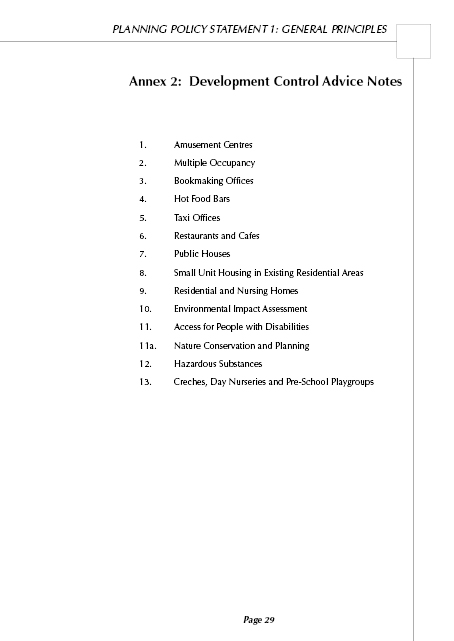
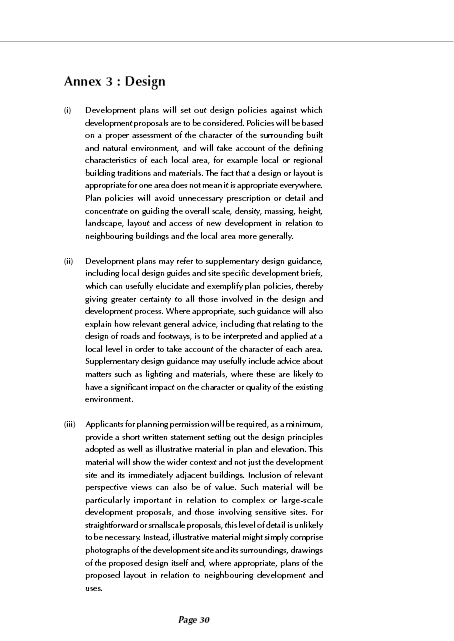
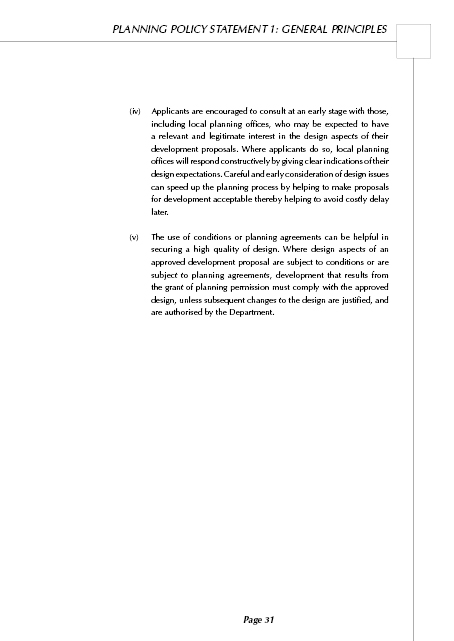


Department for Communities and Local Government
Eland House
Bressenden Place
London
SW1E 5DU
Telephone: 0303 444 0000
Website: www.communities.gov.uk
© Crown Copyright, 2010
Copyright in the typographical arrangement rests with the Crown.
This publication, excluding logos, may be reproduced free of charge in any format or medium for research, private study or for internal circulation within an organisation. This is subject to it being reproduced accurately and not used in a misleading context. The material must be acknowledged as Crown copyright and the title of the publication specified.
Any other use of the contents of this publication would require a copyright licence. Please apply for a Click-Use Licence for core material at www.opsi.gov.uk/click-use/system/online/pLogin.asp, or by writing to the Office of Public Sector Information, Information Policy Team, Kew, Richmond, Surrey TW9 4DU
e-mail: licensing@opsi.gov.uk
If you require this publication in an alternative format please email alternativeformats@communities.gsi.gov.uk
Communities and Local Government Publications
Tel: 0300 123 1124
Fax: 0300 123 1125
Email: product@communities.gsi.gov.uk
Online via the Communities and Local Government website: www.communities.gov.uk
November 2010
ISBN: 978-1-4098-2550-0
Introduction
Setting the Community Infrastructure Levy charge
Procedure for setting the Community Infrastructure Levy charge
How will the Community Infrastructure Levy be applied?
The relationship between the Community Infrastructure Levy and planning obligations
This overview document replaces the previous overview document published March 2010
Introduction
1. This document provides an overview of the Community Infrastructure Levy, a new planning charge that came into force on 6 April 2010 through the Community Infrastructure Levy Regulations 2010. It is not guidance issued by the Secretary of State, but explains the key features of the new charge, its rationale, purpose and how it will work in practice. The document is designed to inform all those who have an interest in the levy and who might be involved in its operation. The Government will issue guidance on specific aspects of establishing and running a Community Infrastructure Levy regime.
2. The Community Infrastructure Levy (the levy) came into force in April 2010. It allows local authorities in England and Wales to raise funds from developers undertaking new building projects in their area. The money can be used to fund a wide range of infrastructure that is needed as a result of development. This includes transport schemes, flood defences, schools, hospitals and other health and social care facilities, parks, green spaces and leisure centres.
3. The Community Infrastructure Levy charging authorities (charging authorities) in England will be district and metropolitan district councils, London borough councils, unitary authorities, national park authorities, The Broads Authority and the Mayor of London. In Wales, the county and county borough councils and the national park authorities will have the power to charge the levy. These bodies all prepare development plans for their areas, which are informed by assessments of the infrastructure needs for which the levy may be collected.
4. The Government has decided that this tariff-based approach provides the best framework to fund new infrastructure to unlock land for growth. The Community Infrastructure Levy is fairer, faster and more certain and transparent than the system of planning obligations which causes delay as a result of lengthy negotiations. Levy rates will be set in consultation with local communities and developers and will provide developers with much more certainty ‘up front’ about how much money they will be expected to contribute.
Under the system of planning obligations only six per cent of all planning permissions brought any contribution to the cost of supporting infrastructure[1], when even small developments can create a need for new services. The levy creates a fairer system, with all but the smallest building projects making a contribution towards additional infrastructure that is needed as a result of their development.
5. The Community Infrastructure Levy also has far greater legal certainty. It provides the basis for a charge in a manner that the planning obligations system alone could not easily achieve; enabling, for example, the mitigation of cumulative impacts from development.
6. Almost all development has some impact on the need for infrastructure, services and amenities - or benefits from it - so it is only fair that such development pays a share of the cost. It is also right that those who benefit financially when planning permission is given should share some of that gain with the community which granted it to help fund the infrastructure that is needed to make development acceptable and sustainable.
7. However, developers should have more certainty as to what they will be expected to contribute, thus speeding up the development process, and that the money raised from developer contributions should be spent in a way that developers will feel worthwhile; namely, on infrastructure to support development and the creation of sustainable communities set out in the Local Development Framework. This is what the levy will do.
8. The introduction of the levy has the potential to raise an estimated additional £700 million pounds a year of funding for local infrastructure by 2016 (the Impact Assessment on the Community Infrastructure Levy published on 10 February 2010 sets out further details).The levy will make a significant contribution to infrastructure provision. The levy is intended to fill the funding gaps that remain once existing sources (to the extent that they are known) have been taken into account. Local authorities will be able to look across their full range of funding streams and decide how best to deliver their infrastructure priorities, including how to utilise revenue from the levy. This flexibility to mix funding sources at a local level will enable local authorities to be more efficient in delivering the outcomes that local communities want.
9. Local authorities are required to spend the levy’s revenue on the infrastructure needed to support the development of their area and they will decide what infrastructure is needed. The levy is intended to focus on the provision of new infrastructure and should not be used to remedy pre-existing deficiencies in infrastructure provision unless those deficiencies will be made more severe by new development. The levy can be used to increase the capacity of existing infrastructure or to repair failing existing infrastructure, if that is necessary to support development.
The Government will require charging authorities to allocate a meaningful proportion of levy revenues raised in each neighbourhood back to that neighbourhood. This will ensure that where a neighbourhood bears the brunt of a new development, it receives sufficient money to help it manage those impacts. It complements the introduction of other powerful new incentives for local authorities that will ensure that local areas benefit from development they welcome. Local authorities will need to work closely with neighbourhoods to decide what infrastructure they require, and balance neighbourhood funding with wider infrastructure funding that supports growth. They will retain the ability to use the levy income to address the cumulative impact on infrastructure that may occur further away from the development. |
10. Charging authorities will be able to use revenue from the levy to recover the costs of administering the levy, with the regulations permitting them to use up to 5 per cent of their total revenue on administrative expenses to ensure that the overwhelming majority of revenue from the levy is directed towards infrastructure provision. Where a collecting authority has been appointed to collect a charging authority’s levy, as will be the case in London where the boroughs will collect the Mayor’s levy, the collecting authority may keep up to 4 per cent of the revenue from the levy to fund their administrative costs, with the remainder available to the charging authority up to the 5 per cent ceiling.
11. The Planning Act 2008 provides a wide definition of the infrastructure which can be funded by the levy, including transport, flood defences, schools, hospitals, and other health and social care facilities. This definition allows the levy to be used to fund a very broad range of facilities such as play areas, parks and green spaces, cultural and sports facilities, district heating schemes and police stations and other community safety facilities. This gives local communities flexibility to choose what infrastructure they need to deliver their development plan.
12. The regulations rule out the application of the levy for providing affordable housing because the Government considers that planning obligations remain the best way of delivering affordable housing. Planning obligations enable affordable housing contributions to be tailored to the particular circumstances of the site and crucially, enable affordable housing to be delivered on-site.
13. In London, the regulations restrict spending by the Mayor to funding roads or other transport facilities, including Crossrail to ensure a balance between the spending priorities of the boroughs and the Mayor.
14. Charging authorities may pass money to bodies outside their area to deliver infrastructure which will benefit the development of their area, such as the Environment Agency for flood defence or, in two tier areas, the county council, for education infrastructure.
15. If they wish, charging authorities will also be able to collaborate and pool their revenue from their respective levies to support the delivery of ‘sub-regional infrastructure’, for example, a larger transport project where they are satisfied that this would support the development of their own area.
16. It is important that the infrastructure needed by local communities is delivered when the need arises. Therefore, the regulations allow authorities to use the levy to support the timely provision of infrastructure, for example, by using the levy to backfill early funding provided by another funding body.
17. The regulations also include provision to enable the Secretary of State to direct that authorities may ‘prudentially’ borrow against future income from the levy, should the Government conclude that, subject to the overall fiscal position, there is scope for local authorities to use revenue from the levy to repay loans used to support infrastructure.
18. To ensure that the levy is open and transparent, charging authorities must prepare short reports on the levy for the previous financial year which must be placed on their websites by 31 December each year. They may prepare a bespoke report or utilise an existing reporting mechanism, such as the Annual Monitoring Report which reports on their development plan.
19. These reports will ensure accountability and enable the local community to see what infrastructure is being funded from the levy. Charging authorities must report how much revenue from the levy they received in the last financial year and how much revenue was unspent at the end of the financial year. They must also report total expenditure from the levy in the preceding financial year, with summary details of what infrastructure the levy funded and how much of the levy was ‘spent’ on each item of infrastructure.
Setting the Community Infrastructure Levy charge
20. Charging authorities should normally implement the levy on the basis of an up-to-date development plan or the London Plan for the Mayor’s levy. A charging authority may use a draft plan if they are planning a joint examination of their core strategy or Local Development Plan and their Community Infrastructure Levy charging schedule.
21. Charging authorities wishing to charge the levy must produce a charging schedule setting out the levy’s rates in their area. Charging schedules will be a new type of document within the folder of documents making up the local authority’s Local Development Framework in England, sitting alongside the Local Development Plan in Wales and the London Plan in the case of the Mayor’s levy. In each case, charging schedules will not be part of the statutory development plan.
22. Charging authorities wishing to introduce the levy should propose a rate which does not put at serious risk the overall development of their area. They will need to draw on the infrastructure planning that underpins the development strategy for their area. Charging authorities will use that evidence to strike an appropriate balance between the desirability of funding infrastructure from the levy and the potential effects of the levy upon the economic viability of development across their area.
23. In setting their proposed rates for the levy, charging authorities should identify the total infrastructure funding gap that the levy is intended to support, having taken account of the other sources of available funding. They should use the infrastructure planning that underpinned their development plan to identify a selection of indicative infrastructure projects or types of infrastructure that are likely to be funded by the levy. If a charging authority considers that the infrastructure planning underpinning its development plan is weak, it may undertake some additional bespoke infrastructure planning to identify its infrastructure funding gap. In order to provide flexibility for charging authorities to respond to changing local circumstances over time, charging authorities may spend their revenue from the levy on different projects from those identified during the rate setting process.
24. Charging authorities will need to strike an appropriate balance between the desirability of funding infrastructure from the levy and the potential effects of the imposition of the levy upon the economic viability of development across their area. Charging authorities should prepare evidence about the effect of the levy on economic viability in their area to demonstrate to an independent examiner that their proposed rates, for the levy, strike an appropriate balance.
25. In practice, charging authorities may need to sample a limited number of sites in their areas and in England, they may want to build on work undertaken to inform their Strategic Housing Land Availability Assessments. Charging authorities that decide to set differential rates may need to undertake more fine-grained sampling to help them to estimate the boundaries for their differential rates.
26. A London borough setting their levy must take into account any levy rates that have been set by the Mayor of London. Allowing both the Mayor and the boroughs to charge the levy will enable the levy to support the provision of both local and strategic infrastructure in London.
27. Charging schedules may include differential rates, where they can be justified either on the basis of the economic viability of development in different parts of the authority’s area or by reference to the economic viability of different types of development within their area. The ability to set differential rates gives charging authorities more flexibility to deal with the varying circumstances within their area, for example where an authority’s land values vary between an urban and a rural area.
Procedure for setting the charge
28. The process for preparing a charging schedule is similar to that which applies to development plan documents in England and Local Development Plans in Wales. Charging authorities are also able to work together when preparing their charging schedules.
29. Charging authorities must consult local communities and stakeholders on their proposed rates for the levy in a preliminary draft of the charging schedule. Then, before being examined, a draft charging schedule must be formally published for representations for a period of at least four weeks. During this period any person may request to be heard by the examiner. If a charging authority makes any further changes to the draft charging schedule after it has been published for representations, any person may request to be heard by the examiner, but only on those changes, during a further four-week period.
30. A charging schedule must be examined in public by an independent person appointed by the charging authority. Any person requesting to be heard before the examiner at the examination, must be heard in public. The format for the levy’s examination hearings will be similar to those for development plan documents and the independent examiner may determine the examination procedures and set time limits for those wishing to be heard to ensure that the examination is conducted in an efficient and effective manner.
31. Where a charging authority has chosen to work collaboratively with other charging authorities, they may opt for a joint examination of their charging schedule with those of the other charging authorities. In addition, an examination of one or more charging schedules may be conducted as an integrated examination with a draft development plan document.
32. The independent examiner will be able to recommend that the draft charging schedule should be approved, rejected, or approved with specified modifications and must give reasons for those recommendations. A charging schedule may be approved subject to modifications if the charging authority has complied with the legislative requirements, but for example, the proposed rate for the levy does not strike an appropriate balance given the evidence.
33. The independent examiner should reject a charging schedule if the charging authority has not complied with an aspect of the legislation (and this cannot be addressed by modifications), or if it is not based on appropriate available evidence. The examiner’s recommendations will be binding on the charging authority, which means that the charging authority must make any modifications recommended if they intend to adopt the charging schedule and cannot adopt a schedule if the examiner rejects it. However, the charging authority is not under an obligation to adopt the final charging schedule, but can, if it prefers, submit a revised charging schedule to a fresh examination.
The Government will include provisions in the Localism Bill to limit the binding nature of the examiners’ reports on levy rates. Currently, an examiner scrutinises a council’s levy rates, and all changes that they request are binding, including the rates set for specific areas or types of development. Under the new provisions examiners will only be able to ensure councils do not set unreasonable charges. Councils will be required to correct charges that examiners consider to be unreasonable, but they will have more discretion on how this is done – for example, they could depart from the detail of the examiner’s recommendations on the mix of charges to be applied to different classes of development or the rates to be applied in different parts of their area. |
34. To ensure democratic accountability, the charging schedule must be formally approved by a resolution of the full council of the charging authority. In London, the Mayor must make a formal decision to approve his or her charging schedule.
35. In order to ensure that the correct rate for a levy is charged, certain errors in the charging schedule may be corrected for a period of up to six months after the charging schedule has been approved. If the charging authority corrects errors it must republish the charging schedule.
36. Charging authorities should keep their charging schedules under review (although there is no fixed end date). Charging authorities may formally resolve to cease charging the levy at any time through a resolution of the full council.
How will the Community Infrastructure Levy be applied?
37. Most buildings that people normally use will be liable to pay the levy. But buildings into which people do not normally go, and buildings into which people go only intermittently for the purpose of inspecting or maintaining fixed plant or machinery, will not be liable to pay the levy. Structures which are not buildings, such as pylons and wind turbines, will not be liable to pay the levy. The levy will not be charged on changes of use that do not involve an increase in floorspace.
38. The levy must be charged in pounds per square metre on the net additional increase in floorspace of any given development. This will ensure that charging the levy does not discourage the redevelopment of sites.
39. Any new build – that is a new building or an extension – is only liable to pay the levy if it has 100 square metres, or more, of gross internal floorspace or involves the creation of one dwelling even when that is below 100 square metres. While any new build over this size will be subject to the levy, the gross floorspace of any existing buildings on the site that have been recently in use and are going to be demolished will be deducted from the final liability. To ensure the levy is cost effective to collect, any final net charge less than £50 must not be pursued by the charging authority.
40. In calculating individual charges for the levy, charging authorities will be required to apply an annually updated index of inflation to keep the levy responsive to market conditions. The index will be the national All-In Tender Price Index of construction costs published by the Building Cost Information Service of The Royal Institution of Chartered Surveyors.
41. The levy will be charged on new builds permitted through some form of planning permission. Examples are planning permissions granted by a local planning authority or a consent granted by the Infrastructure Planning Commission. However, some new builds rely on permitted development rights under the General Permitted Development Order 1995. There are also local planning orders that grant planning permission, for example Simplified Planning Zones and Local Development Orders. Finally, some Acts of Parliament grant planning permission for new builds: the Crossrail Act 2008 is one such Act. The levy will apply to all these types of planning consent.
42. The planning permission identifies the buildings that will be liable for a Community Infrastructure Levy charge: the ‘chargeable development’. The planning permission also defines the land on which the chargeable buildings will stand, the ‘relevant land’.
43. Collection of the levy will be carried out by the ‘Community Infrastructure Levy collecting authority’. In most cases this will be the charging authority but, in London, the boroughs will collect the levy on behalf of the Mayor. County councils will collect the levy charged by districts on developments for which the county gives consent. The Homes and Communities Agency, Urban Development Corporations and Enterprise Zone Authorities can also be collecting authorities for development where they grant permission, if the relevant charging authority agrees.
44. The levy’s charges will become due from the date that a chargeable development is commenced in accordance with the terms of the relevant planning permission. The definition of commencement of development for the levy’s purposes is the same as that used in planning legislation, unless planning permission has been granted after commencement.
45. When planning permission is granted, the collecting authority will issue a liability notice setting out the amount of the levy that will be due for payment when the development is commenced, the payment procedure and the possible consequences of not following this procedure. The payment procedure encourages someone to assume liability to pay the levy before development commences. Where liability has been assumed, and the collecting authority has been notified of commencement, parties liable to pay the levy will benefit from a 60 day window in which they can make payment.
46. Where the charge is over £10,000, the liable parties will be able to pay the levy within a series of instalment periods from the commencement date. The number of instalments will vary, depending on the size of the amount due. If the payment procedure is not followed, payment will become due in full.
The Government will introduce changes to the Community Infrastructure Levy Regulations to free up payment arrangements. Local authorities will be able to decide their own levy payment deadlines and whether to offer the option of paying by instalments. |
47. The responsibility to pay the levy runs with the ownership of land on which the liable development will be situated. This is in keeping with the principle that those who benefit financially when planning permission is given should share some of that gain with the community. That benefit is transferred when the land is sold with planning permission, which also runs with the land. The regulations define landowner as a person who owns a ‘material interest’ in the relevant land. ‘Material interests’ are owners of freeholds and leaseholds that run for more than seven years after the day on which the planning permission first permits development.
48. Although ultimate liability rests with the landowner, the regulations recognise that others involved in a development may wish to pay. To allow this, anyone can come forward and assume liability for the development. In order to benefit from payment windows and instalments, someone must assume liability in this way. Where no one has assumed liability to pay the levy, the liability will automatically default to the landowners of the relevant land and payment becomes due immediately upon commencement of development. Liability to pay the levy can also default to the landowners where the collecting authority, despite making all reasonable efforts, has been unable to recover the levy from the party that assumed liability for the levy.
49. The regulations give relief from the levy in two specific instances. First, a charity landowner will benefit from full relief from their portion of the liability where the chargeable development will be used wholly, or mainly, for charitable purposes. A charging authority can also choose to offer discretionary relief to a charity landowner where the greater part of the chargeable development will be held as an investment, from which the profits are applied for charitable purposes. The charging authority must publish its policy for giving relief in such circumstances. Secondly, the regulations provide 100% relief from the levy on those parts of a chargeable development which are intended to be used as social housing.
50. To ensure that relief from the levy is not used to avoid proper liability for the levy, the regulations require that any relief must be repaid, a process known as ‘clawback’, if the development no longer qualifies for the relief granted within a period of seven years from commencement of the chargeable development.
51. Given the importance of ensuring that the levy does not prevent otherwise desirable development, the regulations provide that charging authorities have the option to offer a process for giving relief from the levy in exceptional circumstances where a specific scheme cannot afford to pay the levy. A charging authority wishing to offer exceptional circumstances relief in its area must first give notice publicly of its intention to do so. A charging authority can then consider claims for relief on chargeable developments from landowners on a case by case basis, provided the following conditions are met. Firstly, a section 106 agreement must exist on the planning permission permitting the chargeable development. Secondly, the charging authority must consider that the cost of complying with the section 106 agreement is greater than the levy’s charge on the development and that paying the full charge would have an unacceptable impact on the development’s economic viability. Finally, relief must not constitute a notifiable state aid.
52. There may be circumstances where it will be more desirable for a charging authority to receive land instead of monies to satisfy a charge arising from the levy, for example where the most suitable land for infrastructure is within the ownership of the party liable for payment of the levy. Therefore, the regulations provide for charging authorities to accept transfers of land as a payment ‘in kind’ for the whole or a part of a the levy, but only if this is done with the intention of using the land to provide, or facilitate the provision of, infrastructure to support the development of the charging authority’s area.
53. To ensure that ‘in-kind’ payments are used appropriately, such payments may only be accepted where the amount of the levy payable is over £50,000 and where an agreement to make the in-kind payment has been entered into before commencement of development. Land that is to be paid ‘in kind’ may contain existing buildings and structures and must be valued by an independent valuer who will ascertain its ‘open market value’, which will determine how much liability the ‘in-kind’ payment will off-set. Payments in kind must be provided to the same timescales as cash payments.
The Government will introduce changes to the Community Infrastructure Levy Regulations to remove the £50,000 minimum threshold so authorities can accept a payment in-kind for any level of contribution. |
54. The vast majority of parties liable to pay the levy are likely to pay their liabilities without problem or delay, guided by the information sent by the collecting authority in the liability notice. In contrast to negotiated planning obligations which can cause delay, confusion, and litigation over liability, the levy’s charges are intended to be easily understood and easy to comply with. However, where there are problems in collecting the levy, it is important that collecting authorities have the means to penalise late payment and deter future non-compliance. To ensure payment, the regulations provide for a range of proportionate enforcement measures, such as surcharges on late payments.
55. In most cases, these measures should be sufficient. However, in cases of persistent non-compliance, the regulations also enable collecting authorities to take more direct action to recover the amount due. One such measure is the Community Infrastructure Levy Stop Notice, which prohibits development from continuing until payment is made. Another is the ability to seek a court’s consent to seize and sell assets of the liable party. In the very small number of cases where a collecting authority can demonstrate that recovery measures have been unsuccessful, a court may be asked to commit the liable party to a short prison sentence.
56. The payment and enforcement provisions of the regulations add substantial protection for both charging authorities and liable parties compared with the existing system of planning obligations, particularly for small businesses which may not have easy access to legal advice.
The relationship between the Community Infrastructure Levy
and planning obligations
57. The levy is intended to provide infrastructure to support the development of an area rather than to make individual planning applications acceptable in planning terms. As a result, there may still be some site specific impact mitigation requirements without which a development should not be granted planning permission. Some of these needs may be provided for through the levy but others may not, particularly if they are very local in their impact. Therefore, the Government considers there is still a legitimate role for development specific planning obligations to enable a local planning authority to be confident that the specific consequences of development can be mitigated.
58. However, in order to ensure that planning obligations and the levy can operate in a complementary way and the purposes of the two instruments are clarified, the regulations scale back the way planning obligations operate. Limitations are placed on the use of planning obligations in three respects:
(i) Putting the Government’s policy tests on the use of planning obligations set out in Circular 5/05 on a statutory basis for developments which are capable of being charged the Levy
(ii) Ensuring the local use of the levy and planning obligations does not overlap; and
(iii) Limiting pooled contributions from planning obligations towards infrastructure which may be funded by the levy.
59. The regulations place into law for the first time the Government’s policy tests on the use of planning obligations. The statutory tests are intended to clarify the purpose of planning obligations in light of the levy and provide a stronger basis to dispute planning obligations policies, or practice, that breach these criteria. This seeks to reinforce the purpose of planning obligations in seeking only essential contributions to allow the granting of planning permission, rather than more general contributions which are better suited to use of the levy.
60. From 6 April 2010 it has been unlawful for a planning obligation to be taken into account when determining a planning application for a development, or any part of a development, that is capable of being charged the levy, whether there is a local levy in operation or not, if the obligation does not meet all of the following tests:
(a) necessary to make the development acceptable in planning terms
(b) directly related to the development; and
(c) fairly and reasonably related in scale and kind to the development.
61. For all other developments (i.e. those not capable of being charged the levy), the policy in Circular 5/05 will continue to apply until the new policy document on planning obligations is adopted.
62. On the local adoption of the levy, the regulations restrict the local use of planning obligations to ensure that individual developments are not charged for the same items through both planning obligations and the levy. Where a charging authority sets out that it intends to fund an item of infrastructure via the levy then that authority cannot seek a planning obligation contribution towards the same item of infrastructure.
63. A charging authority should set out its intentions for how revenue raised from the levy will be spent on it’s website. If a charging authority does not set out its intentions for use of the levy’s revenue then this would be taken to mean that the authority was intending to use the levy’s revenue for any type of infrastructure capable of being funded by the levy, and consequently that authority could not seek a planning obligation contribution towards any such infrastructure.
64. On the local adoption of the levy or nationally after a transitional period of four years (6 April 2014), the regulations restrict the local use of planning obligations for pooled contributions towards items that may be funded via the levy. The levy is the government’s preferred vehicle for the collection of pooled contributions.
65. However, where an item of infrastructure is not locally intended to be funded by the levy, pooled planning obligation contributions may be sought from no more than five developments to maintain the flexibility of planning obligations to mitigate the cumulative impacts of a small number of developments.
66. For provision that is not capable of being funded by the levy, such as affordable housing or maintenance payments, local planning authorities are not restricted in terms of the numbers of obligations that may be pooled, but they must have regard to the wider policies set out in Circular 5/05.
67. Crossrail will bring benefits to communities across London and beyond and its funding will be met by a range of sources, including contributions from the levy and planning obligations. To effectively maintain the ability of planning obligations to raise revenue for Crossrail, this restriction will not apply to planning obligations that relate to or are connected with the funding of Crossrail.
[1] The Incidence, Value and Delivery of Planning Obligations in England in 2007-08, University of Sheffield, 2010. www.communities.gov.uk/publications/planningandbuilding/planningobligationsreport
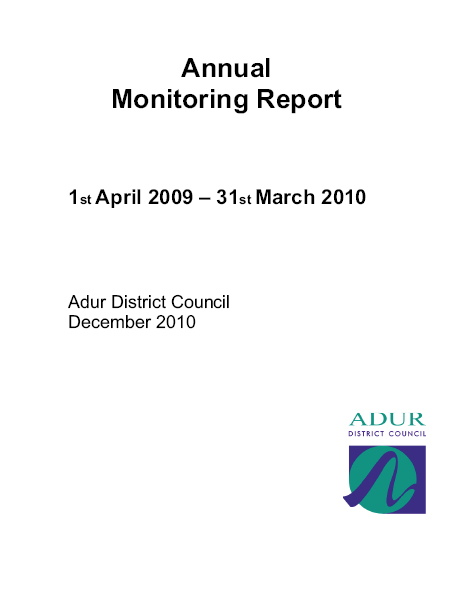

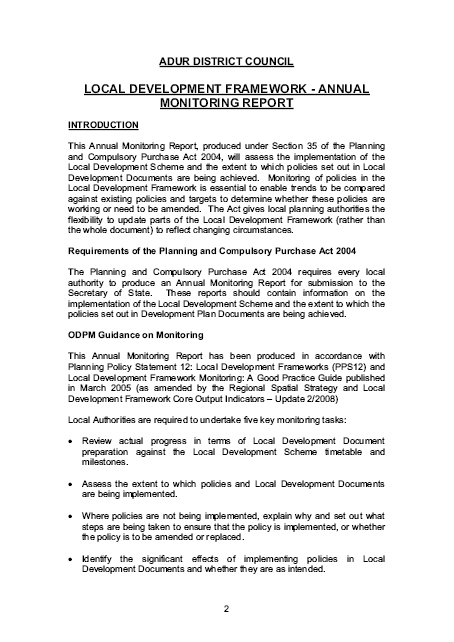
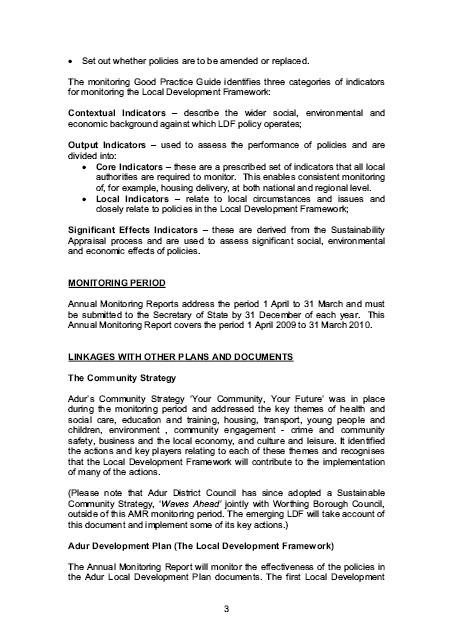
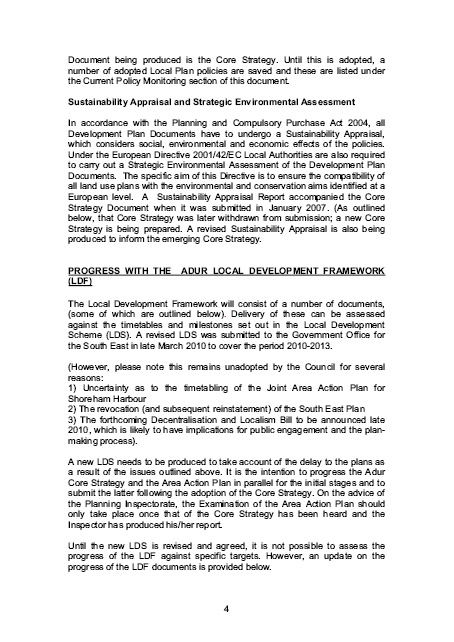
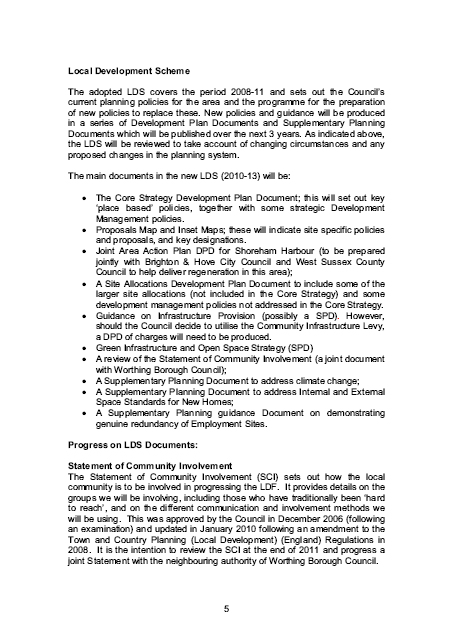


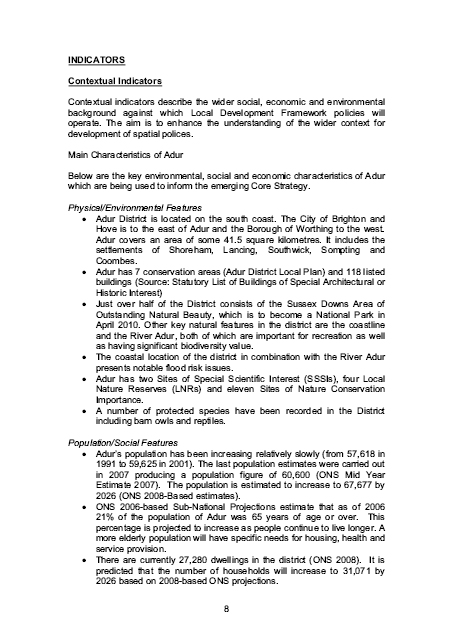

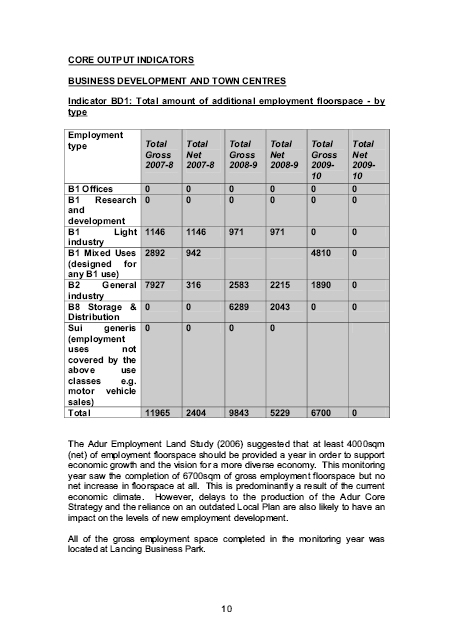
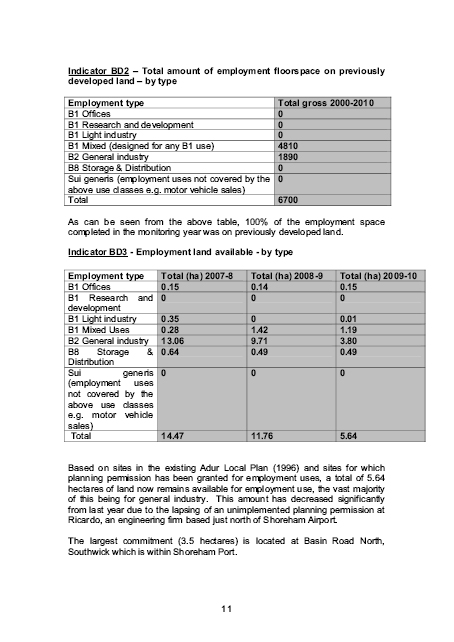




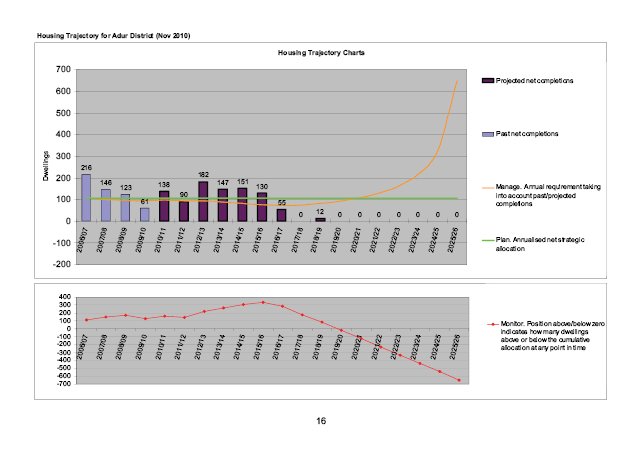
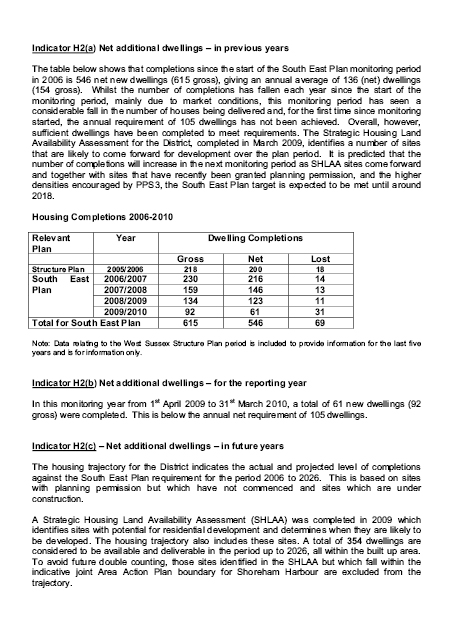



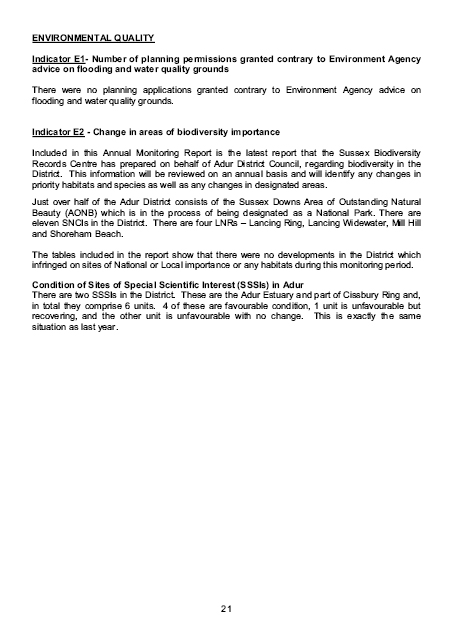


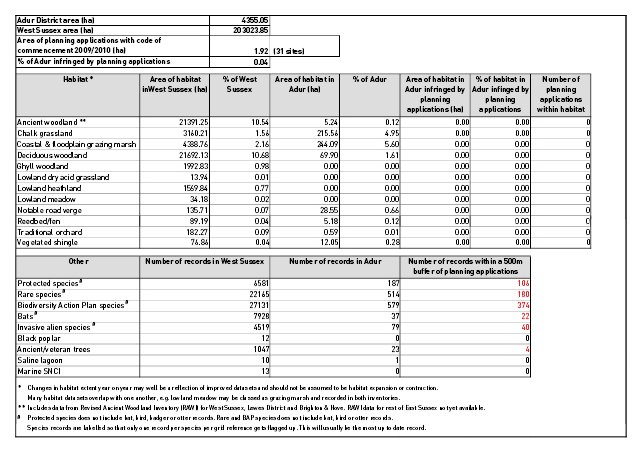

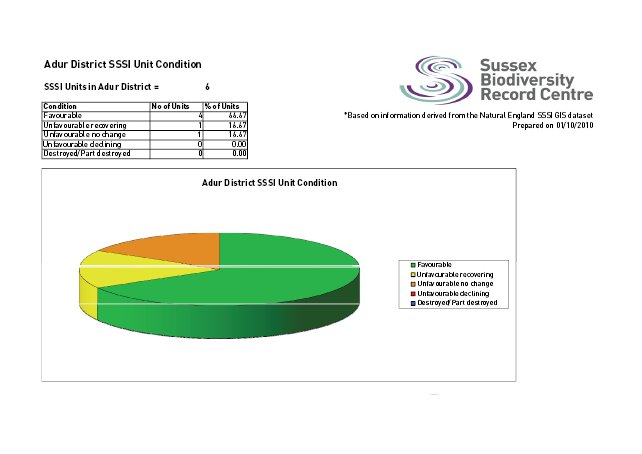
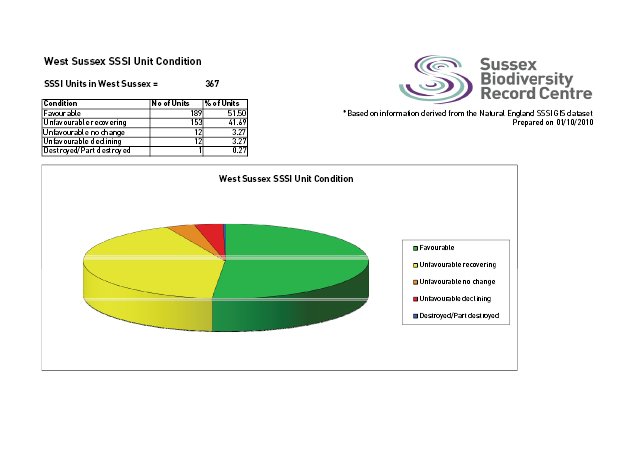


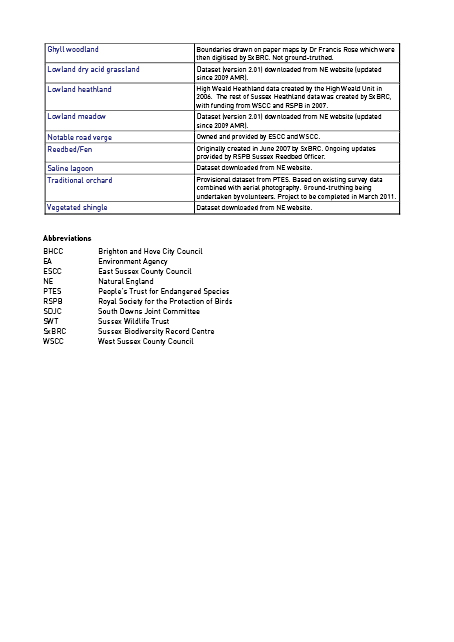

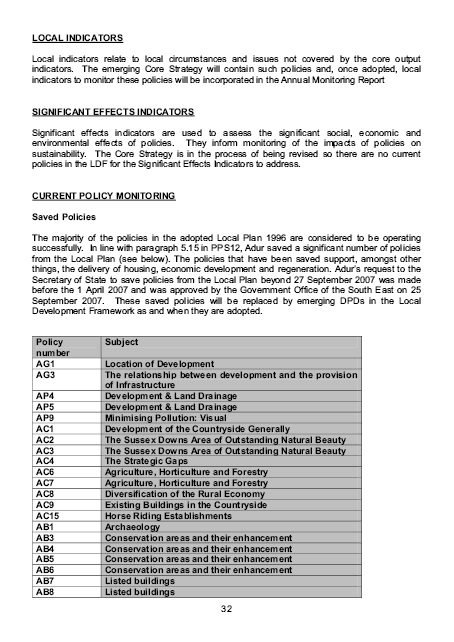



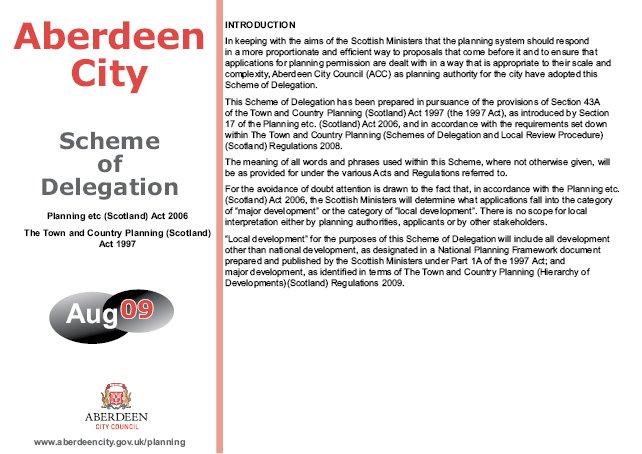

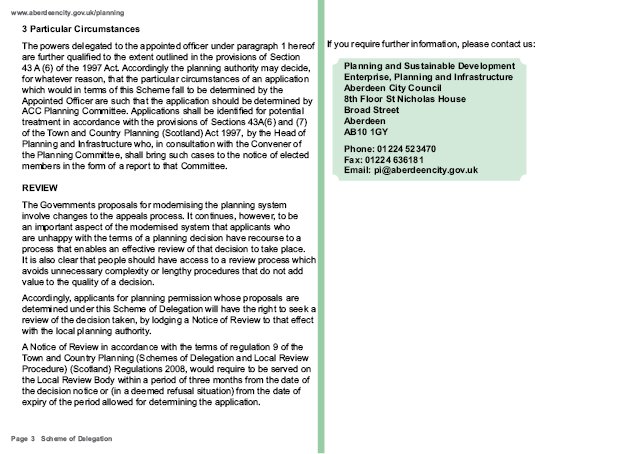

Private Office Assembly Unit
Clarence Court
10-18 Adelaide Street
BELFAST
BT2 8GB
Telephone: 028 90 5 40855
Facsimile: 028 90 5 41169
Email: privateoffice.assemblyunit@doeni.gov.uk
Your reference:
Our reference: CQ/276/11
Mrs Alex McGarel
Clerk to the Environment Committee
Northern Ireland Assembly
Parliament Buildings
Ballymiscaw
Stormont
Belfast
BT4 3XX Date: 2 February 2011
Dear Alex
I refer to the request made by the Environment Committee, on 28 January 2011, requesting a list of the Department’s statutory consultees and the timescales for the delivery of sustainability across Departments.
Currently Article 20 of the Planning (NI) Order 1991 and the Planning (General Development) Order (Northern Ireland) 1993 (part 15) places a duty on the Department of the Environment’s Planning Service to consult District Councils and the Health and Safety Executive in the Department of Economic Development (now the Department of Enterprise Trade and Investment) on planning applications. In addition, the Fire Authority of Northern Ireland is also a statutory consultee for applications for hazardous substances consent by virtue of regulation 10 of The Planning (Hazardous Substances) Regulations.
Article 224 of the new Planning Bill places a duty on those prescribed as statutory consultees to respond to consultation within a given timeframe. The list of statutory consultees to be consulted on certain types of planning applications will be consulted upon and extended through the subordinate legislation.
Guidance will set out how statutory consultees, should respond to consultation in line with key development management principles.
The sustainable development duty on both the Department and Councils (see clause 1 and 5) is an ongoing duty relating to certain planning functions for which they must have regard to the prevailing policies and guidance of other Departments including the Department for Regional Development (DRD) and Office of the First Minister and deputy First Minister (OFMDFM). This will mean having regard to, for example, the Sustainable Development Strategy prepared by OFMDFM and the Regional Development Strategy prepared by DRD. The timescales for the delivery of such documents is matter for the Departments concerned.
I trust this information is of assistance, should you require anything further please contact me directly.
Yours sincerely,
DALO
[by email]

Private Office Assembly Unit
Clarence Court
10-18 Adelaide Street
BELFAST
BT2 8GB
Telephone: 028 90 5 40855
Facsimile: 028 90 5 41169
Email: privateoffice.assemblyunit@doeni.gov.uk
Your reference:
Our reference: CQ/277/11
Mrs Alex McGarel
Clerk to the Environment Committee
Northern Ireland Assembly
Parliament Buildings
Ballymiscaw
Stormont
Belfast
BT4 3XX Date: 3 February 2011
Dear Alex
I refer to the request made by the Environment Committee for a written response to the points raised by stakeholders on the issues of
I will address the issues in the order given.
PPS1 (General Principles) identifies that contributions from developers may be required where, for example, a proposed development needs the provision or improvement of infrastructure works or where a proposed development depends on carrying out works outside the site.
These contributions can be secured through conditions attached to planning permission or through a negotiated legally binding agreement under Article 40 of the Planning (Northern Ireland) Order 1991 which is also binding on future owners or occupiers of the land. Conditions and agreements must relate to the development to which the application for planning permission relates.
Article 40 has been carried forward in the Planning Bill as clause 75. At 75(d) and (e) financial developer contributions under a planning agreement may be paid to the planning authority or to a Northern Ireland Department, whereas Article 40 provided only for payment to DOE. This change broadens the potential scope of planning agreements; for example it would facilitate developer contributions be paid to DSD to help fund social housing.
Community Infrastructure Levy is a system of developer contributions introduced for England and Wales through the 2008 Planning Act which empowers local authorities to introduce a statutory planning charge on development and to use the proceeds to fund infrastructure. There is no equivalent in Northern Ireland.
Debate around increasing developer contributions is based on the premise that the granting of planning permission almost always increases the value of the land to which the permission relates. It is argued that, since the public sector grants planning permission, the public should share in the increased value of the land. The Reform of the Planning System in Northern Ireland: Your chance to influence change consultation paper agreed by the Executive Committee and published in July 2009 did not set out any policy proposals in relation to developer contributions but it did ask some general questions about the issue.
The Government Response to the Planning Reform Consultation which was agreed by the Executive Committee and published in July 2010 explained that developer contributions is essentially an issue which centres on the identification, funding and delivery of infrastructure necessary to support economic and social development, rather than a planning reform issue. It concluded that it needed to be considered at Executive level in relation to funding and infrastructure responsibilities.
Pre-application community consultation as set out under clause 27 provides an opportunity for communities to get involved before the application is submitted. Early involvement of communities can bring about significant benefits for applicants, for communities and for planning authorities. It allows developers to resolve issues raised by the community and to include mitigating measures as necessary. This will improve the quality of the application and ultimately the development.
Community involvement is a crucial feature of the new development management system. Consequently, pre-application community consultation will be a mandatory requirement for all major and regionally significant proposals.
The minimum period of consultation is 12 weeks. Certain requirements will be necessary, such as the information to be contained in the proposal of application notice. In addition, to ensure consistency of approach across all council areas, subordinate legislation will contain minimum requirements such as the holding of at least one public event, and advertising arrangements.
Clause 28 of the Bill introduces a requirement on applicants to prepare a pre-application consultation report. This will need to demonstrate how the developer approached pre-application consultation and what they have done to amend their proposals in light of the consultation. If the district council or Department does not feel the applicant has carried out adequate consultation, it can request additional information.
In addition, a new power is being introduced under clause 50 whereby it will be possible for the Department, or a council, to decline to determine those applications where the applicant has not complied with the necessary pre-application consultation. This is to ensure that the community has been consulted in a meaningful way, and that their views are properly taken into account regarding what the developer is proposing, and is not just a case of following a set of procedures.
Clause 30 gives councils the power to hold pre-determination hearings. These aim to make the planning system more inclusive, allowing the views of applicants and those who have made representations, to be heard before a planning decision is taken.
Subordinate legislation will set out the instances where a pre-determination hearing will be mandatory. This is likely to include applications for major developments which have been subject to a direction for call-in, but have been returned to the council for it to determine.
The district council will have discretion over how these hearings will operate in their area. District councils may of course wish to consider other types of development application for which they could hold pre-determination hearings.
The Executive Committee has agreed that further consideration of third party appeals should be deferred until the extensive changes to the planning system under planning reform and local government reform have settled down and are working effectively.
The Reform of the Planning System in Northern Ireland: Your chance to influence change consultation paper agreed by the Executive Committee and published in July 2009 explained that the planning reform policy was to front load the planning system with opportunities for third party engagement and to extend its openness and transparency.
On the basis of evidence in an earlier Regulatory Impact Assessment, the paper explained that the introduction of third party appeals would result in:
As a consequence of all of these there would be a potentially adverse impact upon investment and the economy.
It concluded that
“in view of the likely impacts of the introduction of third party appeals upon the planning system and its objectives for planning reform, which include more proportionate processes, a “front loaded" planning system and greater speed and efficiency and decision-making, the Department at this stage is not proposing to make provision for third party appeals in the current package of reforms to be brought forward by 2011"
Having seen the outcome of the consultation, the Executive Committee agreed the following wording in the Government Response to the Planning Reform Consultation which was published in July 2010:
“further consideration of third party appeals should be deferred until the extensive changes to the planning system under planning reform and implementation of RPA have settled down and are working effectively. In addition, this approach would ensure that third party appeals would not present an opportunity to hinder the recovery and delivery of a productive and growing economy in Northern Ireland. Third party rights of appeal at this stage could well be a competitive economic disadvantage for Northern Ireland, given that third party appeals have not been introduced in England, Scotland or Wales and there is a suggested significant risk of potential adverse impact upon investment in the Northern Ireland economy if they were to be introduced."
The Executive Committee agreed the Planning Bill policy memorandum on 25th February 2010 and on 18th November it agreed the text of the Bill for introduction.
I trust this information is of assistance, should you require anything further please contact me directly.
Yours sincerely,
DALO
[by email]

DOE Private Office
Clarence Court
10-18 Adelaide Street
BELFAST
BT2 8GB
Telephone: 028 90 5 40855
Facsimile: 028 90 5 41169
Email: privateoffice.assemblyunit@doeni.gov.uk
Your reference:
Our reference:
Mrs Alex McGarel
Clerk to the Environment Committee
Northern Ireland Assembly
Parliament Buildings
Ballymiscaw
Stormont
Belfast
BT4 3XX Date: 2 February 2011
Dear Alex
The Department currently has three Statutory Advisory Councils (SACs) which provide independent advice on the natural and historic environment. They are the Historic Buildings Council, established in 1972, the Historic Monuments Council, set up in 1971, and the Council for Nature Conservation in the Countryside, set up in 1989.
Given the length of time these bodies have been in existence and significant changes in how the Department conducts its business, the Minister has decided to examine the role of each council in terms of the Department’s external advice needs. The overall aim is to put in place mechanisms which are much more strategic, concise and focused on specific need. It is also intended that the review will reduce the overall costs and bureaucracy associated with the present regime.
The Department is currently preparing a consultation paper outlining proposals for the review of the three councils and a copy will be sent to the Environment Committee as soon as the detail is finalised.
I trust this information is of assistance, should you require anything further please contact me directly.
Yours sincerely,
DALO
[by email]

Private Office
Clarence Court
10-18 Adelaide Street
BELFAST
BT2 8GB
Telephone: 028 90 5 40855
Facsimile: 028 90 5 41169
Email: privateoffice.assemblyunit@doeni.gov.uk
Your reference:
Our reference: CQ/282/11
Mrs Alex McGarel
Clerk to the Environment Committee
Northern Ireland Assembly
Parliament Buildings
Ballymiscaw
Stormont
Belfast
BT4 3XX Date: 8 February 2011
Dear Alex
At the informal clause by clause consideration of the Planning Bill on 3 February 2011 Departmental Officials agreed to amendments to the Bill.
Clause 221 allows the Department to award a grant to any organisation which is assisting the community with particular applications for development, or which is providing technical expertise to allow an application to be easily understood. Grants may also be made to organisations which aim to further the preservation, conservation and regeneration of historic buildings. The organisations being funded must not be profit making bodies.
The Committee requested an amendment to this clause to include specific ‘planning policy proposals’ in addition to ‘planning and other technical aspects of other proposals’. In considering this, the Department is of the view the proposed amendment would expand the basis by which grants to bodies providing assistance in relation to certain development proposals are made by the Department.
Appropriate amendments to clause 221 are set out below. It is proposed that the amendments will be tabled at Consideration Stage.
Clause 221, Page 142, Line 41
After ‘understanding’ insert ‘of planning policy proposals and’
Clause 221, Page 142, Line 41
After ‘aspects of’ insert ‘other’
I trust this information is of assistance, should you require anything further please contact me directly
Yours sincerely,
DALO
[by email]
Annex to DALO Letter
Clause 1 - The Committee asked for an amendment to 1(2)b on contributing to sustainable development
The Minister will bring forward an amendment to amend 1(2)b to read “exercise its functions under subsection (1) with the objective of contributing to sustainable development"
Clause 1 - The Committee’s requested that “wellbeing" be added at 1 (2) b, as one of the issues the Department should keep under review.
“Wellbeing" does not yet exist in legislation and so it is not possible to refer to it in the Bill.
Clause 10 – The Committee asked who would pay for independent examinations which are conducted by an independent person appointed by DOE.
DOE will pay the costs of these examinations
Clause 33 - the Committee asked that simplified planning zones be removed from the Bill
The Minister has decided not to bring forward such an amendment.
Clause 133 – The Committee asked for consideration of an amendment raising the level of fine in clause 133 (4) from level 3 to level 5
The Minister will bring forward the following amendment:
Clause 133, Page 85, Line 21
Leave out ‘3’ and insert ‘5’
Clause 148 - The Committee asked for consideration of an amendment raising the level of fine in clause 148(5)
The fine at Clause 148(5) is at level 5. The Minister takes the view that it would be proportionate to raise the fine to £7,500 and will bring forward the following amendment to that effect:
Clause 148, Page 96, Line 27
Leave out from ‘level’ to ‘scale;’ and insert ‘£7,500’
Clause 178 – The Committee asked for consideration of a possible amendment to require the Department to pay any compensation due when a council is not fulfilling its responsibilities under the legislation and the Department exercises its intervention powers to revoke a planning permission.
Clause 71 allows the Department to intervene if a council is not fulfilling its duties to revoke a planning permission. When such an order is made by the Department it has the same effect as if made by the council. Responsibility for any subsequent compensation payment rests with the council under clause 178. The Minister will not bring forward this amendment.
Clause 202 – The Committee asked for consideration of an amendment to stop the practice of new information being presented at appeals
The Minister will bring forward such an amendment.
Clause 221 – The Committee asked about the possibility of removing DFP’s oversight role in relation to this clause
The Minister will bring forward the following amendment.
Clause 221, Page 143, Line 8
Leave out from ‘, with’ to ‘Personnel,’ in line 9
Clause 221 – The Committee asked that the words “of planning policy proposals and" be inserted after “understanding"
The Minister has agreed the following amendment:
Clause 221, Page 142, Line 41
After ‘understanding’ insert ‘of planning policy proposals and’
Clause 221, Page 142, Line 41
After ‘aspects of’ insert ‘other’
New clauses – The Minister will bring forward an amendment allowing costs to be awarded where a party has been put to unnecessary expense and where the PAC has established that the other party has acted unreasonably.
Subordinate legislation – The Minister has agreed to bring forward subordinate legislation in relation to site notices and neighbour notification.
- making the commencement of Part 3 (Planning Control) subject to the draft affirmative procedure:
Clause 247, page 160, line 16
At end insert-
( ) No order shall be made under subsection (1) in respect of Part 3 unless a draft of the order has been laid before, and approved by a resolution of, the Assembly.
Clause 1, page 1,
Leave out line 11 and insert-
(i) furthering sustainable development; and
(ii) promoting or improving social well-being.
Clause 3, page 2, line 27
At end insert-
‘( ) the potential impact of climate change;
Clause 5, page 3, line 25
Leave out ‘contributing to the achievement of’ and insert ‘furthering’
Responses to Questions Raised in QUB Research Paper 1 on “Development Functions and Development Plans"
If the new legislation is the beginning of a process of introducing spatial planning into Northern Ireland, then this represents a radical change to the planning system. Does the Assembly accept the need for such radical changes?
The Planning Bill was introduced into the Assembly on the 6th December 2010. It is for the Assembly to scrutinize the Bill and to decide whether to accept it as introduced, to amend it or to reject it.
The legislation will require supportive policy and guidance. What is the timetable for this development and publication?
The Delegated Powers Memorandum lists the subordinate legislation expected to flow from the Bill, a time table for this legislation was provided to the Committee on January 10. PPS 1 (General Principles) will be reviewed in the light of the legislation. A substantial raft of Guidance will also produced. All of this work will be completed well in advance of the transfer of powers to councils.
The new legislation and overall approach to spatial planning will require substantial training for all stakeholders. What preparations are being made for this?
The Minister announced on November 30 a pilot programme to test the proposed consultative and practical working arrangements between DOE staff and the councillors and staff in the 11 council groups, and to build capacity. Focused training is also planned, and organisations such as the Royal Town Planning Institute are already considering their role in this respect.
The new legislation together with follow-up policy and guidance will necessitate the creation of a set of intra-government relationships that should be carefully considered. The relationship of the Local Development Plan (LDP) to the Regional Development Strategy (RDS) needs to be carefully considered. Area action planning has not been included in the proposed legislation, unlike the case in England. How can the legislation be employed to help facilitate the implementation of local spatial planning through regeneration?
Clause 8 (5) (a) requires councils to take account of the Regional Development Strategy in preparing their development plans. The councils will use their plan strategy to provide a clear and realistic vision of the future of their districts. The local policies plan will support that vision by clearly indicating where development, including regeneration, should take place, and what form it should take.
The Department is not bound by the recommendations of the independent examination. Does the independent examination not bring some apolitical and objective assessment of policy, procedure and content?
The independent examination is designed be apolitical and objective, its purpose (set out at Clause 10 (5) is to determine whether the plan document is sound and whether it satisfies the requirements relating to its preparation. The person who conducted the examination must make recommendations and give reasons for them (Clause 10 (7)).
The Department must consider the recommendations and direct the council to adopt, modify or withdraw the development plan document (Clause 12). In the interests of democracy and public accountability, it is right that this decision is made by the Minister who democratically elected and accountable to the Assembly and not by the independent examiner who is neither elected nor unaccountable.
The Department seeks the power to direct councils to produce joint development plans. Why does the Department need the power to direct councils to produce joint development plans? On what basis might it decide use that power?
The Department needs this power so that, where council districts are closely linked functionally and spatially, it can ensure that key strategic planning issues such as economic development, retailing, infrastructure, transportation and housing growth can be dealt with in a way which transcends council boundaries. Clause 18 therefore provides the Department with the power to require district councils to work together.
Where the Department directs two or more councils to work jointly, it will consult the relevant district councils. The direction will set out if it is a plan strategy only or a full local development plan that is to be prepared jointly and it will also specify the area to which the joint arrangements apply. The Department will work closely with councils in reaching a mutually agreed working arrangement and guidance will provide further information on joint working arrangements.
Implementation and delivery is at the heart of spatial planning. Does this need to be strengthened in the legislation, for example by including specific mention of the implementation of the local development proposals in the annual monitoring report?
Councils must make an annual report to the Department. Clause 21(2) requires that the report contains “such information…… as to the extent to which the objectives set out in the local development plan are being achieved." Subordinate legislation will require councils to report on the implementation of the policies contained in the local development plan and the extent to which plan objectives are being achieved.
A New Approach to Development Planning – As noted in the introduction, the proposed new legislation will trigger a significantly new approach to development planning in Northern Ireland (NI). Does the Assembly accept the need for such a major change to the Development Plan process, or would it prefer to make adjustments to the existing system?
The Planning Bill was introduced into the Assembly on the 6th December 2010. It is for the Assembly to scrutinize the Bill and to decide whether to accept it as introduced, to amend it or to reject it.
Local Development Plan & the Community Plan - The proposed NI legislation does not include an explicit reference to the very important links between the Local Development Plan (LDP) and the Council’s Community Plan. In England & Wales the 2004 Act states that the local planning authority ‘must have regard to ..... the community strategy prepared by the authority’ [19 (2) (f)]. This explicit link is crucial if the new approach to development planning is to be effective. Indeed it can be argued that the Community Plan should provide the lead for the Local Development Plan so that the LDP becomes the spatial expression of the Community Plan. This then emphasizes the horizontal integration between functions and services and their spatial needs. How does the Department see this relationship and what about the sequencing of the two plans?
Policy proposals for the introduction of community planning were published for consultation on November 30. A strong link is envisaged between community plans and local development plans. Any statutory link between the two would need to be made through the legislation which introduces community planning.
Supportive Policy & Guidance - The proposed new legislation will be supported by new policy and guidance. This may take the form of a new Planning Policy Statement (PPS) although other supportive guidance and manuals may also be forthcoming. It is critically important that these explanatory documents are developed in parallel with the legislation. What form will the policy and guidance take and what is the timetable for their development and publication?
The Delegated Powers Memorandum lists the subordinate legislation expected to flow from the Bill, a time table for this legislation was provided to the Committee on January 10. PPS 1 (General Principles) will be reviewed in the light of the legislation. A substantial raft of Guidance will also produced. All of this work will be completed well in advance of the transfer of powers to councils.
The Local Development Plan & other Government objectives. The model of spatial planning allows for the planning system to coordinate and give spatial expression to a wide range of other government priorities. For example, in England the government has made extensive efforts to use the planning system as a major element in its climate change strategy, while in Wales efforts have been made to ensure that planning and development supports health objectives, such as reducing obesity. Does the Department envisage the Northern Ireland planning system to function in the same way and if so, does this require any changes to legislation?
The extent to which the planning system in Northern Ireland might be used in future to deliver other Executive objectives will be a matter for the Minister of the Environment and the Executive Committee of the day. Any changes could be brought forward through planning policy and guidance. The Planning Bill sets the overarching framework for the planning system and does not need to change in order to facilitate this.
Area Action Plans - In the context of implementing spatial plans at council level in Northern Ireland this might be an important facility, particularly since it has the potential to bring regeneration and spatial planning together to achieve coherent change. Why has this facility not been included in the proposed legislation? How can the legislation be employed to help facilitate the implementation of local spatial planning through regeneration?
Clause 8 (5) (a) requires councils to take account of the Regional Development Strategy in preparing their development plans. The councils will use their plan strategy to provide a clear and realistic vision of the future of their districts. The local policies plan (Clause 9) will support that vision by clearly indicating where development, including regeneration, should take place, and what form it should take.
Adopting the Local Development Plan - The proposed legislation requires councils to submit every development plan to the Department for independent examination. The plan will then be tested for its ‘soundness’ [10(5)(b)]. Presumably tests of soundness will be specified in follow-up policy and guidance publications. In relation to the adoption process [12], the Department has the power to direct the council to adopt the plan with or without modifications. In other words, it is not bound by the recommendations of the independent examination. There was some concern in the public consultation that this ‘goes against the principle of devolved planning’ (2.84). All of this requires further explanation from the Department; does the independent examination not bring some apolitical and objective assessment of policy, procedure and content?
The independent examination is designed be apolitical and objective, its purpose (set out at Clause 10 (5) is to determine whether the plan document is sound and whether it satisfies the requirements relating to its preparation. The person who conducted the examination must make recommendations and give reasons for them (Clause 10 (7)).
The Department must consider the recommendations and direct the council to adopt, modify or withdraw the development plan document (Clause 12). In the interests of democracy and public accountability, it is right that this decision is made by the Minister who democratically elected and accountable to the Assembly and not by the independent examiner who is neither elected nor unaccountable.
The criteria for the tests of soundness will be set out in guidance, and will relate to:
(1) how the development plan document has been produced,
(2) the alignment of the development plan document with central government plans, policy and guidance, and
(3) the coherence, consistency and effectiveness of the content of the development plan document.
Joint Development Plans – Two or more councils may agree to prepare joint development plans, however, the Department also has the power to direct councils to prepare joint development plans [18]. In England and Wales such arrangements are entirely voluntary, although the Secretary of State may constitute a joint committee to be the local planning authority. This raises a number of issues. Why does the Department need the power to direct, and indeed, on what basis might it decide to use that power? Where councils do prepare joint development plans, will they also assume a joint role as the local planning authority (i.e. for development management purposes)? Is it possible that joint Plan Strategies could be prepared that allow individual councils to develop their own Local Policy Plans?
The Department needs this power so that, where council district are closely linked functionally and spatially, it can ensure that key strategic planning issues such as economic development, retailing, infrastructure, transportation and housing growth can be dealt with in a way which transcends council boundaries. Clause 18 therefore provides the Department with the power to require district councils to work together.
Where the Department directs two or more councils to work jointly, it will consult the relevant district councils. The direction will set out if it is a plan strategy only or a full local development plan that is to be prepared jointly and it will also specify the area to which the joint arrangements apply. The Department will work closely with councils in reaching a mutually agreed working arrangement and guidance will provide further information on joint working arrangements.
Training & Re-skilling - Experience from elsewhere suggests that a key to the success of implementing the new legislation and the new system in all its forms is preparatory training and re-skilling for all the key players. For the professional planners, officials and politicians the turn to spatial planning represents a ‘substantial shift in thinking and practice requiring what Nadin calls a process of ‘learning and unlearning’. This sea change in practice will also impact on all other stakeholders and they too will require an understanding of a new language, a new system and significantly changed practices. In relation to development planning, for example, a spatial approach will require collaborative working across disciplines and across sectors. This is quite different to the technocratic and sometimes narrow approach used in land-use planning.
What preparations are being made for this? (See also Paper 4 forthcoming).
During 2010 Local Planning Offices and Council Transition Committees engaged in preparatory studies intended to assist Councils progress their new local development plans quickly on the transfer of powers. The Minister announced on November 30 a pilot programme to test the proposed consultative and practical working arrangements between DOE staff and the councillors and staff in the 11 council groups and to build capacity. Focused training is also planned, and organisations such as the Royal Town Planning Institute are already considering their role in this respect.
Implementation – A key to the success of a new spatial planning system will be its ability to oversee, direct and often lead the implementation process. Indeed, to some extent this is acknowledged in 8(2)(b):- ‘a plan strategy must set out … its strategic policies for the implementation of (its) objectives. However, a spatial planning approach, in contrast to a land-use planning approach, is tasked with the challenge of integrating and coordinating the spatial investments of other public services. Consequently, this needs strong legislative support.
How can the legislation be strengthened in this regard? For example, should there be specific mention of the implementation of the local development proposals in the annual monitoring report?
Councils must make an annual report to the Department. Clause 21(2) requires that the report contains “such information…… as to the extent to which the objectives set out in the local development plan are being achieved." Subordinate legislation will require councils report on the implementation of the policies contained in the local development plan and the extent to which plan objectives are being achieved.
Responses to Questions Raised in QUB Research Paper 1 on “Implementation, Performance and Decision Making: Issues of Capacity, Delivery and Quality".
Planning within this Bill is not just about land use, but it transcends issues of Housing and development to encompass broader social well-being. How does the Department propose to disseminate sea change/paradigm shift that will be required among the key stakeholders?
The Minister announced on November 30 a pilot programme to test the proposed consultative and practical working arrangements between DOE staff and the councillors and staff in the 11 council groups, and to build capacity. Focused training is also planned, and organisations such as the Royal Town Planning Institute are already considering their role in this respect.
The integration of all components of planning will be central to the Bill’s success and this relies on the institutional infrastructure or the governance arrangements. What is the vision for an effective and successful planning system?
The vision is of stronger local democracy with planning powers devolved to the 11 new councils and with locally elected politicians at the heart of local decision-making. Councils will be responsible for their own development plans; they will set out a clear vision for the future and show how it will be implemented. Councils will also be responsible for the majority of management development decisions and for enforcement within their areas.
Buy-in from and participation of key stakeholders is crucial to the legislation. What arrangements are in place to ensure sufficient and equal involvement of different interest groups?
The provisions in the Bill that facilitate community engagement are set out in the speaking note on Community Involvement dated 18 January 2011.
In particular it is worth noting that the Planning Bill includes requirements on the Department and councils to prepare a statement of community involvement (Clauses 2 and 4) and a requirement on applicants to carry out pre-application community consultation on major or regionally significant applications (Clause 27).
Developing a new strategic vision requires leadership and cultural change. How will the new planning system create space for leadership and nurture cultural transformation?
In the new system, the councils will hold the majority of planning powers and they will provide leadership in relation to their respective areas. Through the development plan process councils will set out a vision for their area and how it will change in the future.
Currently, development planning in Northern Ireland is very land use based, overly technocratic, functional, legalistic and market-driven. A new form of planning would attempt to define the existing and potential distinctive quality of ‘place’. How will the quality of the built environment become an integral feature of the new planning system?
The new local development plan system introduced by the Planning Bill will assist councils to adopt a place shaping approach to planning which transcends the land use approach of the current system. The requirements of the Regional Development Strategy, PPS1 and other Planning Policy Statements already ensure that the quality of the built environment is in integral feature of the planning system. Councils will consider the quality of the built environment as part of the development plans process.
Creating the new structures simply provides circumstances to encourage a new approach. Transformation of the planning system in Northern Ireland will be reliant on consistent and coherent interpretation of this primary legislation and the timing and form of any subordinate legislation and supplementary guidance that will follow (see also Paper 1). How does the Department propose to promote the need for greater transparency and information on this matter?
The Delegated Powers Memorandum lists the subordinate legislation expected to flow from the Bill, a time table for this legislation was provided to the Committee on January 10. PPS 1 (General Principles) is being reviewed in the light of the legislation. A substantial raft of Guidance will also be produced. All of this work will be completed well in advance of the transfer of powers to councils.
The pilot projects provide opportunities for councillors, council employees, planners and others to work together to test arrangements and relationships. There will also be tailored training. DOE will use a range of other channels to make information available. The councils will have a major role to play, not least through their respective Statements of Community Involvement.
Many of the issues surrounding effective implementation and delivery are amorphous, have the potential to be overly complex and risk confusion. What steps are being taken to guarantee clarity and transparency in emerging relations between departments, agencies and other interest groups?
The Planning Bill sets the framework within which the Departments, councils and others must operate. It sets out the respective roles and responsibilities of DOE and of councils, and the nature of the relationships between them. Consultees to the planning system will be listed in subordinate legislation; the circumstances within which they will be consulted and timescales for their responses will also be set out.
The Department will have powers to assume a central position in the delivery and evaluation of planning. How will it be scrutinised and specifically, what are the limits on its power to exercise its function?
The powers of the Department are set out in legislation. The Committee of the Environment scrutinises the work of the Department and the Minister. The Minister of the Environment is accountable to the Assembly.
Local government reform is under consultation. Opportunities to make statutory connections in relation to issues such as Community planning or powers of well-being appear to have been missed. What will be done to ensure a coherent approach and one that avoids duplication of functions?
Policy proposals for the introduction of community planning were published for consultation on November 30. A strong link is envisaged between community plans and local development plans. Any statutory link between the two would need to be made through the legislation which introduces community planning.
The new legislation will rely on capacity building across a diversity of stakeholders – professional/non-professional planners, community organisations and specific interest groups, etc. What additional resources will be available to support necessary development of skills and expertise?
Capacity building in respect of the transfer of functions to local government will take place in the context of the pilot projects which will be rolled out during 2011-12.
Why have explicit links not been made to the emerging functions that are following from reorganisation of the public sector and associated reform of local government? How will the Department ensure that an overly complex process is avoided and that an integrated approach is achieved?
The purpose of the Planning Bill is to provide for the transfer of planning functions to the 11 councils; this will happen after appropriate governance arrangements and an ethical standards regime are put in place as part of local government reform.
DOE is responsible for both local government and planning reform. These policy areas are both the responsibility of the same team; they are being progressed together through a single coherent programme of policy, legislation and delivery.
Who has the power to provide leadership through a strategic and integrated approach? Who will lead this process - why has a Chief Planning Officer function not been created?
Successive Ministers of the Environment have provided and continue to provide leadership. When powers transfer to councils, it will be for councils to set out their respective visions for the future of their areas and to show through their local development plans how that will be achieved.
What arrangements and resources are in place to ensure the advocacy, competency and capacity of local communities, vulnerable groups and other stakeholders so that they are able to fully participate in the planning process?
Councils must prepare statements of community involvement setting out their policies on how and when the community they will consult the community in the preparation and revision of local development plans and in relation to development management. Subordinate legislation will set out minimum requirements in relation to consultation and best practice guidance will be provided.
Councils will are subject to sections 75 and 76 of the Northern Ireland Act 1998, the Human Rights Act and anti-discrimination legislation, and it is in this context that that the statement of community involvement will be developed and delivered.
Under what circumstances and in what conditions will the Department direct councils to work together? What powers do the Department have to insist upon such coalition? Why have formal arrangements not been provided for within the Bill? How does this affect accountability and responsibility for plans?
Where two or more council districts are closely linked functionally and spatially, it will be important to ensure that key strategic planning issues such as economic development, retailing, infrastructure, transportation and housing growth can be dealt with in a way which transcends council boundaries. Clause 18 therefore provides the Department with the power to require district councils to prepare joint plans.
Where the Department directs two or more councils to work jointly, it will consult the relevant district councils. The direction will set out if it is a plan strategy only or a full local development plan that is to be prepared jointly and it will also specify the area to which the joint arrangements apply. The Department will work closely with councils in reaching a mutually agreed working arrangement and guidance will provide further information on joint working arrangements.
The Bill also states that the preparation requirements for a joint plan document development plan will be same as those for a single plan strategy or single local development plan.
The councils will share accountability and responsibility for the preparation of a joint plan strategy or joint local development plan, but each individual council will retain responsibility for the determination of planning applications in their own areas.
How can an assessment be made that the local planning process is ‘fit for purpose’ and is ‘deliverable’, and who makes the assessment? What measures will be used to monitor and evaluate the statements of community involvement and of sustainability? How will the “deagentisation" of the Planning Service effect the management and performance of the Department’s planning functions? Who monitors and evaluates the performance and decision-making of the Department? How will Divisional Planning Offices be evaluated?
The Department is currently consulting on a new service delivery and performance improvement framework for local government. This would include a revised, more expansive statutory duty than currently exists for councils requiring them to secure best value and to continuously improve the performance of services they deliver to ratepayers.
The Planning Bill empowers the Department to conduct an assessment of a Council’s performance on some or all of its planning functions or of its decision making on planning applications and to publish recommendations for improvement. If the Council does not implement the recommendations, the Department may issue a direction requiring it to do so.
The Planning Bill also gives the Department powers of intervention. As a last resort, should a Council be failing in its duties, the Department may use its powers of intervention, for example to progress a Local Development Plan.
De-agentisation of Planning Service means that the area of the Department which deals with planning will no longer have its own accounts, management board and audit committee which are additional to those covering the whole Department.
As long as the Department retains its existing functions, its performance (including the contribution of Area Planning Offices) will continue to be monitored against Programme for Government targets, progress will also be reported in the Department’s annual report. The Minister, under whose direction and control the Department acts, is accountable to the Assembly.
What is the intended implementation schedule, i.e. timing, form and content of supporting legislation and guidance?
The Delegated Powers Memorandum lists the subordinate legislation expected to flow from the Bill, a time table for this legislation was provided to the Committee on January 10. PPS 1 (General Principles) will be reviewed in the light of the legislation. A substantial raft of Guidance will also produced. All of this work will be completed well in advance of the transfer of powers to councils.
Does the Department intend to introduce an incentive scheme or capacity building for district councils planning functions? Are there plans to implement a training and development programme to engender the shift in mindset that is necessary for a new understanding of planning? Especially in the light of budgetary cuts, what financial resources exist that will ensure sufficient technical knowledge and adequate capacity is developed among different planning agents – planning and non-planning professional; and community representatives? What expertise is available to evaluate planning (from individual officers through to council and departmental levels) as an all-encompassing process whereby places are created?
The Minister announced on November 30 a pilot programme to test the proposed consultative and practical working arrangements between DOE staff and the councillors and staff in the 11 council groups and to build capacity. Focused training is also planned, and organisations such as the Royal Town Planning Institute are already considering their role in this respect.
Are any specific arrangements being made to uphold the probity of the planning system in the transfer to district councils?
On the 30 of November the Minister launched for consultation policy proposals on governance arrangements for Councils and an ethnical standards regime for Councillors. The new governance arrangements aim to ensure that councils operate to high standards, that they pursue equality and fairness within a framework of checks and balances and that there is openness and transparency in the way they conduct their business.
The ethical standards regime for local government will include a mandatory code of conduct for councillors with supporting mechanisms for the investigation and adjudication of appeals. One section will be dedicated to planning. The code will be supplemented by guidance for councillors when dealing with planning matters. This will include issues such as lobbying of planning officers by councillors.
Furthermore, the Planning Bill provides for a statutory planning audit function.
Why has this important reference to ‘good design’ not been included in the current Bill? Can we be reassured that the design of the built environment will become an important feature in the new spatial planning system?
Clause 40 of the Bill empowers councils to request design statements. However concepts such as good design are much more effectively dealt with through policy documents and guidance than in legislation.
The requirements of the Regional Development Strategy, PPS1 and other Planning Policy Statements already ensure that the quality of the built environment is an integral feature of the planning system. Councils will consider the quality of the built environment as part of the development plans process.
Creating place is not just about land use, concern with space involves wider issues of well-being, such as health, education and wider social care. Pivotal to this will be the establishment of effective working relations with different interest groups to deliver locally based solutions. How will these connections be defined, nurtured and maintained to avoid defensive reactions and strategies from individual councils? Is there a link between potential alliances and the new RPA boundaries? How will cross sectoral collaboration be guaranteed? Furthermore, many councils already collaborate under other policies, such as the NI Rural Development Programme. How will lessons already learned from collaborative activity be used? How will duplication of function be avoided? How will pre-existing relationships be protected?
The RDS and framework of PPSs will articulate overarching policy and Executive direction. The Department will continue to publish Northern Ireland wide planning policies which articulate the intentions of the Minister and the Executive of the day and councils will be required to take full account of these when undertaking their planning functions. A key element to ensuring policy integration will be the links to and delivery of council’s community plans. This will assist in integration of other local government transfer functions and ensure existing collaborations can continue and be developed further.
How will these cuts influence the implementation of the Bill? Other resource related contention may arise from the expanded expertise necessary within councils. Taking account of the expanded role of local government and associated pressures to perform while remaining attentive to quality standards, what resources will be available to ensure a smooth transition to the new system? Will sufficient resources and time be allocated for future consultations on subsidiary legislation and supplementary guidance? Finally, while the spirit of the Bill is about the transfer of powers, the reality remains that local areas are fairly limited in terms of directly influencing budgets. To what extent can processes of local development be implemented in the absence of locally held community funding?
The planning system which transfers to councils along with planning powers has to be both effective and affordable.
DOE planning operational functions are now being resized and restructured to make sure that they are in balance with the workload and are affordable. In preparation for the transfer of powers, these functions are being organised into two Divisions. Local Planning Operations Division will be responsible for all the development plan and development management functions which will transfer to councils. Area Planning Offices in the North, South Antrim, the West and the South will each serve two of the new council clusters, while an office in Belfast will serve three.
Strategic Planning Operations Division will be responsible for all the functions which will remain in the Department – including advice and oversight and the determination of regionally significant planning applications.
The current fee structure does not address the true cost of processing planning applications and proposals for a more realistic structure were recently consulted upon. The synopsis of responses will be submitted to the Committee shortly.
The Planning Bill provides for councils to set planning fees. However, it is envisaged that the Department will continue to set planning fees for three years from the transfer of powers; the situation will then be reviewed.
After powers transfer, it will be for the Councils to keep the balance between workload, income and costs under review.
To what extent can an assessment be made that appropriate and effective community engagement has been achieved by local councils? How will the Department ensure that expectations are fulfilled?
The provisions in the Bill that facilitate community engagement are set out in the speaking note on Community Involvement dated 18 January 2011.
In particular it is worth noting that the Planning Bill includes requirements on the Department and councils to prepare a statement of community involvement (Clauses 2 and 4) and a requirement on applicants to carry out pre-application community consultation on major or regionally significant applications (Clause 27).
The council’s statement of community involvement will set out how the council intends to involve the community in its local development plan and development management functions. It will be subject to Departmental agreement before it can be adopted by the council.
In terms of community consultation for major and regionally significant development, the planning authority (whether a council or the Department) must decline to determine an application if the pre-application community consultation requirements in clause 27 have not been complied with.
The Committee requested details on enforcement practices to date including the number of staff transferred from Planning Service to the enforcement section and a response on how the issue of legal costs influences decisions on enforcement action.
4. This clause defines a breach of planning control and sets out that enforcement action constitutes the issuing of an enforcement notice or breach of condition notice.
5. The Committee requested details on enforcement practices to date including the number of staff transferred from Planning Service to the enforcement section and a response on how the issue of legal costs influences decisions on enforcement action. Members also requested figures on the number of enforcement cases that have arisen and how many of these the Department has considered ‘expedient’ to pursue.
6. The main enforcement powers available to the Department are contained in Part VI of the Planning (Northern Ireland) Order 1991. This primary legislation has been amended by the Planning (Amendment) (Northern Ireland) Order 2003, which introduced a number of measures including new and revised enforcement powers and penalties. Further amendments to primary legislation are contained in the Planning Reform (Northern Ireland) Order 2006.
7. Under the provisions of the Order, the Department has a general discretion to take enforcement action when it regards it as expedient to do so, having regard to the provision of the development plan and any other material considerations.
8. In exercising discretion, the Department is mindful of its duty to enforce planning legislation and to ensure that development is managed in a proactive and proportionate manner. In determining the most appropriate course of action in response to alleged breaches of planning control, the Department will take into account the extent of the breach and its potential impact on the environment. Any decision to proceed with enforcement action will also be informed by case law, precedents and appeal decisions.
9. The Departments general policy approach to dealing with breaches of planning control is contained in Planning Policy Statement (PPS) 9 ‘The Enforcement of Planning Control’.
10. In 2009, the Department published an Enforcement Strategy (copy attached) The purpose of this Strategy was to set out the Departments objectives for planning enforcement, its guiding principles and priorities for enforcement action and performance targets. This will enable the Agency’s enforcement resources to be put to the best use and it will provide guidance to Planning Service Staff, other departments and agencies.
11. In the 2004/05 business year, the decision was taken to bolster enforcement teams throughout the Agency with each Divisional Office and HQ having dedicated enforcement staff. Additional staff were allocated to enforcement teams particularly at PPTO level.
12. The number of staff employed in each of the last five years in the Planning Service enforcement section is provided in the table below.
| 2009/10 | 2008/09 | 2007/08 | 2006/07 | 2005/06 | |
| Number of staff employed in enforcement | 50 | 45 | 39 | 43 | 34 |
13. Divisional Planning Managers are responsible for both development control and enforcement functions. There is an existing close and ongoing liaison between these two functions on a daily basis. Both in cases when offices are investigating potential breaches of planning control, and when planning applications stemming from enforcement cases are submitted, the relevant case officers from the development control and enforcement sections liaise closely in order to ensure that all relevant issues are fully considered. In addition, the enforcement team will proactively monitor certain developments following the grant of planning permission to ensure the development is carried out as approved or conditions have been complied with.
14. Legal costs do not influence the Departments decisions to take enforcement action. The Departments key objectives for planning enforcement are
15. Planning Service is committed to securing these objectives in order to ensure that the credibility and integrity of the planning system is not undermined.
16. Planning Service will investigate all alleged breaches of planning control and any resulting enforcement action, without undue delay. However, when determining what (if any) action is to be taken, priority will be given to those breaches where, in the Departments opinion, the greatest harm is likely to be caused.
17. Enforcement Activity for the 2009 calendar year is set out in the tables below *.
| Description | BA | BLF | CR | DPT | HQ | LO | OM | Total |
| Breach of Planning Condition | 106 | 70 | 114 | 137 | 26 | 125 | 125 | 703 |
| Change of Use | 127 | 201 | 123 | 65 | 79 | 89 | 59 | 743 |
| Demolition Conservation Area | 2 | 5 | 1 | 8 | ||||
| Non Compliance | 4 | 9 | 12 | 2 | 1 | 8 | 36 | |
| Operational Devt | 199 | 316 | 314 | 368 | 59 | 254 | 350 | 1860 |
| Tree Preservation Order | 3 | 7 | 1 | 13 | 9 | 3 | 36 | |
| Unauthorised Sign | 36 | 133 | 39 | 56 | 79 | 104 | 447 | |
| Unpermitted Building | 6 | 8 | 7 | 2 | 10 | 22 | 55 | |
| Works to Listed Building | 2 | 3 | 14 | 5 | 16 | 40 | ||
| Total | 483 | 749 | 617 | 658 | 166 | 583 | 672 | 3928 |
| Breach Type | BA | BLF | CR | DPT | HQ | LO | OM | Total |
| Breach of Planning Condition | 109 | 82 | 162 | 105 | 21 | 136 | 102 | 717 |
| Change of Use | 131 | 225 | 123 | 56 | 168 | 86 | 76 | 865 |
| Demolition Conservation Area | 1 | 2 | 1 | 1 | 1 | 6 | ||
| Listed Building | 1 | 1 | 3 | 2 | 7 | |||
| Miscellaneous | 17 | 9 | 46 | 2 | 5 | 1 | 80 | |
| Non Compliance | 46 | 53 | 47 | 87 | 13 | 13 | 31 | 290 |
| Operational Devt | 286 | 275 | 460 | 412 | 84 | 252 | 393 | 2162 |
| Tree Preservation Order | 2 | 6 | 2 | 13 | 10 | 2 | 35 | |
| Unauthorised Sign | 41 | 180 | 84 | 50 | 79 | 105 | 539 | |
| Unpermitted Building | 15 | 88 | 441 | 50 | 2 | 50 | 31 | 677 |
| Works to Listed Building | 1 | 2 | 11 | 5 | 16 | 2 | 37 | |
| Total | 632 | 931 | 1341 | 828 | 290 | 649 | 744 | 5415 |
| Breach Type | BA | BLF | CR | DPT | HQ | LO | OM | Total |
| Breach of Planning Condition | 10 | 4 | 24 | 8 | 7 | 19 | 72 | |
| Change of Use | 8 | 10 | 52 | 25 | 10 | 15 | 120 | |
| Non Compliance | 1 | 1 | ||||||
| Operational Devt | 24 | 24 | 72 | 21 | 15 | 50 | 206 | |
| Tree Preservation Order | 1 | 1 | ||||||
| Unpermitted Building | 3 | 1 | 1 | 5 | ||||
| Works to Listed Building | 1 | 1 | ||||||
| Total | 42 | 41 | 149 | 1 | 54 | 33 | 86 | 406 |
* this information was provided to assist with CJI follow up review in April 2010.
18. In the 2009/10 business year, 4512 enforcement cases were opened in respect of alleged breaches of planning control.
Please note: All figures have been extracted from a live dataset which is continuously updated and validated. They should therefore be regarded as indicative only at this point in time and should not be compared with any previous figures published by the agency.
The Departmental officials agreed to provide further information on the number of stop notices that have been issued with an indication of how many of these were temporary stop notices that were followed by final notices. Also the Committee would like a response to the concerns raised by the South Belfast Resident’s group (emailed) and how they may be addressed in the Planning Bill.
27. Clauses 134, 135 and 136: Temporary stop notices including restrictions and offences
Clause 149: Service of stop notices by councils and Clause 150 Service of stop notices by Department; Clause 184: Compensation for loss due to stop notice; Clause 186: Compensation for loss due to temporary stop notice
28. The above are all forms of stop notices.
29. The Committee asked officials to provide further information on the number of stop notices that have been issued with an indication of how many of these were temporary stop notices that were followed by final notices. The information is provided below.
30. Prior to 2009, Planning Service did not retain full electronic records for Enforcement. However, based on a manual check of records, the number of stop notices and temporary stop notices that have been issued since (time period) are set out in the table below. In addition, an indication of the number of temporary stop notices that were followed by final notices/injunction is also provided.
| Type of Notice | Number issued |
| Stop Notice | 10 |
Temporary Stop Notice
|
7 3 1 |
Clause 237: Planning Register
The Departmental officials agreed to report back to the Committee on the compatibility of council and Departmental IT systems.
49. This clause requires all district councils to keep and make available a planning register containing copies of the items listed, which includes all applications for planning permission. A development order may require the Department to populate the register of the relevant district council when an application is submitted directly to it, or it issues a notice under departmental reserved powers.
50 The Committee requested that officials report back to the Committee on discussions with the Office of Legislative Council in relation to the commencement of the Bill being linked to local government reform.
51. The Department responded to the Committee on 8 February 2011, however it would be helpful to advise the Committee that Planning systems conform to IT best practice and use NICS strategic tool sets which enable exchange of information and integration with other IT systems.

Private Office Assembly Unit
Clarence Court
10-18 Adelaide Street
BELFAST
BT2 8GB
Telephone: 028 90 5 40855
Facsimile: 028 90 5 41169
Email: privateoffice.assemblyunit@doeni.gov.uk
Your reference:
Our reference: CQ/282/11
Mrs Alex McGarel
Clerk to the Environment Committee
Northern Ireland Assembly
Parliament Buildings
Ballymiscaw
Stormont
Belfast
BT4 3XX Date: 8 February 2011
Dear Alex
I refer to the request made by the Environment Committee, on 2 February 2011 seeking comments following the Department’s attendance at the Environment Committee on Tuesday 1 February.
Information on enforcement practices to date including the number of staff transferred from Planning Service to the enforcement section and a response on how the issue of legal costs influences decisions on enforcement action. Figures on the number of enforcement cases that have arisen and how many of these the Department has considered “expedient to pursue"
An answer to this will follow.
Information on the number of stop notices issued, how many were temporary stop notices that were followed by final notices.
An answer to this will follow.
A response to the concerns raised by South Belfast Residents Group:
1. The introduction of the necessary legislation whereby the Planning Service has a statutory duty to put an immediate STOP NOTICE on a development once it has exceeded its current planning permission for that site. (To be applicable to all developments regardless of size)
Currently where the Department considers that there has been a breach of planning control and it is necessary in order to safeguard the amenity of the area that the activity that amounts to the breach should stop immediately, Article 67E of the Planning (Northern Ireland) Order 1991 enables the Department to issue a Temporary Stop Notice.
This differs from the normal stop notice powers because the temporary stop notice does not have to wait for an enforcement notice to be issued.
These powers have been carried forward to the Planning Bill at 134. It enables the Department to prevent unauthorised development at an early stage without first having had to issue an enforcement notice. In addition it allows the Department up to 28 days to decide whether further enforcement action is appropriate and what that action should be, without the breach intensifying by being allowed to continue. The provisions also impose certain limitations on activities (Article 67Fof the Planning (Northern Ireland) Order 1991/See clause 135 of the Planning Bill) and specify that contravention of such a notice would become a criminal offence, punishable on summary conviction by a fine of up to £30,000 or on indictment by an unlimited fine (Article 67G of the Planning (Northern Ireland) Order 1991/See clause 136 of the Planning Bill).
2. The introduction of Third Party Right of Appeal. (TPRA) (To be applicable to all developments regardless of size.)
This has been covered in previous correspondence.
Further clarification on ownership in relation to this clause and any legal implications which may be associated with urgent works to preserve buildings
Under this clause, the planning authority (council or Department) may carry out and recover the costs of urgent works to either a listed building, or a building in a conservation area whose preservation is important for maintaining the character or appearance of that area.
The owner must be given at least 7 day’s notice of the works to be carried out
The owner may appeal the notice within 28 days. Grounds for appeal are that the work is unnecessary, that a temporary structure or support has been left in place for an unreasonable period, or that the cost is unreasonable or its recovery would cause hardship.
An owner who does not pay the cost set out in the notice may be taken to court by the planning authority.
Current system for dealing with historic/listed buildings
DOE is responsible for the listing and de-listing of buildings of special architectural or historic interest under the Planning (Northern Ireland Order) 1991(which have been carried forward into the Planning Bill). Listing covers the complete interior and exterior of the building and can also extend to fixtures and free standing objects within the curtilage of the building. Around 8,500 structures are listed.
The process of listing is described in Annex 1 and illustrated by the flow chart at Annex 2.
DOE is required to consult the Historic Buildings Council when it compiles or amends a list of buildings of special architectural or historic interest.
The Committee asked whether councils will be charged for expertise services provided by NIEA, and/or any statutory body or agency
Some statutory bodies will be designated through subordinate legislation as statutory consultees to the planning system, a list is being compiled with a view to public consultation. So far, there has been no discussion about fees with any of these bodies.
The Committee would like to know who would be responsible for a national register for trees
There not a statutory “national register for trees". DARD is responsible for forestry.
Compatibility of council and Departmental IT systems
Practical issues such as the compatibility of Departmental and council IT systems will be dealt with as under the pilot projects with councils.
I trust this information is of assistance, should you require anything further please contact me directly
Yours sincerely,
DALO
[by email]
Alex
I sought advice from officials(in red below) and they responded to your queries as follows:
I have been unable to find responses from the Department on the following
I trust this information is of assistance, should you require anything further please contact me directly.
Regards
Clarence Court
DOE-Private Office
Rm-715
Tel: 40120
Email: adele.willis@doeni.gov.uk
Alex
Please see response below from our officials in relation to your queries:
Departmental records show that 24 revocation/modification cases arose between 2000 and 2006.
Compensation for revocation and modification is dealt with by the Land Development Values Compensation Act of 1965. However, prior to 2000 the 1965 Act also dealt with compensation for refusal for planning permission in certain specified cases. Unfortunately financial records relating to compensation payments under the 1965 Act do not distinguish between payment for revocation/modification and refusals. There were however no payments relating to revocation/modification for April-Nov 2010, 2009-2010, 2008-2009, 2007-2008 and 2006-2007.
It is normal practice to revoke or modify planning permissions with the agreement of the parties concerned (for example revoking one planning permission for the substitution of another) therefore no compensation liability arises.
Regards
Clarence Court
DOE-Private Office
Rm-715
Tel: 40120
Email: adele.willis@doeni.gov.uk


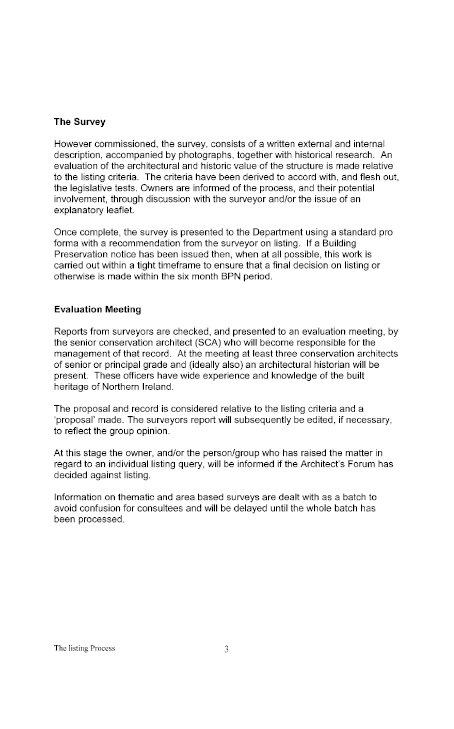
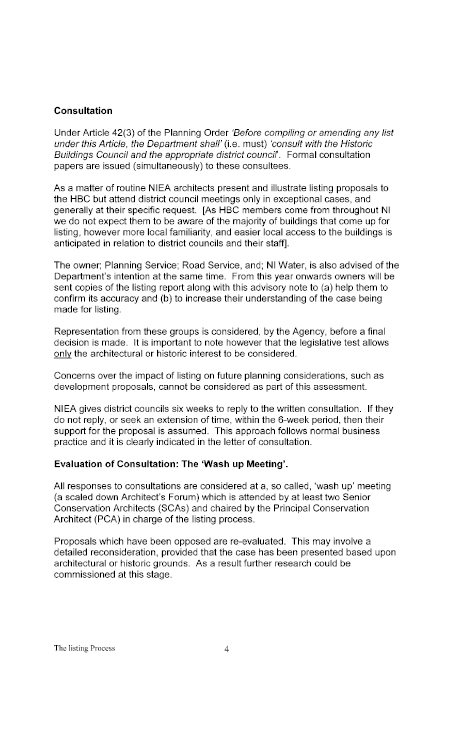
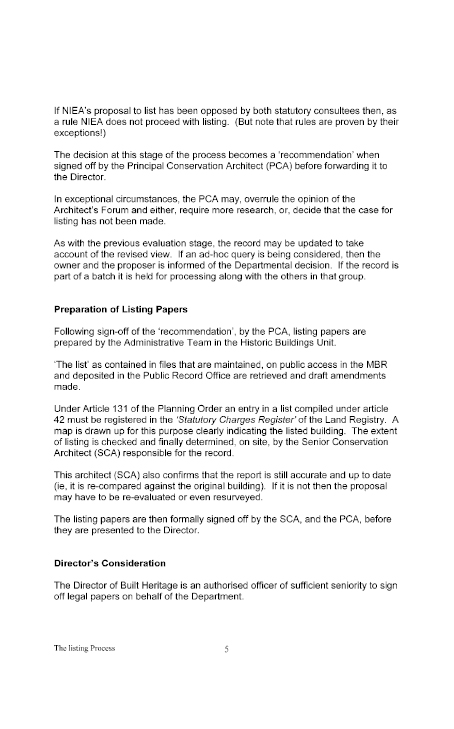
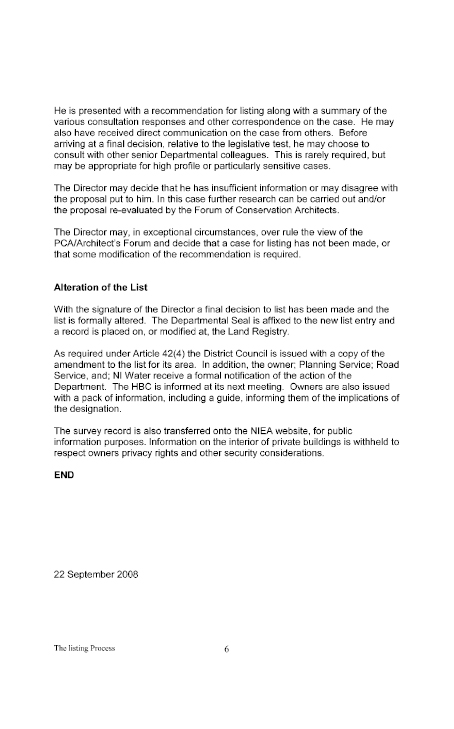
For Alex McGarel, Committee Clerk, Environment Committee
Proposed Amendments to Planning Reform Bill.
I am the spokesman for fifteen residents groups which provide representation for a complete cross-section of South Belfast.
We have met our politicians many times over the past seven years. Our South Belfast politicians are in total agreement with us regarding the need for the amendments we have suggested, mainly because the amendments are long overdue and would lead to a more democratic system, while reducing the workload of the Planning Service or whatever body takes over role of Planning.
On Thursday 20th January 2011 we met our MLAs and councillors and put forward our list of amendments to the Reform Bill. We met our MLAs today, Tuesday 1st Feb. 2011 in room 279 in Stormont to finalise our amendments, with their assistance. They recommended that I write to you.
Justification. It is plainly wrong that a developer should be allowed to carry on building while the planning authority considers the retrospective application. It would obviate unwelcome extra work for the planning authority because it would prevent the developer creating a situation which is clearly untenable and which would have to be opposed. It makes it easier for the authority to issue a firm refusal to an obviously unacceptable development and establish the principle that when the authority says NO, it means NO.
It would also be advantageous to include an obligation on the part of the Planning Authority to monitor periodically development rather than depend on residents to inform them.
Justification. The introduction of TPRA need not add to the planning burden. A range of restrictions can be imposed to deter vexatious or frivolous objections. It would improve the quality of the planning applications. It would encourage the planning being sought to be rigorously inspected before an application is made. It would involve the community in all aspects of planning and so enhance local democracy.
Other planning issues. We are particularly concerned by the grossly unfair advantage the developer has through “Presumption in favour of development". We recommend that this be applicable only to development that is clearly in the economic interests of the country. In conservation areas there should be a presumption against development. Or more precisely the developer must prove that the proposed development will enhance the conservation area. For residential and conservation areas, the onus must be firmly placed on the developer to prove that no harm will be done. Many residential areas have suffered a detrimental effect by the Planning Service justifying planning decisions using the PRESUMPTION IN FAVOUR OF DEVELOPMENT route.
Yours sincerely
Paddy McCrossan, Deramore Residents Association
| Table 3 | Ballymena | Belfast | Coleraine | Craigavon | Downpatrick | Enniskillen | Headquarters | Londonderry | Omagh | Total |
| Unknown code: | 1 | 1 | ||||||||
| Remedied/Resolved | 19 | 37 | 16 | 43 | 36 | 14 | 41 | 22 | 54 | 282 |
| Planning Permission Granted | 70 | 86 | 56 | 100 | 75 | 26 | 12 | 29 | 62 | 516 |
| Not Expedient | 57 | 74 | 25 | 134 | 78 | 18 | 7 | 20 | 44 | 457 |
| No Breach | 86 | 133 | 46 | 159 | 201 | 31 | 31 | 32 | 102 | 821 |
| Immune | 13 | 23 | 6 | 69 | 32 | 3 | 1 | 17 | 22 | 186 |
| Appeal Allowed/Notice Quashed | 1 | 1 | 3 | 1 | 2 | 2 | 4 | 14 | ||
| 246 | 354 | 152 | 506 | 425 | 94 | 92 | 120 | 288 | 2277 |
Enforcement Activity for 2008 Calendar Year
| Breach Type | BA | BLF | CR | DPT | HQ | LO | OM | Total |
| Breach of Planning Condition | 56 | 37 | 48 | 79 | 16 | 83 | 46 | 365 |
| Change of Use | 126 | 115 | 51 | 56 | 102 | 54 | 52 | 556 |
| Demolition Conservation Area | 1 | 1 | 1 | 2 | 5 | |||
| Listed Building | 4 | 2 | 3 | 1 | 10 | |||
| Miscellaneous | 4 | 7 | 11 | |||||
| Non Compliance | 131 | 91 | 2 | 94 | 4 | 47 | 52 | 421 |
| Operational Devt | 240 | 108 | 168 | 355 | 93 | 96 | 314 | 1374 |
| Tree Preservation Order | 2 | 6 | 1 | 14 | 3 | 26 | ||
| Unauthorised Sign | 40 | 168 | 18 | 61 | 62 | 46 | 395 | |
| Unpermitted Building | 22 | 201 | 217 | 70 | 159 | 33 | 702 | |
| Works to Listed Building | 2 | 3 | 5 | 3 | 2 | 15 | ||
| Total | 618 | 737 | 508 | 744 | 215 | 509 | 549 | 3880 |
| Breach Type | BA | BLF | CR | DPT | HQ | LO | OM | Total |
| Breach of Planning Condition | 2 | 3 | 14 | 5 | 22 | 38 | 84 | |
| Change of Use | 98 | 61 | 6 | 29 | 104 | 36 | 33 | 367 |
| Demolition Conservation Area | 1 | 2 | 6 | 2 | 11 | |||
| Listed Building | 1 | 3 | 2 | 2 | 6 | 3 | 17 | |
| Miscellaneous | 103 | 6 | 130 | 2 | 52 | 2 | 295 | |
| Non Compliance | 198 | 123 | 30 | 184 | 13 | 91 | 82 | 721 |
| Operational Devt | 259 | 38 | 51 | 154 | 101 | 25 | 327 | 955 |
| Tree Preservation Order | 2 | 3 | 15 | 6 | 26 | |||
| Unauthorised Sign | 46 | 145 | 7 | 49 | 112 | 68 | 427 | |
| Unpermitted Building | 14 | 273 | 220 | 100 | 221 | 29 | 857 | |
| Works to Listed Building | 1 | 3 | 1 | 5 | 10 | |||
| Total | 621 | 754 | 323 | 686 | 225 | 568 | 593 | 3770 |
| Breach Type | BA | BLF | CR | DPT | HQ | LO | OM | Total |
| Breach of Planning Condition | 4 | 3 | 3 | 1 | 5 | 1 | 5 | 22 |
| Change of Use | 5 | 20 | 9 | 45 | 5 | 15 | 99 | |
| Listed Building | 1 | 1 | ||||||
| Miscellaneous | 3 | 3 | ||||||
| Non Compliance | 2 | 1 | 2 | 2 | 1 | 2 | 10 | |
| Operational Devt | 16 | 11 | 12 | 3 | 20 | 10 | 53 | 125 |
| Tree Preservation Order | 1 | 1 | 2 | |||||
| Unauthorised Sign | 1 | 1 | ||||||
| Unpermitted Building | 9 | 8 | 2 | 1 | 20 | |||
| Works to Listed Building | 1 | 1 | 1 | 3 | ||||
| Total | 27 | 51 | 35 | 8 | 71 | 17 | 77 | 286 |
Enforcement Activity for 2009 Calendar Year
| Description | BA | BLF | CR | DPT | HQ | LO | OM | Total |
| Breach of Planning Condition | 106 | 70 | 114 | 137 | 26 | 125 | 125 | 703 |
| Change of Use | 127 | 201 | 123 | 65 | 79 | 89 | 59 | 743 |
| Demolition Conservation Area | 2 | 5 | 1 | 8 | ||||
| Non Compliance | 4 | 9 | 12 | 2 | 1 | 8 | 36 | |
| Operational Devt | 199 | 316 | 314 | 368 | 59 | 254 | 350 | 1860 |
| Tree Preservation Order | 3 | 7 | 1 | 13 | 9 | 3 | 36 | |
| Unauthorised Sign | 36 | 133 | 39 | 56 | 79 | 104 | 447 | |
| Unpermitted Building | 6 | 8 | 7 | 2 | 10 | 22 | 55 | |
| Works to Listed Building | 2 | 3 | 14 | 5 | 16 | 40 | ||
| Total | 483 | 749 | 617 | 658 | 166 | 583 | 672 | 3928 |
| Breach Type | BA | BLF | CR | DPT | HQ | LO | OM | Total |
| Breach of Planning Condition | 109 | 82 | 162 | 105 | 21 | 136 | 102 | 717 |
| Change of Use | 131 | 225 | 123 | 56 | 168 | 86 | 76 | 865 |
| Demolition Conservation Area | 1 | 2 | 1 | 1 | 1 | 6 | ||
| Listed Building | 1 | 1 | 3 | 2 | 7 | |||
| Miscellaneous | 17 | 9 | 46 | 2 | 5 | 1 | 80 | |
| Non Compliance | 46 | 53 | 47 | 87 | 13 | 13 | 31 | 290 |
| Operational Devt | 286 | 275 | 460 | 412 | 84 | 252 | 393 | 2162 |
| Tree Preservation Order | 2 | 6 | 2 | 13 | 10 | 2 | 35 | |
| Unauthorised Sign | 41 | 180 | 84 | 50 | 79 | 105 | 539 | |
| Unpermitted Building | 15 | 88 | 441 | 50 | 2 | 50 | 31 | 677 |
| Works to Listed Building | 1 | 2 | 11 | 5 | 16 | 2 | 37 | |
| Total | 632 | 931 | 1341 | 828 | 290 | 649 | 744 | 5415 |
| Breach Type | BA | BLF | CR | DPT | HQ | LO | OM | Total |
| Breach of Planning Condition | 10 | 4 | 24 | 8 | 7 | 19 | 72 | |
| Change of Use | 8 | 10 | 52 | 25 | 10 | 15 | 120 | |
| Non Compliance | 1 | 1 | ||||||
| Operational Devt | 24 | 24 | 72 | 21 | 15 | 50 | 206 | |
| Tree Preservation Order | 1 | 1 | ||||||
| Unpermitted Building | 3 | 1 | 1 | 5 | ||||
| Works to Listed Building | 1 | 1 | ||||||
| Total | 42 | 41 | 149 | 1 | 54 | 33 | 86 | 406 |
New Clause before Clause 224
‘Review of Planning Reform Act
223A.-(1) The department must-
(a) not later than 3 years after the commencement of this Act, and
(b) at least once in every period of 5 years thereafter, review and publish a report on the implementation of this Act.
(2) Regulations under this section shall set out the terms of the review.’
Planning Reform Bill
Draft Amendments for Committee
Clause 84, page 53, line 37
Leave out ‘£30,000’ and insert ‘£100,000
Clause 116, page 75, line 31
Leave out ‘£30,000’ and insert ‘£100,000
Clause 125, page 80, line 26
Leave out ‘£30,000’ and insert ‘£100,000
Insert New Clause after Clause 78
‘Community Amenity Levy
78A. (1) The department may make regulations providing for the imposition of a charge to be known as Community Amenity Levy (CAL).
(2) In making the regulations the department shall aim to ensure that the overall purpose of CAL is to ensure that the costs incurred by councils in providing amenities can be funded (wholly or partly) by contributions from owners or developers of land.
(2) The regulations shall include a charging schedule setting rates or other criteria by reference to which the amount of CAL chargeable in respect of development is to be determined.
(3) The regulations must include provision about enforcement of CAL, rights of appeal and collection of CAL.
(4) The regulations may provide for exemptions from liability to pay CAL.
(5) A council may charge CAL in respect of local developments in its area.’
New Clause
After Clause 187 insert
‘Compensation: decision taken by council where consultee fails to respond under section 224
At end insert-
‘187A. (1) Where a consultee fails to respond to a council consultation in accordance with section 224(3) and that council:
(a) takes a decision under this Act in the absence of such a response; and
(b) subsequently receives information which the council could reasonably expect to have been included in that response; and
(c) decides to revoke or modify planning permission due to the information referred to in paragraph (b); and
(d) compensation is payable by a council under section 178 in connection with the decision under paragraph (c);
the relevant department shall pay to the council the amount of compensation payable.
(2) For the purposes of subsection (1) “the relevant department" means the department (if any) to which the consultee is accountable.’
 Private Office
Private Office
Clarence Court
10-18 Adelaide Street
BELFAST
BT2 8GB
Telephone: 028 90 5 40855
Facsimile: 028 90 5 41169
Email: una.downey@doeni.gov.uk
Your reference:
Our reference: CQ/286/11
Mrs Alex McGarel
Clerk to the Environment Committee
Northern Ireland Assembly
Parliament Buildings
Ballymiscaw
Stormont
Belfast
BT4 3XX Date: 15 February 2011
Dear Alex
I refer to the request for amendments made by the Environment Committee on Friday 10 February
In my letter yesterday, I set out the Minister’s responses to the majority of the questions posed. I now attach in the annex to this letter the amendments as drafted.
The Minister will not be bringing forward amendments on Clause 224 or on a two year review of the Bill. The amendment substituting Attorney General for Advocate General at Clause 229 is being drafted and will follow.
As regards clause 116 – fines go to the consolidated fund – that is to Treasury.
Thank you for your clarifying your query on clause 131 - we will respond separately on 130 and 131.
You asked this morning for a further amendment to Clause 102 and a different amendment to follow Clause 58 – we are working on these and will respond as soon as we have had the opportunity to discuss with the Minister.
I trust this information is of assistance, should you require anything further please contact me directly.
Yours sincerely,
DALO
[by email]
Amendments
Clause 1, Page 1, Line 10
Leave out ‘contributing to the achievement of’ and insert ‘furthering’
Clause 5, Page 3, Line 25
Leave out ‘contributing to the achievement of’ and insert ‘furthering’
Clause 84, Page 53, Line 37
Leave out ‘£30,000’ and insert ‘£100,000’
Clause 116, Page 75, Line 31
Leave out ‘£30,000’ and insert ‘£100,000’
Clause 125, Page 80, Line 26
Leave out ‘£30,000’ and insert ‘£100,000’
Clause 136, Page 87, Line 18
Leave out ‘£30,000’ and insert ‘£100,000’
Clause 146, Page 95, Line 15
Leave out ‘£30,000’ and insert ‘£100,000’
Clause 149, Page 98, Line 6
Leave out ‘£30,000’ and insert ‘£100,000’
Clause 215, Page 140, Line 2
After ‘it’ insert ‘-(a)’
Clause 215, Page 140, Line 2
After ‘(a)’ insert ‘: or
(b)’
The Minister is not bringing forward an amendment on this issue
Amendment being drafted and will follow
As previously indicated, the Minister is not bringing forward an amendment on this issue.

Private Office
Clarence Court
10-18 Adelaide Street
BELFAST
BT2 8GB
Telephone: 028 90 5 40855
Facsimile: 028 90 5 41169
Email: una.downey@doeni.gov.uk
Your reference:
Our reference: CQ/286/11
Mrs Alex McGarel
Clerk to the Environment Committee
Northern Ireland Assembly
Parliament Buildings
Ballymiscaw
Stormont
Belfast
BT4 3XX Date: 14 February 2011
Dear Alex
I refer to the request for amendments made by the Environment Committee on Friday 10 February
The attached annexes sets out the Minister’s responses to the majority of the questions, Annex 1 deals with amendments and Annex 2 with general information. We are still working on some of the Committee’s points and will provide further information as soon as it is available.
I trust this information is of assistance, should you require anything further please contact me directly.
Yours sincerely,
DALO
[by email]
Amendments
Clause 1 – the Committee asked for consideration of an amendment “leave out line 11 and insert (i) furthering sustainable development and (ii) promoting or improving social well-being.
The Minister has agreed to an amendment referring to “further and sustainable development". Well-being does not appear in statute and so cannot be referenced in the Bill. However, this is something which can be addressed very effectively through PPS1 under sustainable development and references to legislative links between community planning and development plans.
Amendment to follow.
Clause 58 – In our February 9 response to CQ 282 we indicated that the Minister, as asked by the Committee would bring forward an amendment restricting the introduction of new material at planning appeals.
The Minister’s amendment is as follows:
New clause
After clause 58 insert—
‘Matters which may be raised in an appeal under section 58
.—(1) In an appeal under section 58, a party to the proceedings is not to raise any matter which was not before the council or, as the case may be, the Department at the time the decision appealed against was made unless that party can demonstrate—
(a) that the matter could not have been raised before that time, or
(b) that its not being raised before that time was a consequence of exceptional circumstances.
(2) Nothing in subsection (1) affects any requirement or entitlement to have regard to—
(a) the provisions of the local development plan, or
(b) any other material consideration.’
Clauses 84, 116, 125 and other Clauses, The Committee agreed amendments to these clauses to raise the levels of fines from £30,000 to £100,000 and wishes to know whether the Minister might adopt these amendments.
The Minister is minded to support this increase. Amendment to follow.
Clause 178 – The Committee asked for consideration of a possible amendment to require the Department to pay any compensation due when a councils is not fulfilling its responsibilities under the legislation and the Department exercises its intervention powers to revoke a planning permission.
As the councils remains the responsible authority, it should be liable for the compensation costs, the Minister will not bring forward this amendment.
Clause 202 – In our February 9 response to CQ 282 indicated that, as the Committee asked, the Minister would bring forward an amendment allowing costs to be awarded where a party has been put to unnecessary expense and where the PAC has established that the other party has acted unreasonably.
The Minister’s amendment is as follows:
New clause
After clause 202 insert—
‘Power to award costs
202A.—(1) The appeals commission may make an order as to the costs of the parties to an appeal under section [Department/DSO to supply current clause numbers of the Bill], and as to the parties by whom the costs are to be paid.
(2) An order made under this section shall have effect as if it had been made by the High Court.
(3) Without prejudice to the generality of subsection (2)(a), the Master (Taxing Office) shall have the same powers and duties in relation to an order made under this section as the Master has in relation to an order made by the High Court.
[(4) Proceedings before the appeals commission shall, for the purposes of the Litigants in Person (Costs and Expenses) Act 1975 (c. 47), be regarded as proceedings to which section 1(1) of that Act applies.]’
New clause
After clause 202 insert—
‘Orders as to costs: supplementary
202B.—(1) This section applies where—
(a) for the purpose of any proceedings under this Act—
(i) the appeals commission is required, before a decision is reached, to give any person an opportunity, or ask any person whether that person wishes, to appear before and be heard by it; and
(ii) arrangements are made for a hearing to be held;
(b) the hearing does not take place; and
(c) if it had taken place, the appeals commission would have had power to make an order under section 202A requiring any party to pay any costs of any other party.
(2) Where this section applies the power to make such an order may be exercised, in relation to costs incurred for the purposes of the hearing, as if the hearing had taken place.’
Clause 215 – the Committee has asked that this clause be made less cumbersome.
Redraft to follow.
Clause 224 – The Committee asked for an amendment in relation to compensation.
The Minister will not bring forward such an amendment.
Clause 229 – Department of Justice has advised that this clause should refer to the Attorney General.
Amendment to follow
We have also identified the following few further textual amendments to be moved at Consideration Stage. These amendments are proposed to provide consistency of approach throughout the Bill. They do not impact on the policy content of the Bill.
Clause 8, Page 5, Line 11
At end insert-
‘(7) A plan strategy is a plan strategy only if it is -
(a) adopted by resolution of the council; or
(b) approved by the Department in accordance with section 16(6).’
Clause 9, page 5, Line 36
At end insert-
‘(8) A local policies plan is a local policies plan only if it is -
(a) adopted by resolution of the council; or
(b) approved by the Department in accordance with section 16(6).’
Schedule 6, Page 195, Line 14
At end insert -
‘39A. In Articles 14 and 15 for “Department “ substitute “council".’
Planning Bill Environment Committee Request CQ
The Departmental officials agreed to consider an amendment to Leave out line 11 and insert-
(i) furthering sustainable development; and
(ii) promoting or improving social well-being.
See Annex 1
The Departmental officials to provide the Committee with examples of guidance for simplified planning zones and to consider an amendment to the Clause to include the following criteria, a time period, thresholds and a sound business case.
In Scotland the following circular contains guidance on SPZ procedures:
http://www.scotland.gov.uk/Publications/1995/08/circular-18-1995
In England and Wales PPG 5 Simplified Planning Zones was published in November 1992 but was cancelled and replaced by Planning Policy Statement 4: Planning for Sustainable Economic Growth (PPS4) published on 29 December 2009. There is only a brief reference to SPZs in PPS4:
“Local authorities should make full use of planning tools to facilitate development, including compulsory purchase orders and other planning tools including area action plans, simplified planning zones and local development orders"
The Planning Bill sets the time Period for SPZs as 10 years. It will be possible for councils to set their own thresholds when they prepare their SPZs in accordance with local circumstances.
All councils will be expected to comply with normal public sector guidance in relation to business cases and economic appraisals etc.
The Committee agreed to an amendment to the Clause to the raise the level of fine to £100,000 and Departmental officials agreed to report back to members if the Minister would be prepared to consider an amendment to this effect.
See Annex 1
The Committee agreed to revisit this clause at Tuesday’s meeting. The Department may wish to be prepared to answer queries in relation to arson attacks on listed buildings.
Noted
The Departmental officials agreed to provide clarification on the respective roles of NIEA and the Planning Authority with regards to hazardous substances.
Hazardous substances must be disposed of in ways which render them as safe as possible and minimise their environmental impact. Their disposal must be in line with the following NIEA regulations:
The Hazardous Waste Regulations (NI) 2005, deal with the movement of hazardous waste in Northern Ireland.
The Departmental officials agreed to provide a list of the substances in the regulations, the level of fine in the Republic of Ireland, how often the fine has been used and clarification on who keeps the fines.
The list of Hazardous substances is contained at Appendix 3.
Only one warning letter has been issued in Northern Ireland regard to a hazardous substances contravention in recent years.
Planning Service, Minerals Unit meet with HSENI usually monthly to discuss any upcoming or potential cases and new sites and advice is provided by both parties to new or proposed applicants in addition to any sites interested in raising quantities. In addition, when new or amended legislation is made any sites potentially affected are usually highlighted and informed at the earliest opportunity thus avoiding the incidence of a breach.
The Committee agreed to an amendment to the Clause to the raise the level of fine to £100,000 and Departmental officials agreed to report back to members if the Minister would be prepared to consider a Departmental amendment to this effect.
See Annex 1
The Departmental officials agreed to provide information on how many closed breaches were brought to a conclusion or just dropped and an indication of the types of breaches were being investigated in the open cases.
See information at Appendix 1 – attached as pdf document
The Departmental officials agreed to provide clarification on when a breach would occur, would this clause apply to open cases and an indication of the types of open cases.
Clarification required on this.
The Committee agreed to defer a decision on these Clauses until it had received an answer from the Department to queries on Clause 130.
Information on Clause 130 is at Appendix 1
The Committee agreed to defer a decision on this Clause until it had sight of the Departmental amendment.
See Annex 1
The Departmental officials agreed to provide more information on how the level of scrutiny under this Clause ties in with the audit function.
Clause 203 gives the Department powers to conduct an assessment of a council’s performance, or to appoint a person to do so. The assessment may cover the council’s performance of their planning functions in general or of a particular function. Together with clause 204 – 206 it forms a key part of the Department’s audit role for council functions.
A key way to demonstrate the effectiveness and integrity of the planning system will be through governance and performance management arrangements. The role of audit, inspection, performance management and monitoring will be critical in ensuring that planning functions are carried out and are seen to be carried out in a clear, fair and consistent manner and that best practice is applied across the new district councils. These functions will also be important in providing a quality assurance service for the councils.
At present, the Department has its own planning audit function which undertakes regular reviews of planning processes within the Planning Service. In relation to councils, the Local Government Auditor is currently responsible for financial and value for money audits. However, the nature of these local government audits is very different from the planning audit function, which focuses primarily on specialist planning issues.
In light of the views previously expressed by political representatives, including the Environment Committee, industry representatives and others in relation to the need for strong governance arrangements, the Department proposed that central government should have a statutory audit / inspection function. An audit / inspection function of this nature could cover general or function-specific assessments of local government’s planning functions, reviewing planning processes and the application of policy, with a focus on quality assurance, advice and the promotion of best practice. It is the Department’s view that this approach would help to provide further assurance to the public that the planning system is open, fair and transparent.
The Departmental officials agreed to consider amending the wording of this Clause as it was felt the current language is cumbersome.
See Annex 1
The Departmental officials agreed to consider an amendment that ensures councils will not be liable for decisions or compensation as a result of a non response from a statutory consultee to a consultation with the deadline.
See Annex 1
The Departmental officials stated that they were still awaiting a reply from the Department of Justice on this Clause and the Committee deferred a decision on the Clause until it had sight of the reply.
See Annex 1
The Committee has called for a two year review of the legislation to be built into the Bill and would like to know if the Department has decided if this will be included and, if so, what amendments to the Bill will be necessary.
See Annex 1
During discussions of a Community Infrastructure Levy the Departmental officials agreed to provide the Committee with guidance on planning agreements and information on developer contributions.
The Guidance on Planning Agreements is attached separately as Appendix 2.
Developer contributions is a separate issue from planning reform and the transfer of planning functions to councils. There were no firm proposals in the planning reform consultation paper – the intention was simply to initiate debate on the issue.
Responses to the consultation identified an appetite for seeking increased contributions to support the delivery of infrastructure necessary to deliver Northern Ireland’s economic and social development.
However, given that this is an issue which cuts across the provision of infrastructure by a number of departments, the Minister has recommended that it be considered at Executive level in relation to the funding and infrastructure responsibilities of central government departments.
In light of the current cuts in public expenditure it is important that the Executive explores the possibility of levering private funds to deliver wider public infrastructure. The Department will contribute to this future work to investigate what role the planning process might play in any future system of contributions.
The Committee would like to know on what basis, or against what framework, the Department will make decisions for major applications and those of regional significance. In the absence of a land use strategy, how will consistency be achieved?
The Department will make decisions on regionally significant applications based on the policy framework provided by the Regional Development Strategy, PPSs, Local Development Plans and other relevant material considerations.
The RDS currently provides a land use strategy of sorts for Northern Ireland to a greater extent than, for example, the National planning Framework does in Scotland. However, if such a land use strategy is required, clause 1 of the Planning Bill gives the Department the power to develop one in due course.
Environment Committee
Additional Enforcement Statistics
14 February 2011
Prior to April 2009, Planning Service did not retain full electronic records for Enforcement and as such, a detailed break down of case closure information prior to the 1 April 2009 would not be readily available.
Reason for closure information for cases closed during the 2009/10 business year is set out in Table 1 below.
| Reason For Closure | Number |
| Remedied/Resolved | 1093 |
| Planning Permission Granted | 842 |
| Not Expedient | 978 |
| No Breach | 1636 |
| Immune | 324 |
| Appeal Allowed/ Notice Quashed | 26 |
| Total | 4899 |
Based on cases closed during the 2009/10 business year, 73 cases have proceeded to court and of these, 59 have resulted in a successful prosecution.
It is important to note that the vast majority of breaches of planning control are resolved informally through negotiation with the owner/occupier or through the submission and consideration of a retrospective planning application.
Breach of Condition and Material Change of Use cases would fall within the time frame for taking enforcement action under the 10 year rule.
Where there has been a breach of planning control consisting in the change of use of any building to use as a dwelling house, no enforcement action may be taken after the end of the period of 4 years beginning with the date of the breach.
In the 2009/10 business year, Planning Service received 800 Breach of Condition and 836 Material Change of Use Cases. 1221 cases were closed (577 Breach of Condition and 646 Change of Use) as of 10 February 2011 which represents 75% of Cases.
Reason for closure information in respect of Breach of Condition and Material Change of use cases only is set out in Table 2 below.
| Reason For Closure | Number |
| Remedied/Resolved | 260 |
| Planning Permission Granted | 130 |
| Not Expedient | 229 |
| No Breach | 519 |
| Immune | 76 |
| Appeal Allowed/ Notice Quashed | 2 |
| Unknown code | 5 |
| Total | 1221 |
All figures have been extracted from a live data set which is continuously updated and validated. They should therefore be regarded as indicative only at this point in time and should not be compared with any previous figures published by the agency.
Planning Agreements and the Planning (Modification and Discharge of Planning Agreements) Regulations (Northern Ireland) 2005
PC 06/05
September 2005
1. The purpose of this circular is to alert you to the Planning (Modification and Discharge of Planning Agreements) Regulations (Northern Ireland) 2005 and associated arrangements, which came into operation on 31st August 2005.
2. Article 23 of the Planning (Amendment) (Northern Ireland) Order 2003 amends by substitution Article 40 of the Planning (Northern Ireland) Order 1991. This enables the Department to enter into planning agreements with any person who has an estate in land for the purposes of:-
3. Agreements may be unconditional or subject to conditions and may only be entered into by way of a legal document. The legal document must state that the agreement is a planning agreement for the purposes of Article 40 of the Planning Order. It must identify the land in which the person entering into the agreement has an estate and must identify the person entering into the agreement and his estate in the land.
4. Planning Policy Statement 1 sets out the general principles[1] governing the use of Planning Agreements and states that:-
“If there is a choice between imposing planning conditions and entering into a planning agreement, the Department will normally opt for conditions since they are simpler to administer and are subject to appeal…Before entering into an agreement, the Department will wish to be satisfied that it provides an acceptable means of overcoming particular obstacles to development"
5. PPS1 also clarifies that the Department will only seek an agreement where the perceived benefit is related to the development and necessary to the grant of planning permission. It sets out the circumstances which the Department regards as reasonable to seek planning agreements: -
6. Other Planning Policy Statements also make reference to the use of planning agreements and when they may be appropriate in relation to specific development proposals.
7. Requests for the preparation of Planning Agreements should be made by the Division directly to Departmental Solicitors Branch.
8. When discussing the detail of any proposed planning agreement with the applicant, he should be made aware that the agreement will contain a clause allowing the Department to register the agreement as a charge in the Registry of Deeds or Land Registry whichever is appropriate.
9. The agreement does not confer planning permission nor does it determine the outcome of a related application. An agreement must be signed before planning permission is granted.
10. Under new Article 40(3) a provision has been added that before entering into an agreement, the Department must consult with the local district council. The council is given 4 weeks to comment on the proposed agreement. Attached at Annex A is the draft letter to be used when consulting with council. A significant level of detail should be included in the letter to allow the council to fully consider the purpose of the agreement and its implications.
11. Any breach of the agreement is enforceable against the person entering into the agreement and any person deriving title from that person. There is no time limit for enforcement action.
12. The legal document by which the agreement is entered into may provide that a person is not bound by the agreement for any period during which he no longer has an estate in the land. This enables someone entering into a planning agreement to cease to be bound by its terms once he has disposed of his interest in the land concerned.
13. Any restriction imposed under agreement is enforceable by injunction, which means the Department can take action where there is a clear or threatened breach of the agreement.
14. If there is a breach of a requirement to carry out operations in, on, over or under land to which the agreement relates, the Department has the power to enter onto the land and carry out the operations, and recover any expenses incurred from the person against which the agreement is enforceable. Before the Department enters onto the land to carry out such operations, it must give 21 days notice of its intention to do so to anyone against whom the agreement is enforceable. Any person who wilfully obstructs the Department if it enters the land shall be guilty of an offence and liable on summary conviction to a fine of up to £1000.00.
15. Article 40A of the 1991 Order (Modification and Discharge of Planning Agreement) introduces new provisions to allow for the modification and discharge of an agreement. Under this Article there are two ways in which an existing agreement may be modified or discharged:-
16. Where the applicant requests the Department to enter into a new agreement, the Department must first consult with the local council. The Department must write to the Council advising that they have been requested to enter into a new agreement and including a significant level of detail to allow the council to the consider the implications of the new agreement. Any new agreement between the Department and the applicant must be contained in an instrument under seal.
17. Alternatively, the applicant may decide to make an application to the Department. An application to modify or discharge may only be made after 5 years, beginning with the date on which the agreement was entered into. This provision applies to existing agreements in the same manner as it applies new agreements.
18. The Department may then determine that:-
19. An application for modification or discharge of an agreement may not result in the imposition of an obligation on any other person against whom the agreement is enforceable – it may only result in the imposition of an obligation on the person making the application to the Department.
20. Where on receipt of an application to modify or discharge an agreement, the Department determines that the agreement should be discharged or modified, there is no requirement to draw up a new agreement under Article 40.
21. The Planning (Modification and Discharge of Planning Agreements) Regulations (Northern Ireland) 2005 make provision for the form and content of applications to modify or discharge an agreement, procedures for notification of the application by the applicant, publicity for such applications and the notice of determination to be given to applicants.
22. Applications to modify or discharge a planning agreement should be entered and validated on the 20/20 system in the normal way - the Application Type drop-down list has been amended to include ‘Modify/Discharge Agreement’. The requirements for a valid application are detailed at Regulation 2 of the Planning (Modification and Discharge of Planning Agreements) Regulations (Northern Ireland) 2005.
23. An application to modify or discharge should be made on application form MDA1 which is available on the Department’s website. The Regulations prescribe the information that is required by the Department and includes:
24. The Regulations also prescribe that an application to modify or discharge an agreement must be accompanied by:
25. In the case of an application to modify an agreement, the Department can only consider the modifications specified in the application. Therefore, it is important to ensure that the modifications are clearly set out in the application form.
26. Where an agreement is enforceable against persons other than the applicant, the regulations require the applicant to give notice of the application to any other third party against whom the agreement is enforceable, or was enforceable 21 days before the date of the application.
27. The applicant is required to take reasonable steps to ascertain the name and address of every such person, but where all names and addresses are not known the applicant must publish notice of the application in a local newspaper at least 21 days before the application is submitted to the Department.
28. The notice required to be served or published must be in the form set out in Part 1 of the Schedule, which invites representation to be made to the Department within 21 days of the date on which the notice is served or published, as the case may be.
29. The application must be accompanied by a certificate certifying that these requirements have been satisfied. The certificate is prescribed at Part 2 of the Schedule and is included as part of the planning application form, entitled the Certificate of Compliance.
30. When an application has been received, the Department must consult with the local council. Attached at Annex B is the draft letter to be used when consulting with council. This letter is available on the 20/20 system and may be amended as required. When the relevant council has been entered on the Consultations page, a Notify letter can be generated. The relevant letter is entitled ‘Letter to Council on Receipt of an Application to Modify/Discharge an Agreement’. A significant level of detail should be included in the letter to allow the council to identify the existing agreement and consider the implications of modifying or discharging the agreement. The applicant’s reasons for making the application (as stated on the application form) must also be included in the letter to council.
31. The Regulations require the Department to publicise an application received for modification or discharge of an existing planning agreement by:-
32. Notice of the application must be published with the weekly list of applications as per the attached draft advertisement at Annex C. The advertisement, with the relevant details fully completed, should be sent to Graphics along with the weekly advertising schedule. The public has 4 weeks from the date the advertisement appears in the paper, or appears on the departmental website (whichever is the later) within which to submit representations.
33. The Department must also make a copy of the application, and the relevant part of the instrument by which the planning agreement was entered into, available for inspection during the 4 week period allowed for making representations.
34. The Department must give the applicant written notice of its determination within 16 weeks of receipt of the application, or an extended period as agreed in writing between the applicant and the Department.
35. Written notification is to be issued on a standard decision notice, advising that the Department determines that:
36. In the case where the Department determines that the agreement should continue to have effect without modification (as per the first bullet point), the decision notice must state the full reasons for the determination and include a statement to the effect that the applicant may appeal to the Planning Appeals Commission against the determination within 6 months of the date of the notice.
37. In the case where the Department determines that the agreement may be subject to modifications, the modifications can only be those modifications applied for on the application form and no others and these must be listed on the decision notice.
38. Copies of sample decision notices are attached at Annex D. These are available on the 20/20 system and can be generated from the drop-down list on the decision screen.
39. Article 40B of the 1991 Order (Appeals), introduces the right to appeal against the determination of an application made under Article 40A. The applicant may appeal to the PAC where the Department fails to give notice of its determination within the prescribed period (16 weeks) or where the Department determines that the original agreement shall continue to have effect without modifications.
40. Where the Department determines that the original agreement shall continue to have effect without modification, the appeal must be lodged within 6 months of the date of the decision notice.
41. Where the Department fails to give notice within the 16 week period, it is assumed that the Department has determined that the agreement remains in place without modification.
42. The PAC may then determine that:-
43. Both parties will be given an opportunity to appear before and be heard by the commission. The determination of the PAC under this Article is final.
Director of Operations
Your Reference:
Our Reference:
Date:
Chief Executive
District Council
Address
Address
Address
Dear Mr Sir
Planning Application ……………………………………………..
I refer to the above planning application which was received on ……………
The Department is currently considering entering into a legal agreement with ……………………. under Article 40 of the Planning (Northern Ireland) Order 1991 (as amended). The purpose of the agreement is:
Under the provisions of the legislation, the Department is required to consult with the local district council before entering into an agreement.
I would be grateful if you could forward any comments within 4 weeks of the date of this letter. If you have any queries, you may find it beneficial to discuss the matter with the relevant case officer at the above address.
Yours faithfully
Your Reference:
Our Reference:
Date:
Chief Executive
District Council
Address
Address
Dear Mr Sir
Application to Modify/Discharge Planning Agreement on Lands At …………
I refer to the above application to *modify/discharge an existing planning agreement.
The existing legal agreement relates to …… (description of agreement) ……… on lands at…… (address/location)……….and was entered into by the Department and ……. (name of 3rd party)……. on…(date)…….under Article 40 of the Planning (Northern Ireland) order 1991.
The Department has received an application to *modify/discharge the above agreement under Article 40A of the Planning (Northern Ireland) Order 1991. The applicant has stated his reasons for making the application as being:
Under the provisions of the legislation, the Department is required to consult with the local district council before entering into an agreement to modify or discharge an existing agreement.
I would be grateful if you could forward any comments within 4 weeks of the date of this letter. If you have any queries, you may find it beneficial to discuss the matter with the relevant case officer at the above address.
Yours faithfully
Divisional Planning Manager
* Delete as appropriate. Where application relates to modification of an agreement, please include proposed modifications as set out in the application form.
Notification of Application to *Modify/Discharge Existing Planning Agreement Under Article 40A of the Planning (Northern Ireland) Order 1991.
The Department has received an application to *modify/discharge an existing planning agreement. The agreement relates to …… (description of agreement) ……… on lands at…… (address/location)………….and was entered into by the Department and …….(name of 3rd party)……. on…(date)…….under Article 40 of the Planning (Northern Ireland) order 1991.
The application to modify/discharge the agreement, including the applicant’s reasons for applying, may be examined at the Divisional Planning Office…(address)…. between the hours of 9.30am and 4.30pm on Monday to Thursday and 10.00am – 4.20pm on Friday. It is advisable make an appointment before calling at the office.
Any person who wishes to make representations about this application should write to the Divisional Planning Office at the above address. Comments must be received by …(4 weeks from the date of publication)….. Please quote the application number in any correspondence and note that any representations made, including objections, will be publicly available on the application file.
Application No:
Location:
Proposal:
* Delete as appropriate
Modification or Discharge of A Planning Agreement
Application No:
Date of Application:
Land to which proposal relates:
Description of proposal:
Applicant: Agent:
Address: Address:
Drawing Ref:
With respect to the above-mentioned proposal the Department of the Environment in pursuance of its powers under the above Order and Regulations, and in accordance with your application hereby
which was entered into by…………………………………………………………………….. on…………………………………… in connection with application No……………………
subject to the modifications set out in this application, which were as follows:
Signed…………………………………………….
(Authorised Officer)
Date……………………………………………….
Modification or Discharge of a Planning Agreement
Application No:
Date of Application:
Land to which proposal relates:
Description of proposal:
Applicant: Agent:
Address: Address:
Drawing Ref:
With respect to the above-mentioned proposal the Department of the Environment in pursuance of its powers under the above Order and Regulations, and in accordance with your application hereby
which was entered into by………………………………………………………….. on……………………………..in connection with application No…………………
Signed…………………………………………….
(Authorised Officer)
Date……………………………………………….
Your Right of Appeal
Under Article 40B of the Planning (Northern Ireland) Order 1991 if the Department either fails to give notice of its decision within 16 weeks of the date of the application being received, or determines that the agreement shall continue to have effect without modifications, you have the right to appeal to the planning appeals commission.
Where the Department determines that the original agreement shall continue to have effect without modification, the appeal must be lodged within 6 months of the date of the decision notice.
Where the Department fails to give notice within the 16-week period, it is assumed that the Department has determined that the agreement remains in place without modification.
The PAC may then determine that:-
Both parties will be given an opportunity to appear before and be heard by the Commission. The determination of the PAC is final.
PART 1
HAZARDOUS SUBSTANCES, CONTOLLED QUANTITIES AND EXEMPTIONS
Hazardous substances and controlled quantities
— (1) Substances, mixtures or preparations—
specified in column 1 of Part A;
falling within a category in column 1 of Part B; or
meeting the description in column 1 of Part C,
of Schedule 3 and present as raw materials, products, by-products, residues or intermediates are hazardous substances for the purposes of the 1991 Order. [Amended by S.R. 2000 No. 101 regulation 3(3) (a)]
[Omitted by SR 2000 No. 101 regulation 3 (3) (b)]
The quantity specified in column 2 of Schedule 3 is the controlled quantity of the corresponding hazardous substance in column 1 of that Schedule for the purposes of the 1991 Order.
SCHEDULE 3 Regulations 3(1) and (3)
[As substituted by S.R. 2009 No. 399, Regulation 3(5)]
[As amended by S.R. 2010 No. 329 Regulation 2(2) which deleted the entry in table A, Column, no. 1]
HAZARDOUS SUBSTANCES AND CONTROLLED QUANTITIES
PART A
NAMED SUBSTANCES
| Column 1 Hazardous Substances |
Column 2 Controlled quantity (Q) tonnes |
Column 3 Quantity for the purposes of Note 4 to the notes to Parts A and B (Q*) |
| 1. Ammonium nitrate to which Note 1 of the notes to this Part applies | 5000.00 | |
| 2. Ammonium nitrate to which Note 2 of the notes to this Part applies | 1000.00 | 1250.00 |
| 3. Ammonium nitrate to which Note 3 of the notes to this Part applies | 350.00 | |
| 4. Ammonium nitrate to which Note 4 of the notes to this Part applies | 10.00 | |
| 5. Potassium nitrate to which Note 5 of the notes to this Part applies | 5000.00 | |
| 6. Potassium nitrate to which Note 6 of the notes to this Part applies | 1250.00 | |
| 7. Arsenic pentoxide, arsenic (V) acid and/or salts | 1.00 | |
| 8. Arsenic trioxide, arsenious (III) acid and/or salts | 0.10 | |
| 9. Bromine | 20.00 | |
| 10. Chlorine | 10.00 | |
| 11. Nickel compounds in inhalable powder form (nickel monoxide, nickel dioxide, nickel sulphide, trinickel disulphide, dinickel trioxide) | 1.00 | |
| 12. Ethyleneimine | 10.00 | |
| 13. Fluorine | 10.00 | |
| 14. Formaldehyde (=90%) | 5.00 | |
| 15. Hydrogen | 2.00 | 5.00 |
| 16. Hydrogen chloride (liquefied gas) | 25.00 | |
| 17. Lead alkyls | 5.00 | |
| 18. Liquefied petroleum gas, including commercial propane and commercial butane, and any mixture thereof, when held at a pressure greater than 1.4 bar absolute. | 25.00 | 50.00 |
| 19. Liquefied extremely flammable gases excluding pressurised LPG (entry no.18) | 50.00 | |
| 20. Natural gas | 15.00 | 50.00 |
| 21. Acetylene | 5.00 | |
| 22. Ethylene oxide | 5.00 | |
| 23. Propylene oxide | 5.00 | |
| 24. Methanol | 500.00 | |
| 25. 4,4-Methylenebis (2-Chloraniline) and/or salts, in powder form | 0.01 | |
| 26. Methylisocyanate | 0.15 | |
| 27. Oxygen | 200.00 | |
| 28. Toluene diisocyanate | 10.00 | |
| 29. Carbonyl dichloride (phosgene) | 0.30 | |
| 30. Arsenic trihydride (arsine) | 0.20 | |
| 31. Phosphorus trihydride (phosphine) | 0.20 | |
| 32. Sulphur dichloride | 1.00 | |
| 33. Sulphur trioxide (including sulphur trioxide dissolved in sulphuric acid to form Oleum) | 15.00 | |
| 34. Polychlorodibenzofurans and polychlorodibenzodioxins (including TCDD), calculated in TCDD equivalent (to which Note 7 of the Notes to this Part applies) | 0.001 | |
| 35. The following CARCINOGENS at concentrations above 5% by weight: 4-Aminobiphenyl and/or its salts; Benzotrichloride; Benzidine and/or salts; Bis(chloromethyl) ether; Chloromethyl methyl ether; 1,2-Dibromoethane; Diethyl sulphate; Dimethyl sulphate; Dimethylcarbamoyl chloride; 1,2-Dibromo-3-chloropropane; 1,2-Dimethylhydrazine; Dimethylnitrosamine; Hexamethylphosphoric triamide; Hydrazine; 2- Naphthylamine and/or salts; 4-Nitrodiphenyl; and 1,3 Propanesultone | 0.5 | |
| 36. Petroleum products (a) gasolines and naphthas, (b) kerosenes (including jet fuels), (c) gas oils (including diesel fuels, home heating oils and gas oil blending streams) | 2500.00 | |
| 37. Acrylonitrile | 20.00 | 50.00 |
| 38. Carbon disulphide | 20.00 | 50.00 |
| 39. Hydrogen selenide | 1.00 | 50.00 |
| 40. Nickel tetracarbonyl | 1.00 | 5.00 |
| 41. Oxygen difluoride | 1.00 | 5.00 |
| 42. Pentaborane | 1.00 | 5.00 |
| 43. Selenium hexafluoride | 1.00 | 50.00 |
| 44. Stibine (antimony hydride) | 1.00 | 5.00 |
| 45. Sulphur dioxide | 20.00 | 50.00 |
| 46. Tellurium hexafluoride | 1.00 | 5.00 |
| 47. 2,2-Bis(tert-butylperoxy) butane (>70%) | 5.00 | 50.00 |
| 48. 1,1-Bis(tert-butylperoxy) cyclohexane (>80%) | 5.00 | 50.00 |
| 49. tert-Butyl peroxyacetate (>70%) | 5.00 | 50.00 |
| 50. tert-Butyl peroxyisobutyrate (>80%) | 5.00 | 50.00 |
| 51. tert-Butyl peroxyisopropylcarbonate (>80%) | 5.00 | 50.00 |
| 52. tert-Butyl peroxymaleate (>80%) | 5.00 | 50.00 |
| 53. tert-Butyl peroxypivalate (>77%) | 5.00 | 50.00 |
| 54. Cellulose Nitrate other than— (1) cellulose nitrate for which a licence, granted under the Manufacture and Storage of Explosives Regulations (Northern Ireland) 2006(2), is required; or (2) cellulose nitrate where the nitrogen content of the cellulose nitrate does not exceed 12.3% by weight and contains not more than 55 parts of cellulose nitrate per 100 parts by weight of solution. | 50.00 | |
| 55. Dibenzyl peroxydicarbonate (>90%) | 5.00 | 50.00 |
| 56. Diethyl peroxydicarbonate (>30%) | 5.00 | 50.00 |
| 57. 2,2- Dihydroperoxypropane (>30%) | 5.00 | 50.00 |
| 58. Di-isobutyryl peroxide (>50%) | 5.00 | 50.00 |
| 59. Di-n-propyl peroxydicarbonate (>80%) | 5.00 | 50.00 |
| 60. Di-sec-butyl peroxydicarbonate (>80%) | 5.00 | 50.00 |
| 61. 3,3,6,6,9,9-Hexamethyl-1,2,4,5-tetroxacyclononane (>75%) | 5.00 | 50.00 |
| 62. Methyl ethyl ketone peroxide (>60%) | 5.00 | 50.00 |
| 63. Methyl isobutyl ketone peroxide (>60%) | 5.00 | 50.00 |
| 64. Peracetic acid (>60%) | 5.00 | 50.00 |
| 65. Sodium chlorate | 25.00 | 50.00 |
| 66. Gas or any mixture of gases (not covered by entry 20) which is flammable in air, when held as a gas | 15.00 | |
| 67. A substance or any mixture of substances which is flammable in air when held above its boiling point (measured at 1 bar absolute) as a liquid or as a mixture of liquid and gas at a pressure of more than 1.4 bar absolute (see Note 8 of the notes to this Part). | 25.00 |
1. Ammonium nitrate: fertilisers capable of self-sustaining decomposition
This applies to ammonium nitrate-based compound/composite fertilisers (compound/composite fertilisers containing ammonium nitrate with phosphate and/ or potash) in which the nitrogen content as a result of ammonium nitrate is
(a) between 15.75 per cent([3]) and 24.5 per cent([4]) by weight, and either with not more than 0.4 per cent total combustible/organic materials or which satisfy the detonation resistance test described in Schedule 2 to the Ammonium Nitrate Materials (High Nitrogen Content) Safety Regulations 2003([5]),
(b) 15.75 per cent by weight or less and unrestricted combustible materials,
and which are capable of self-sustaining decomposition according to the UN Trough Test (see United Nations Recommendations on the Transport of Dangerous Goods: Manual of Tests and Criteria, Part III, sub-section 38.2).
2. Ammonium nitrate: fertiliser grade
This applies to straight ammonium nitrate-based fertilisers and to ammonium nitrate-based compound/composite fertilisers in which the nitrogen content as a result of ammonium nitrate is
(a) more than 24.5 per cent by weight, except for mixtures of ammonium nitrate with dolomite, limestone and/or calcium carbonate with a purity of at least 90 per cent,
(b) more than 15.75 per cent by weight for mixtures of ammonium nitrate and ammonium sulphate,
(c) more than 28 per cent([6]) by weight for mixtures of ammonium nitrate with dolomite, limestone and/or calcium carbonate with a purity of at least 90 per cent,
and which satisfy the detonation resistance test described in Schedule 2 to the Ammonium Nitrate Materials (High Nitrogen Content) Safety Regulations 2003.
3. Ammonium nitrate: technical grade
This applies to
(a) ammonium nitrate and preparations of ammonium nitrate in which the nitrogen content as a result of the ammonium nitrate is
(i) between 24.5 per cent and 28 per cent by weight, and which contain not more than 0.4 per cent combustible substances,
(ii) more than 28 per cent by weight, and which contain not more than 0.2 per cent combustible substances,
(b) aqueous ammonium nitrate solutions in which the concentration of ammonium nitrate is more than 80 per cent by weight.
4. Ammonium nitrate: “off-specs" material and fertilisers not fulfilling the detonation resistance test
This applies to
(a) material rejected during the manufacturing process and to ammonium nitrate and preparations of ammonium nitrate, straight ammonium nitrate-based fertilisers and ammonium nitrate-based compound/composite fertilisers referred to in Notes 2 and 3, that are being or have been returned from the final user to a manufacturer, temporary storage or reprocessing plant for reworking, recycling or treatment for safe use, because they no longer comply with the specifications of Notes 2 and 3; and
(b) fertilisers referred to in Note 1(a) and Note 2 which do not satisfy the detonation resistance test described in Schedule 2 to the Ammonium Nitrate Materials (High Nitrogen Content) Safety Regulations 2003.
5. Potassium nitrate: composite potassium–nitrate based fertilisers composed of potassium nitrate in prilled /granular form.
6. Potassium nitrate: composite potassium–nitrate based fertilisers composed of potassium nitrate in crystalline form.
7. Polychlorodibenzofurans and polychlorodibenzodioxins
The quantities of polychlorodibenzofurans and polychlorodibenzodioxins are calculated using the following factors:
| 2,3,7,8-TCDD | 1 | 2,3,7,8-TCDF | 0.1 |
| 1,2,3,7,8-PeCDD | 0.5 | 2,3,4,7,8-PeCDF | 0.5 |
| 1,2,3,7,8-PeCDF | 0.05 | ||
| 1,2,3,4,7,8-HxCDD | 0.1 | 1,2,3,4,7,8-HxCDF | 0.1 |
| 1,2,3,6,7,8-HxCDD | 0.1 | 1,2,3,7,8,9-HxCDF | 0.1 |
| 1,2,3,7,8,9-HxCDD | 0.1 | 1,2,3,6,7,8-HxCDF | 0.1 |
| 2,3,4,6,7,8-HxCDF | 0.1 | ||
| 1,2,3,4,6,7,8-HpCDD | 0.01 | ||
| OCDD | 0.001 | 1,2,3,4,6,7,8-HpCDF | 0.01 |
| 1,2,3,4,7,8,9-HpCDF | 0.01 | ||
| OCDF | 0.001 | ||
| (T = tetra, Pe = penta, Hx = hexa, Hp = hepta, O = octa) | |||
8. Entry number 67
The controlled quantity of 25 tonnes in column 2 of entry 67 refers, in the case of a mixture of substances, to the quantity of substances within that mixture held above their boiling point (measured at 1 bar absolute).
Part B
| Column 1 Categories of hazardous substances |
Column 2 Controlled quantity (Q) in tonnes | |
| 1. | VERY TOXIC | 5.00 |
| 2. | TOXIC | 50.00 |
| 3. | OXIDISING | 50.00 |
| 4. | EXPLOSIVE ((see Note 2 to this Part) where the substance, preparation or article falls under UN/ADR Division 1.4, excluding those at a factory subject to the public hearing procedure under regulation 12 of the Manufacture and Storage of Explosives Regulations (Northern Ireland) 2006(8) or those licensed under the Explosives in Harbour Areas Regulations (Northern Ireland) 1995(9)) | 50.00 |
| 5. | EXPLOSIVE ((see Note 2 to this Part) where the substance, preparation or article falls under any of : UN/ADR Divisions 1.1, 1.2, 1.3, 1.5 or 1.6 or risk phrase R2 or R3, excluding those at a factory subject to the public hearing procedure under regulation 12 of the Manufacture and Storage of Explosives Regulations (Northern Ireland) 2006 or those licensed under the Explosives in Harbour Areas Regulations (Northern Ireland) 1995) | 10.00 |
| 6. | FLAMMABLE (where the substance or preparation falls within the definition given in Note 3(a) to this Part) | 5000.00 |
| 7. | HIGHLY FLAMMABLE (where the substance or preparation falls within the definition given in Note 3(b(i) and (b)(ii) to this Part) | 50.00 |
| 8. | HIGHLY FLAMMABLE liquids (where the substance or preparation falls within the definition given in Note 3(b)(iii) to this Part) | 5000.00 |
| 9. | EXTREMELY FLAMMABLE (where the substance or preparation falls within the definition given in Note 3(c) to this Part) | 10.00 |
| 10. | DANGEROUS FOR THE ENVIRONMENT risk phrases: (i) R50: “Very toxic to aquatic organisms" (including R50/53); (ii) R51/53: “Toxic to aquatic organisms; may cause long term adverse effects in the aquatic environment" | 100.00 200.00 |
| 11. | ANY CLASSIFICATION not covered by those given above in combination with risk phrases: (i) R14: “reacts violently with water" (including R14/15); (ii) R29: “in contact with water, liberates toxic gas" | 100.00 50.00 |
1. Substances and preparations shall be classified for the purposes of this Schedule according to regulation 4 of the Chemicals (Hazard Information and Packaging for Supply) Regulations (Northern Ireland) 2009([10]) (“CHIP") whether or not the substance or preparation is required to be classified for the purposes of those Regulations or, in the case of a pesticide approved under the Food and Environment Protection Act 1985([11]) in accordance with the classification assigned to it by that approval.
2. An “explosive" means:
(a) a substance or preparation which creates the risk of an explosion by shock, friction, fire or other sources of ignition (risk phrase R2),
(b) a substance or preparation which creates extreme risks of explosion by shock, friction, fire or other sources of ignition (risk phrase R3), or
(c) a substance, preparation or article covered by Class 1 of the European Agreement concerning the International Carriage of Dangerous Goods by Road (UN/ADR), concluded on 30 September 1957, as amended, as transposed by Council Directive 94/55/EC of 21 November 1994 on the approximation of the laws of the Member States with regard to the transport of dangerous goods by road([12]).
Included in this definition are pyrotechnics, which for the purposes of these Regulations are defined as substances (or mixtures of substances) designated to produce heat, light, sound, gas or smoke or a combination of such effects through self-sustained exothermic chemical reactions.
Where a substance or preparation is classified by both UN/ADR and risk phrase R2 or R3, the UN/ADR classification shall take precedence over assignment of risk phrases.
Substances and articles of Class 1 are classified in any of the divisions 1.1 to 1.6 in accordance with the UN/ADR classification scheme. The divisions concerned are:
Division 1.1: Substances and articles which have a mass explosion hazard (a mass explosion is an explosion which affects almost the entire load virtually instantaneously).
Division 1.2: Substances and articles which have a projection hazard but not a mass explosion hazard.
Division 1.3: Substances and articles which have a fire hazard and either a minor blast hazard or a minor projection hazard or both, but not a mass explosion hazard:
(i) combustion of which gives rise to considerable radiant heat; or
(ii) which burn one after another, producing minor blast or projection effects or both.
Division 1.4: Substances and articles which present only a slight risk in the event of ignition or initiation during carriage. The effects are largely confined to the package and no projection of fragments of appreciable size or range is to be expected. An external fire shall not cause virtually instantaneous explosion of virtually the entire contents of the package.
Division 1.5: Very insensitive substances having a mass explosion hazard which are so insensitive that there is very little probability of initiation or of transition from burning to detonation under normal conditions of carriage. As a minimum requirement they shall not explode in the external fire test.
Division 1.6: Extremely insensitive articles which do not have a mass explosion hazard. The articles contain only extremely insensitive detonating substances and demonstrate a negligible probability of accidental initiation or propagation. The risk is limited to the explosion of a single article.
Included in this definition are also explosive or pyrotechnic substances or preparations contained in articles. In the case of articles containing explosive or pyrotechnic substances or preparations, if the quantity of the substance or preparation contained is known, that quantity shall be considered for the purposes of these Regulations. If the quantity is not known, then, for the purposes of these Regulations, the whole article shall be treated as explosive.
3. In categories 6, 7, 8 and 9 “flammable", “highly flammable", and “extremely flammable" mean—
(a) flammable liquids: means substances and preparations having a flash point equal to or greater than 21 °C and less than or equal to 55°C (risk phrase R 10), supporting combustion;
(b) highly flammable liquids means—
(i) substances and preparations which may become hot and finally catch fire in contact with air at ambient temperature without any input of energy (risk phrase R 17); and
(ii) substances and preparations which have a flash point lower than 55°C and which remain liquid under pressure, where particular processing conditions, such as high pressure or high temperature, may create major-accident hazards;
(iii) substances and preparations having a flash point lower than 21 °C and which are not extremely flammable (risk phrase R 11, second indent);
(c) extremely flammable gases and liquids means—
(i) liquid substances and preparations which have a flash point lower than 0 °C and the boiling point (or, in the case of a boiling range, the initial boiling point) of which at normal pressure is less than or equal to 35 °C (risk phrase R 12, first indent); and
(ii) gases which are flammable in contact with air at ambient temperature and pressure (risk phrase R12, second indent), which are in a gaseous or supercritical state; and
(iii) flammable and highly flammable liquid substances and preparations maintained at a temperature above their boiling point.
1. Mixtures and preparations shall be treated in the same way as pure substances provided they remain within the concentration limits set according to their properties under the relevant provisions specified in CHIP, unless a percentage composition or other description is specifically given.
2. In the case of substances and preparations with properties giving rise to more than one classification the lowest thresholds shall apply.
3. Where a substance or group of substances listed in Part A also falls within a category of Part B, the controlled quantities set out in Part A must be used.
4. In the case of an establishment where no individual substance or preparation is present in a quantity above or equal to the relevant controlled quantity for that substance or preparation, the addition of hazardous substances to determine the controlled quantity shall be carried out according to the following rule:
If the sum—
q1/Q + q2/Q + q3/Q + q4/Q + q5/Q + . . . = 1
(where qx = the quantity of hazardous substance x (or category of substance) present, Q = the relevant controlled quantity (Q) from Part A or Part B, except for those substances for which column 3 of Part A contains a quantity Q*, in which case the quantity Q* shall be used in place of the controlled quantity Q in column 2) then the controlled quantity of each of the substances which are added together in accordance with each of paragraphs 5(a) to (c) below shall be deemed to be present for the purposes of Articles 53(1), 59(2)(a), 61(2)(a) of the 1991 Order and of Article 76 (enforcement notice to have effect against subsequent development) of the 1991 Order as modified by regulation 19(1) and Part 2 of Schedule 4 to the Hazardous Substances Regulations.
5. The addition rule in paragraph 4 will apply for the following circumstances:—
(a) for the addition of substances and preparations named in Part A and classified as toxic or very toxic, together with substances and preparations falling into categories 1 or 2 of Part B;
(b) for the addition of substances and preparations named in Part A and classified as oxidising, explosive, flammable, highly flammable, or extremely flammable, together with substances and preparations falling into categories 3, 4, 5, 6, 7, 8 or 9 of Part B;
(c) for the addition of substances and preparations named in Part A and classified as dangerous for the environment (R50 (including R50/53) or R51/53), together with substances and preparations falling into categories 10(i) or 10(ii) of Part B.
Part C
| Column 1 Hazardous substances |
Column 2 Controlled quantity |
| Where it is believed that a substance, which is within Part A or Part B, may be generated during loss of control of an industrial chemical process (“HS"), any substance which is used in that process (“S"). | The amount of S which it is believed may generate, on its own or in combination with other substances used in the relevant industrial chemical process, the controlled quantity of the HS in question. |
1. The expression “which it is believed may be generated during loss of control of an industrial chemical process" has the same meaning as in the Directive.
2. Where a substance falling within Part A or B also falls within Part C, the classification with the lowest controlled quantity shall apply, subject to Note 3 to the notes to Parts A and B.
[1] Planning Policy Statement 1 – General Principles, Paragraphs 62-66.
[2] S.R. 2006 No. 425
[3]15.75 per cent nitrogen content by weight as a result of ammonium nitrate corresponds to 45 per cent ammonium nitrate
[4]24.5 per cent nitrogen content by weight as a result of ammonium nitrate corresponds to 70 per cent ammonium nitrate
[5] S.I. 2003/1082
[6]28 per cent nitrogen content by weight as a result of ammonium nitrate corresponds to 80 per cent ammonium nitrate.
[7] North Atlantic Treaty Organisation / Committee for the Challenges of Modern Society
[8] S.R. 2006 No. 425
[9] S.R. 1995 No. 87
[10] S.R. 2009 No. 238
[11] 1985 c.48
[12] O.J. No. L.319, 12.12.1994, p. 7. Directive as last amended by Commission Directive 2003/28/EC O.J No. L 90,8.4.2003, p.45
Clause 1, page 1,
Leave out line 11 and insert-
(i) furthering sustainable development; and
(ii) promoting or improving social well-being.
Clause 1, page 1, line 6
At end insert-
‘(1A) The department must-
(a) not later than 3 years after the commencement of this Act, and
(b) at least once in every period of 5 years thereafter, publish a report on the implementation of this Act.’
Clause 1 - The Committee asked for an amendment to 1(2)b on contributing to sustainable development
The Minister will bring forward the following amendment:
Clause 1, Page 1, Line 11
Leave out ‘the achievement of’
Clause 1 - The Committee’s requested that “wellbeing" be added at 1 (2) b, as one of the issues the Department should keep under review.
“Wellbeing" does not yet exist in legislation and so it is not possible to refer to it in the Bill.
Clause 33 - the Committee asked that simplified planning zones be removed from the Bill
The Minister has decided not to bring forward such an amendment.
Departmental Response to Environment Committee Request after
3 February Meeting
The Committee requested details on enforcement practices to date including the number of staff transferred from Planning Service to the enforcement section and a response on how the issue of legal costs influences decisions on enforcement action.
4. This clause defines a breach of planning control and sets out that enforcement action constitutes the issuing of an enforcement notice or breach of condition notice.
5. The Committee requested details on enforcement practices to date including the number of staff transferred from Planning Service to the enforcement section and a response on how the issue of legal costs influences decisions on enforcement action. Members also requested figures on the number of enforcement cases that have arisen and how many of these the Department has considered ‘expedient’ to pursue.
6. The main enforcement powers available to the Department are contained in Part VI of the Planning (Northern Ireland) Order 1991. This primary legislation has been amended by the Planning (Amendment) (Northern Ireland) Order 2003, which introduced a number of measures including new and revised enforcement powers and penalties. Further amendments to primary legislation are contained in the Planning Reform (Northern Ireland) Order 2006.
7. Under the provisions of the Order, the Department has a general discretion to take enforcement action when it regards it as expedient to do so, having regard to the provision of the development plan and any other material considerations.
8. In exercising discretion, the Department is mindful of its duty to enforce planning legislation and to ensure that development is managed in a proactive and proportionate manner. In determining the most appropriate course of action in response to alleged breaches of planning control, the Department will take into account the extent of the breach and its potential impact on the environment. Any decision to proceed with enforcement action will also be informed by case law, precedents and appeal decisions.
9. The Departments general policy approach to dealing with breaches of planning control is contained in Planning Policy Statement (PPS) 9 ‘The Enforcement of Planning Control’.
10. In 2009, the Department published an Enforcement Strategy (copy attached) The purpose of this Strategy was to set out the Departments objectives for planning enforcement, its guiding principles and priorities for enforcement action and performance targets. This will enable the Agency’s enforcement resources to be put to the best use and it will provide guidance to Planning Service Staff, other departments and agencies.
11. In the 2004/05 business year, the decision was taken to bolster enforcement teams throughout the Agency with each Divisional Office and HQ having dedicated enforcement staff. Additional staff were allocated to enforcement teams particularly at PPTO level.
12. The number of staff employed in each of the last five years in the Planning Service enforcement section is provided in the table below.
| 2009/10 | 2008/09 | 2007/08 | 2006/07 | 2005/06 | |
| Number of staff employed in enforcement | 50 | 45 | 39 | 43 | 34 |
13. Divisional Planning Managers are responsible for both development control and enforcement functions. There is an existing close and ongoing liaison between these two functions on a daily basis. Both in cases when offices are investigating potential breaches of planning control, and when planning applications stemming from enforcement cases are submitted, the relevant case officers from the development control and enforcement sections liaise closely in order to ensure that all relevant issues are fully considered. In addition, the enforcement team will proactively monitor certain developments following the grant of planning permission to ensure the development is carried out as approved or conditions have been complied with.
14. Legal costs do not influence the Departments decisions to take enforcement action. The Departments key objectives for planning enforcement are
15. Planning Service is committed to securing these objectives in order to ensure that the credibility and integrity of the planning system is not undermined.
16. Planning Service will investigate all alleged breaches of planning control and any resulting enforcement action, without undue delay. However, when determining what (if any) action is to be taken, priority will be given to those breaches where, in the Departments opinion, the greatest harm is likely to be caused.
17. Enforcement Activity for the 2009 calendar year is set out in the tables below *.
| Description | BA | BLF | CR | DPT | HQ | LO | OM | Total |
| Breach of Planning Condition | 106 | 70 | 114 | 137 | 26 | 125 | 125 | 703 |
| Change of Use | 127 | 201 | 123 | 65 | 79 | 89 | 59 | 743 |
| Demolition Conservation Area | 2 | 5 | 1 | 8 | ||||
| Non Compliance | 4 | 9 | 12 | 2 | 1 | 8 | 36 | |
| Operational Devt | 199 | 316 | 314 | 368 | 59 | 254 | 350 | 1860 |
| Tree Preservation Order | 3 | 7 | 1 | 13 | 9 | 3 | 36 | |
| Unauthorised Sign | 36 | 133 | 39 | 56 | 79 | 104 | 447 | |
| Unpermitted Building | 6 | 8 | 7 | 2 | 10 | 22 | 55 | |
| Works to Listed Building | 2 | 3 | 14 | 5 | 16 | 40 | ||
| Total | 483 | 749 | 617 | 658 | 166 | 583 | 672 | 3928 |
| Breach Type | BA | BLF | CR | DPT | HQ | LO | OM | Total |
| Breach of Planning Condition | 109 | 82 | 162 | 105 | 21 | 136 | 102 | 717 |
| Change of Use | 131 | 225 | 123 | 56 | 168 | 86 | 76 | 865 |
| Demolition Conservation Area | 1 | 2 | 1 | 1 | 1 | 6 | ||
| Listed Building | 1 | 1 | 3 | 2 | 7 | |||
| Miscellaneous | 17 | 9 | 46 | 2 | 5 | 1 | 80 | |
| Non Compliance | 46 | 53 | 47 | 87 | 13 | 13 | 31 | 290 |
| Operational Devt | 286 | 275 | 460 | 412 | 84 | 252 | 393 | 2162 |
| Tree Preservation Order | 2 | 6 | 2 | 13 | 10 | 2 | 35 | |
| Unauthorised Sign | 41 | 180 | 84 | 50 | 79 | 105 | 539 | |
| Unpermitted Building | 15 | 88 | 441 | 50 | 2 | 50 | 31 | 677 |
| Works to Listed Building | 1 | 2 | 11 | 5 | 16 | 2 | 37 | |
| Total | 632 | 931 | 1341 | 828 | 290 | 649 | 744 | 5415 |
| Breach Type | BA | BLF | CR | DPT | HQ | LO | OM | Total |
| Breach of Planning Condition | 10 | 4 | 24 | 8 | 7 | 19 | 72 | |
| Change of Use | 8 | 10 | 52 | 25 | 10 | 15 | 120 | |
| Non Compliance | 1 | 1 | ||||||
| Operational Devt | 24 | 24 | 72 | 21 | 15 | 50 | 206 | |
| Tree Preservation Order | 1 | 1 | ||||||
| Unpermitted Building | 3 | 1 | 1 | 5 | ||||
| Works to Listed Building | 1 | 1 | ||||||
| Total | 42 | 41 | 149 | 1 | 54 | 33 | 86 | 406 |
* this information was provided to assist with CJI follow up review in April 2010.
18. In the 2009/10 business year, 4512 enforcement cases were opened in respect of alleged breaches of planning control.
Please note: All figures have been extracted from a live dataset which is continuously updated and validated. They should therefore be regarded as indicative only at this point in time and should not be compared with any previous figures published by the agency.
The Departmental officials agreed to provide further information on the number of stop notices that have been issued with an indication of how many of these were temporary stop notices that were followed by final notices. Also the Committee would like a response to the concerns raised by the South Belfast Resident’s group (emailed) and how they may be addressed in the Planning Bill.
27. Clauses 134, 135 and 136: Temporary stop notices including restrictions and offences
Clause 149: Service of stop notices by councils and Clause 150 Service of stop notices by Department; Clause 184: Compensation for loss due to stop notice; Clause 186: Compensation for loss due to temporary stop notice
28. The above are all forms of stop notices.
29. The Committee asked officials to provide further information on the number of stop notices that have been issued with an indication of how many of these were temporary stop notices that were followed by final notices. The information is provided below.
30. Prior to 2009, Planning Service did not retain full electronic records for Enforcement. However, based on a manual check of records, the number of stop notices and temporary stop notices that have been issued since (time period) are set out in the table below. In addition, an indication of the number of temporary stop notices that were followed by final notices/injunction is also provided.
| Type of Notice | Number issued |
| Stop Notice | 10 |
Temporary Stop Notice
|
7 3 1 |
Clause 237: Planning Register
The Departmental officials agreed to report back to the Committee on the compatibility of council and Departmental IT systems.
49. This clause requires all district councils to keep and make available a planning register containing copies of the items listed, which includes all applications for planning permission. A development order may require the Department to populate the register of the relevant district council when an application is submitted directly to it, or it issues a notice under departmental reserved powers.
50 The Committee requested that officials report back to the Committee on discussions with the Office of Legislative Council in relation to the commencement of the Bill being linked to local government reform.
51. The Department responded to the Committee on 8 February 2011, however it would be helpful to advise the Committee that Planning systems conform to IT best practice and use NICS strategic tool sets which enable exchange of information and integration with other IT systems.
Clause 202 – The Committee asked for consideration of an amendment to stop the practice of new information being presented at appeals
The Minister will bring forward such an amendment.
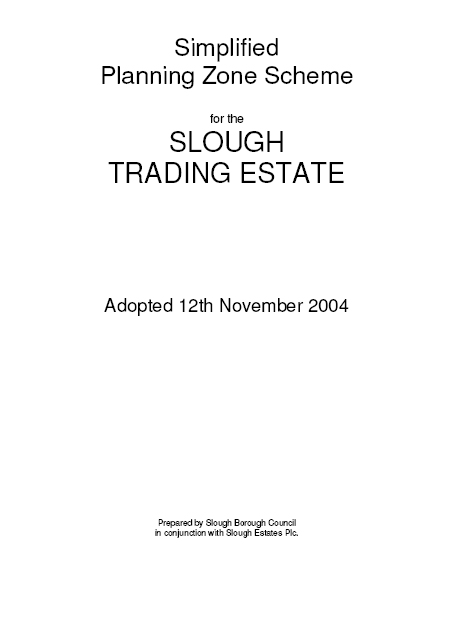


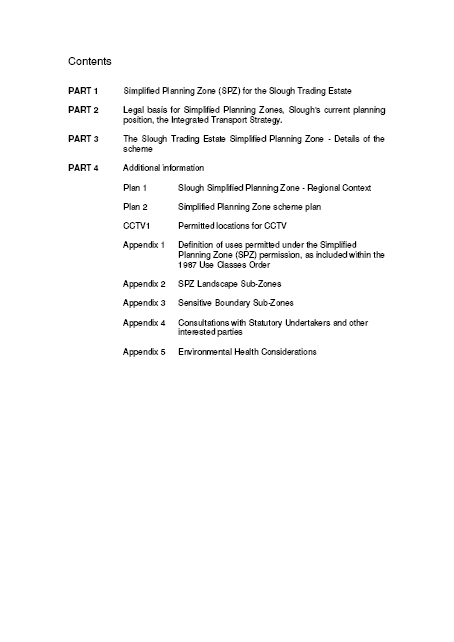
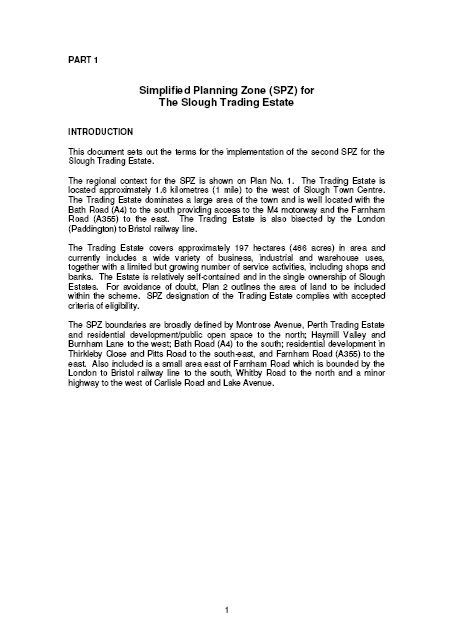
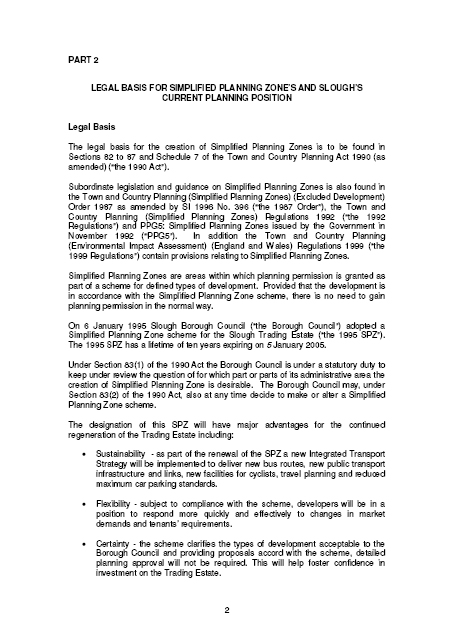
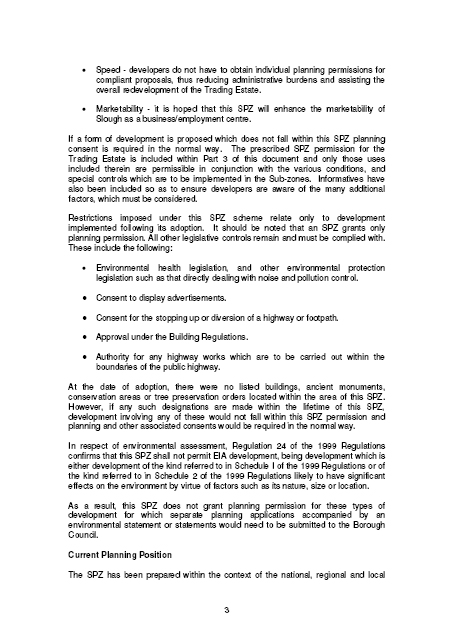
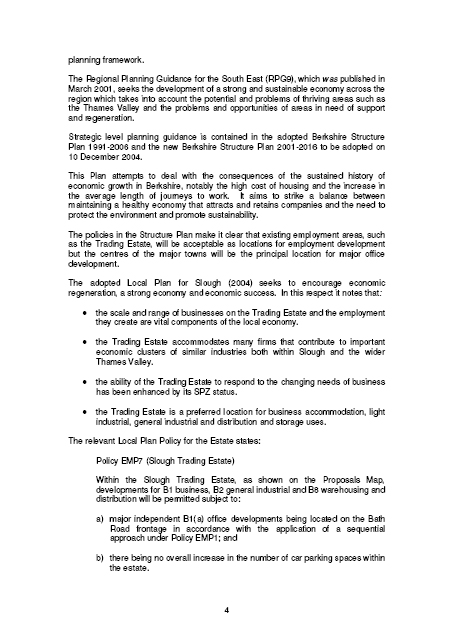
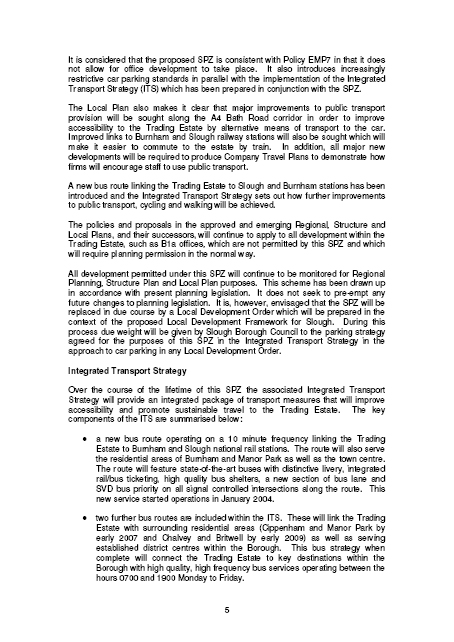
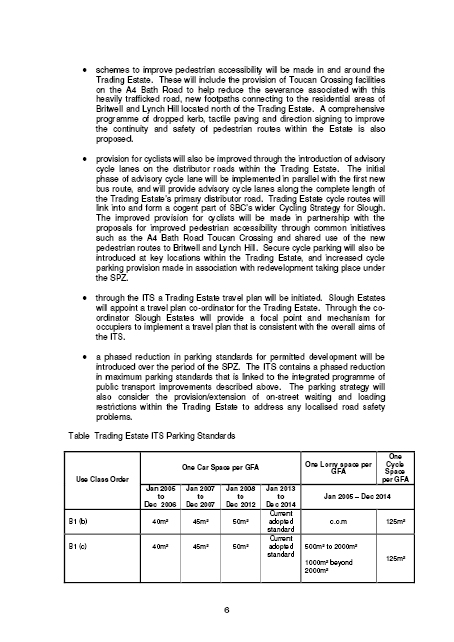
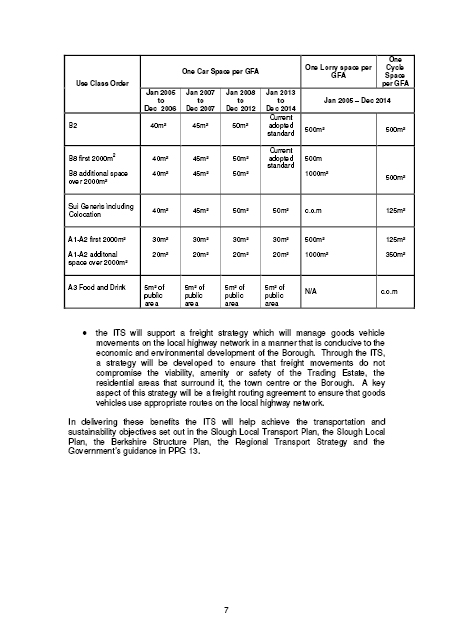

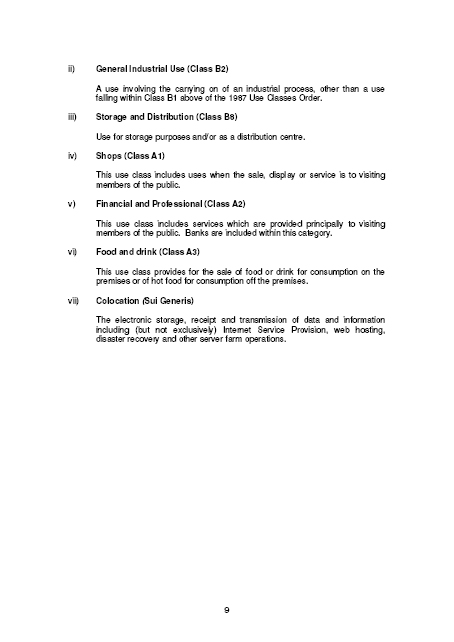
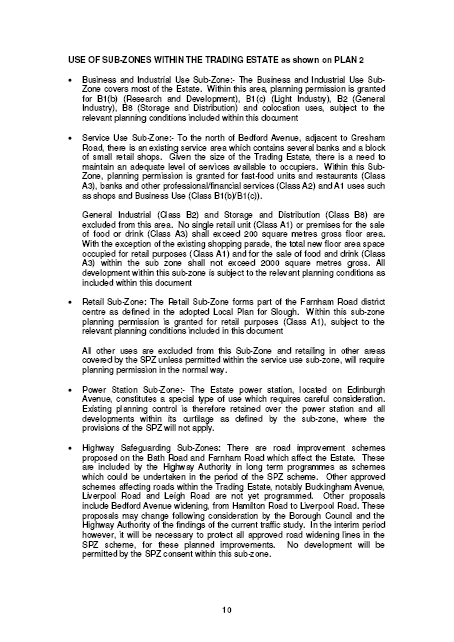
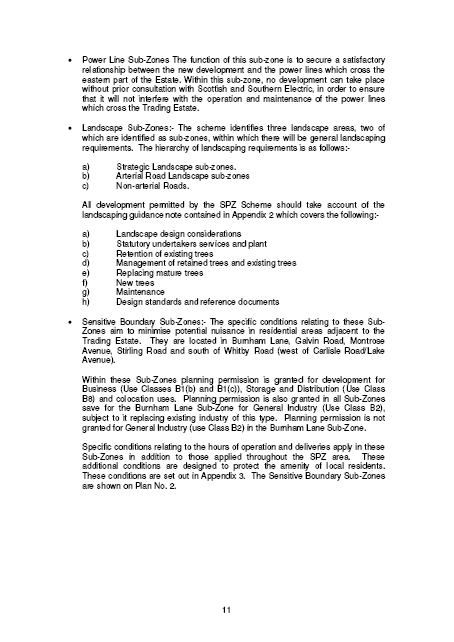

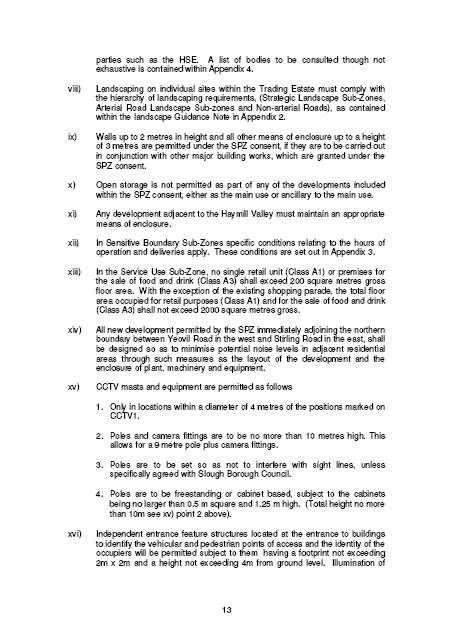

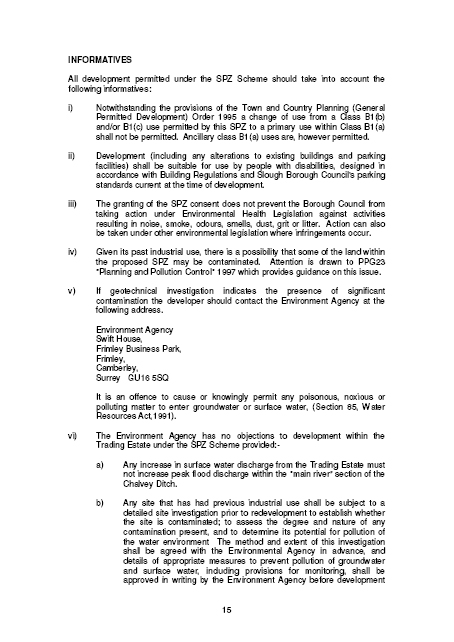
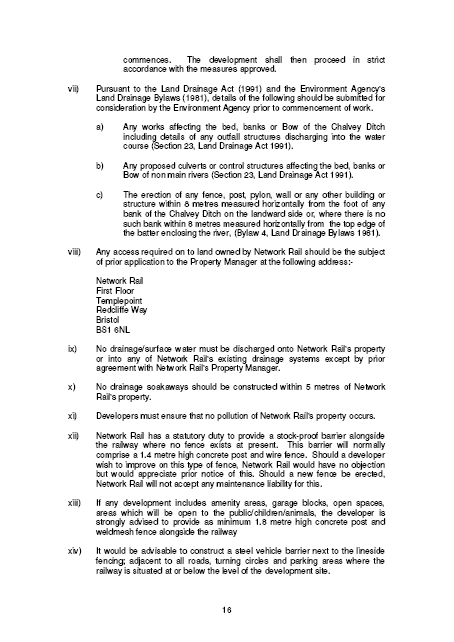

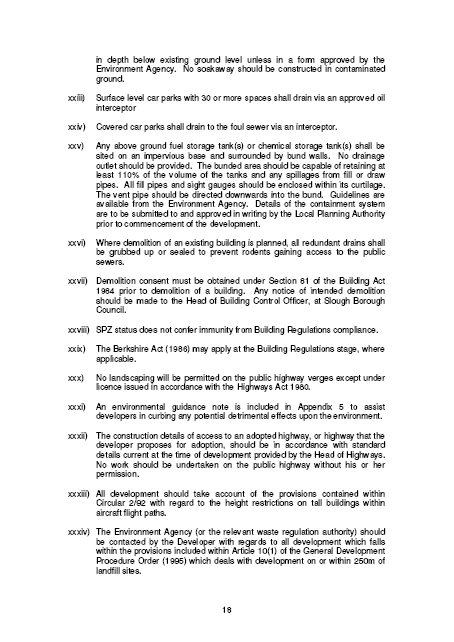

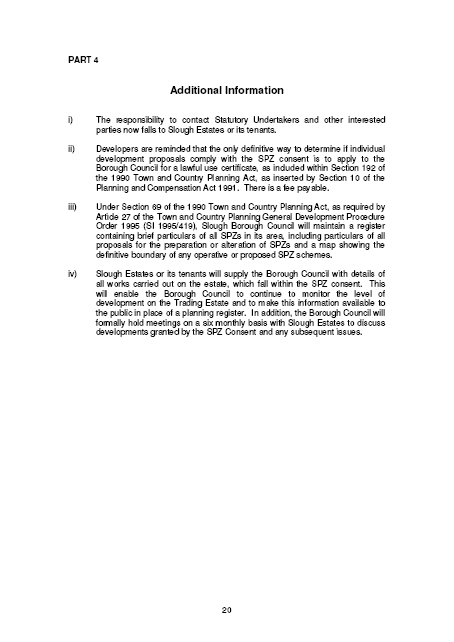
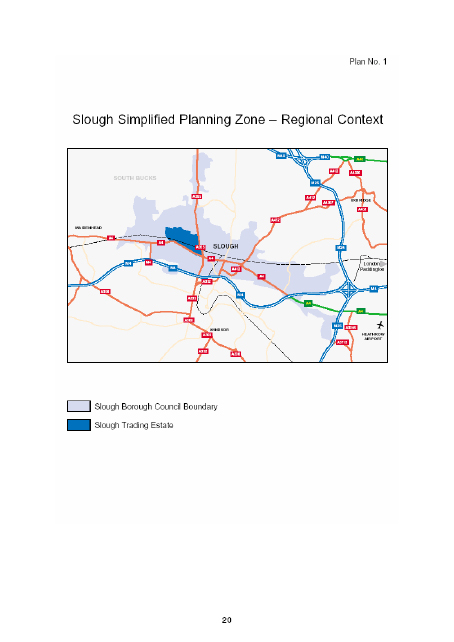

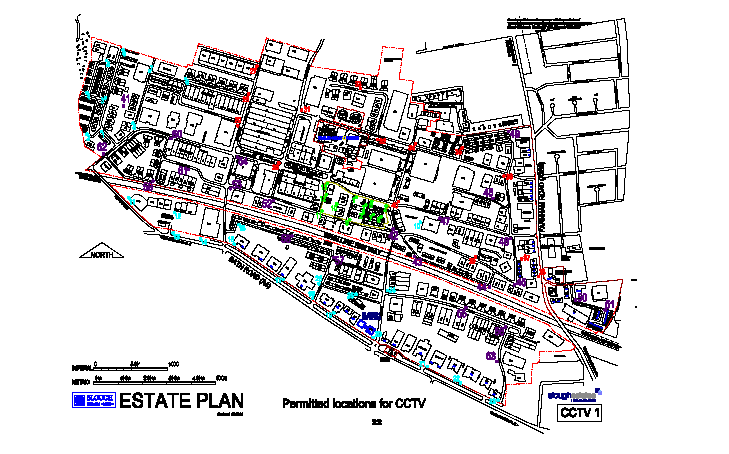


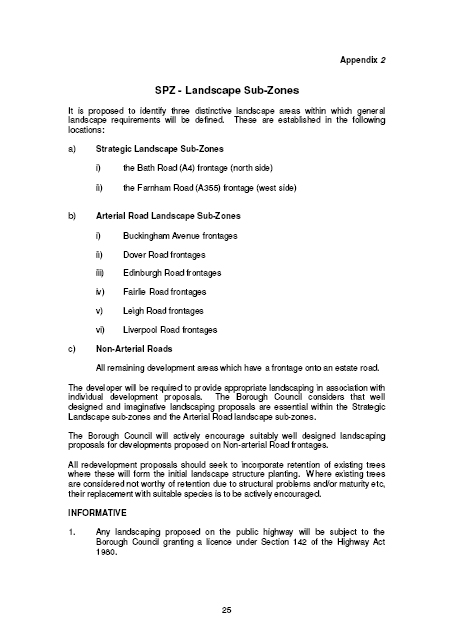
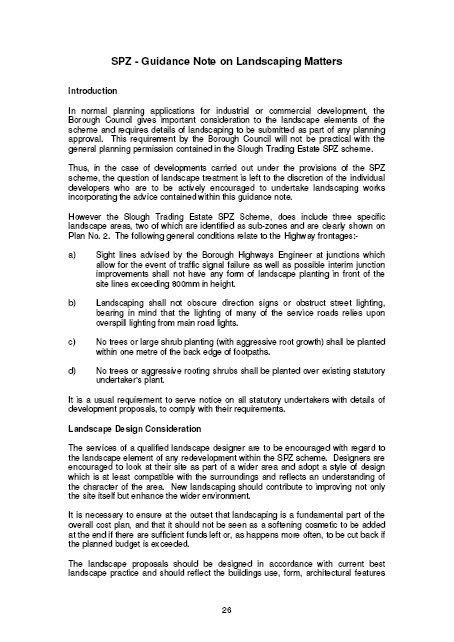

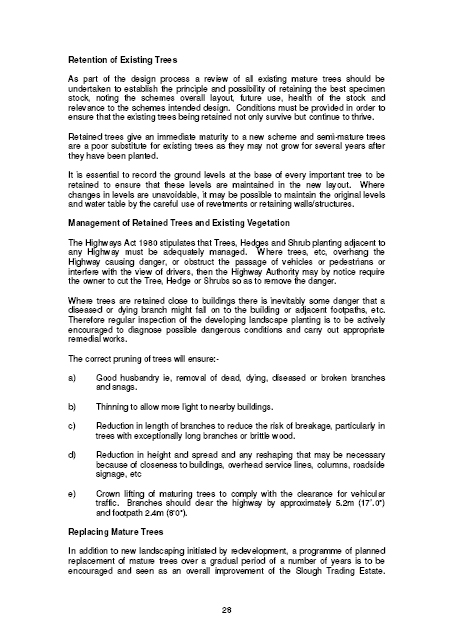

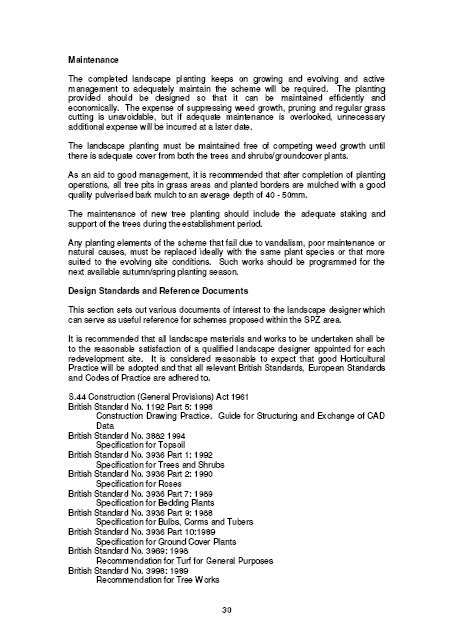

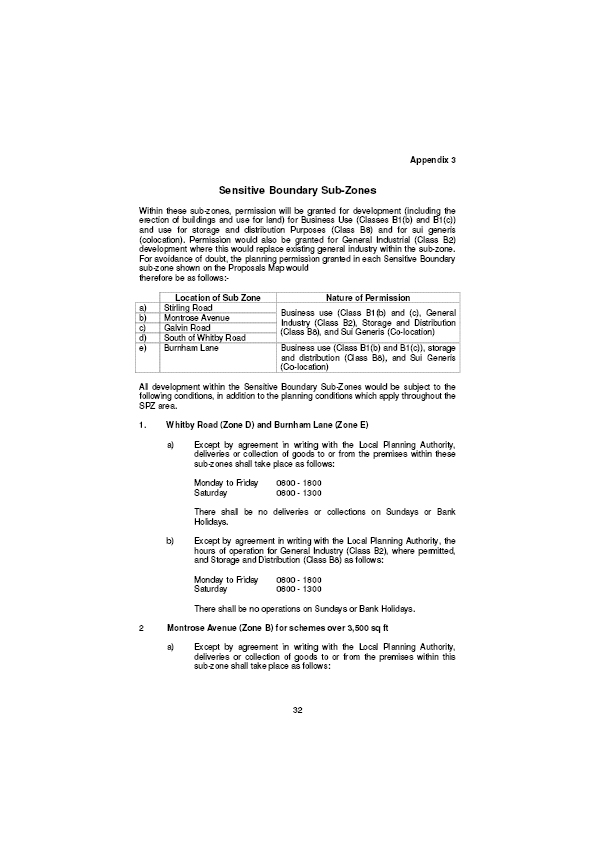

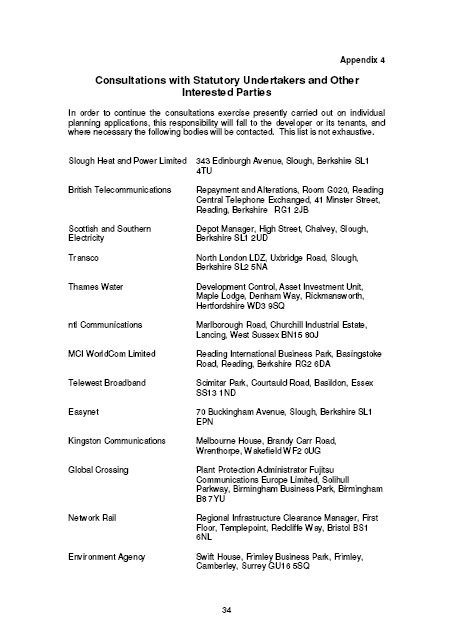

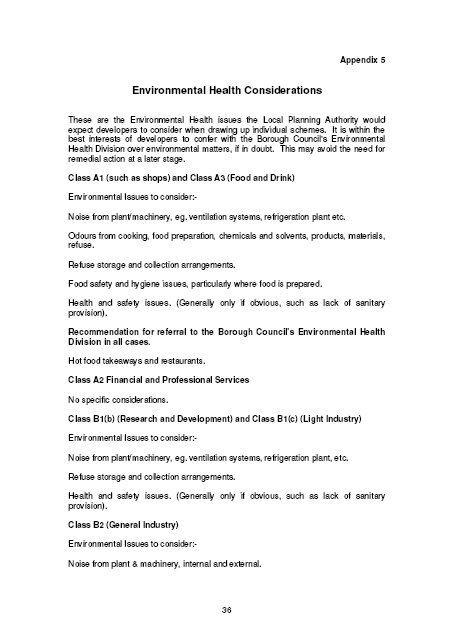

Subject: FW: TRIM: Planning Bill amendments
From: Private Office Assembly Unit [mailto:PrivateOffice.AssemblyUnit@doeni.gov.uk]
Sent: 16 February 2011 16:47
To: McCann, Sean
Cc: Private Office Assembly Unit
Subject: FW: TRIM: Planning Bill amendments
Sean
Further to our telephone conversation. I have been advised by officials of the following:
We have provided you with a response to point 1.
In terms of point 2 we are currently working with our lawyers to bring forward the further amendments within clause 131 and any necessary consequential amendments to change the time limits for both the 4 year and 10 year periods to 5 years. We will forward these as soon as we have them.
The full response will be forwarded as soon as available.
Regards
Adele Willis
Clarence Court
DOE-Private Office
Rm-715
(-40120
*-adele.willis@doeni.gov.uk
From: McGarel, Alex [mailto:Alex.McGarel@niassembly.gov.uk]
Sent: 15 February 2011 18:11
To: Private Office Assembly Unit
Cc: McCann, Sean
Subject: TRIM: Planning Bill amendments
Una
As mentioned on the phone I am expecting electronic versions of amendments provided in hard copy after this afternoon’s meeting on the Planning Bill.
Whilst it would be useful to have all as soon as possible, the Chairperson is particularly keen to see an amended version of the amendment to Clauses 131 confirming that both the 4 year period and the 10 year period will be amended to 5 years by the Department. The amendment provided only indicated amendments to the two 4 year periods at lines 23 and 27 of the clause on page 83.
The other amendments were updated version of those already provided to the Committee in advance of the meeting.
Regards
Alex
Alex McGarel
Clerk to the Committee for the Environment
Room 245
Parliament Buildings
Ballymiscaw
Stormont
Belfast
BT4 3XX
028 9052 1347
07799718929
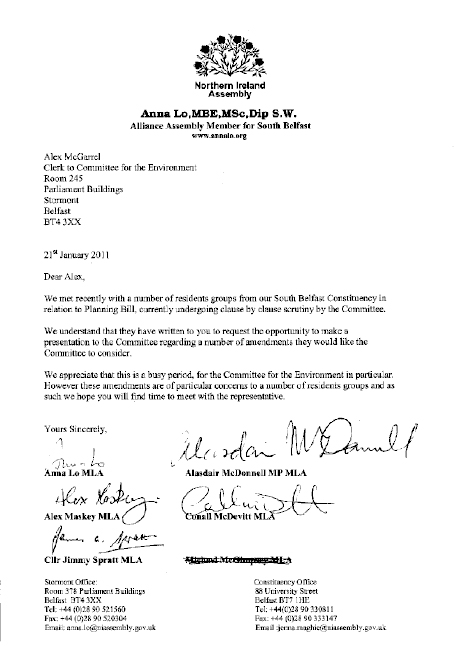
Environment Committee Presentation
Turning then to other provisions within the Bill which add new powers or make significant amendments to existing powers
Inquiries and exceptions where issues of national security are involved
| Clause number | Description | Nature of amendment |
| Clause 23(3)(g) | Meaning of development | The meaning of development is amended to exclude (for certain buildings specified by direction) structural alteration consisting of partial development. |
| Clause 41 | Notice etc., of applications for planning permission | Amends the publicity requirements for applications previously contained in the 1991 Planning Order. The power to specify the publicity requirements will now be contained in subordinate legislation. This will allow the requirements to be regularly reviewed to keep up to date with changing media. |
| Clause 46 – 49 | Power to decline to determine subsequent or overlapping applications | Expanded to allow councils and Department to decline to determine a subsequent application where the PAC has refused a similar deemed planning application within the last 2 years or an appeal has been withdrawn. Councils and Department may also decline to determine overlapping applications made on the same day as a similar application and where similar applications are under consideration by the PAC. |
| Clause 56 | Directions etc. as to method of dealing with applications | The Department may make a development order to specify how applications are to be dealt with. It can direct that the council is restricted in its power to grant permission for some developments, and require it to consider conditions suggested by the Department before granting permission on an application. A development order may require councils and the Department to consult specified authorities or persons before determining applications. A development order can also specify who applications need to be sent to under the Bill, and who should in turn be sent copies. |
| Clause 68 | Aftercare conditions imposed on revocation or modification of mineral planning permission | Allows a council to impose aftercare conditions where a mineral planning permission has been modified or revoked via an order served under clause 67. |
| Clause 75 | Planning agreements | Amended to allow any sums involved in a planning agreement to be paid to a council or a government department other than DOE. |
| Clause 89 | Directions concerning notification of applications, etc. | Councils have a duty to notify the Department of applications for listed building consent under clause 88. Clause 89 allows the Department to direct that clause 88 may not apply for particular applications or for certain descriptions of applications. Clause 89(4) allows the Department to direct that councils notify it of any applications made to it for listed building consent and the decisions taken by councils. This will give the Department oversight of how the councils administer listed building policy. |
| Clause 91 – 92 | Power to decline to determine subsequent or overlapping application for listed building consent | Expanded to include subsequent applications submitted on the same day. |
| Clause 95(3) | Appeal against decision (for listed building consent) | The time in which an appeal must be lodged with the PAC is reduced to 4 months or such other period as may be prescribed. |
| Clause 114(3) | Appeals (hazardous substances consent) | The time in which an appeal must be lodged with the PAC is reduced to 4 months or such other period as may be prescribed. |
| Clause 215 -218 | Correction of errors | The requirement to obtain the written consent of the applicant (or the landowner if that is not the applicant) before a minor typographical error – one which is not part of any reasons given for the decision – in a planning decision document is removed. Applies to both councils and the Department. |
| Clause 231 -233 | Rights of entry | Gives councils and the Department the powers of entry required to discharge their functions under this Bill. Powers of entry are also given to the Department of Finance and Personnel and the PAC in respect of their functions under this Bill. |
| Clause 237 | Planning register | Requires all district councils to keep and make available a planning register containing copies of the items listed, which includes all applications for planning permission. A development order may require the Department to populate the register of the relevant district council when an application is submitted directly to it, or it issues a notice under departmental reserved powers. |
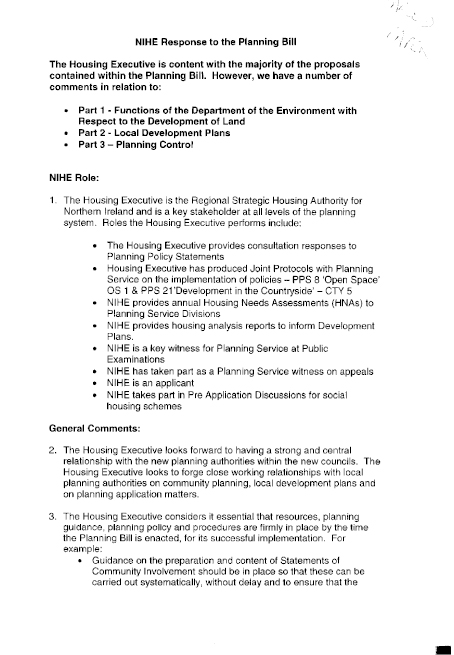
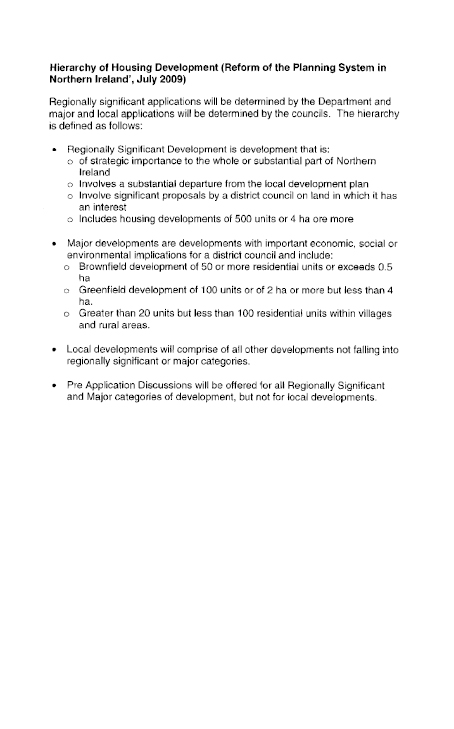
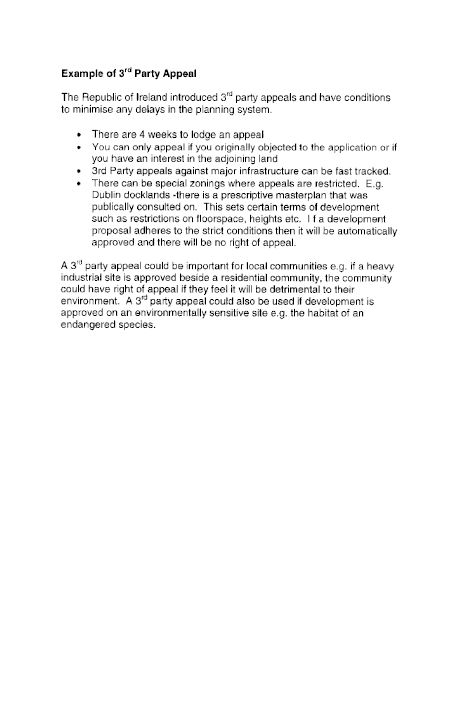
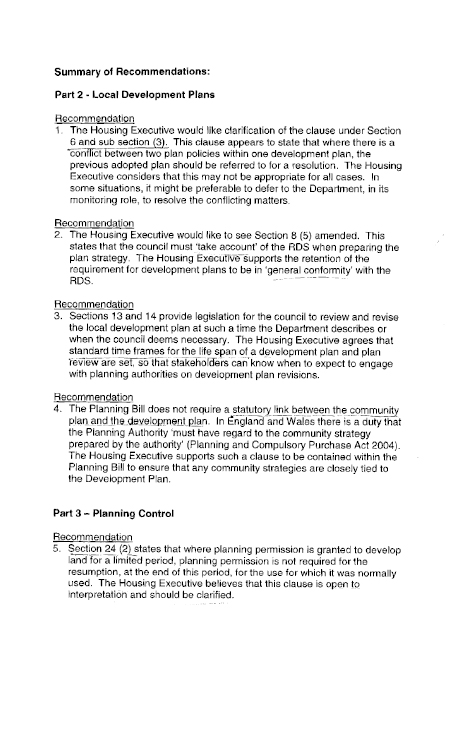
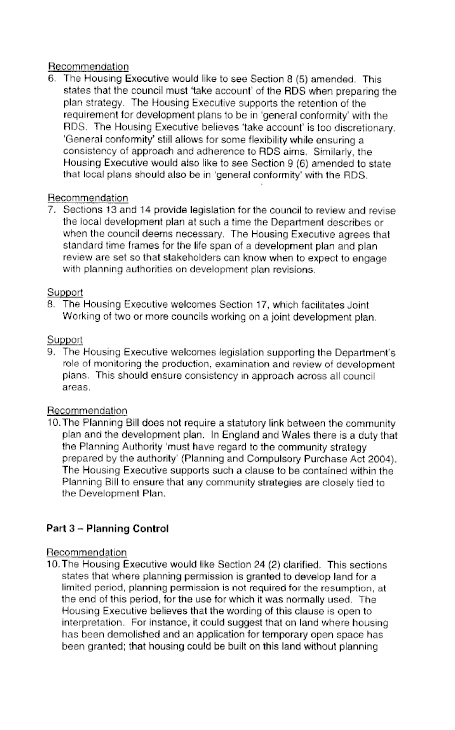
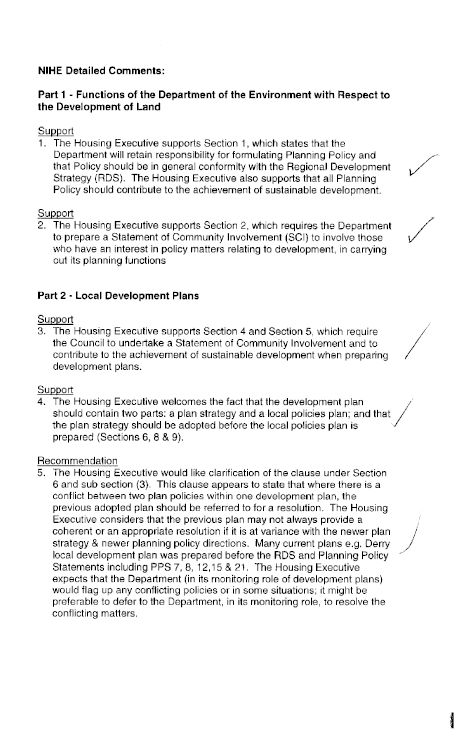
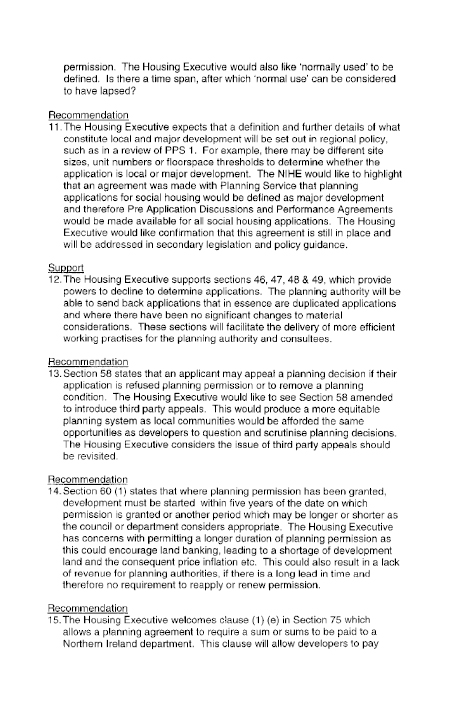
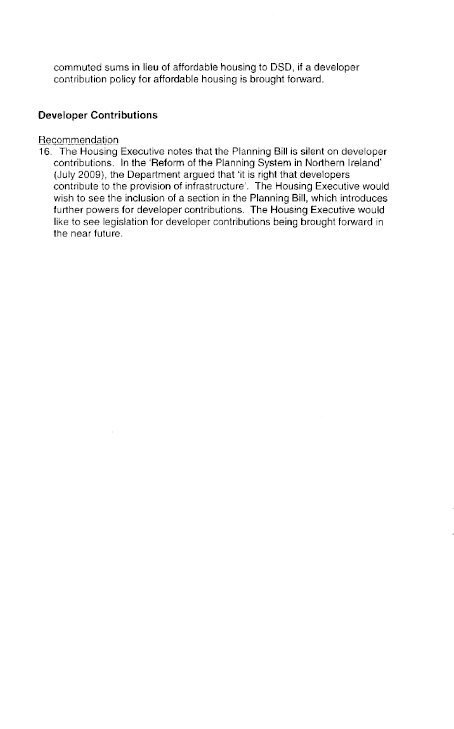


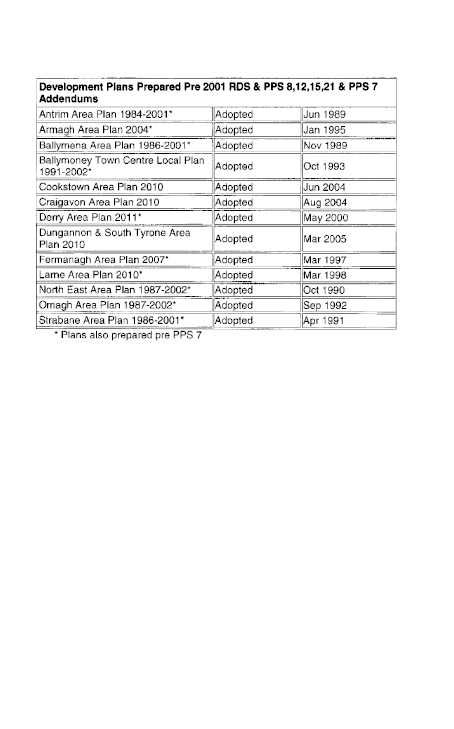
(1) The Secretary of State may with the consent of the Treasury make regulations providing for the imposition of a charge to be known as Community Infrastructure Levy (CIL).
(2) In making the regulations the Secretary of State shall aim to ensure that the overall purpose of CIL is to ensure that costs incurred in providing infrastructure to support the development of an area can be funded (wholly or partly) by owners or developers of land.
(3) The Table describes the provisions of this Part.
| Section | Topic |
| Section 206 | The charge |
| Section 207 | Joint committees |
| Sections 208 and 209 | Liability |
| Section 210 | Charities |
| Section 211 | Amount |
| Sections 212 to 214 | Charging schedule |
| Section 215 | Appeals |
| Section 216 | Application |
| Section 217 | Collection |
| Section 218 | Enforcement |
| Section 219 | Compensation |
| Section 220 | Procedure |
| Section 221 | Secretary of State |
| Section 222 | CIL regulations and orders: general |
| Section 223 | Relationship with other powers |
| Section 224 | Amendments |
| Section 225 | Repeals |
(4) In those sections regulations under this section are referred to as “CIL regulations".
(1) A charging authority may charge CIL in respect of development of land in its area.
(2) A local planning authority is the charging authority for its area.
(3) But—
(a) the Mayor of London is a charging authority for Greater London (in addition to the local planning authorities),
(b) the Broads Authority is the only charging authority for the Broads (within the meaning given by section 2(3) of the Norfolk and Suffolk Broads Act 1988 (c. 4)), and
(c) the Council of the Isles of Scilly is the only charging authority for the Isles of Scilly.
(4) CIL regulations may provide for any of the following to be the charging authority for an area, or in the case of Greater London one of the charging authorities, in place of the charging authority under subsection (2), (3)(b) or (c)—
(a) a county council,
(b) a county borough council,
(c) a district council,
(d) a metropolitan district council, and
(e) a London borough council (within the meaning of TCPA 1990).
(5) In this section, “local planning authority" has the meaning given by—
(a) section 37 of PCPA 2004 in relation to England, and
(b section 78 of PCPA 2004 in relation to Wales.
(1) This section applies if a joint committee that includes a charging authority is established under section 29 of PCPA 2004.
(2) CIL regulations may provide that the joint committee is to exercise specified functions, in respect of the area specified in the agreement under section 29(1) of PCPA 2004, on behalf of the charging authority.
(3) The regulations may make provision corresponding to provisions relating to joint committees in Part 6 of the Local Government Act 1972 (c. 70) in respect of the discharge of the specified functions.
(1) Where liability to CIL would arise in respect of proposed development (in accordance with provision made by a charging authority under and by virtue of section 206 and CIL regulations) a person may assume liability to pay the levy.
(2) An assumption of liability—
(a) may be made before development commences, and
(b) must be made in accordance with any provision of CIL regulations about the procedure for assuming liability.
(3) A person who assumes liability for CIL before the commencement of development becomes liable when development is commenced in reliance on planning permission.
(4) CIL regulations must make provision for an owner or developer of land to be liable for CIL where development is commenced in reliance on planning permission if—
(a) nobody has assumed liability in accordance with the regulations, or
(b) other specified circumstances arise (such as the insolvency or withdrawal of a person who has assumed liability).
(5) CIL regulations may make provision about—
(a) joint liability (with or without several liability);
(b) liability of partnerships;
(c) assumption of partial liability (and subsection (4)(a) applies where liability has not been wholly assumed);
(d) apportionment of liability (which may—
(i) include provision for referral to a specified person or body for determination, and
(ii) include provision for appeals);
(e) withdrawal of assumption of liability;
(f) cancellation of assumption of liability by a charging authority (in which case subsection (4)(a) applies);
(g) transfer of liability (whether before or after development commences and whether or not liability has been assumed).
(6) The amount of any liability for CIL is to be calculated by reference to the time when planning permission first permits the development as a result of which the levy becomes payable.
(7) CIL regulations may make provision for liability for CIL to arise where development which requires planning permission is commenced without it (and subsection (6) is subject to this subsection).
(8) CIL regulations may provide for liability to CIL to arise in respect of a development where—
(a) the development was exempt from CIL, or subject to a reduced rate of CIL charge, and
(b) the description or purpose of the development changes.
(1) In section 208 “development" means—
(a) anything done by way of or for the purpose of the creation of a new building, or
(b) anything done to or in respect of an existing building.
(2) CIL regulations may provide for—
(a) works or changes in use of a specified kind not to be treated as development;
(b) the creation of, or anything done to or in respect of, a structure of a specified kind to be treated as development.
(3) CIL regulations must include provision for determining when development is treated as commencing.
(4) Regulations under subsection (3) may, in particular, provide for development to be treated as commencing when some specified activity or event is undertaken or occurs, where the activity or event—
(a) is not development within the meaning of subsection (1), but
(b) has a specified kind of connection with a development within the meaning of that subsection.
(5) CIL regulations must define planning permission (which may include planning permission within the meaning of TCPA 1990 and any other kind of permission or consent (however called, and whether general or specific)).
(6) CIL regulations must include provision for determining the time at which planning permission is treated as first permitting development; and the regulations may, in particular, make provision—
(a) about outline planning permission;
(b) for permission to be treated as having been given at a particular time in the case of general consents.
(7) For the purposes of section 208—
(a) “owner" of land means a person who owns an interest in the land, and
(b) “developer" means a person who is wholly or partly responsible for carrying out a development.
(8) CIL regulations may make provision for a person to be or not to be treated as an owner or developer of land in specified circumstances.
(1) CIL regulations must provide for an exemption from liability to pay CIL in respect of a development where—
(a) the person who would otherwise be liable to pay CIL in respect of the development is a relevant charity in England and Wales, and
(b) the building or structure in respect of which CIL liability would otherwise arise is to be used wholly or mainly for a charitable purpose of the charity within the meaning of section 2 of the Charities Act 2006 (c. 50).
(2) CIL regulations may—
(a) provide for an exemption from liability to pay CIL where the person who would otherwise be liable to pay CIL in respect of the development is an institution established for a charitable purpose;
(b) require charging authorities to make arrangements for an exemption from, or reduction in, liability to pay CIL where the person who would otherwise be liable to pay CIL in respect of the development is an institution established for a charitable purpose.
(3) Regulations under subsection (1) or (2) may provide that an exemption or reduction does not apply if specified conditions are satisfied.
(4) For the purposes of subsection (1), a relevant charity in England and Wales is an institution which—
(a) is registered in the register of charities kept by the Charity Commission under section 3 of the Charities Act 1993 (c. 10), or
(b )is a charity within the meaning of section 1(1) of the Charities Act 2006 but is not required to be registered in the register kept under section 3 of the Charities Act 1993.
(5) In subsection (2), a charitable purpose is a purpose falling within section 2(2) of the Charities Act 2006; but CIL regulations may provide for an institution of a specified kind to be, or not to be, treated as an institution established for a charitable purpose.
(1) A charging authority which proposes to charge CIL must issue a document (a “charging schedule") setting rates, or other criteria, by reference to which the amount of CIL chargeable in respect of development in its area is to be determined.
(2) A charging authority, in setting rates or other criteria, must have regard, to the extent and in the manner specified by CIL regulations, to—
(a) actual and expected costs of infrastructure (whether by reference to lists prepared by virtue of section 216(5)(a) or otherwise);
(b) matters specified by CIL regulations relating to the economic viability of development (which may include, in particular, actual or potential economic effects of planning permission or of the imposition of CIL);
(c) other actual and expected sources of funding for infrastructure.
(3) CIL regulations may make other provision about setting rates or other criteria.
(4) The regulations may, in particular, permit or require charging authorities in setting rates or other criteria—
(a) to have regard, to the extent and in the manner specified by the regulations, to actual or expected administrative expenses in connection with CIL;
(b) to have regard, to the extent and in the manner specified by the regulations, to values used or documents produced for other statutory purposes;
(c) to integrate the process, to the extent and in the manner specified by the regulations, with processes undertaken for other statutory purposes;
(d) to produce charging schedules having effect in relation to specified periods (subject to revision).
(5) The regulations may permit or require charging schedules to adopt specified methods of calculation.
(6) In particular, the regulations may—
(a) permit or require charging schedules to operate by reference to descriptions or purposes of development;
(b) permit or require charging schedules to operate by reference to any measurement of the amount or nature of development (whether by reference to measurements of floor space, to numbers or intended uses of buildings, to numbers or intended uses of units within buildings, to allocation of space within buildings or units, to values or expected values or in any other way);
(c) permit or require charging schedules to operate by reference to the nature or existing use of the place where development is undertaken;
(d) permit or require charging schedules to operate by reference to an index used for determining a rate of inflation;
(e) permit or require charging schedules to operate by reference to values used or documents produced for other statutory purposes;
(f) provide, or permit or require provision, for differential rates, which may include provision for supplementary charges, a nil rate, increased rates or reductions.
(7) A charging authority may consult, or take other steps, in connection with the preparation of a charging schedule (subject to CIL regulations).
(8) The regulations may require a charging authority to provide in specified circumstances an estimate of the amount of CIL chargeable in respect of development of land.
(9) A charging authority may revise a charging schedule.
(10) This section and sections 212, 213 and 214(1) and (2) apply to the revision of a charging schedule as they apply to the preparation of a charging schedule.
(1) Before approving a charging schedule a charging authority must appoint a person (“the examiner") to examine a draft.
(2) The charging authority must appoint someone who, in the opinion of the authority—
(a) is independent of the charging authority, and
(b) has appropriate qualifications and experience.
(3) The charging authority may, with the agreement of the examiner, appoint persons to assist the examiner.
(4) The draft submitted to the examiner must be accompanied by a declaration (approved under subsection (5) or (6))—
(a) that the charging authority has complied with the requirements of this Part and CIL regulations (including the requirements to have regard to the matters listed in section 211(2) and (4)),
(b) that the charging authority has used appropriate available evidence to inform the draft charging schedule, and
(c) dealing with any other matter prescribed by CIL regulations.
(5) A charging authority (other than the Mayor of London) must approve the declaration—
(a) at a meeting of the authority, and
(b) by a majority of votes of members present.
(6) The Mayor of London must approve the declaration personally.
(7) The examiner must consider the matters listed in subsection (4) and—
(a) recommend that the draft charging schedule be approved, rejected or approved with specified modifications, and
(b) give reasons for the recommendations.
(8) The charging authority must publish the recommendations and reasons.
(9)C IL regulations must require a charging authority to allow anyone who makes representations about a draft charging schedule to be heard by the examiner; and the regulations may make provision about timing and procedure.
(10) CIL regulations may make provision for examiners to reconsider their decisions with a view to correcting errors (before or after the approval of a charging schedule).
(11) The charging authority may withdraw a draft.
(1) A charging authority may approve a charging schedule only—
(a) if the examiner under section 212 has recommended approval, and
(b) subject to any modifications recommended by the examiner.
(2) A charging authority (other than the Mayor of London) must approve a charging schedule—
(a) at a meeting of the authority, and
(b) by a majority of votes of members present.
(3) The Mayor of London must approve a charging schedule personally.
(4) CIL regulations may make provision for the correction of errors in a charging schedule after approval.
(1) A charging schedule approved under section 213 may not take effect before it is published by the charging authority.
(2) CIL regulations may make provision about publication of a charging schedule after approval.
(3) A charging authority may determine that a charging schedule is to cease to have effect.
(4) CIL regulations may provide that a charging authority may only make a determination under subsection (3) in circumstances specified by the regulations.
(5) A charging authority (other than the Mayor of London) must make a determination under subsection (3)—
(a) at a meeting of the authority, and
(b) by a majority of votes of members present.
(6) The Mayor of London must make a determination under subsection (3) personally.
215 Appeals
(1) CIL regulations must provide for a right of appeal on a question of fact in relation to the application of methods for calculating CIL to a person appointed by the Commissioners for Her Majesty’s Revenue and Customs.
(2) The regulations must require that the person appointed under subsection (1) is—
(a) a valuation officer appointed under section 61 of the Local Government Finance Act 1988 (c. 41), or
(b) a district valuer within the meaning of section 622 of the Housing Act 1985 (c. 68).
(3) Regulations under this section or section 208(5)(d)(ii) may, in particular, make provision about—
(a) the period within which the right of appeal may be exercised,
(b) the procedure on an appeal, and
(c) the payment of fees, and award of costs, in relation to an appeal.
(4) In any proceedings for judicial review of a decision on an appeal, the defendant shall be the Commissioners for Her Majesty’s Revenue and Customs and not the person appointed under subsection (1).
(1) Subject to section 219(5), CIL regulations must require the authority that charges CIL to apply it, or cause it to be applied, to funding infrastructure.
(2) In subsection (1) “infrastructure" includes—
(a) roads and other transport facilities,
(b) flood defences,
(c) schools and other educational facilities,
(d) medical facilities,
(e) sporting and recreational facilities,
(f) open spaces, and
(g) affordable housing (being social housing within the meaning of Part 2 of the Housing and Regeneration Act 2008 (c. 17) and such other housing as CIL regulations may specify).
(3) The regulations may amend subsection (2) so as to—
(a) add, remove or vary an entry in the list of matters included within the meaning of “infrastructure";
(b) list matters excluded from the meaning of “infrastructure".
(4) The regulations may specify—
(a) works, installations and other facilities that are to be, or not to be, funded by CIL,
(b) criteria for determining the areas in relation to which infrastructure may be funded by CIL in respect of land, and
(c) what is to be, or not to be, treated as funding.
(5) The regulations may—
(a) require charging authorities to prepare and publish a list of projects that are to be, or may be, wholly or partly funded by CIL;
(b) include provision about the procedure to be followed in preparing a list (which may include provision for consultation, for the appointment of an independent person or a combination);
(c) include provision about the circumstances in which a charging authority may and may not apply CIL to projects not included on the list.
(6) In making provision about funding the regulations may, in particular—
(a) permit CIL to be used to reimburse expenditure already incurred;
(b) permit CIL to be reserved for expenditure that may be incurred on future projects;
(c) permit CIL to be applied (either generally or subject to limits set by or determined in accordance with the regulations) to administrative expenses in connection with infrastructure or in connection with CIL;
(d) include provision for the giving of loans, guarantees or indemnities;
(e) make provision about the application of CIL where the projects to which it was to be applied no longer require funding.
(7) The regulations may—
(a) require a charging authority to account separately, and in accordance with the regulations, for CIL received or due;
(b) require a charging authority to monitor the use made and to be made of CIL in its area;
(c) require a charging authority to report on actual or expected charging, collection and application of CIL;
(d) permit a charging authority to cause money to be applied in respect of things done outside its area;
(e) permit a charging authority or other body to spend money;
(f) permit a charging authority to pass money to another body (and in paragraphs (a) to (e) a reference to a charging authority includes a reference to a body to which a charging authority passes money in reliance on this paragraph).
(1) CIL regulations must include provision about the collection of CIL.
(2) The regulations may make provision for payment—
(a) on account;
(b) by instalments.
(3) The regulations may make provision about repayment (with or without interest) in cases of overpayment.
(4) The regulations may make provision about payment in forms other than money (such as making land available, carrying out works or providing services).
(5) The regulations may permit or require a charging authority or other public authority to collect CIL charged by another authority; and section 216(7)(a) and (c) apply to a collecting authority in respect of collection as to a charging authority.
(6) Regulations under this section may replicate or apply (with or without modifications) any enactment relating to the collection of a tax.
(7) Regulations under this section may make provision about the source of payments in respect of Crown interests.
(1) CIL regulations must include provision about enforcement of CIL.
(2) The regulations must make provision about the consequences of late payment and failure to pay.
(3) The regulations may make provision about the consequences of failure to assume liability, to give a notice or to comply with another procedure under CIL regulations in connection with CIL.
(4) The regulations may, in particular, include provision—
(a) for the payment of interest;
(b) for the imposition of a penalty or surcharge;
(c) for the suspension or cancellation of a decision relating to planning permission;
(d) enabling an authority to prohibit development pending assumption of liability for CIL or pending payment of CIL;
(e) conferring a power of entry onto land;
(f) requiring the provision of information;
(g) creating a criminal offence (including, in particular, offences relating to evasion or attempted evasion or to the provision of false or misleading information or failure to provide information, and offences relating to the prevention or investigation of other offences created by the regulations);
(h) conferring power to prosecute an offence;
(i) for enforcement of sums owed (whether by action on a debt, by distraint against goods or in any other way);
(j) conferring jurisdiction on a court to grant injunctive or other relief to enforce a provision of the regulations (including a provision included in reliance on this section);
(k) for enforcement in the case of death or insolvency of a person liable for CIL.
(5) CIL regulations may include provision (whether or not in the context of late payment or failure to pay) about registration or notification of actual or potential liability to CIL; and the regulations may include provision—
(a) for the creation of local land charges;
(b) for the registration of local land charges;
(c) for enforcement of local land charges (including, in particular, for enforcement—
(i) against successive owners, and
(ii) by way of sale or other disposal with consent of a court);
(d) for making entries in statutory registers;
(e) for the cancellation of charges and entries.
(6) Regulations under this section may—
(a) replicate or apply (with or without modifications) any enactment relating to the enforcement of a tax;
(b) provide for appeals.
(7) Regulations under this section may provide that any interest, penalty or surcharge payable by virtue of the regulations is to be treated for the purposes of sections 216 to 220 as if it were CIL.
(8) The regulations providing for a surcharge or penalty must ensure that no surcharge or penalty in respect of an amount of CIL exceeds the higher of—
(a) 30% of that amount, and
(b) £20,000.
(9) But the regulations may provide for more than one surcharge or penalty to be imposed in relation to a CIL charge.
(10) The regulations may not authorise entry to a private dwelling without a warrant issued by a justice of the peace.
(11) Regulations under this section creating a criminal offence may not provide for—
(a) a maximum fine exceeding £20,000 on summary conviction,
(b) a maximum term of imprisonment exceeding 6 months on summary conviction, or
(c) a maximum term of imprisonment exceeding 2 years on conviction on indictment.
(12) The Secretary of State may by order amend subsection (11) to reflect commencement of section 283 of the Criminal Justice Act 2003 (c. 44).
(13) In this Part a reference to administrative expenses in connection with CIL includes a reference to enforcement expenses.
(1) CIL regulations may require a charging authority or other public authority to pay compensation in respect of loss or damage suffered as a result of enforcement action.
(2) In this section, “enforcement action" means action taken under regulations under section 218, including—
(a) the suspension or cancellation of a decision relating to planning permission, and
(b) the prohibition of development pending assumption of liability for CIL or pending payment of CIL.
(3) The regulations shall not require payment of compensation—
(a) to a person who has failed to satisfy a liability to pay CIL, or
(b) in other circumstances specified by the regulations.
(4) Regulations under this section may make provision about—
(a) the time and manner in which a claim for compensation is to be made, and
(b) the sums, or the method of determining the sums, payable by way of compensation.
(5) CIL regulations may permit or require a charging authority to apply CIL (either generally or subject to limits set by or determined in accordance with the regulations) for expenditure incurred under this section.
(6) A dispute about compensation may be referred to and determined by the Lands Tribunal.
(7) In relation to the determination of any such question, the provisions of sections 2 and 4 of the Land Compensation Act 1961 (c. 33) apply subject to any necessary modifications and to the provisions of CIL regulations.
(1) CIL regulations may include provision about procedures to be followed in connection with CIL.
(2) In particular, the regulations may make provision about—
(a) procedures to be followed by a charging authority proposing to begin charging CIL;
(b) procedures to be followed by a charging authority in relation to charging CIL;
(c) procedures to be followed by a charging authority proposing to stop charging CIL;
(d) consultation;
(e) the publication or other treatment of reports;
(f) timing and methods of publication;
(g) making documents available for inspection;
(h) providing copies of documents (with or without charge);
(i) the form and content of documents;
(j) giving notice;
(k) serving notices or other documents;
(l) examinations to be held in public in the course of setting or revising rates or other criteria or of preparing lists;
(m) the terms and conditions of appointment of independent persons;
(n) emuneration and expenses of independent persons (which may be required to be paid by the Secretary of State or by a charging authority);
(o) other costs in connection with examinations;
(p) reimbursement of expenditure incurred by the Secretary of State (including provision for enforcement);
(q) apportionment of costs;
(r) combining procedures in connection with CIL with procedures for another purpose of a charging authority (including a purpose of that authority in another capacity);
(s) procedures to be followed in connection with actual or potential liability for CIL.
(3) CIL regulations may make provision about the procedure to be followed in respect of an exemption from CIL or a reduction of CIL; in particular, the regulations may include provision—
(a) about the procedure for determining whether any conditions are satisfied;
(b) requiring a charging authority or other person to notify specified persons of any exemption or reduction;
(c) requiring a charging authority or other person to keep a record of any exemption or reduction.
(4) A provision of this Part conferring express power to make procedural provision in a specified context includes, in particular, power to make provision about the matters specified in subsection (2).
(5) A power in this Part to make provision about publishing something includes a power to make provision about making it available for inspection.
(6) Sections 229 to 231 do not apply to this Part (but CIL regulations may make similar provision).
The Secretary of State may give guidance to a charging authority or other public authority (including an examiner appointed under section 212) about any matter connected with CIL; and the authority must have regard to the guidance.
(1) CIL regulations—
(a) may make provision that applies generally or only to specified cases, circumstances or areas,
(b) may make different provision for different cases, circumstances or areas,
(c) may provide, or allow a charging schedule to provide, for exceptions,
(d) may confer, or allow a charging schedule to confer, a discretionary power on the Secretary of State, a local authority or another specified person,
(e) may apply an enactment, with or without modifications, and
(f) may include provision of a kind permitted by section 232(3)(b) (and incidental, supplemental or consequential provision may include provision disapplying, modifying the effect of or amending an enactment).
(2) CIL regulations—
(a) shall be made by statutory instrument, and
(b) shall not be made unless a draft has been laid before and approved by resolution of the House of Commons.
(3) An order under section 218(12) or 225(2)—
(a) shall be made by statutory instrument, and
(b) may include provision of a kind permitted by subsection (1)(a), (b) or (f) above, but may not amend an Act of Parliament in reliance on subsection (1)(f).
(4) An order under section 218(12) shall be subject to annulment in pursuance of a resolution of either House of Parliament.
(5) An order under section 225(2) shall be subject to annulment in pursuance of a resolution of the House of Commons.
(1) CIL regulations may include provision about how the following powers are to be used, or are not to be used—
(a) section 106 of TCPA 1990 (planning obligations), and
(b) section 278 of the Highways Act 1980 (c. 66) (execution of works).
(2) CIL regulations may include provision about the exercise of any other power relating to planning or development.
(3) The Secretary of State may give guidance to a charging or other authority about how a power relating to planning or development is to be exercised; and authorities must have regard to the guidance.
(4) Provision may be made under subsection (1) or (2), and guidance may be given under subsection (3), only if the Secretary of State thinks it necessary or expedient for—
(a) complementing the main purpose of CIL regulations,
(b) enhancing the effectiveness, or increasing the use, of CIL regulations,
(c) preventing agreements, undertakings or other transactions from being used to undermine or circumvent CIL regulations,
(d) preventing agreements, undertakings or other transactions from being used to achieve a purpose that the Secretary of State thinks would better be achieved through the application of CIL regulations, or
(e) preventing or restricting the imposition of burdens, the making of agreements or the giving of undertakings, in addition to CIL.
(5) CIL regulations may provide that a power to give guidance or directions may not be exercised—
(a) in relation to matters specified in the regulations,
(b) in cases or circumstances specified in the regulations,
(c) for a purpose specified in the regulations, or
(d) to an extent specified in the regulations.
(1) In section 101 of the Local Government Act 1972 (c. 70) (arrangements for discharge of functions by local authorities) after subsection (6) insert—
“(6A) Community Infrastructure Levy under Part 11 of the Planning Act 2008 is not a rate for the purposes of subsection (6)."
(2) In section 9 of the Norfolk and Suffolk Broads Act 1988 (c. 4) (the Navigation Committee)—
(a) in subsection (8), after “Subject" insert “to subsection (8A) and";
(b) after subsection (8) insert—
“(8A)Subsection (8) does not apply in relation to functions under Part 11 of the Planning Act 2008 (Community Infrastructure Levy)."
(3) In section 71(3) of the Deregulation and Contracting Out Act 1994 (c. 40) (contracting out: functions of local authorities) omit the word “and" at the end of paragraph (g) and after paragraph (h) insert “; and
(i) sections 217 and 218 of the Planning Act 2008 (Community Infrastructure Levy: collection and enforcement)."
(4) In section 38 of the Greater London Authority Act 1999 (c. 29) (delegation), after subsection (2) insert—
“(2A) In relation to functions exercisable by the Mayor under Part 11 of the Planning Act 2008 (Community Infrastructure Levy) subsection (2) has effect with the omission of paragraphs (c) to (f)."
(1) The following provisions of PCPA 2004 shall cease to have effect—
(a) sections 46 to 48 (planning contribution), and
(b) paragraph 5 of Schedule 6 (repeal of sections 106 to 106B of TCPA 1990 (planning obligations)).
(2) The Treasury may by order repeal the Planning-gain Supplement (Preparations) Act 2007 (c. 2).
Date: 8 February 2011
Time: 9am
Venue; Blue Flax Restaurant, Parliament Buildings
Present: Cathal Boylan, Chairperson, Committee for the Environment
Gregg Lloyd, University of Ulster
Alex McGarel, Clerk
Sean McCann, Assistant Clerk
Private Office
Clarence Court
10-18 Adelaide Street
Belfast
BT2 8GB
Telephone: 028 90 5 40855
Facsimile: 028 90 5 41169
Email: una.downey@doeni.gov.uk
Our reference: CQ294/11
Date: 22 February 2011
Mrs Alex McGarel
Clerk to the Environment Committee
Northern Ireland Assembly
Parliament Buildings
Ballymiscaw
Stormont
Belfast
BT4 3XX
Dear Alex
I refer to the request made by the Environment Committee, on 16 February 2011 in relation to Clause 226(3) of the Planning Bill.
The Examiner had commented that Local inquiry rules made by this clause are subject to no Assembly procedure and suggested that these should be subject to negative resolution.
The Minister is content to bring forward the following amendment to include a negative resolution Assembly control.
Clause 226, page 145, Line 27
At end insert-
‘(4) Rules made under subsection (3) shall be subject to negative resolution.’
I trust this information is of assistance, should you require anything further please contact me directly.
Yours sincerely,
Úna Downey
DALO
[by email]
Private Office
Clarence Court
10-18 Adelaide Street
Belfast
BT2 8GB
Telephone: 028 90 5 40855
Facsimile: 028 90 5 41169
Email: privateoffice.assemblyunit@doeni.gov.uk
Our reference: CQ/224/10
Date: 8 December 2010
Mrs Alex Mc Garel
Clerk to the Environment Committee
Northern Ireland Assembly
Parliament Buildings
Ballymiscaw
Stormont
Belfast
BT4 3XX
Dear Alex
At the 25 November Committee meeting the Committee requested a timetable for the Planning Bill. Please find attached an indicative timetable.
As you know the Bill proposals were subject to extensive consultation and stakeholder engagement over the past 18 months. There are a number of documents which may assist the Committee in its scrutiny should the Bill pass through Second Stage. The Committee will be familiar with the documents but I thought it might be helpful to highlight two key documents and remind you of where they can be found on the Planning Service web site.
These are:-
“Reform of the Planning System in Northern Ireland: Your chance to influence change" Consultation Paper July 2009
http://www.planningni.gov.uk/index/news/news_consultation/consultation_paper_final_200709_2.pdf
and
“Reform of the Planning System in Northern Ireland: Your chance to influence change"
Government Response to Public Consultation July – October 2009.
http://www.planningni.gov.uk/index/news/news_consultation/government_response_final.pdf
The web site also includes copies of all responses to the Public Consultation.
I trust this information is of assistance, should you require anything further please contact me directly.
Yours sincerely
Úna Downey
DALO
[by email]
| Stage | Start Date |
| Planning Bill: Introduction | 6 Dec 2010 |
| Planning Bill: Second Stage | 14 Dec 2010 |
| Planning Bill: Committee Stage Begins | 15 Dec 2010 |
| Planning Bill: Consideration Stage | 1 Mar 2011** |
| Planning Bill: Further Consideration Stage | 14 Mar 2011 |
| Planning Bill: Final Stage | 22 Mar 2011 |
| Planning Bill: Royal Assent | 23 May 2011 |
| Act: Operative Date |
** All subsequent dates are indicative and based on minimum time for the Environment Committee’s scrutiny as well as subject to Speaker’s/Assembly Business Office agreement.
Private Office
Clarence Court
10-18 Adelaide Street
Belfast
BT2 8GB
Telephone: 028 90 5 40855
Facsimile: 028 90 5 41169
Email: una.downey@doeni.gov.uk
Our reference: CQ294/11
Date: 23 February 2011
Mrs Alex McGarel
Clerk to the Environment Committee
Northern Ireland Assembly
Parliament Buildings
Ballymiscaw
Stormont
Belfast
BT4 3XX
Dear Alex
I refer to the Committee’s 15 February request (CQ 295/11) for electronic copies of the amendments passed to the Committee at the 15 February meeting. Unfortunately the Department’s proposed amendments to clause 102, which were discussed on 15 February, were not included in that response. These are now attached at Annex A.
I apologise for this oversight and should you require anything further please contact me directly.
Yours sincerely,
Úna Downey
DALO
[by email]
Departmental Planning Bill Amendments
Amendments to Clause 102
Clause 102, Page 64, Line 3
Leave out ‘3’ and insert ‘5’
Clause 102, page 64, Line 11
Leave out ‘3’ and insert ‘5’
Consultation list for Committee for The Environment
Grouped lists
Section 75 groups listed by the Assembly
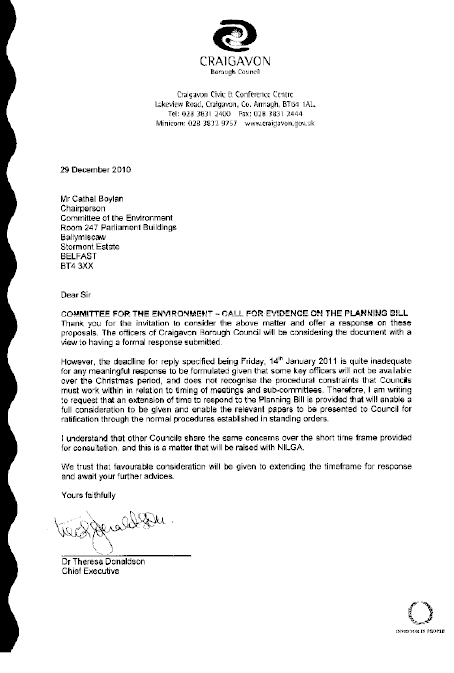
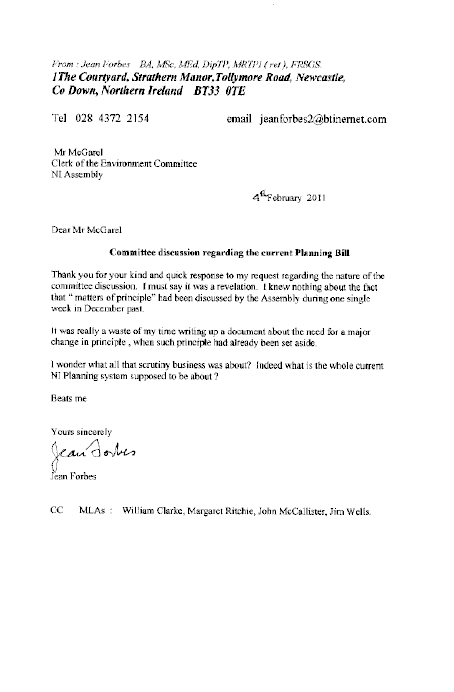
Private Office Assembly Unit
Clarence Court
10-18 Adelaide Street
Belfast
BT2 8GB
Telephone: 028 90 5 40855
Facsimile: 028 90 5 41169
Email: una.downey@doeni.gov.uk
Your reference: CQ 294/11 & CQ 295/11
Date: 16 February 2011
Mrs Alex McGarel
Clerk to the Environment Committee
Northern Ireland Assembly
Parliament Buildings
Ballymiscaw
Stormont
Belfast
BT4 3XX
Dear Alex
I refer to the request made by the Environment Committee, on 6 February 2011, seeking the Department’s response to outstanding issues on clauses 202(5) and 226(3) of the Planning Bill.
Clause 202(5) – The Examiner had commented that PAC rules made by OFMdFM are subject to no Assembly procedure and suggested that these should be subject to negative resolution. The Department agreed to discuss with OFMdFM the issue raised by the Examiner of Statutory Rules. OFMdFM has confirmed it is content with the Examiner’s recommendation. An amendment to the Bill is included in the attached Annex A.
Clause 226(3) – The Examiner commented that Local inquiry rules made by this clause are subject to no Assembly procedure and suggested that these should be subject to negative resolution. The Department agreed to raise the matter with the Minister. A response will follow.
The Committee has also requested (CQ 295 /11) electronic copies of the amendments passed to the Committee at the 15 February meeting. These are attached at Annex B and C. A response to the other issues raised in CQ 295/11 will follow.
I trust this information is of assistance, should you require anything further please contact me directly.
Yours sincerely,
Úna Downey
DALO
[by email]
Clause 202, Page 133, Line 32
At end insert-
‘(7A) Rules made under subsection (5) shall be subject to negative resolution.’
Leave out from ‘in’ to the end of line 34 and insert ‘within the period of 15 years ending on the date on which this Schedule comes into operation.’
New clause
After clause 58 insert¾
‘Matters which may be raised in an appeal under section 58
.—(1) In an appeal under section 58, a party to the proceedings is not to raise any matter which was not before the council or, as the case may be, the Department at the time the decision appealed against was made unless that party can demonstrate¾
(a) that the matter could not have been raised before that time, or
(b) that its not being raised before that time was a consequence of exceptional circumstances.
(2) Nothing in subsection (1) affects any requirement or entitlement to have regard to¾
(a) the provisions of the local development plan, or
(b) any other material consideration.’
New clause
After clause 202 insert¾
‘Power to award costs
202A.—(1) The appeals commission may make an order as to the costs of the parties to an appeal under any of the provisions of this Act mentioned in subsection (2) and as to the parties by whom the costs are to be paid.
(2) The provisions are¾
(a) sections 58, 59, 95, 96, 114, 142, 158, 164 and 172;
(b) sections 95 and 96 (as applied by section 104(6));
(c) in Schedule 2, paragraph 6(11) and (12) and paragraph 11(1);
(d) in Schedule 3, paragraph 9.
(3) An order made under this section shall have effect as if it had been made by the High Court.
(4) Without prejudice to the generality of subsection (2), the Master (Taxing Office) shall have the same powers and duties in relation to an order made under this section as the Master has in relation to an order made by the High Court.
(5) Proceedings before the appeals commission shall, for the purposes of the Litigants in Person (Costs and Expenses) Act 1957 (c. 47), be regarded as proceedings to which section 1(1) of that Act applies.’
New clause
After clause 202 insert¾
‘Orders as to costs: supplementary
202B.—(1) This section applies where¾
(a) for the purpose of any proceedings under this Act¾
(i) the appeals commission is required, before a decision is reached, to give any person an opportunity, or ask any person whether that person wishes, to appear before and be heard by it; and
(ii) arrangements are made for a hearing to be held;
(b) the hearing does not take place; and
(c) if it had taken place, the appeals commission would have had power to make an order under section 202A requiring any party to pay any costs of any other party.
(2) Where this section applies the power to make such an order may be exercised, in relation to costs incurred for the purposes of the hearing, as if the hearing had taken place.’
Departmental Amendments
Clause 1, Page 1, Line 10
Leave out ‘contributing to the achievement of’ and insert ‘furthering’
Clause 5, Page 3, Line 25
Leave out ‘contributing to the achievement of’ and insert ‘furthering’
Clause 84, Page 53, Line 37
Leave out ‘£30,000’ and insert ‘£100,000’
Clause 116, Page 75, Line 31
Leave out ‘£30,000’ and insert ‘£100,000’
Clause 125, Page 80, Line 26
Leave out ‘£30,000’ and insert ‘£100,000’
Clause 136, Page 87, Line 18
Leave out ‘£30,000’ and insert ‘£100,000’
Clause 146, Page 95, Line 15
Leave out ‘£30,000’ and insert ‘£100,000’
Clause 149, Page 98, Line 6
Leave out ‘£30,000’ and insert ‘£100,000’
Clause 215, Page 140, Line 2
After ‘it’ insert ‘-(a)’
Clause 215, Page 140, Line 2
After ‘(a)’ insert ‘: or
(b)’
Private Office Assembly Unit
Clarence Court
10-18 Adelaide Street
Belfast
BT2 8GB
Telephone: 028 90 5 40855
Facsimile: 028 90 5 4116
Email: una.downey@doeni.gov.uk
Our reference: CQ281/11
Date: 7 February 2011
Mrs Alex McGarel
Clerk to the Environment Committee
Northern Ireland Assembly
Parliament Buildings
Ballymiscaw
Stormont
Belfast
BT4 3XX
Dear Alex
Following the informal clause by clause consideration of the Planning Bill on 1 February, the Committee requested the Department consider amendments to clauses Clauses 1, 2, 5, 10 and for the Committee to have sight of these amendments.
Clause 1 re-enacts the requirement for the Department to exercise its general functions with respect to development of land “with the objective of contibuting to the achievement of sustainable development". A number of bodies which submitted evidence to the Committee called for this duty to be amended to place greater emphasis on securing sustainable development. Officialls agreed to consider changing the reference on sustainable development from “contributing to" to “securing".
The Department considers that efforts to secure sustainable development cut across all departments and it is therefore appropriate that the Deparment’s duty remains one of contributing to these efforts.
The Committee requested a further amendment to clause 1. This relates to the Committee’s concerns about the different approach taken between this clause 8 (5) and clause 1(3) in terms of requirements on the council in preparing its plan strategy to “take account of" various matters, while the Department in exercising its functions “must have regard to" various policies and guidance. In considering this, the Department is of the view that it would be more appropriate to amend clauses 1(3) and similarly 5(2) by substituting the phrase “have regard to" with “take account of".
The Minister intends to table the following amendments at Consideration Stage.
Clause 1, Page 1, Line 12
Leave out ‘have regard to’ and insert ‘take account of’
Clause 5, Page 3, line 7
Leave out ‘have regard to’ and insert ‘take account of’
The Commitee has asked that clause 2 contain a requirement for the statement of community involvement to be published within a time period linked to the commencement of the Bill. Following consideration the Department proposes that it will prepare and publish its statement of community involvement within 1 year of clause 2 coming into operation.
The Minister intends to table the following amendments at Consideration Stage.
Clause 2, Page 2, Line 7
After ‘prepare’ insert ‘and publish’
Clause 2, Page 2, Line 11
At end insert—
‘(3) The Department must prepare and publish a statement of community involvement within the period of one year from the day appointed for the coming into operation of this section.’
Clause 10 makes provision for the independent examination of local development plan documents. Officials agreed to consider Belfast City Councils’s comment that “in order to safeguard the objectivity and impartiality of the the planning process, the Department should only appoint a person other than the Planning Appeals Commission (PAC) to conduct a hearing in exceptional circumstances when there are are unacceptable delays caused by the increasing workload of the PAC. The wording of the statute would need to be amended to incorporate this excetional clause".
The Department has maintained the policy position that the PAC will be the first port of call for conducting independent examinations, however it is important to have the option of appointing an independent inspector should the Commission not be in a position to conduct an examination due to workload pressures. The Department proposes to reinforce this position by amending the Bill to indicate that the Department can not appoint an independent examiner under clause 10 4 (b) unless it considers it expedient to do so, having first considered the Council’s timetable for preparing the plan.
The Minister intends to table the following amendments at Consideration Stage.
Clause 10, Page 6, Line 10
At end insert—
‘(4A) The Department must not appoint a person under subsection (4)(b) unless, having regard to the timetable prepared by the council under section 7(1), the Department considers it expedient to do so.’
The Department has also identified further textual amendments to be moved at Consideration Stage. These amendments are proposed to provide consistency of approach throughout the Bill. They do not impact on the policy content of the Bill.
These are listed at Annex 1 and are described below.
Clause 78 details the provisions within the Bill which apply to land belonging to and development by district councils. In line with the policy approach of councils falling under the same obligations as other users of the planning system it is proposed to amend Clause 78 to include enforcement provisions within Part 5 of the Bill. A further textual amendment is also proposed to delete an unnecessary reference.
The Minister intends to table the following amendments at Consideration Stage.
Clause 78, Page 49, Line 16
At end insert—
‘(c) Part 5.’
Clause 78, Page 49, Line 40
Leave out from ‘(except’ to ‘107)’ in line 41
Clause 115 deals with the effect on a hazardous substances consent where there is a change in the control of land. The Department proposes to maintain the current policy position by carrying forward provisions from the Planning (Northern Ireland ) Order 1991 which allow the hazardous substances consent to remain in place if the control of land remains within the Crown.
The Minister intends to table the following amendments at Consideration Stage.
Clause 115, Page 74, Line 20
At end insert—
‘( ) Subsections (2) and (3) do not apply if the control of land changes from one emanation of the Crown to another.’
Clause 160 allows a council to carry out urgent works to preserve a listed building or a building in a conservation area which the Department has directed this clause should apply. An amendment is proposed to clarify the position that the Department may execute an urgent works notice not only in relation to a listed building but also in relation to a building in respect of which it has given a direction.
The Minister intends to table the following amendments at Consideration Stage.
Clause 160, Page 106, Line 15
Leave out ‘a listed building’ and insert—
‘(a) a listed building, or
(b) a building in respect of which a direction has been given by the Department that this section shall apply’
Clause 160, Page 107, Line 3
After ‘council’ insert ‘or, as the case may be, the Department’
Clause 174 deals with the enforcement of advertisement control. Clause 174 (3) re-enacts Article 84 (3) of the Planning (Northern Ireland) Order 1991 and contains defences where an advertisement is displayed in contravention of the Advertisement Regulations. These defences have been amended by Clause 37 of the Clean Neighbourhoods Bill. Clause 37 provides:
Unlawful display of advertisements
37. —(1) Article 84 of the Planning ( Northern Ireland) Order 1991 (NI 11) (enforcement of advertisement control) shall be amended as follows.
(2) In paragraph (3) for “that it was displayed without his knowledge or consent" substitute “either of the matters specified in paragraph (4)".
(3) After that paragraph insert—
“(4) The matters are that—
(a) the advertisement was displayed without his knowledge; or
(b) he took all reasonable steps to prevent the display or, after the advertisement had been displayed, to secure its removal.".
(4) This section does not have effect in relation to an offence committed, or alleged to have been committed, before the commencement of this section.
It is anticipated that clause 37 of the Clean Neighbourhoods Bill will be brought into operation in advance of the Planning Bill and that by the time the Planning Bill is in operation, Article 84 of the Planning Order will have been amended. Clause 174 therefore needs to be amended to reflect the amended Article 84.
The Minister intends to table the following amendments at Consideration Stage.
Clause 174, Page 116, Line 36
Leave out from ‘that it’ to the end of line 37 and insert ‘either of the matters specified in subsection (4).
(4) The matters are that—
(a) the advertisement was displayed without the person’s knowledge; or
(b) the person took all reasonable steps to prevent the display or, after the advertisement had been displayed, to secure its removal.’
Textual amendments are proposed to these clauses to ensure a consistent approach throughout the Bill. These amendments have no impact on the policy content of the Bill.
Annex 1 provides a composite list of the textual amendments the Minister intends to table at Consideration Stage.
I trust this information is of assistance. Should you require anything further please contact me directly.
Yours sincerely,
Úna Downey
DALO
Planning Bill
Departmental Amendments to Clauses 49, 70, 85, 104, 106, 113, 133, 144, 145, 167, 208, 222, 223, 224, 231, 239, & 240 to be Tabled at Consideration Stage
Clause 49, Page 30, Line 29
After ‘land’ insert ‘made to it in accordance with section 26(5)’
Clause 70, Page 42
Leave out lines 32 to 35
Clause 78, Page 49, Line 16
At end insert—
‘(c) Part 5.’
Clause 78, Page 49, Line 40
Leave out from ‘(except’ to ‘107)’ in line 41
Clause 85, Page 54, Line 28
Leave out ‘directions’ and insert ‘the regulations or by any direction’
Clause 85, Page 54, Line 41
After ‘councils’ insert ‘or the Department’
Clause 104, Page 65, Line 38
Leave out from ‘consent’ to ‘section made’ in line39 and insert ‘conservation area consent made’
Clause 104, Page 65, Line 40
After ‘any’ insert ‘conservation area’
Clause 106, Page 67, Line 2
Leave out ‘Act’ and insert ‘Chapter’
Clause 113, Page 72, Line 28
Leave out ‘, 109 and 118(2) to (4)’ and insert ‘and 109’
Clause 115, Page 74, Line 20
At end insert—
‘( ) Subsections (2) and (3) do not apply if the control of land changes from one emanation of the Crown to another.’
Clause 133, Page 85, Line 24
After ‘contravention’ insert ‘notice’
Clause 144, Page 92, Line 38
Leave out ‘Department’ and insert ‘council’
Clause 145, Page 93, Line 42
Leave out ‘carrying into effect this Part’ and insert ‘taking steps under subsection (1)’
Clause 160, Page 106, Line 15
Leave out ‘a listed building’ and insert—
‘(a) a listed building, or
(b) a building in respect of which a direction has been given by the Department that this section shall apply’
Clause 160, Page 107, Line 3
After ‘council’ insert ‘or, as the case may be, the Department’
Clause 167, Page 112, Line 22
After ‘council’ insert ‘or, as the case may be, by the Department’
Clause 172, Page 115, Line 26
Leave out from ‘within’ to the end of line 27 and insert—
‘—
(i) in the case described in paragraph (a), within the period of 4 months from the date on which the application is refused or is refused in part [or such other period as may be prescribed];
(ii) in the case described in paragraph (b), within the period of 4 months from the end of the period referred to in that paragraph [or such other period as may be prescribed].’
Clause 174, Page 116, Line 36
Leave out from ‘that it’ to the end of line 37 and insert ‘either of the matters specified in subsection (4).
(4) The matters are that—
(a) the advertisement was displayed without the person’s knowledge; or
(b) the person took all reasonable steps to prevent the display or, after the advertisement had been displayed, to secure its removal.’
Clause 208, Page 137
Leave out line 1
Clause 208, Page 137
Leave out lines 16 and 17
Clause 222, Page 143, Line 17
Leave out ‘(except section 26)’
Clause 222, Page 143, Line 18
Leave out ‘(except sections 103 to 105 and 119)’
Clause 222, Page 143, Line 19
Leave out ‘141,’
Clause 222, Page 143, Line 20
At end insert—
‘(e) Part 7.’
Clause 223, Page 143, Line 42
Leave out from ‘under’ to the end of line 3 on page 144 and insert ‘under Part 3, 4, 5 or 7.’
Clause 224, Page 144, Line 30
Leave out ‘prescribe’ and insert ‘specify’
Clause 224, Page 144, Line 31
Leave out ‘prescribe’ and insert ‘specify’
Clause 231, Page 149, Line 15
Leave out ‘, adoption or approval’ and insert ‘or adoption’
Clause 231, Page 149, Line 35
Leave out ‘, adoption’
Clause 231, Page 150, Line 15
After ‘Environment’ insert ‘or a council’
Clause 231, Page 150, Line 20
Leave out from ‘section’ to the end of line 21 and insert ‘any of sections 180 to 186’
Clause 239, Page 155, line 14
Leave out ‘125(1) or’
Clause 240, Page 155, Line 21
At end insert—
‘( ) planning agreements under section 75;’
| Environment Committee Request | Response |
| Clause 1(2) The Departmental officials agreed to consider changing the reference on sustainable development from ‘contributing to’ to ‘securing’. The Committee requires sight of this amendment prior to formally agreeing Clause 1. | A schedule of amendments agreed by the Minister will be provided separately. |
| Clause 2 The Departmental officials agreed to ask the Minister to write to the Committee in relation to the inclusion of a statutory link between local development plans and community strategies and the new governance arrangements and ethical standards regime. | This letter is being sent under separate cover. |
| The Committee accepted that in the absence of a date for its implementation precise dates would be best avoided on the face of the Bill. Instead, the Committee requests that a time limitation linked to commencement of the Bill is included in Clause 2(1) for the Department’s to publish a statement of community involvement. The Committee requires sight of this amendment prior to formally agreeing Clause 2. | A schedule of amendments agreed by the Minister will be provided separately. |
| Clause 3 The Departmental officials agreed to report back to the Committee on the possibility of including climate change on the face of the Bill along with a possible amendment if appropriate. | Clause 3 (1) requires councils to keep under review matters which may be expected to affect the development of their districts. Committee members asked us to report on whether “climate change" should be included in the list. Estimates of greenhouse gas emissions are recorded on an annual basis and included in the Greenhouse Gas Inventories for England, Scotland Wales and Northern Ireland. The estimates are consistent with the United Nations Framework Convention on Climate Change (FCCC) reporting guidelines. The Inventories are prepared by AEA, which is a trading name of AEA Technology plc. It would be impossible for the councils to collate information from the sectors which produce emissions, such as agriculture, transport, domestic and industry. |
| Clause 4 The Departmental officials agreed to report back to the Committee on neighbour notification and to provide the Committee with examples of community involvement from other jurisdictions. | Neighbourhood notification is a form of advertising and is therefore provided for at Clause129 of the Bill. Examples of SCIs emailed to the Committee on February 2. |
| Clause 8 The Departmental officials agreed to provide the Committee with details of the subordinate legislation that will follow from this clause and to consider the amendment members requested to Clause 1 (3). | Subordinate legislation will deal with the form and content of each development plan document, including mapping requirements and justification of the policies. It will also cover publicity for the draft development plan documents and how and where they must be made available for inspection. A schedule of amendments agreed by the Minister will be provided separately. |
| Clause 10 The Departmental officials agreed to consider Belfast City Council’s comment –‘ In order to safeguard the objectivity and impartiality of the planning process, the Department should only appoint a person other than the PAC to conduct a hearing in exceptional circumstances when there are unacceptable delays caused by the increasing workload of the PAC. The wording of the statute would need to be amended to incorporate this exceptional clause.’ The Committee would require sight of an appropriate amendment before considering Clause 10 formally. | A schedule of amendments agreed by the Minister will be provided separately. |
| Clause 10 and 16 The Committee requested that the Department reports back to members on consultation with the Planning Appeals Commission to ensure their buy in on their role in this Clause. | In its response Planning Reform consultation, the PAC did not agree that DOE should have the power to appoint Independent Examiners for plans or public inquiries/hearings into planning applications. The Department sees it as critical that there is flexibility to appoint external independent examiners regardless of the level of resources which the PAC may have, as there may be circumstances where a large number of plans are submitted for independent examination at the same time. This approach would allow independent examinations to take place expediently, thus reducing lengthy delays to this stage of the development plan process. The PAC would remain the first point of contact for conducting independent examinations; however, given the significant work load pressures recently faced by the PAC, it is considered that it would be beneficial to be able to appoint other independent examiners, if required. The Department will produce clear guidance on the use of other independent examiners. This will include details on a process for the appointment of Independent Examiners that will ensure that they are appropriately qualified and independent. See amendments referred to under clause 10 above. |
| Clause 21 The Departmental officials agreed to provide the Committee with examples of monitoring reports. | Examples were emailed to the Committee on February 2. |
| Clause 25 The Departmental officials agreed to report back to the Committee with details of discussions with DSO regarding the wording of this Clause. Officials also agreed to consider the inclusion of criteria for determining regional significance in subordinate legislation and ways in which cumulative impact will be taken into consideration for regionally significant developments. | This clause (25 (3)) refers to local development which may be directed to be dealt with as a major development. Under this provision the Department may issue a direction in relation to any number of applications for local development. A direction is most likely to be issued by the Department if there are 2 or more applications for local development and the cumulative effect of these applications would meet the threshold identified under the Major development category in the development hierarchy. In that situation a direction would issue in respect of each of the applications. This would allow pre-application community consultation to occur. The development hierarchy will be set out in subordinate legislation. A draft of the hierarchy was sent to the Committee on 12th January 2011 and guidance will be provided on its use. |
| Clause 27 The Departmental officials agreed to consider the possibility of changing the wording form ‘community consultation’ to ‘community participation’ and to report back to the Committee with a definition of ‘consultation’ and ‘community’. | Oxford Dictionaries Online defines “consult" as “have discussion with (someone), typically before taking a course of action". This point is illustrated by the example “the government must consult with interested bodies". “Participate" on the other hand is defined as “be involved, take part". The purpose of this Clause is to require prospective applicants to discuss their applications with the community and take account of views in finalising their applications. A “Community participation" duty suggests a duty on the community to take part in the process: this is not the intention, participation is voluntary. Clause 4 refers to the community as “persons who appear to the council to have an interest in matters relating to development in its district". This is wider than people who live in the district, and can for example include people who work or invest there or who visit it to use services. Guidance on pre-application consultation will explain the role of the prospective applicant, and how active and meaningful consultation with communities can best be achieved. |
| Clause 31 The Departmental officials agreed to provide the Committee with an example of a scheme of delegation. | Examples were emailed to the Committee on February 2 |
| Clause 53 The Departmental officials agreed to consider an amendment to include landfill in this Clause and to report back to the Committee on how aftercare conditions will be delivered in the event of insolvency. | The management of landfill sites is currently dealt with under the Landfill Regulations (Northern Ireland) 2003 and the Pollution Prevention and Control and the Waste Management Licensing regimes, in the context of relevant EU and other requirements. The EHS Interim Guidance on Landfill Closure, Capping and Restoration (2007) identifies the main after-use options for landfills as agricultural use, ecological uses, recreational and amenity uses, and woodland. As landfill is comprehensively dealt with elsewhere, there is no need to include it in the Planning Bill |
| Clause 75 The Departmental officials agreed to provide the Committee with further clarification on a Community Infrastructure Levy and how it would work in practice. | Community Infrastructure Levy is a system of developer contributions introduced for England and Wales through the 2008 Planning Act which empowers local authorities to introduce a statutory planning charge on development and to use the proceeds to fund infrastructure. There is no equivalent in Northern Ireland. Debate around increasing developer contributions is based on the premise that the granting of planning permission almost always increases the value of the land to which the permission relates. It is argued that, since the public sector grants planning permission, the public should share in the increased value of the land. A levy based system relies on an agreed identification of required infrastructure including a cost analysis and schedule of delivery. Where a shortfall in available funding sources to support the delivery of the identified infrastructure is identified a charging authority may set out a charging schedule designed to address that shortfall. This charging schedule may set out the proposed charge to be levied on particular types and sizes of future developments. Such a levy may also involve arrangements for any change to the initial schedule for delivery of infrastructure. |
| Clause 97 Members requested that the Departmental officials report back to the Committee on the need for, and provision of, arbitration in relation to listed buildings and conservation. | The issue of arbitration was raised in relation to cases where the Department has exercised its oversight or intervention in relation to e.g. the designation of conservation areas or revocation of listed building consent. Such powers are a safeguard and will only be used in rare, exceptional circumstances if a council fails to fulfil its duties. The Department is required to give notice or consult with councils before carrying out these actions. In practice therefore the Department would expect to be in close contact and discussion with a council before it would exercise such powers. Given such cases will be very few and far between the Department does not consider it necessary to establish formal arbitration arrangements. |
| Clause 116 The Departmental officials agreed to report back to the Committee on the possibility of criminalisation being included in this Clause. | This is already and offence and Clause 116 creates a criminal offence if there is a contravention of hazardous substances control. |
| Clause 121 The Departmental officials agreed to report back to the Committee with further thoughts on the issues raised by the submissions on this Clause, particularly the approach to dead or dying trees. Members also requested that the Department reports back on the need for arbitration on this issue. | This clause provides that TPO’s in relation to “trees, groups of trees or woodlands" would include “areas" of trees. The Department does not propose to change its approach to dead, dying or dangerous trees. The Department does not see the requirement for expanding TPOs to include areas of trees as groups of trees or entire woodlands can already be encompassed within TPOs and blanket TPOs are automatically established within conservation areas. |
| Clause 125 The Departmental officials agreed to consider the possibility of codifying the two offences in this Clause in a way that would retain the flexibility but make the law applying to trees stronger. | Clause 125 is an established provision which deals with penalties for the contravention of a tree preservation order. It provides a balanced, proportionate approach and flexibility for dealing with a range of potential offences recognising some offences should attract higher penalties. While it may be possible to merge the two offences the Department considers this balanced approach will be of benefit to both landowners and councils and would recommend the clause should remain as existing. |
| Clause 128 The Departmental officials agreed to report back to the Committee on the need for centralised expertise in this area as there was a feeling that the expertise is not required on a frequent basis and may be costly for councils. | The Department recognises that there are a number of specialised areas within the planning system (such as the review of mineral planning permissions) which councils will wish to consider how best to deliver. One option might be a shared service delivery model, or if certain types of development were clustered a lead council delivering the function. The future staffing arrangements for the planning system will be looked at in the context of the wider planning service restructuring and in preparation for the transfer of planning functions. |
| PPS1 The Committee Chairperson requested a copy of PPS1 as it currently stands | Emailed to Committee on February 2 |